How to get around in Switzerland

Apr 19, 2023 • 7 min read
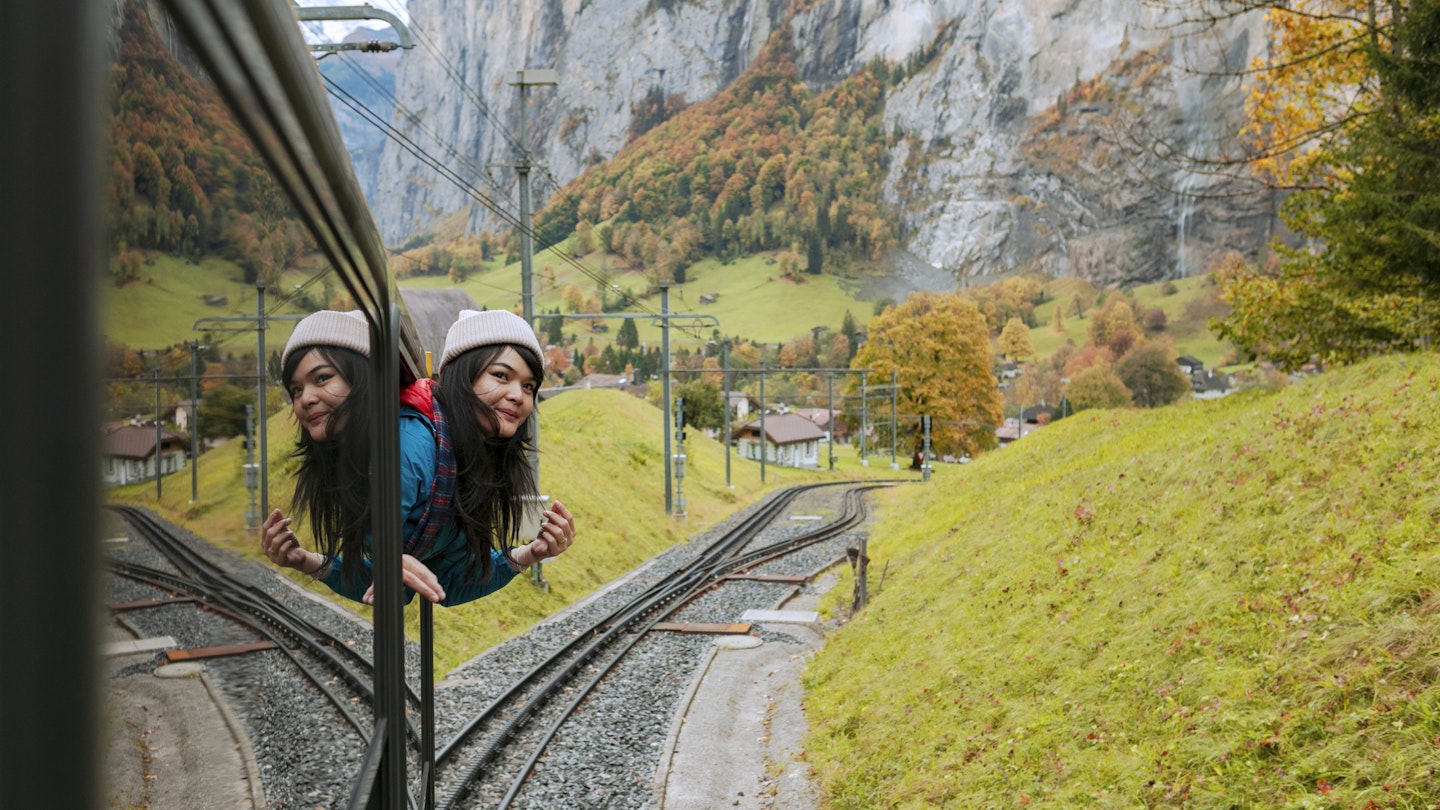
Sit back, relax and soak in Switzerland's stunning scenery © rudi_suardi / Getty Images
The old maxim that the journey is the destination rings true in Switzerland .
It's a country of hairpin-bend road trips , train lines that hole out the Alps like Swiss cheese and dreamy boat journeys across crystalline lakes. Travel in Switzerland isn’t only beautiful – it’s also environmentally sound. The eco-minded Swiss have nailed rail travel like no other nation, and climate-neutral boats, solar-powered cable cars, electric buses and car-free towns and resorts further boost its sustainable credentials. Thanks to plentiful charging stations, the entire country is drivable by electric car.
Journeys in Switzerland aren’t just about getting from A to B – they are travel moments you’ll be raving about for years to come. Here's how to get around this wonderfully scenic country.
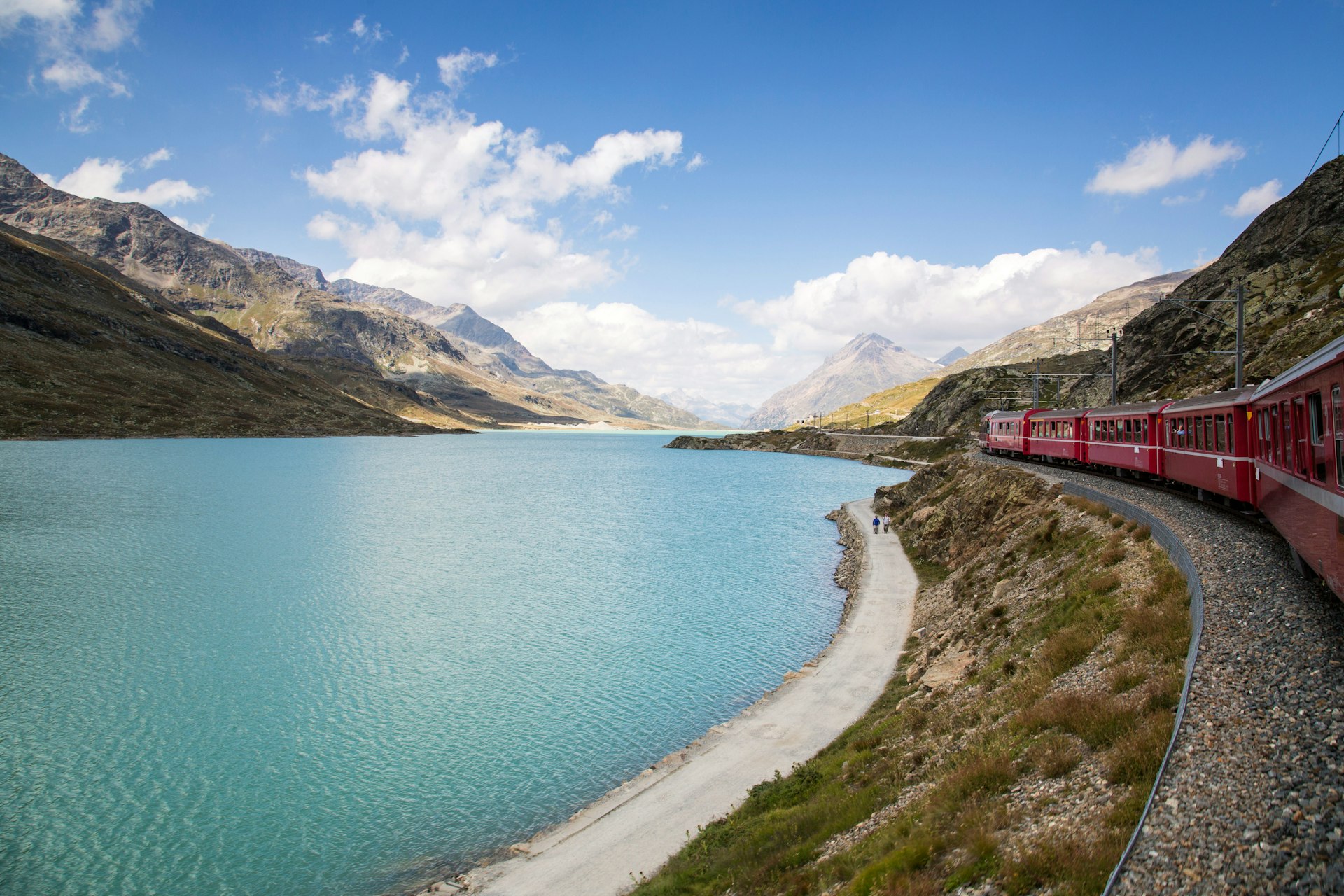

Be dazzled by the Swiss scenery when traveling by train
You’ve got to hand it to the Swiss – their trains really are the dream: efficient, slickly modern, eco-friendly and with views that keep you glued to the window for the duration of the journey. The famous panorama tourist trains (with big windows) are just tip-of-the-iceberg stuff: regularly scheduled services, which often ply the same routes as the tourist trains, can be just as enjoyable and significantly less expensive.
Most major cities, including Bern , Geneva , Zurich and Basel , are connected by rail with daily services. Tickets do not need to be bought in advance, and they can be purchased at stations on the day of travel or on the official Swiss Railways website . That said, look out for sizable discounts when booking “supersaver” tickets ahead of travel.
Ride the panoramic trains for the best views
Primarily aimed at tourists, these named panoramic trains often have cars with extra large windows to make the most of the incredible scenery. They all require reservations, with tickets usually sold for a specific leg on the routes rather than the full journey.
- Glacier Express : The "wow" never leaves your lips on this legendary Alpine train journey between Zermatt and St Moritz. The Brig–Zermatt Alpine leg makes for pretty powerful viewing, as does the area between Disentis/Mustér and Brig.
- GoldenPass Line : Skirting the shores of some of Switzerland’s most ravishing lakes, this route links Lucerne to Montreux . The journey is in three legs, and you must change trains twice. Regular trains, without panoramic windows, work the whole route hourly.
- Bernina Express : This route negotiates 55 tunnels and 196 bridges as it travels the Alpine valley of Engadine one way from Chur to Tirano in four hours, hitting its high point at 2253m (7392ft) above sea level. Between May and October, you can continue from Tirano to Lugano by bus.
- Mont Blanc/St Bernard Expresses : Go from Martigny to Chamonix, France, or over the sensationally wild St Bernard Pass.
- Voralpen Express : Glide between Lake Constance and Lake Lucerne, through St Gallen, Rapperswil and Romanshorn on this route.
- Gotthard Panorama Express : This rail-boat combo starts with a wonderful 2.5-hour cruise across Lake Lucerne to Flüelen, from where a train winds its way through ravines and past mountains to Bellinzona or Lugano.
Driving in Switzerland is a breeze
Skirting lakes and vineyards and twisting up and over passes in the high Alps, Switzerland’s roads are beautiful on a cinematic scale, and the country has plenty of drives that are too darned scenic to rush.
The headline road trip is the 1600km (994-mile) Grand Tour of Switzerland , an epic, efficiently signposted lap of the country that links 12 Unesco World Heritage Sites and shows off the Alpine nation from its most flattering angles. And the environmental clincher? It’s entirely drivable by electric car.
You’ll find car rental companies at airports and in cities and towns. Many now rent out electric cars, too. The minimum rental age is usually 25 but falls to 20 at some local firms. You always need a credit card. In winter, rental cars are usually equipped with winter tires.
Switzerland’s roads are well signposted and maintained, but you should always check conditions before heading up into the Alps, especially in winter. The highest passes are only open from June to October and, depending on the weather, you may need to use a tunnel instead.
Tip for driving on freeways in Switzerland: You’ll need to pay an annual one-time charge of Sfr40 to use Swiss freeways and semi-freeways, identified by green signs. The charge is payable (in cash, including euros) at the border, at Swiss gas stations, post offices and at Swiss tourist offices abroad. Upon paying the tax, you'll receive a sticker that must be displayed on the windshield.
Buses serve remote mountain regions
If you are in no hurry, Switzerland’s bright yellow postal buses can be a fun way to reach the remote mountain regions. The country’s PostBus service is synchronized with train arrivals, and bus stops are handily located right next to railway stations.
Prices are comparable to train fares. Swiss national travel passes are valid, but a few tourist-oriented Alpine routes levy a surcharge. Tickets are purchased from the driver, though on some scenic routes over the Alps (for instance the Lugano to St Moritz run) reservations are necessary.

Take a mountain railway, cable car or funicular ride
What a way to commute! The cable cars, funiculars, cogwheel railways and gondolas that climb up to the country’s highest Alpine reaches are an absolute joy to experience and a highlight of traveling in Switzerland (as long as you have a head for heights!).
True marvels of engineering, the mountain gondolas graze treetops, rail-bound funiculars shimmy precariously close to rock faces, and cable cars wobble across valleys (don’t worry – they are safe and subject to regular checks), before all emerge at a spectacularly snowy summit or glacier. It’s worth checking out what money-saving passes are available locally because they often work out cheaper than individual tickets and costs can quickly mount up in a country with so much vertical.
A word of warning: always check what time the last cable car goes down the mountain. In winter, it's as early as 4pm in mountain resorts.
Boat travel is a slow but wonderful way to cross Switzerland's lakes
Switzerland is a landlocked country, but boats ply the country's large lakes, serviced by steamers operated by Swiss Federal Railways or private companies for which national travel passes are valid.
Passenger boats run on Lake Geneva , Constance, Lucerne , Lugano , Neuchâtel, Biel, Murten, Thun, Brienz and Zug. Traveling by boat is a slow and delightfully scenic way to get around.
Consider investing in a Swiss Travel Pass
Though travel in Switzerland is efficient and convenient, it can also be expensive, and visitors planning to use intercity routes should consider investing in a Swiss Travel Pass . With this transport pass, you're allowed unlimited travel by train (including premium panorama trains), bus and boat, as well as local public transportation in cities and free entry to 500 museums.
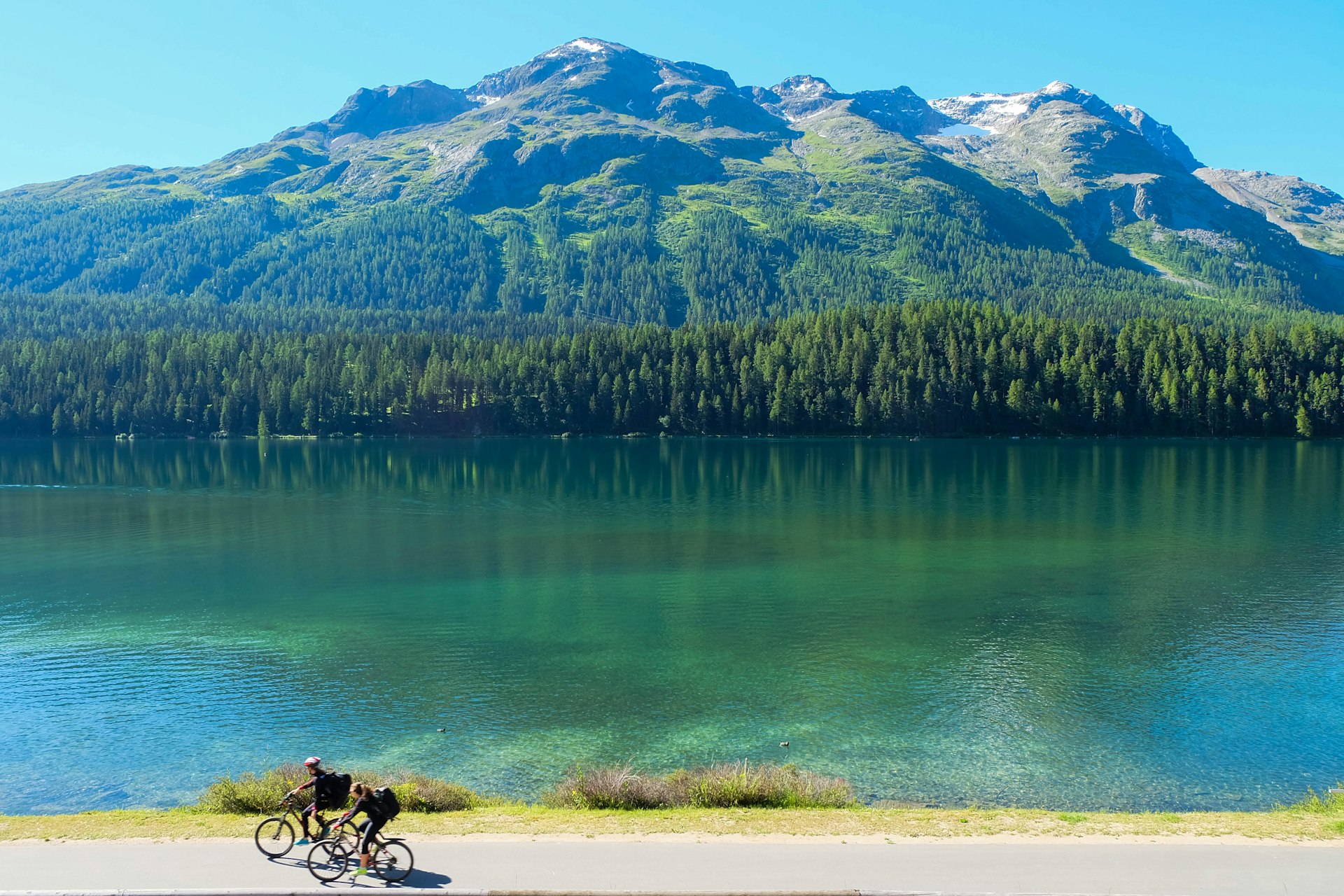
Experience Switzerland up close by bicycle
Whether you’re looking to crawl up hills on a road bike, tear down trails on a mountain bike or simply want a gentle pedal along a shimmering lake, Switzerland is brilliantly set up for cyclists. Many cities have free or inexpensive bike-rental schemes , and bicycle and e-bike rental is usually available at train stations.
There are many well-signed and highly scenic cycle routes heading along rivers and lakeshores in Switzerland, perfect for two-wheel adventures. For details on national, regional and local routes, rental (including e-bike rental), bike-friendly accommodations, guides and maps, check SwitzerlandMobility .
Tip for traveling by train with a bike: Bikes can be taken on slower trains, and sometimes even on InterCity (IC) or EuroCity (EC) trains, when there’s room in the luggage carriage. Advance booking is sometimes necessary.
Accessible transportation is good in Switzerland
Switzerland ranks among the world’s most easily navigable countries for travelers with physical disabilities. Most train stations have a mobile lift for boarding trains, and city buses are equipped with ramps. The majority of modern hotels also have wheelchair access (although budget accommodations tend not to have elevators).
Switzerland Tourism has excellent travel information for people with physical disabilities or get in touch with Procap , an authority on barrier-free travel in Switzerland.
For more helpful travel tips, download Lonely Planet’s free Accessible Travel guide .
This article was first published Aug 23, 2021 and updated Apr 19, 2023.
Explore related stories

Sustainable Travel
May 18, 2024 • 7 min read
From cycling to catching trains, buses and river barges, here's everything you need to know about getting around in France.

May 30, 2023 • 14 min read

May 13, 2024 • 13 min read
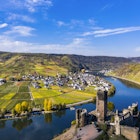
May 9, 2024 • 6 min read

May 7, 2024 • 8 min read
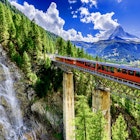
May 5, 2024 • 7 min read
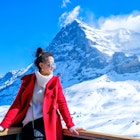
May 3, 2024 • 5 min read

Apr 19, 2024 • 10 min read

Mar 30, 2024 • 4 min read

Feb 29, 2024 • 2 min read
Nomadic Matt's Travel Site
Travel Better, Cheaper, Longer
Switzerland Travel Guide
Last Updated: April 18, 2024
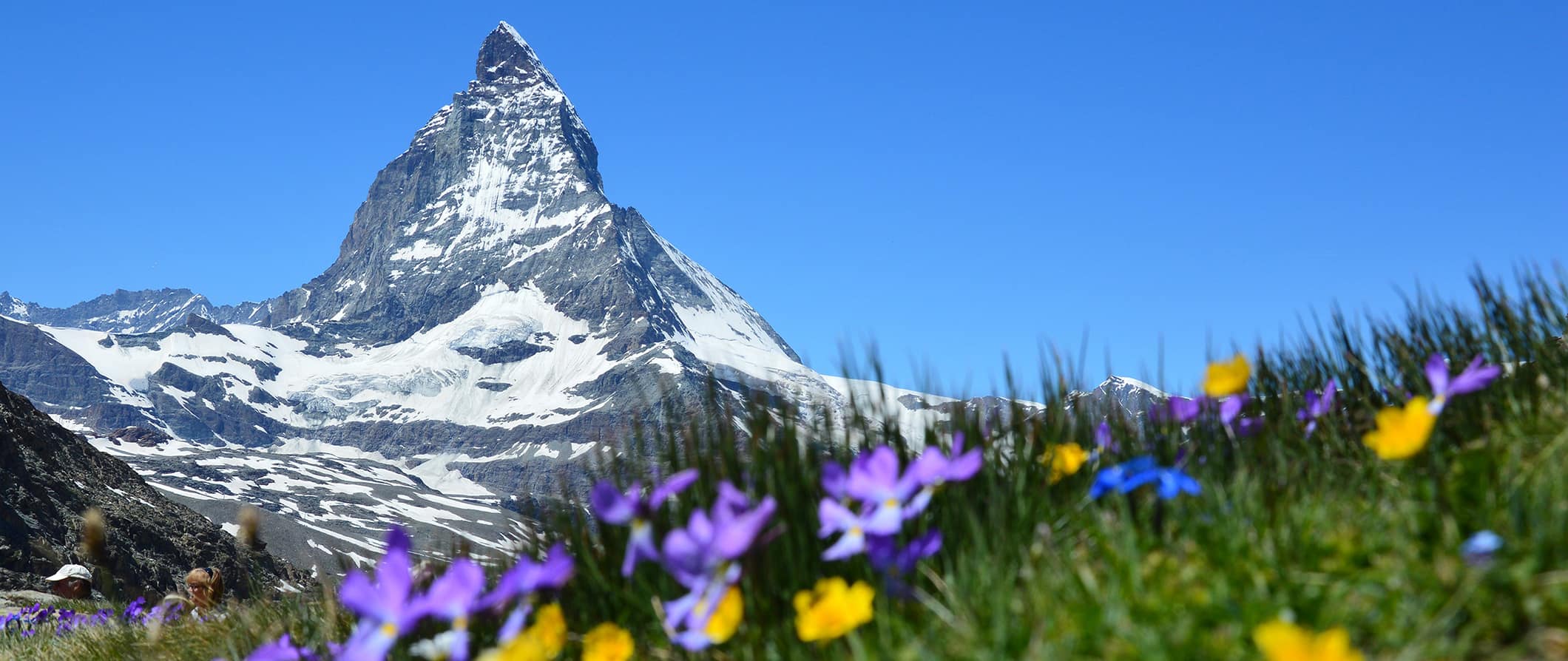
As one of the most expensive countries in Europe , Switzerland is often skipped over by budget travelers.
Yet, while it is not a cheap destination, Switzerland is one of the most beautiful places on earth.
This land-locked country is home to shimmering lakes (more than 7,000 of them!), picturesque mountains (hello Alps!), tiny walled medieval towns, historic cities, soaring peaks, endless green fields you want to run through, delicious chocolate and cheese, incredible beer, and friendly, welcoming people. It’s known for ski resorts, hiking trails, its neutral foreign policy stance, being a banking and finance center, and making Swiss watches.
Everything runs on time here, the country is safe, and everyone is super nice. I loved my time traveling around Switzerland and the country rocks no matter what time of the year you visit.
This travel guide to Switzerland to help you plan your trip, save money, and ensure you make the most out of your time here.
Table of Contents
- Things to See and Do
- Typical Costs
- Suggested Budget
- Money-Saving Tips
- Where to Stay
- How to Get Around
- How to Stay Safe
- Best Places to Book Your Trip
- Related Blogs on Switzerland
Click Here for City Guides
Top 5 things to see and do in switzerland.
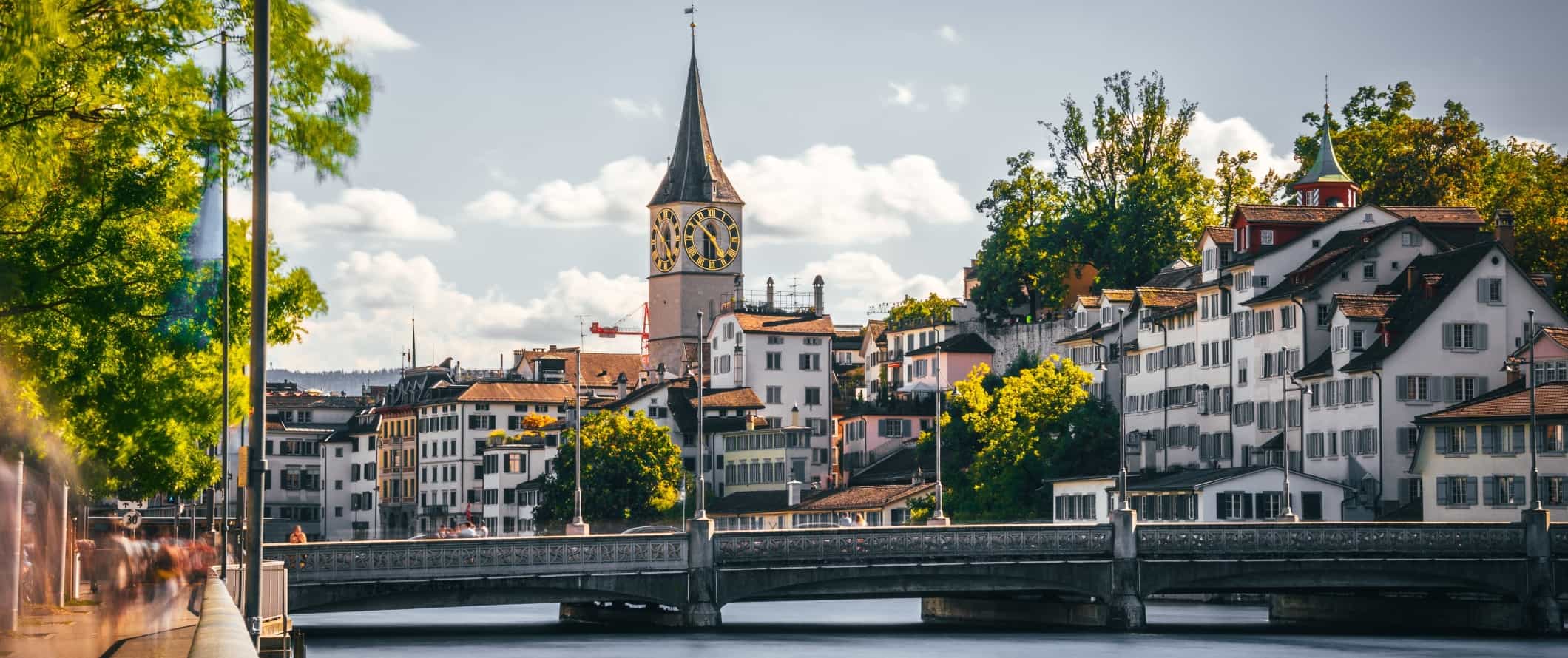
1. Tour the capital
Bern has an amazing historic center. This part of town is filled with medieval clocktowers, cobblestone streets, churches, and well-preserved sandstone homes. Be sure to walk the River Aare way, visit the History Museum and the Einstein Museum, and check out the bears at the Bear Park!
2. Ski the Matterhorn
The Matterhorn’s sharp angular peak is one of Switzerland’s most iconic attractions. You have to take a train or bus into the Zermatt area (the closest town to the mountain) as cars aren’t allowed. If you miss ski season, come hike the mountain in the summer. You can take the world’s highest cable car up to the viewing platform.
3. Visit Zurich
Zürich is also set on beautiful Zürich Lake, near the mountains, and is close to a lot of other cities (like Bern ). I love the historic center that opens up on the lake. A perfect day here involves sitting in the parks and drinking a beer on the lakefront. The city is also very arty and full of street art and museums.
4. Be adventurous in Interlaken
Interlaken is one of the outdoor capitals of the country (though it’s quite touristy during peak season). There is a lot to do here for the adrenaline-seeker: skydiving over a Swiss glacier, water-skiing, skiing, hiking, and more. This is also ground zero for backpackers since there are so many free outdoor activities.
5. Visit the Swiss Riviera
The “Swiss Riviera” is situated in Lavaux (Canton of Vaud) and goes along Lake Geneva. You can visit unique terraced vineyards that overlook the lake, the 12th-century castle Château de Chillon built on the water, and the town of Montreux, which is famous for its annual jazz festival.
Other Things to See and Do in Switzerland
1. join in the fasnacht spring carnival.
This festival in Basel is a three-day party that welcomes in the warm weather and takes place annually on the Monday following Ash Wednesday. It’s something that’s highly anticipated by both tourists and locals, and it’s definitely Switzerland’s most popular festival. Fasnächtlers dress in elaborate costumes to hide their identities and parade around town with “cliques” (bands playing drums and piccolos). All the bars and restaurants in town remain open throughout the entire three days and everyone is in a good mood!
2. Explore Geneva
As the third-largest city in Switzerland, Geneva offers spectacular views of the city’s lake (Lake Geneva), the world’s largest fountain, one of the main UN headquarters, a historic city center, and a collection of international restaurants to satisfy anyone’s palate. While you’re here, make sure you check out the Geneva’s Art and History Museum and the Red Cross and Red Crescent Museum. There are 40 museums here in total so there’s a lot to keep you entertained!
3. Hike Mt. Pilatus
Located right outside the city of Lucerne, this beautiful mountain has breathtaking views of the alps. From the city, you can take a gondola or hike the trails to the top to look out over the Swiss Alps (it’s about two hours to the top if you hike and 30 minutes by gondola). There are some easier trails around the northern side of Pilatus, as well as other attractions in the summer months such as a ropes course.
4. Picnic at the Rhine Falls
Pack a picnic and admire the view of Europe’s most powerful waterfall. If you hop on a boat tour you can get extra close to the giant rock in the middle of the falls and tour the Rhine Falls Basin. Nearby in the town of Schaffhausen, there’s a medieval castle that also houses a hostel for cheap (but interesting) accommodations.
5. Explore St. Gallen
The seventh-largest city in Switzerland, St. Gallen boasts beautiful museums, colorful murals, and one-of-a-kind architecture. It doesn’t receive as much tourist traffic as the other cities and regions around the country, but it’s a fun town full of students and you’re likely to befriend a few locals during your visit. Don’t miss the Baroque cathedral and the Abbey Library, which is home to nearly 170,000 documents. Some are hand-written and over a thousand years old!
6. Tour rural Switzerland
Rent a car and explore the Graubunden area of the country, where there are houses and structures dating back to the 13th century. You’ll also be able to hear the ancient language Romansh, which has died out everywhere else in the country and many locals take great pride in keeping the tradition alive. Of course, it’s a haven for nature lovers too — there are 615 lakes and 150 valleys in the region. Soglio, Brigels, Bergün, and Vals are just some of the quaint villages worth visiting in the region.
7. Have a romantic time in Montreux
With a picturesque castle (Chateau de Chillon) lying at the edge of a lake, this area makes for a romantic getaway. Tour the castle, which dates all the way back to the 12th century and inspired the likes of Lord Byron and Mary Shelley. The town was also the home of Freddie Mercury and there is a statue here in his honor. It costs 13.50 CHF to visit the castle.
8. Discover rural culture in Appenzell
This small village of 7,000 lies in the canton of Appenzell Innerrhoden. There are no cars and the village has upheld much of its local traditions and culture, including dance and folk music. It’s an incredibly picturesque little town, with frescoed buildings and narrow alleyways. Its location near the foot of the Alpstein mountains makes it a great gateway for participating in summer and winter outdoor activities like hiking and skiing. Take the Appenzell Railway to Wasserauen, and explore the fascinating prehistoric Wildkirchli caves (which were inhabited over 40,000 years ago).
9. Visit Lucerne
You can’t get much more of a typical Swiss destination than Lucerne. Located on the beautiful Lucerne Lake, the city offers a wonderful combination of urban life and nature. Spend some time in the old town, especially Weinmarkt, surrounded by medieval guildhalls and decorative buildings. Cross Chapel Bridge, the world’s oldest surviving truss bridge, and pay attention to the 17th-century ceiling paintings showing events from Lucerne’s history.
10. Ride the Jungfraujoch Railway
The Jungfraujoch is the highest train station on the continent. Started in 1896 and stretching 9 kilometers (5 miles), this mountain railway takes passengers up Kleine Scheidegg to the Jungfraujoch where they can admire stunning views and an incredible amount of snow. A round-trip journey costs 210.80 CHF.
For more information on specific cities in Switzerland, check out these city guides:
- Basel Travel Guide
- Bern Travel Guide
- Geneva Travel Guide
- Interlaken Travel Guide
- Zurich Travel Guide
Switzerland Travel Costs
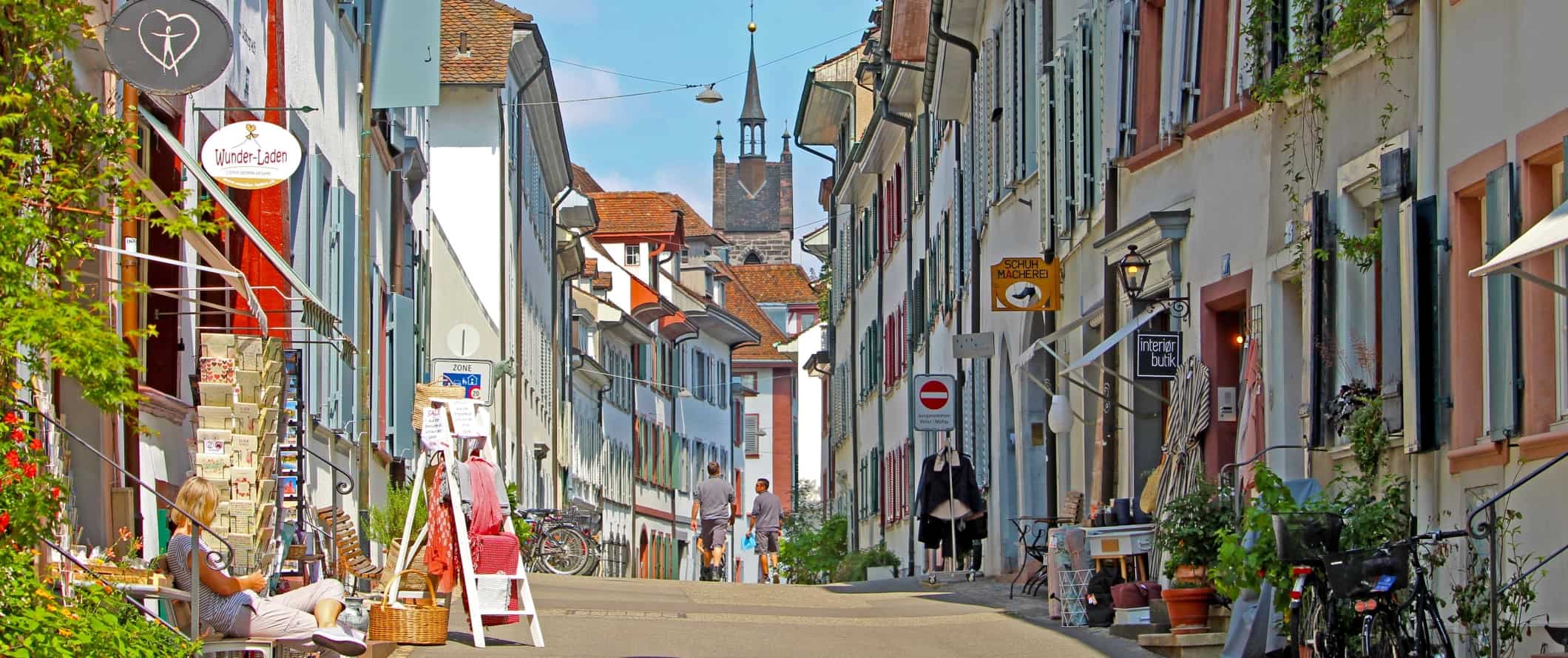
Accommodation – Hostel dorms average 30-40 CHF per night for a bed in a dorm with 6-8 beds. Private hostel rooms range from 70-120 CHF per night. Most hostels offer free linens, Wi-Fi, and some include breakfast.
For those traveling with a tent, there are a few campsites around Interlaken. Prices cost around 15-30 CHF per night for a basic plot for two people without electricity.
Hotels are super expensive, costing 70-120 CHF per night for a basic room. For something a little nice and more spacious, expect to spend closer to 150-200 CHF per night.
A much better alternative to hotels is Airbnb, where a private room typically costs 30-50 CHF per night and an entire apartment starts at about 70 CHF (though they usually cost double that so book early to find the best deals).
Food – With strong French, German, and Italian influences, Swiss cuisine is a mix of meat and potato-based dishes along with plenty of local cheeses. Popular dishes include veal and mushrooms, fondue (with bread or potatoes), rösti (fried grated potatoes), and quiche. Naturally, Swiss cheese and chocolate should not be missed either. When it comes to breakfast, muesli is a go-to healthy choice.
If you want to eat out, bars and cafés are the cheapest food option and cost about 9-15 CHF for a lunch special. An inexpensive restaurant costs about 25 CHF while a 3-course meal at a mid-range one costs about 60 CHF.
If you want to drink with your meal, a beer costs around 7 CHF and cocktails can cost 12-15 CHF.
Fast food (think McDonald’s) costs around 15 CHF for a combo meal. A large pizza is 15-21 CHF.
You can keep your food spending in check by going to the local supermarkets and buying your own groceries. Expect to spend around 100-125 CHF per week for basic staples like pasta, rice, eggs, seasonal produce, and some meat. The major supermarkets are Migros, COOP, and Spar. COOP is the most expensive.
Backpacking Switzerland Suggested Budgets
If you’re backpacking Switzerland, my suggested budget is 95 CHF per day. This covers staying in a hostel dorm, cooking al of your meals, taking public transit, limiting your drinking, and doing most free activities like enjoying nature and taking walking tours.
A mid-range budget of about 200 CHF per day covers a private Airbnb, eating out for a few meals, enjoying a few drinks, taking the occasional taxi to get around, and doing more paid tours and activities like visiting museums and going skiing.
For a “luxury” budget of 400 CHF or more per day, you can stay in a hotel, eat out for all your meals, drink more, rent a car or take more taxis, and do whatever tours and activities you want. This is just the ground floor for luxury though. The sky is the limit!
You can use the chart below to get an idea of how much you need to budget daily. Keep in mind these are daily averages — some days you spend more, some days you spend less (you might spend less every day). We just want to give you a general idea of how to make your budget. Prices are in CHF.
Switzerland Travel Guide: Money Saving Tips
Switzerland is a very expensive country to visit but there are plenty of ways to save money in the country, especially if you like the outdoors (nature is free!). Here are some ways I lowered my costs while visiting Switzerland:
- Get a student discounts – Many museums and other tourist attractions offer student discounts so always ask if there are discounts if you happen to be a student. You’ll save around 20% off.
- Get a city card – Most cities have a city tourist passes that get you discounts or free admission into museums and various local sights. Most of them also provide free public transportation too. If you’re planning on doing a lot of sightseeing, these cards are really cost-effective and can save you around 20-40%. Just make sure the cost of the pass is less than the cost of seeing the attractions you want.
- Stay with a local – Couchsurfing is a service that lets travelers stay with locals for free. It was a lifesaver that allowed me to keep my costs down the most. Since a lot of travelers use this service, make your requests for hosts early.
- Use BlaBlaCar – Transportation is very expensive, even more so than accommodation. Most intercity trains are around 50 CHF. That adds up quickly! Instead, use the ride-sharing website BlaBlaCar to avoid the trains and meet locals. It’s like Airbnb but for ridesharing. Just make sure you’re flexible as some rides will cancel last-minute.
- Use hotel points – Hotel reward points are a lifesaver in an expensive destination, so rack up hotel points before your trip. This tip really only works if you are from the U.S. (though there are options in Canada, the U.K., Australia, and New Zealand) but hotel points have save me thousands of dollars a year. You can click here to learn about how to get points and free hotel stays .
- Don’t drink – Alcohol is not cheap here. Skip the booze to save money and keep your budget intact. If you do drink, stick to happy hours and hostel bars for the cheapest drinks.
- Cook your meals – Eating out here is expensive so go grocery shopping and cook your own meals to save. It’s not glamours, but it makes visiting Switzerland much more affordable! My recommendation is to make your own lunch and then eat out for dinner if you don’t want to cook.
- Eat lunch specials – If you are going to eat out, do so during lunch when most lunch specials at cafes and restaurants cost around 10-19 CHF. It’s the cheapest time to eat out.
- Bring a water bottle – The tap water here is safe to drink so bring a reusable water bottle to save money and reduce your plastic use. LifeStraw is my go-to brand as their bottles have built-in filters to ensure your water is always clean and safe.
Where to Stay in Switzerland
Hostels are the way to go in Switzerland but unfortunately there aren’t many of them. If you are traveling during peak season, be sure to book well in advance as they fill up quickly. My favorite places to stay in the country are:
- Balmers (Interlaken)
- Backpackers Villa Sonnenhof (Interlaken)
- Zurich Youth Hostel (Zurich)
- Oldtown Hostel Otter (Zurich)
- City Hostel (Geneva)
- Nyon Hostel (Geneva)
- Bern Youth Hostel (Bern)
- Bern Backpackers Hotel & Hostel Glocke (Bern)
- Basel Backpacker (Basel)
- Hyve Hostel Basel (Basel)
How to Get Around Switzerland
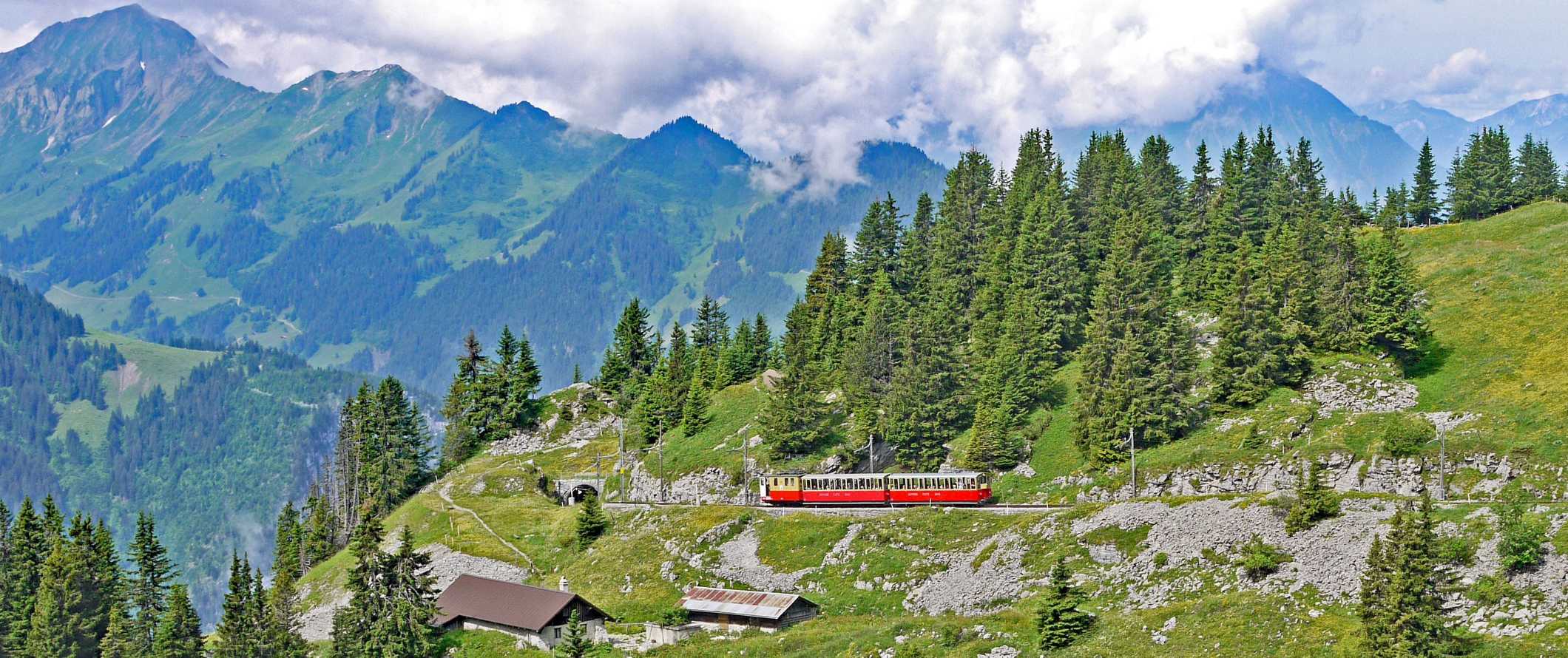
Public transportation – Cities and towns in Switzerland are incredibly well connected with trams, buses, funiculars, and trains. Each mode of transportation is safe, clean, and reliable. A single fare usually costs between 2.50-5 CHF depending on the length of time and number of zones you travel.
You should consider getting a Swiss Half Fare Card. It allows you to travel by train, bus, boat, and most mountain railways at half the price for one full year. It costs 185 CHF. This is only cost-effective if you intend to spend more than 370 CHF on public transportation.
If you’re staying a while and plan on cramming a LOT into your itinerary, you might want to look into getting a Swiss Travel Pass . It’s steep in price, ranging from 232 CHF for three consecutive days to 429 CHF for 15 consecutive days (there are non-consecutive passes as well), but it could be worth your time. It covers public transit, free travel on panorama trains, admission to 500 museums, mountain excursions, and more. The card also holds your Mobility and PubliBike memberships, and any MobilSki passes for the resorts.
If you’re considering the Swiss Half Fare Card or the Swiss Travel Pass, use the sbb.ch website to figure out the full fares for some of the trips you plan to make. This is the best way to figure out if either card is cost-effective for you.
Train – Train is the best way to travel in Switzerland and is the most preferred method for locals. It’s economical and efficient. Bern to Geneva (a two-hour ride) costs 50-95 CHF. The two-hour trip from Zurich to Interlaken is 54-96 CHF, while a one-hour trip from Zurich to Bern is 40-75 CHF. Expect to pay anywhere between 40-100 CHF for a second-class train ticket between cities.
As mentioned above, if you plan on doing a lot of train travel, consider the Swiss Travel Pass or the Half Fare Card.
To find routes and prices for trains around Europe, use Trainline .
Bus – FlixBus offers a few routes around the country. A 90-minute ride from Zurich to Bern starts at just 6 CHF, while a 5-hour journey from Zurich to Geneva starts at 17 CHF. It’s considerably cheaper than the train but options are much more limited than the train.
Flying – The country is so tiny, there’s no need to fly. It’s expensive and not worth the hassle. Take the train or bus instead.
Ridesharing – Using a ridesharing service like BlaBlaCar is one of the best ways to get around the country, although it does require some flexibility. You simply request a seat, pay a small fee, and off you go! It’s a faster and more interesting way to travel than by bus or train.
When to Go to Switzerland
Most visitors come to Switzerland in the summer, between May and September. July and August have the warmest temperatures, with snow-free hiking trails and longer days. If you’re around on August 1st, there are tons of celebrations for Swiss National Day (fireworks!). Peak summer temperatures are 18-28 °C (65°-82°F).
The shoulder seasons are from April-May and October-November, which is known in Switzerland as Zwischenzeit — the “between time” for the ski and summer seasons. It’s a good time for city hopping, but the ski resort towns are completely quiet and a lot of things are closed. The weather can also be unpredictable.
Ski season is from December to March, where resort towns get crowded and very expensive! If you’re a skier, that probably won’t matter much as Switzerland has some of the best skiing in the world. Conversely, cities like Zurich are quieter as everyone flocks to the mountains. The weather is cold and hovers below freezing so be sure to pack plenty of layers.
How to Stay Safe in Switzerland
Switzerland is one of the safest countries in the world. The most common type of crime is pickpocketing in tourist-heavy areas, but even that is rare. In some cities, like Geneva, petty crime is on the rise but it’s still nothing to be concerned about. Just keep your valuables secure and out of reach and you’ll be fine.
Solo female travelers should feel safe here, though the standard precautions apply (don’t leave your drink unattended at the bar, don’t walk home alone at night if intoxicated, etc.)
If you’re traveling in the mountains, keep an eye on weather reports and forecasts. The weather can be extreme and change rapidly so plan accordingly. If you go hiking alone, let your hostel/hotel staff know where you’re heading just in case.
While scams here are rare, if you’re worried about getting ripped off you can read about common travel scams to avoid here.
If you plan on hiking or spending some time skiing in the mountains, pay careful attention to weather reports. Heed avalanche warnings, and stay off the trails if you’re told to do so.
If you experience an emergency, dial 117 for assistance.
Always trust your gut instinct. Make copies of your personal documents, including your passport and ID. Forward your itinerary along to loved ones so they’ll know where you are.
The most important piece of advice I can offer is to purchase good travel insurance. Travel insurance protects you against illness, injury, theft, and cancellations. It’s comprehensive protection in case anything goes wrong. I never go on a trip without it as I’ve had to use it many times in the past. You can use the widget below to find the policy right for you:
Switzerland Travel Guide: The Best Booking Resources
These are my favorite companies to use when I travel. They consistently have the best deals, offer world-class customer service and great value, and overall, are better than their competitors. They are the companies I use the most and are always the starting point in my search for travel deals.
- Skyscanner – Skyscanner is my favorite flight search engine. They search small websites and budget airlines that larger search sites tend to miss. They are hands down the number one place to start.
- Hostelworld – This is the best hostel accommodation site out there with the largest inventory, best search interface, and widest availability.
- Booking.com – The best all around booking site that constantly provides the cheapest and lowest rates. They have the widest selection of budget accommodation. In all my tests, they’ve always had the cheapest rates out of all the booking websites.
- Get Your Guide – Get Your Guide is a huge online marketplace for tours and excursions. They have tons of tour options available in cities all around the world, including everything from cooking classes, walking tours, street art lessons, and more!
- SafetyWing – Safety Wing offers convenient and affordable plans tailored to digital nomads and long-term travelers. They have cheap monthly plans, great customer service, and an easy-to-use claims process that makes it perfect for those on the road.
- LifeStraw – My go-to company for reusable water bottles with built-in filters so you can ensure your drinking water is always clean and safe.
- Unbound Merino – They make lightweight, durable, easy-to-clean travel clothing.
- Top Travel Credit Cards – Points are the best way to cut down travel expenses. Here’s my favorite point earning credit cards so you can get free travel!
Switzerland Travel Guide: Related Articles
Want more info? Check out all the articles I’ve written on backpacking/traveling Europe and continue planning your trip:

The Perfect 7-Day Croatia Itinerary

The 6 Best Hotels in Copenhagen

The 6 Best Hotels in Florence

The 7 Best Hotels in Madrid

The 6 Best Hotels in Vienna

The Best Walking Tours in Barcelona
Get my best stuff sent straight to you, pin it on pinterest.
- Where To Stay
- Transportation
- Booking Resources
- Related Blogs

30+ Switzerland Travel Tips for First Timers & Must Knows Before You Go
Last Updated: July 6, 2023
*FYI - this post may contain affiliate links, which means we earn a commission at no extra cost to you if you purchase from them. Also, as an Amazon Associate I earn from qualifying purchases. Check out our Privacy Policy and Disclosure. for more info.
There are many countries I love in Europe, but if I were to pick one that has me (and my bucket list) in an absolute chokehold, it’d be Switzerland.
I mean… There’s glossy lakes in every shade, epic mountains caked with snow, and town after town with views so perfect, they’ll actually make you mad.
… which explains why I keep crawling back, like a sad obsessive ex.
Over the years, I’ve been lucky enough to visit Switzerland in all seasons and for all reasons – whether solo, with friends, with family, or as a romantic getaway. In that time, I’ve not only been able to amass a restraining order-level of enthusiasm, but I’ve also collected quite the list of random Switzerland travel tips learned through trial and error.
… so allow me to share those with you today!
Read on for a list of must-knows before you visit Switzerland for yourself. With these on your side, you’ll soon see why this is one of my favourite countries in the world.

Save this list of Switzerland Travel Tips for later!
You’ll be very glad you did.
1. Budget plenty of money for your Switzerland trip
As you might expect from a country that seems this perfect, Switzerland has one fatal flaw: and that is its prices.
Indeed – beautiful Switzerland is a country filled with sights that will drop many a jaw, but perhaps none more so than the sight of your first restaurant receipt.
Dining out is expensive in Switzerland, a place known for having the priciest Big Mac in the world . But so is practically everything else – from transport and hotels to groceries. In fact, it’s fairly common for Swiss residents near the border to road trip across to France, Germany or Italy to save a few francs on household goods.
All this to say: make sure you’re ready for Switzerland’s high price points, and plan accordingly.
Of course, there are ways to cut costs and save money while travelling Switzerland, but we’ll cover those more in-depth below.
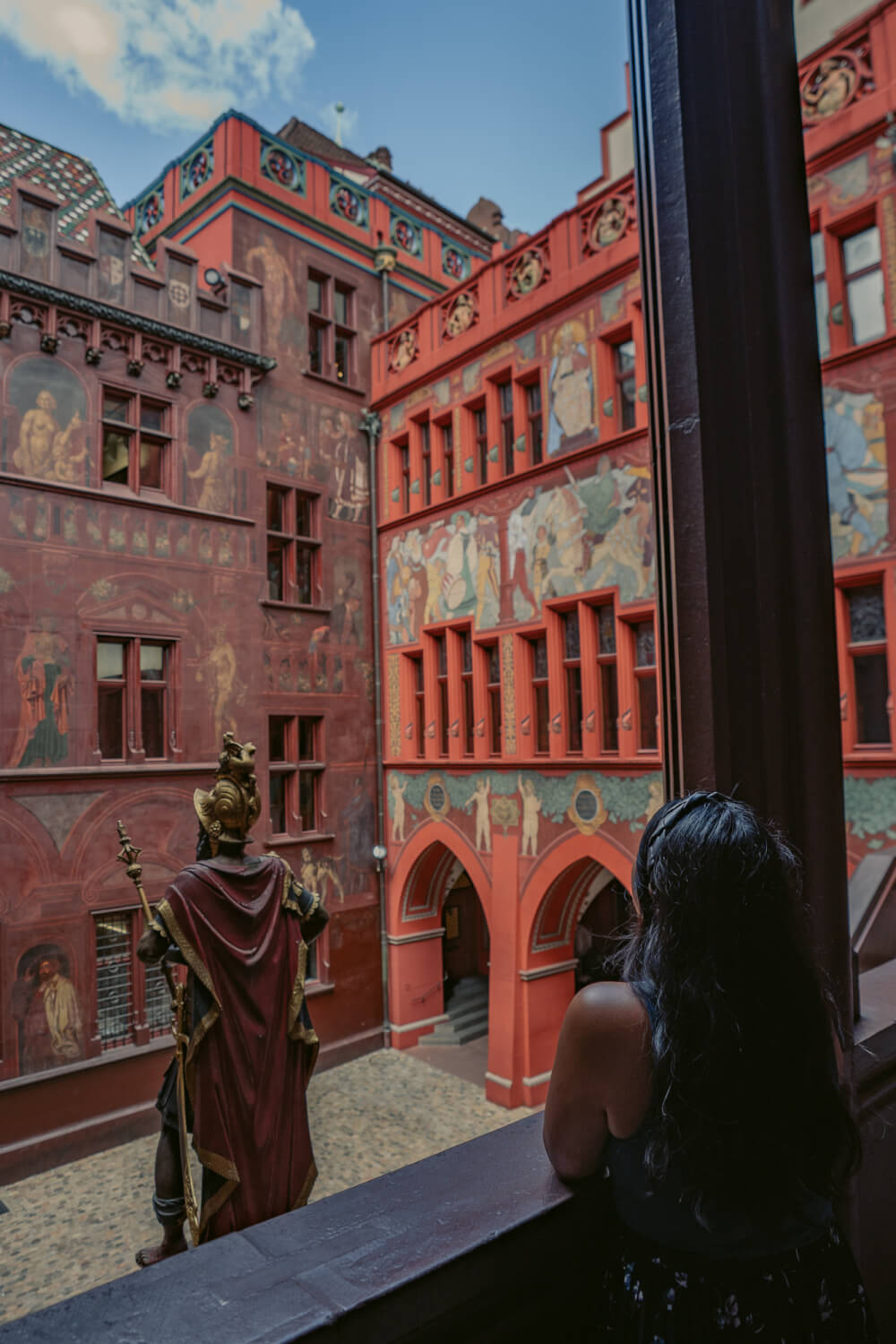
2. Remember Switzerland is NOT in the EU
While Switzerland is part of the Schengen Zone (which means yay, borderless travel!), it is not actually part of the European Union.
Practically speaking, this isn’t a big deal for tourists, BUT I need to mention it in case you’ve purchased some kind of phone plan that is for EU only.
On a trip a few years ago, I was happily using my German SIM card as we crossed the border into Switzerland and within minutes, all 20 euros of my phone credit had been zapped because I forgot my plan didn’t cover countries outside of the EU!
Now, most packages have smartened up these days and offer options for “EU + Switzerland” but be sure to double check just in case, lest you end up in debt from loading a TikTok recipe you’ll never even make.
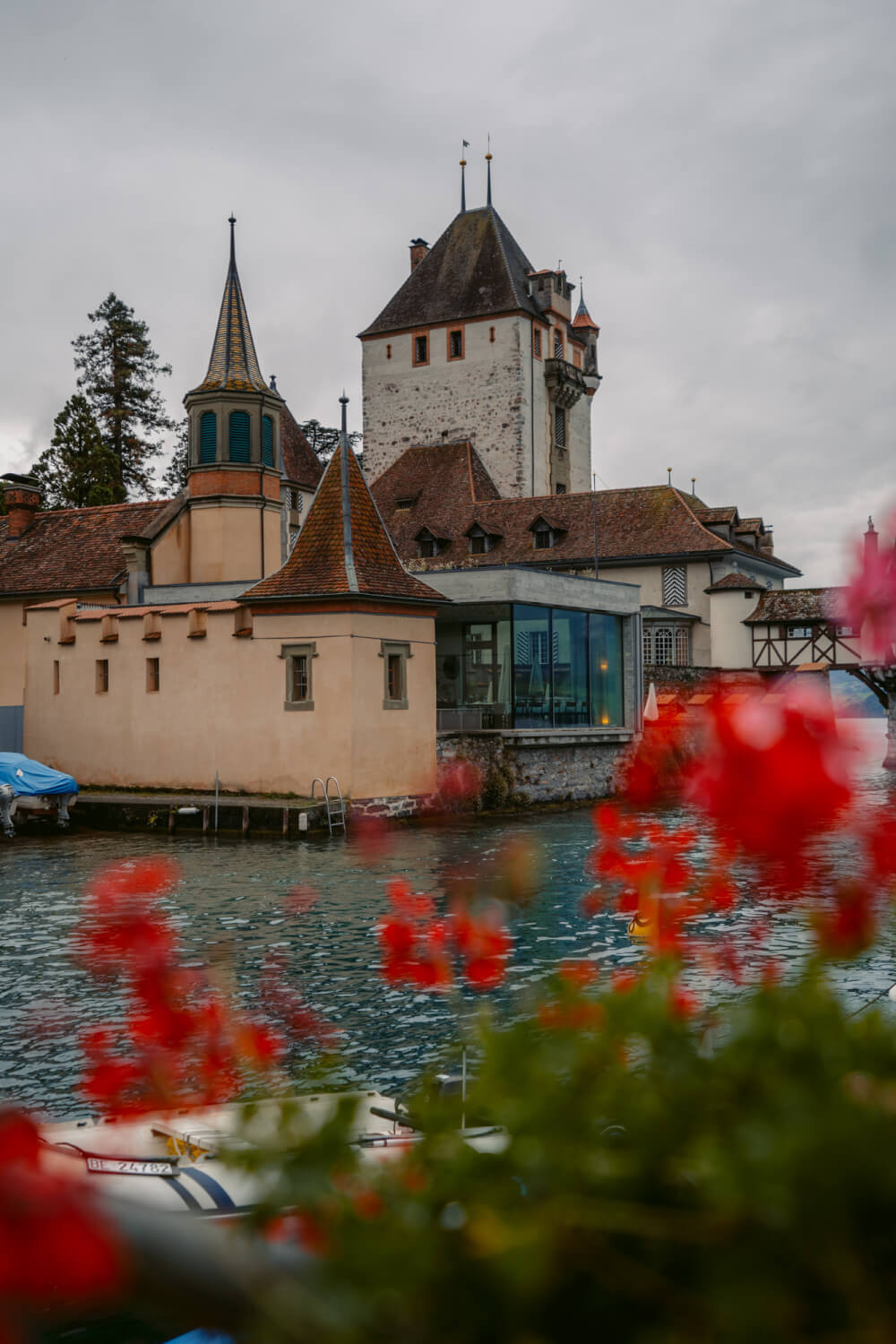
3. Switzerland has its own currency
Another practical Switzerland must-know related to the above point is that Switzerland has its own currency – the almighty Swiss Franc (or CHF).
The bad news is, this means your euros probably won’t get you far. The good news is, their money is vibrant and beautiful, like every other dang thing in the country.
Of course, if you’re wary of withdrawing too much local currency, I’ve found Switzerland to be very card-friendly, so if you have a good credit/debit card with minimal foreign transaction fees, you’ll get by fine with that in most places. I can highly recommend Wise for that purpose.
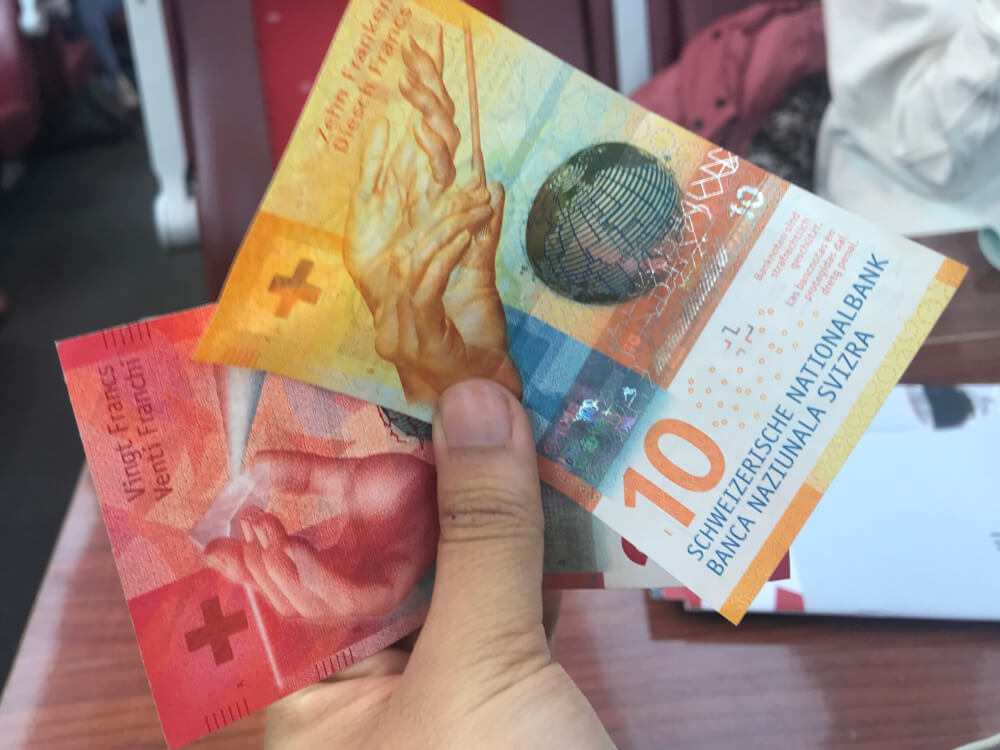
4. Switzerland also has its own unique plugs/outlets
In addition to the currency being different, the outlets are also different.
In Switzerland, they use Type J outlets that typically look like this, with scattered dots akin to a shocked emoji:

Usually Type F Euro plugs can fit these outlets, but it’s very important you make sure your adapter isn’t one of the circular ones because some of the outlets in Switzerland have these flat thin frames and the circular adapters won’t properly fit. Don’t say I didn’t warn you…
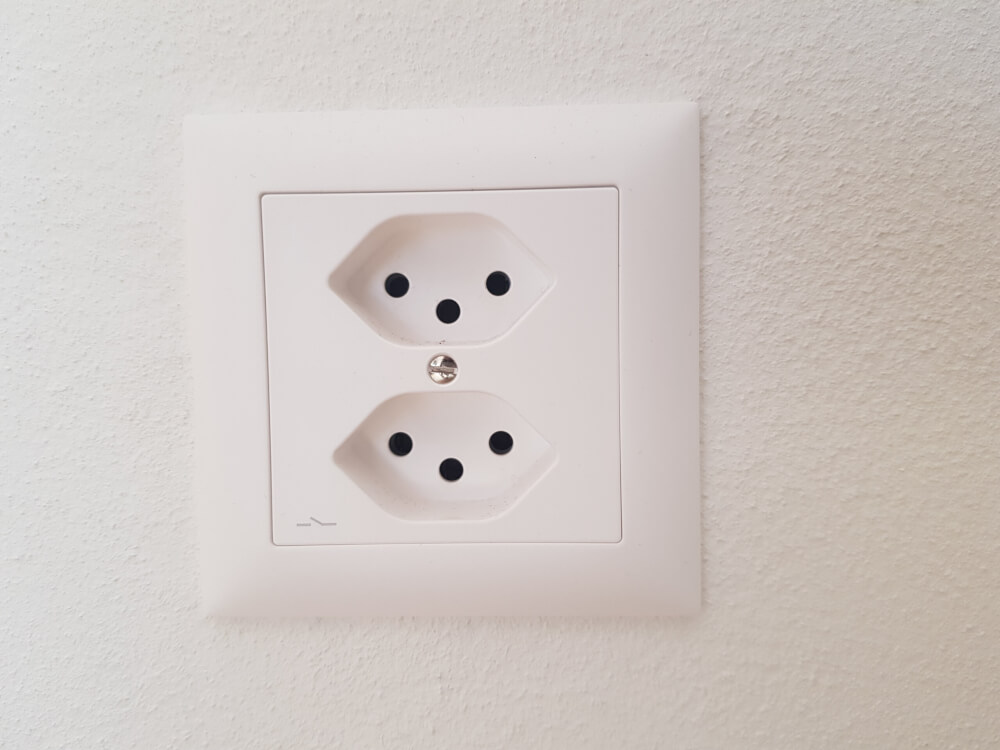
5. Know that they speak different languages in different parts of Switzerland
Another important Switzerland must-know is that when it comes to the local language, there’s no such thing as “Swiss”.
People in Switzerland are among the most multilingual you’ll meet (next to Luxembourg, anyway!) so depending on where you are in the country, you’ll hear German, French, Italian or Romansch spoken.
So, come prepared and do your research about which languages are widely spoken where you’re visiting, and try to at least learn hello and thank you in those languages as well.
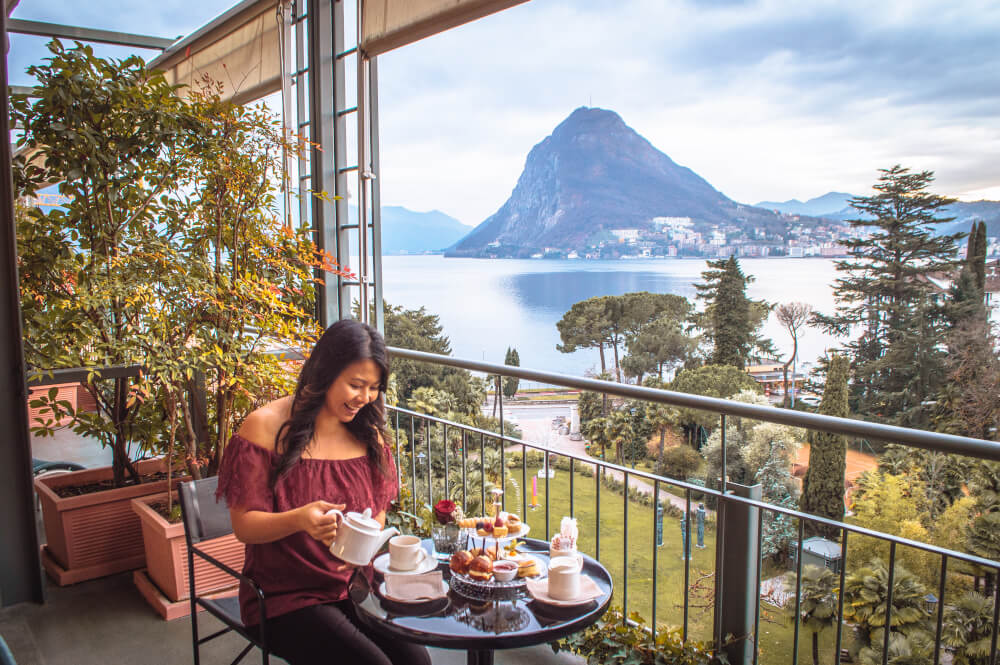
6. Consider flying into one airport and out another
The major international airports in Switzerland can be found in Zurich, Geneva and Basel (which, fun fact – is one of the few airports jointly operated by two countries, France and Switzerland).
Anyways, if you plan on covering a lot of ground while in Switzerland, I would actually recommend flying into one airport and out of another, if the cost difference isn’t substantial.
The reason I say that is while Switzerland is small, there isn’t really a good way to travel around the country in a loop. So logistically, it kind of makes sense to travel in one direction, so you don’t have to double back.
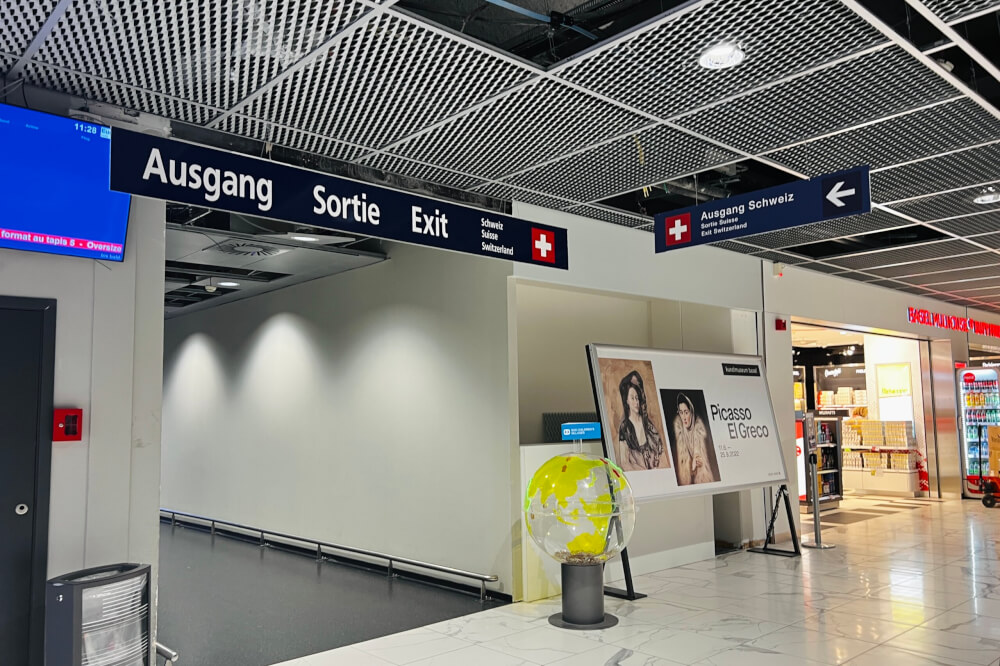
7. Or concentrate your Switzerland trip in a smaller area
Alternatively, I would advise picking a smaller region/area of Switzerland and exploring it thoroughly, rather than try to cover too much ground.
Transportation in Switzerland is expensive, so one of the best ways to cut costs is to simply not move around as much… which is Mission Impossible, I know, because of the many, many iconic spots you’ll no doubt want to see.
The trouble is though, many of these most famous spots aren’t actually that close together.
So, instead, I’d advise committing to one area – by doing that, you also start to discover more hidden gems and unique spots beyond the most famous attractions… which is of course a huge win in my books!
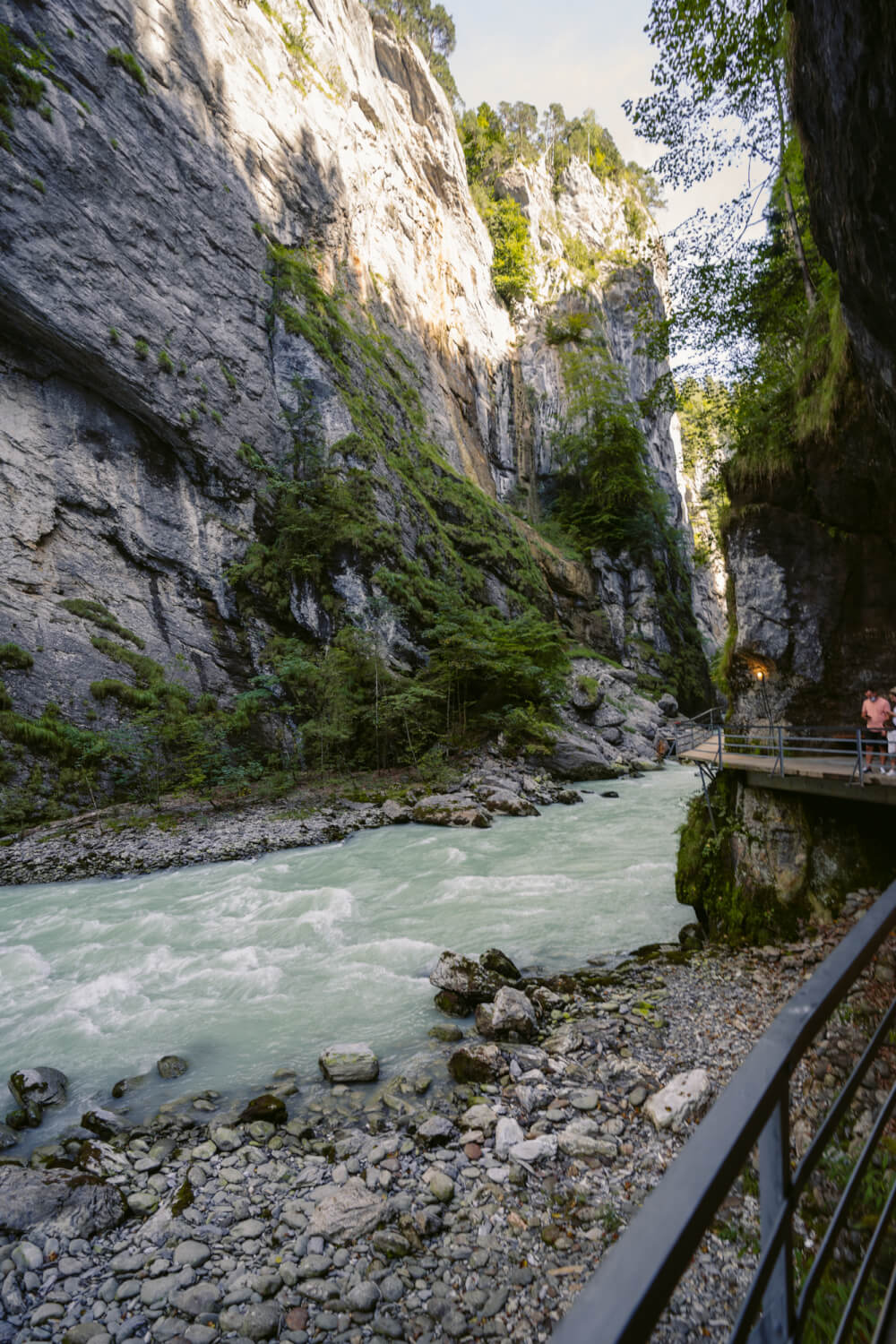
8. Go beyond the big cities in Switzerland
I have loved visiting many of the big cities in Switzerland like Lucerne, Zurich and Basel .
BUT, I would say the real charm of the country lies beyond city life, and if you really want the ultimate Switzerland experience, I highly encourage you venture off to the countryside for at least a day trip – exploring everything from quaint little villages and epic mountains to lakes more vibrant than Gatorade.
That’s where the real magic happens!
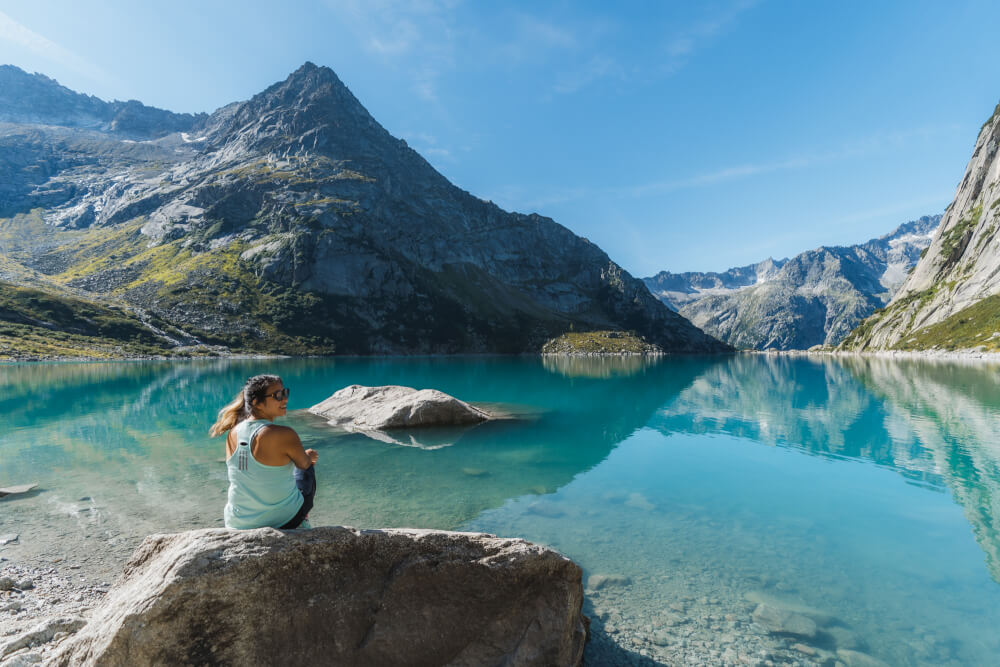
9. Go for Christmas markets!
Once upon a time, I did a whirlwind tour of Switzerland’s best Christmas markets , and it was probably that trip that sealed the country’s fate as one of my favourites.
Twinkly lights and the smell of Glühwein are usually enough (on their own) to make me tear up with joy. Add on the beauty of Swiss landscapes as the backdrop? Oof – I never stood a chance.
So, if you’re looking for one of the the most magical times to visit Switzerland, then I can highly recommend Christmas market season. If you plan your visit for earlier in the season (late November, rather than close to Christmas), you’ll usually be able to avoid the bulk of the crowds.
Here are my top must-knows for visiting Christmas markets in Europe if you want to learn more, and you can check out my Swiss Christmas market guides for more details on those:
- Zurich Christmas Market Guide
- Lausanne Christmas Market Guide
- Basel Christmas Market Guide
- Montreux Christmas Market Guide

10. Use public transport as much as possible
Swiss public transport is an astounding marvel in itself. It’s so clean. So beautiful. So scenic.
(And so expensive… but hey, probably not as expensive as renting a car!)
So, if you are planning mainly city to city travel, I can advise just getting around with the public transport. In fact, most cities will offer a free Guest Card when you stay overnight, which usually gives you unlimited public transport for the duration of your stay. Not too shabby at all!
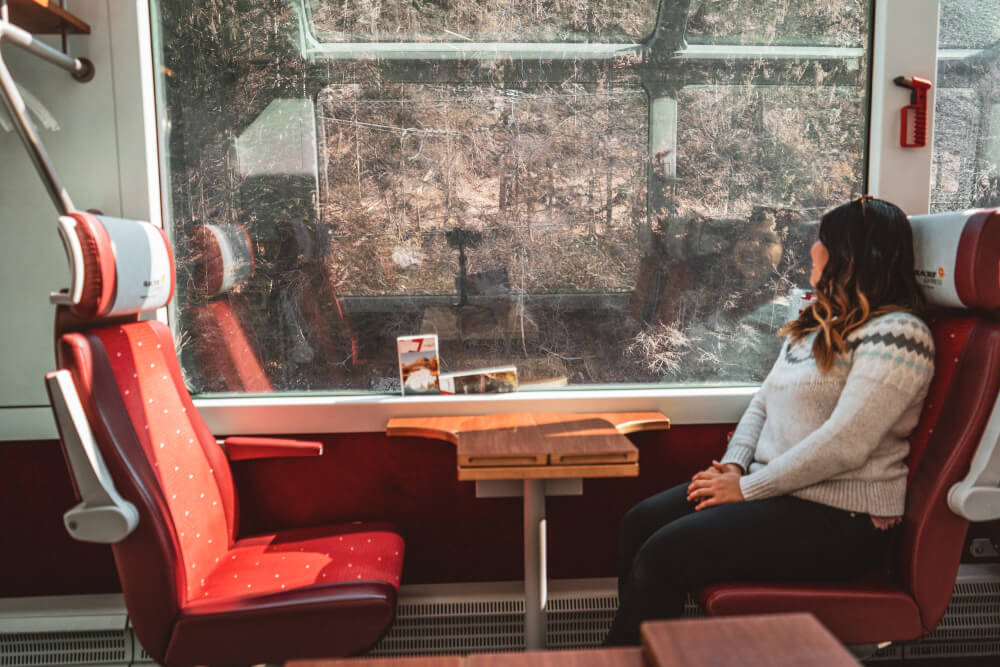
11. Look into scenic Swiss trains
And if you’re someone who likes to gaze out large windows and pretend they’re in a coming-of-age film, boy do I have the Switzerland travel tip for you.
Book yourself on one of Switzerland’s most scenic train rides. .. and thank me later.
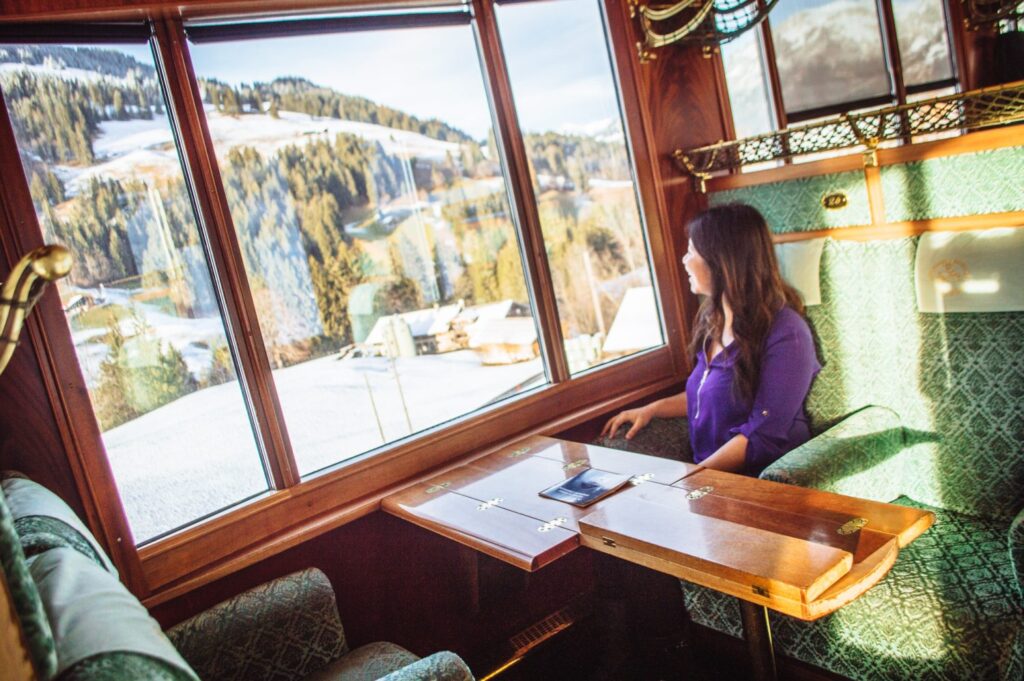
12. Book regional trains on scenic routes to save money
Now, if you do find yourself with a rabid desire to hop on Switzerland’s most scenic train routes (which duh, why wouldn’t you) then I have another secret money-saving tip.
Odds are you’ve heard of the big famous Swiss trains like the Glacier Express or Bernina Express . Both are great, but also pricey and sometimes over-congested with our fellow tourists.
But if the views are more your priority, what you can actually do is hop on a regional train that goes along the same route. This way, you get the same views at a fraction of the cost and even bonus perks like being able to roll down the (admittedly smaller) windows, or even special train cars that have space for photography!
I did this on the Bernina Express route, and actually preferred it to the main tourist/sightseeing train.
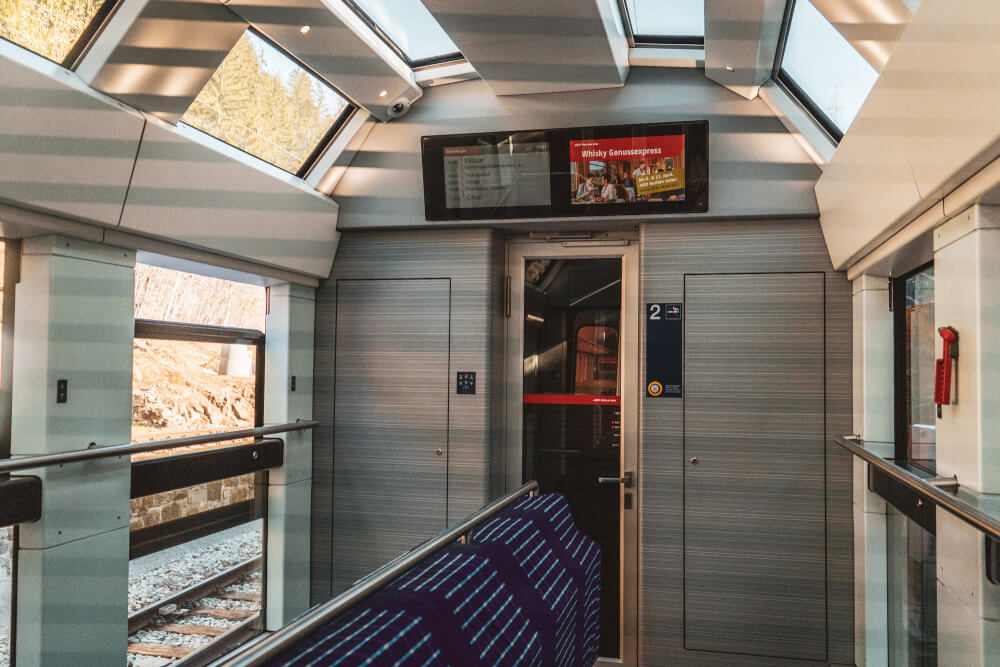
13. Look into Swiss transport passes
Even if you don’t end up using my Swiss train travel hack above, there are still many ways to save money on trains in Switzerland.
Overall, if you plan to take trains very frequently (or plan to be in the country for a while), then you’ll almost certainly save money by purchasing some kind of Swiss transport pass.
There are a few popular ones, and which is best depends on your specific situation, but here are the top options:
- Swiss Travel Pass: Gives you unlimited transport and discounts on attractions across Switzerland – prices vary depending on the time period you buy for.
- Swiss Half Fare Card | 120 CHF for a month: Gives you discounts of up to 50% on all journeys by train, bus, boat and most mountain railways in Switzerland, as well as public transport in over 90 cities.
- Regional Passes: Grants unlimited entry to attractions/public transport in a particular region, usually cheaper than buying the passes above which are nationwide. E.g. Jungfrau Travel Pass or Berner Oberland Pass
And of course, if you’re travelling to multiple countries, it might be more worthwhile to use a Eurail pass instead. This is how I managed to ride the Bernina Express and Glacier Express for a fraction of the full cost.
Read my full Eurail review for more details.
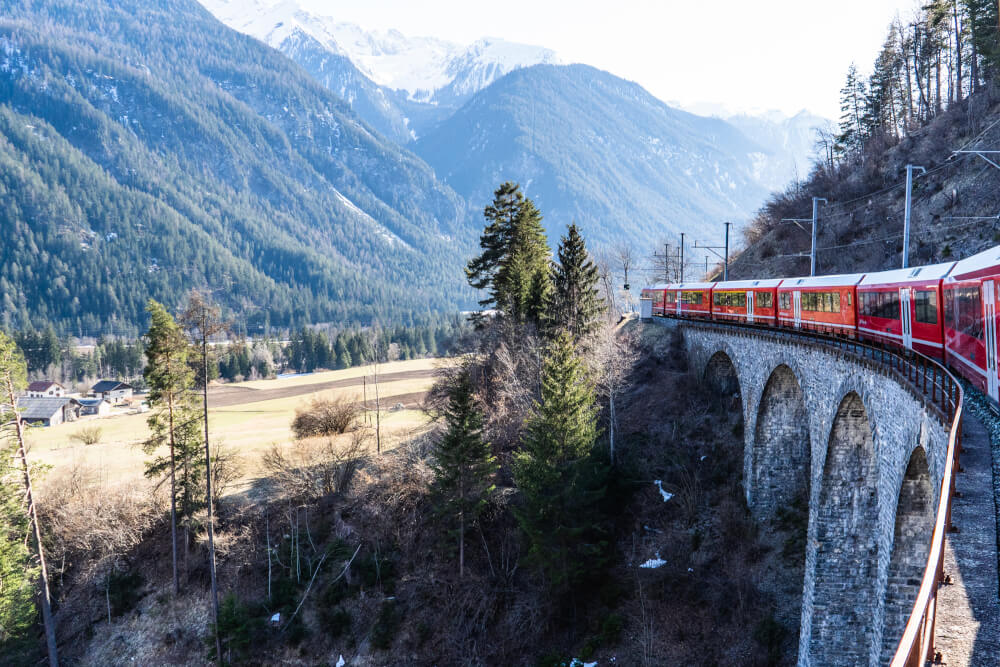
14. Rent a car if you plan to do a lot of natural sights or smaller villages
But while public transport across Switzerland is amazing, it does have its downsides.
The main one for me is that local bus services don’t tend to drop you to more remote hiking destinations or nature spots, so if your goal is go more off the beaten path, definitely rent a car.
IMPORTANT: To use the motorways in Switzerland, you need to purchase something known as a Vignette. This is a sticker you pay for that allows you to use Swiss highways. Unfortunately it’s only available as an annual sticker so it does cost 40 CHF, so that’s another cost to hear in mind.
Interested in renting a car? Here is a post to help you figure out how much renting a car in Europe really costs .
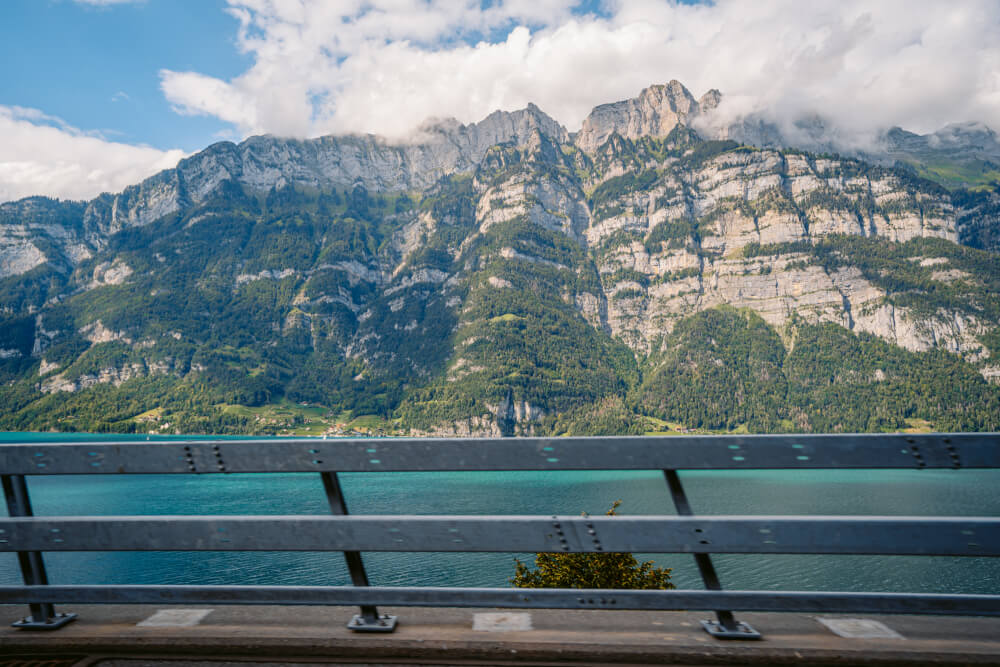
15. Learn all the tricks to saving money with your accommodation
Alright, so we’ve covered Switzerland travel tips for saving money on transport, now here are a few quick tips for saving money via your accommodation:
- Book accommodation with a kitchen to save big on food costs
- Stay in a smaller village outside a big expensive resort/city to save big
- Look for freebies/inclusions when booking accommodation (e.g. a visitor pass, meals included, etc.)
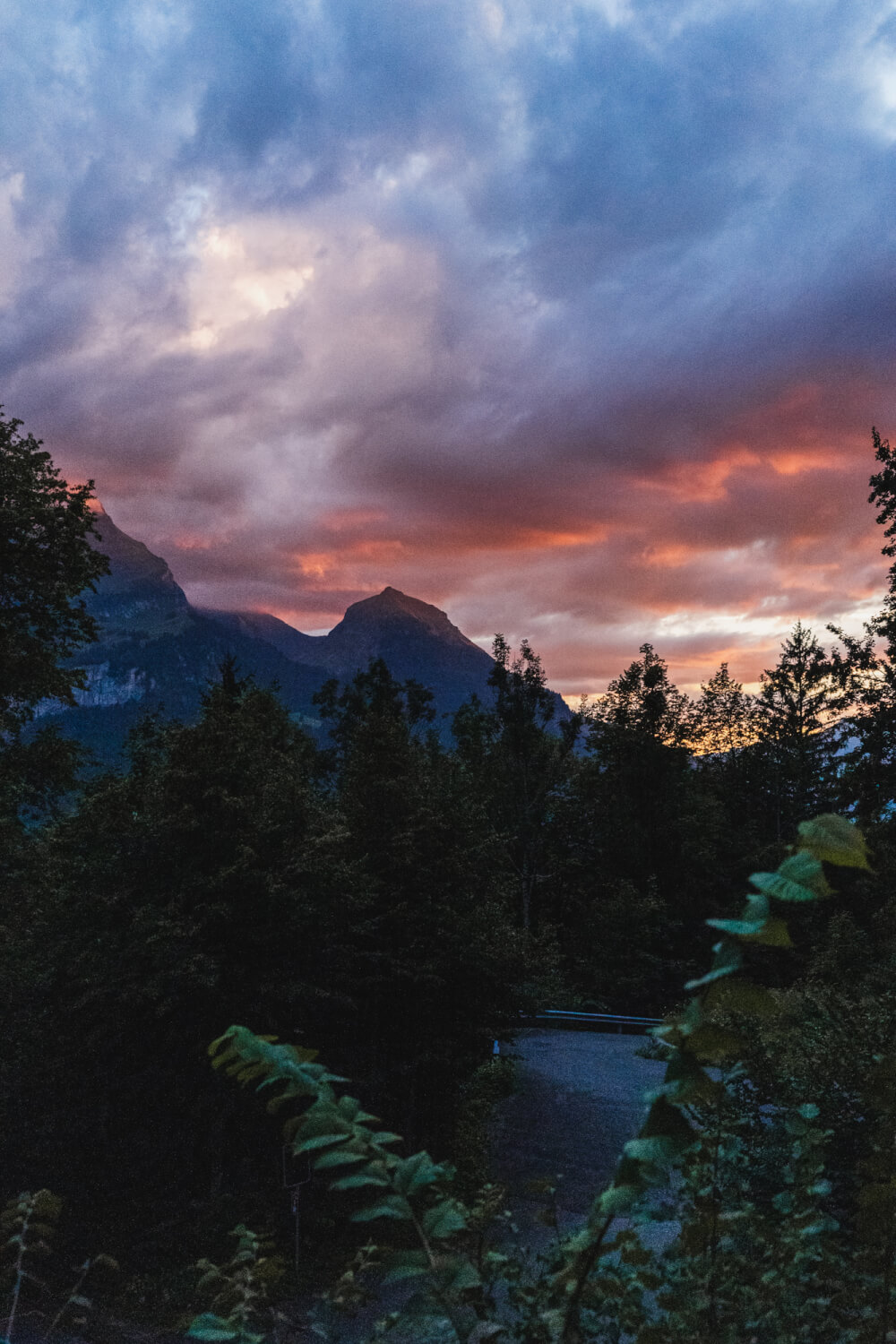
16. Budget for the tourist tax
We’ve already covered the fact that Switzerland is pricey, but an additional cost that surprises many visitors is the Swiss tourist tax.
This is an additional tax that usually has to be paid in person and can range from 2-7 francs per person per night. Yes, more money. Whee!
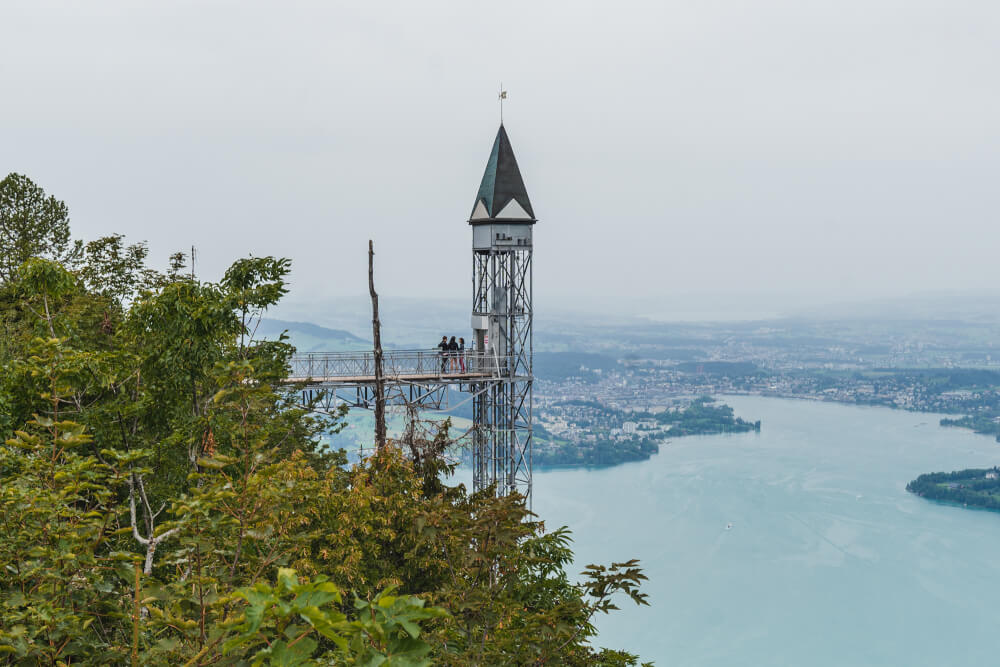
17. Don’t take Swiss directness personally
One of my most important Swiss travel tips? Don’t take any perceived ‘rudeness’ as a personal attack.
Culturally speaking, Swiss people can be very direct so don’t be surprised if you enter a bakery and they just ask “what do you want?” instead of “hey how are you? How’s your day? How’s your mom??”
They don’t tend to do the whole ‘overly friendly customer service’ thing here, so just accept it as a cultural difference, and know it’s not worth ruining your trip over.

18. Prepare for an earlier start to the day
Another potential Swiss culture shock? Generally speaking, Swiss people get up early.
As a result, shops open earlier, and close earlier too. It’s not uncommon for grocery stores to close at 6:30 or 7pm, so keep that in mind when preparing your day.

19. Learn how to tip in Switzerland
Tipping is definitely not expected in Switzerland to the same extent as in North America. Often rounding up is considered enough (e.g. if your bill is 45 euro, then rounding up to 50), with 10% being a rough benchmark for good service.
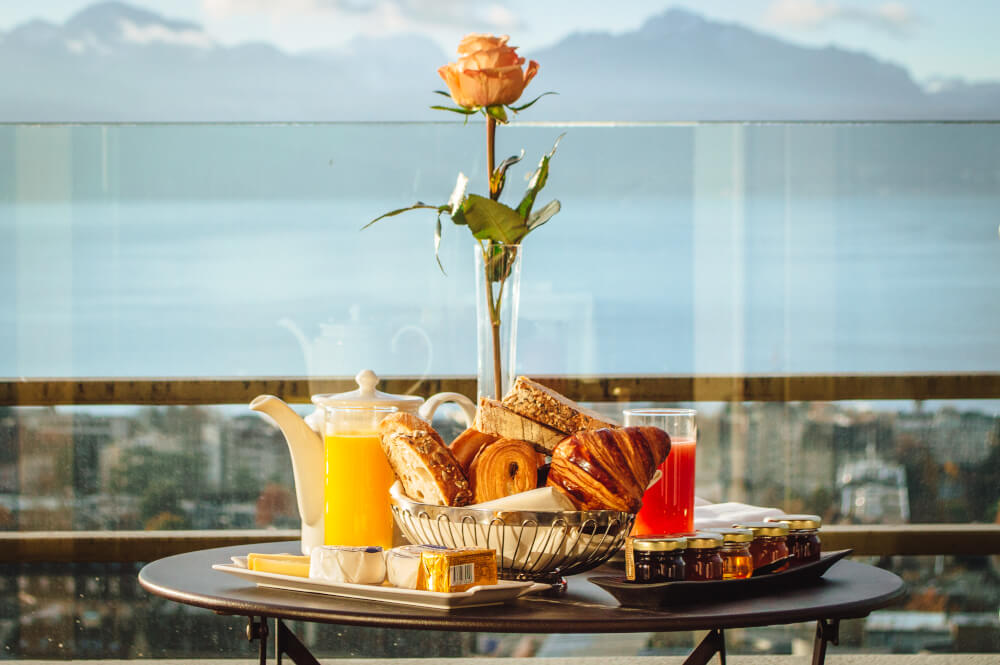
20. Thoroughly research your hiking route beforehand
Alright, now this is a more specific Switzerland travel tip, but if you plan to do any hiking while you’re there, listen up.
Research beforehand is very very important.
Swiss locals tend to be highly athletic and begin hiking from a young age. In fact, I’m convinced most Swiss people exit the womb with hiking boots on.
As such, I’ve noticed hiking resources like signs in Switzerland aren’t super helpful for beginners, so make sure you thoroughly research the trail and make sure you can do it before committing. Swiss mountains are no joke.
One of the most infuriating parts of travelling in Switzerland is the ubiquitous “Wanderweg” (Hiking Path) sign, which often points in two directions and offers little to no help for those new to these trails… so here’s an example of what you might be working with:

21. Consider an SAC membership
If you plan on doing a lot of hiking and intend to stay at mountain huts, another Swiss money-saving tip is getting a membership for the Swiss Alpine Club (SAC) .
This membership costs between 80 – 110 CHF a year but comes with a ton of perks like 50% off mountain hut stays.
Considering how expensive accommodation is, this can definitely be worth it for a longer hiking heavy trip.

22. Splurge on some Swiss specialties
Alright, now let’s engage in a swift pivot from Swiss hiking to Swiss FOOD.
Yes, welcome to your happy-place.
Food-wise in Switzerland, I’ll be sharing some budget friendly tips below, but I do think it’s important that you don’t miss out on Swiss food while you’re over there. I know it can be pricey, but frankly there are some Swiss specialties that are worth the splurge.
Some Swiss must-tries include:
- Fondue: A delicious pot of melted cheese or chocolate that you dip things in
- Raclette: An amazing cheese that you melt a layer of and scrape over top potatoes and veggies
- Rösti: a crispy potato pancake
- Chocolate: A treat that requires zero introduction
NOTE: Apparently it’s considered sacrilegious to drink a cold beverage other than white wine while eating fondue or raclette. It stems from an old belief that this will lead the cheese to glop up weirdly in your body and kill you, but that has been scientifically dismissed. Instead, you’ll just be getting some weird stares from locals if you do… like we did when this photo was taken:

23. Have a quick search of regional specialties before you go
While yes, fondue and raclette are great, you should make sure to try some other lesser known Swiss delicacies too.
The cuisine in Switzerland can vary a lot depending on where you go, so I’d recommend doing some research beforehand about what the best must-tries are, so you can keep an eye out for them.
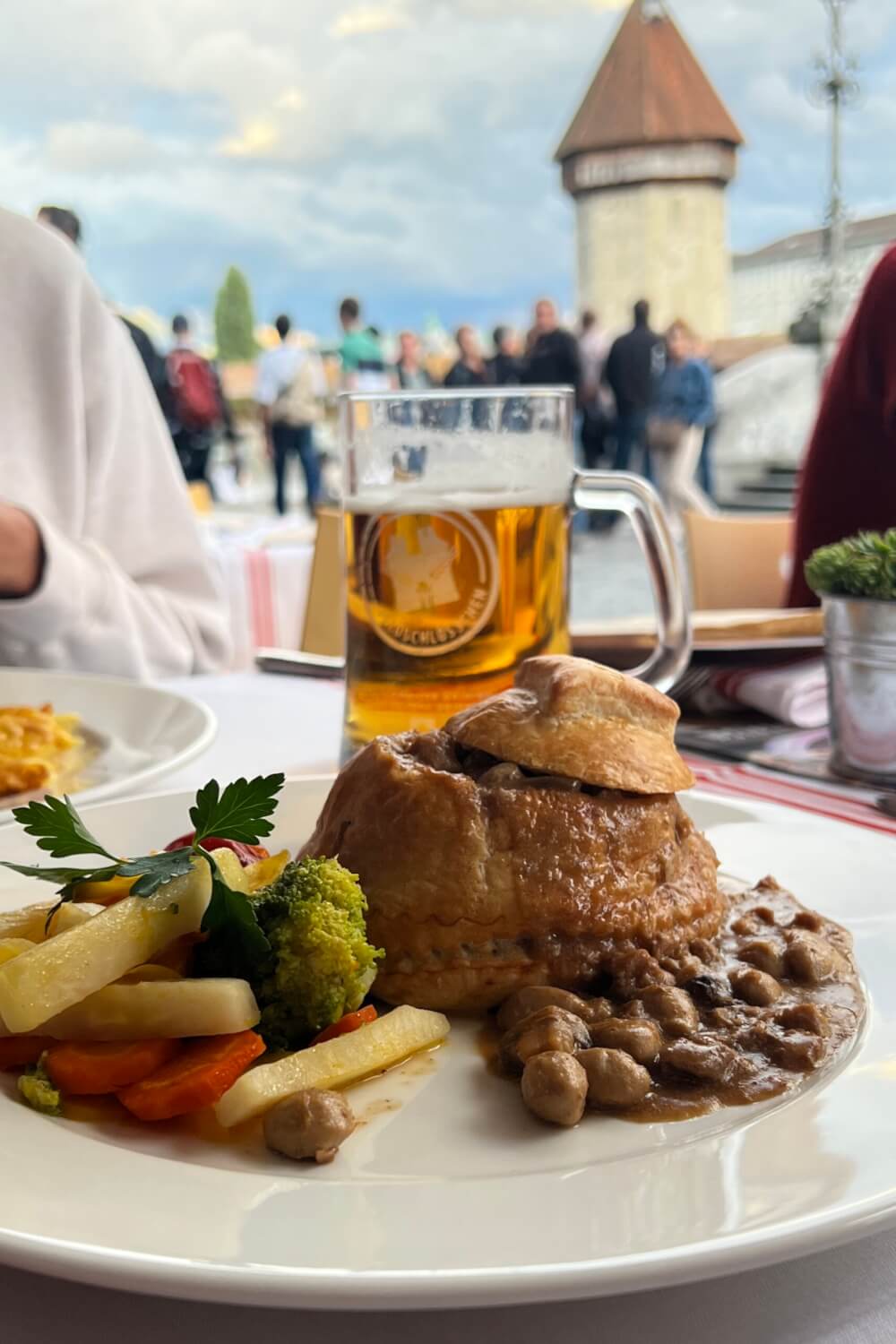
24. Stock up on supplies before visiting Switzerland
Alright, now for the less fun budget-friendly version of my Switzerland advice.
It’s a lot less exciting, but nonetheless necessary. Unless you want to leave Switzerland bankrupt.
First off – one of the best ways to keep your budget down is to ensure you grab all your necessities before you get to Switzerland.
The last thing you want to do is realize you forgot shampoo, or a razor, or your favourite granola bars, then be at the mercy of Swiss prices for all these random items.
So, stock up before you leave and your budget will thank you.
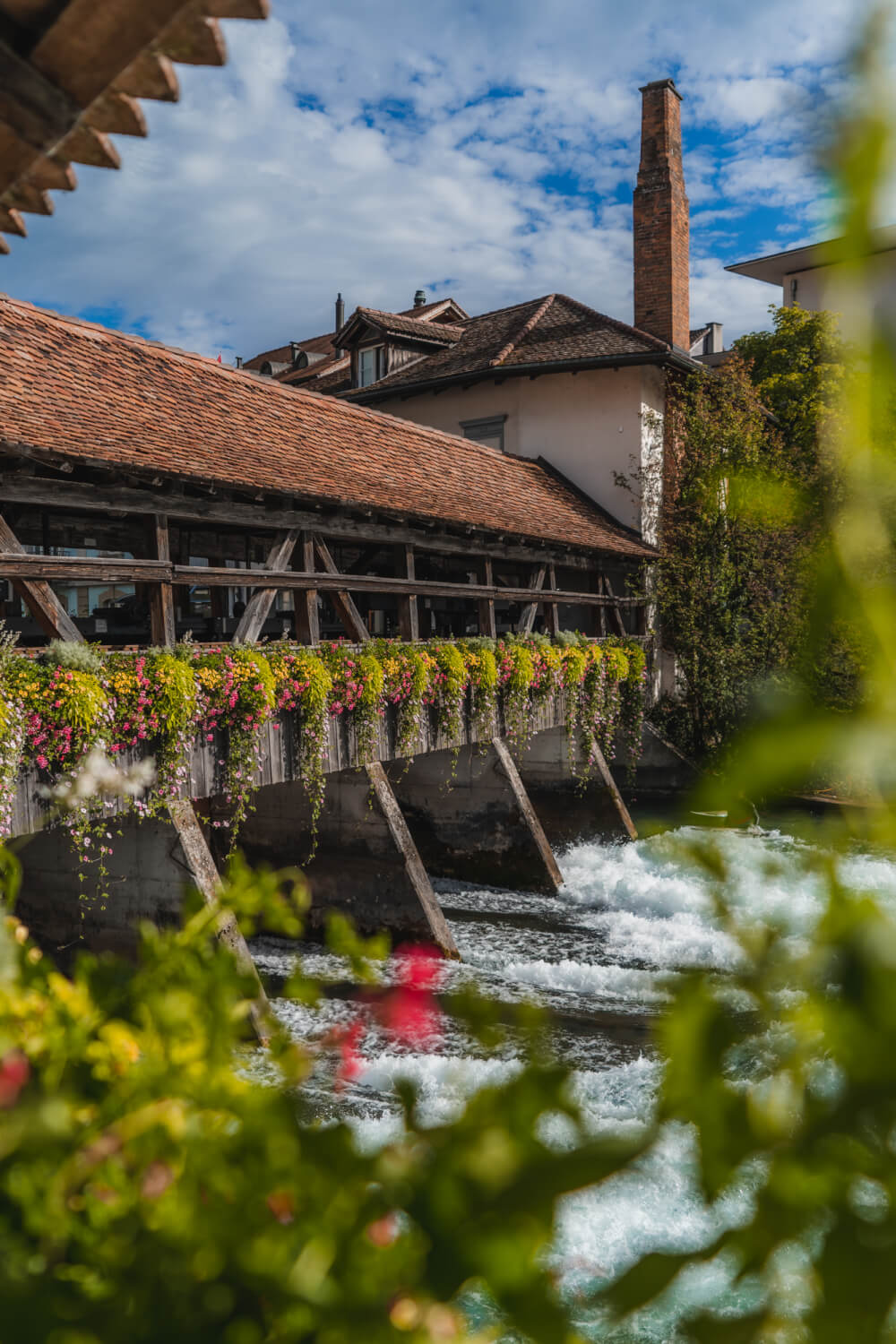
25. Buy groceries & cook to save big
On a similar note, if you’re on a budget, don’t feel pressured to dine at a restaurant for every meal while in Switzerland.
These costs can add up quickly, and since service in Europe is less rushed than in North America, often this will cut into your sightseeing time as well.
Instead, don’t forget that grocery stores and markets are a great resource for cheap grab & go meals, or even groceries for whipping up your own meals if you’ve booked accommodation with kitchen facilities.
The cheapest places to get groceries in Switzerland would be ALDI or Lidl (huge German chains known for their rock bottom pricing), or Switzerland’s own leading discounter, Denner.
Depending on where you are though, I’ve found that there often aren’t one of these available, so in those cases, be sure to look for the budget store brand for whichever supermarket you’re shopping at. These would be…
- M-Budget brand at Migros
- Prix Garantie brand at Coop
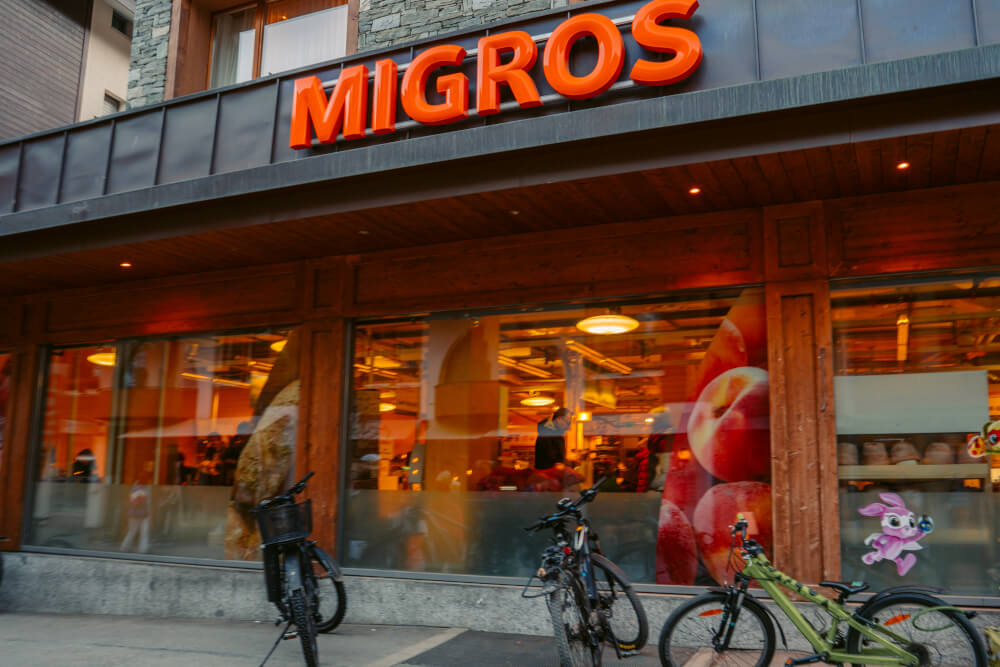
26. Shop for souvenirs at the supermarket
If you’re looking for nice goodies to bring back home to loved ones, often you’ll save a lot of money by buying them at the supermarket, rather than at pricey souvenir shops.
And no, I don’t mean in a “hey Timmy, I missed you, here’s some Swiss lettuce” kind of way, but moreso in a “suitcase full of Swiss chocolates and personalized Toblerones” kind of way.
Many souvenir shops will sell chocolate and the like, but usually for a higher markup than supermarkets. Beyond that, many supermarkets in more touristy areas will also have things like postcards and magnets too, so keep an eye out! Nobody from home has to know.

27. Visit Äss Bar
Yay! My favourite Switzerland tip for saving money! Because I’m sure you’re all absolutely mortified right now from that heading.
Don’t worry though – I haven’t completely lost it. I know the name seems a bit… questionable, but Äss Bar is actually a unique Swiss chain known for their low prices because they sell day old food that’s still good to consume.
It’s all bakery stuff like sandwiches, salads, and pastries, and honestly really good value for money, with quite a few locations now spread across the country. I’ve enjoyed a salad from there before, and was very pleasantly surprised by the price and quality.
Overall – it’s a great pick if you’re on a budget, or at the very least a fun photo opp:
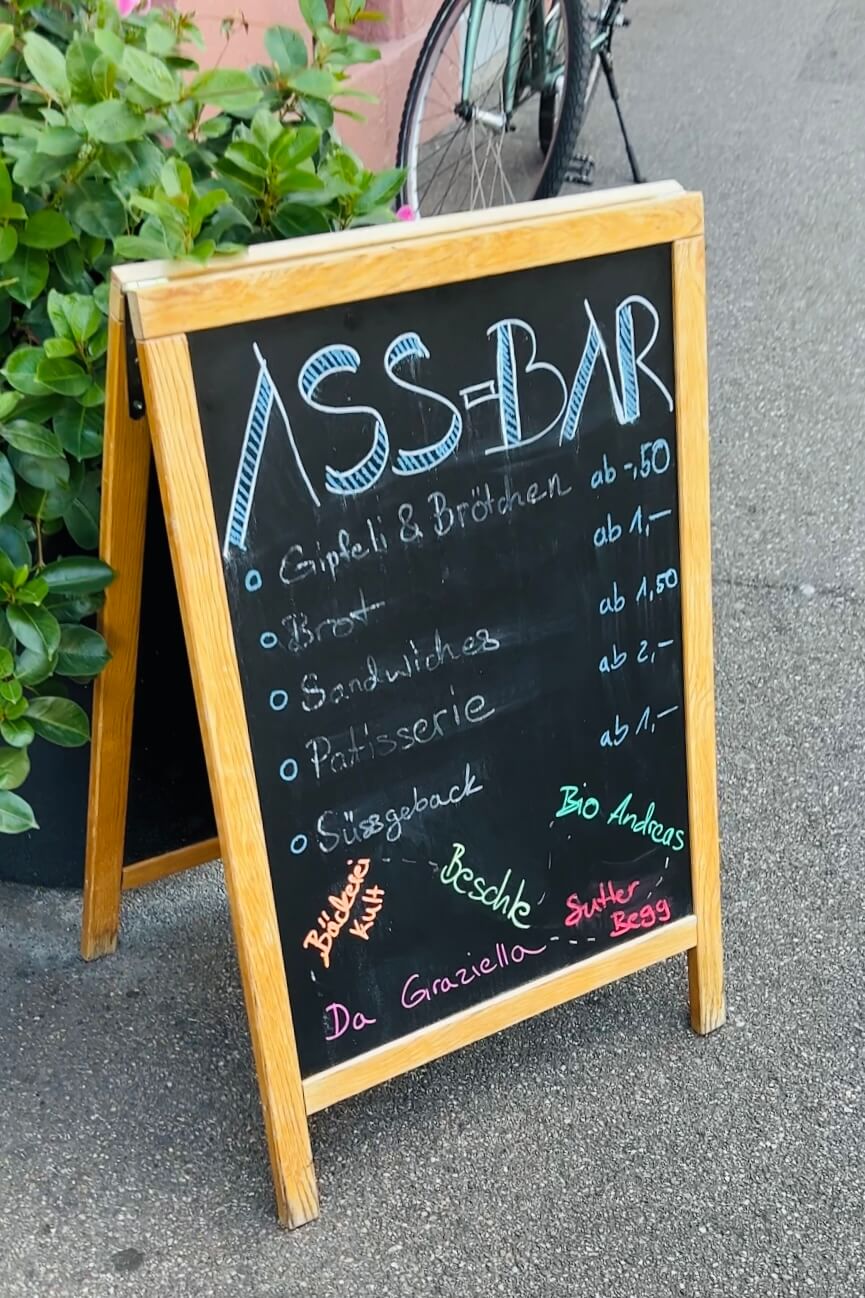
28. Consider sightseeing/attractions passes
If you plan to do a lot of paid attractions while in Switzerland, those costs can add up, so another way to save money on those is by purchasing… you guessed it – a pass!!
Most cities and regions will offer an attraction pass of some kind that bundles up entry to multiple attractions and modes of transport for one set price. If you plan to do a lot of paid sights, these can save you a ton of cash.
I’ve previously purchased one in Lucerne and was shocked by how much I saved.
Buuuut beware that some attractions and cable cars are privately owned and won’t be part of certain passes, so definitely read the fine print to double check if there’s a specific sight you had your hopes on.
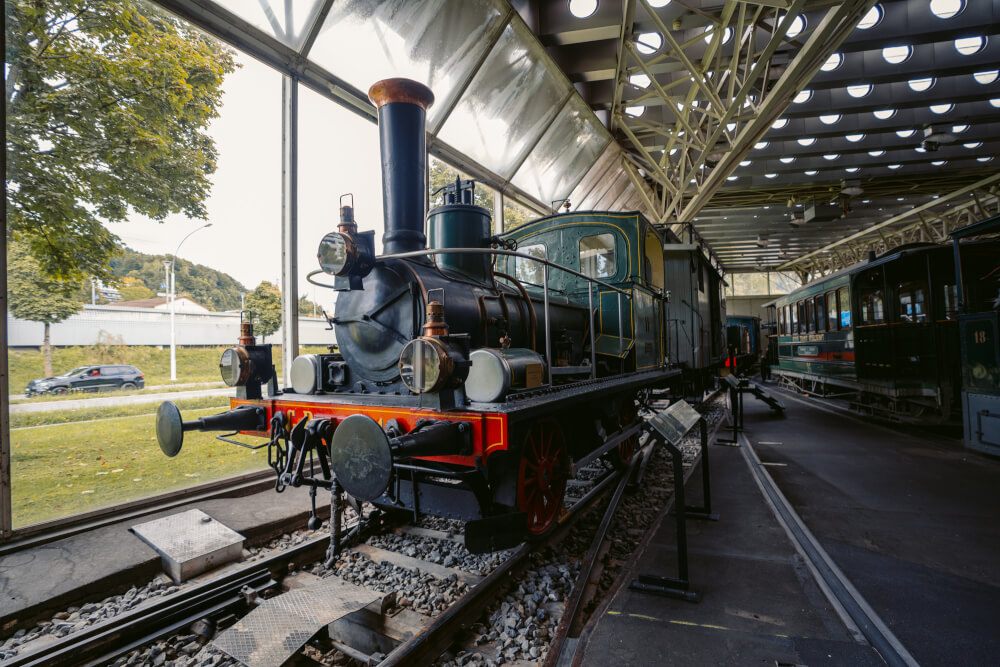
29. Prepare for ever-changing weather
Generally, I have been blessed with beautiful weather on every trip of mine to Switzerland, but I’ve learned the hard way that Swiss weather conditions can change quickly. Very quickly.
It can also vary a lot depending on your elevation.
Many first time visitors fail to take into account that nasty weather conditions can mean zero visibility up in the mountains, which is a bummer when you pay so much to get up there!
So, be sure to check weather reports diligently and don’t forget what a huge consideration that is during your Switzerland trip… and pack layers so that you’re not caught off guard with swift changes in temperature and conditions.
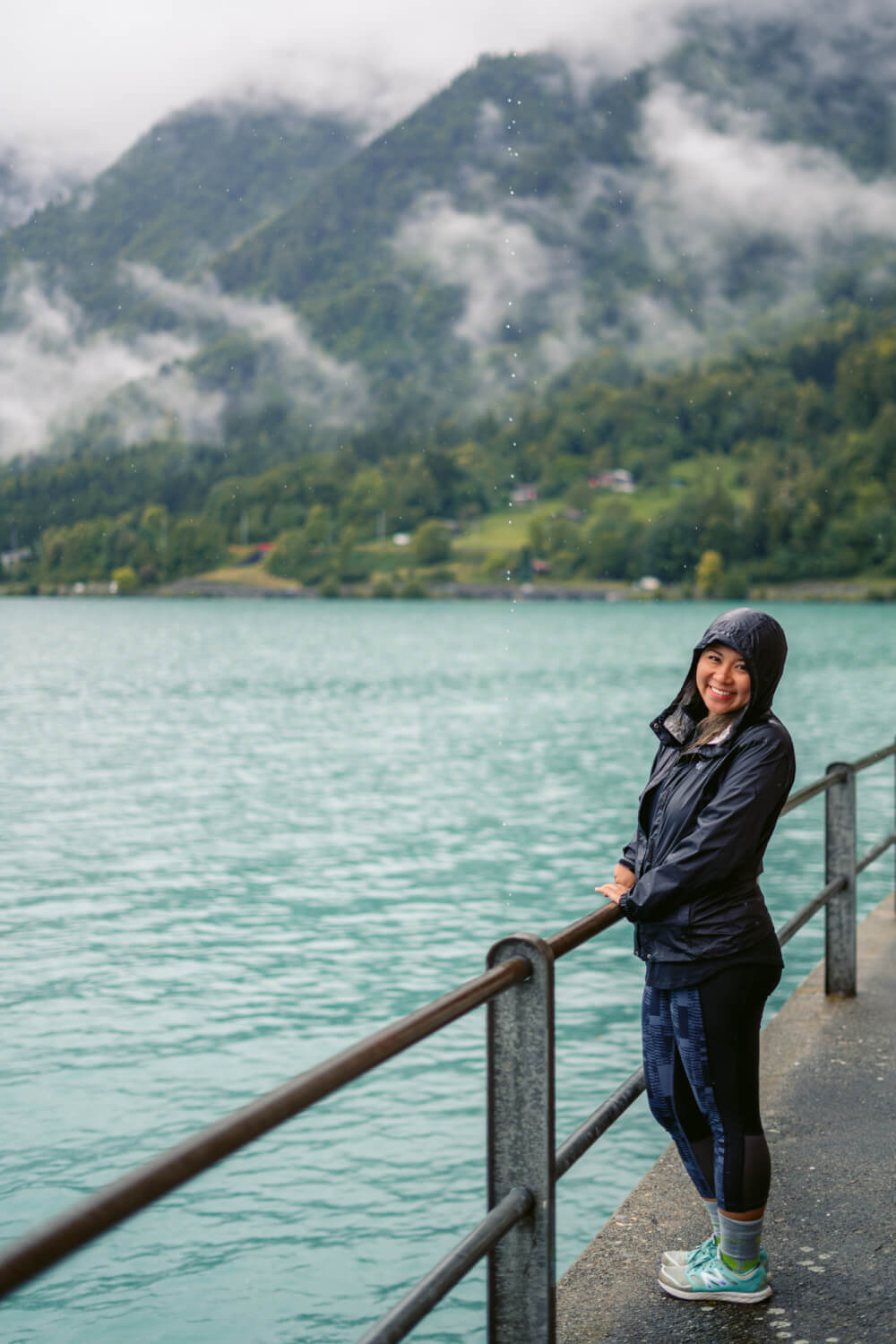
30. Use webcams to spy on visibility conditions for mountain attractions
Another important tip is to use webcams to check visibility conditions before heading up to alpine attractions.
Swiss mountains are epic… but they’re also very high up. And just because the visibility is fine on ground level doesn’t mean it will be 2000m above ground.
This is why I’d advise against booking set date tickets or tours for Swiss alpine attractions until you get close to the date and have an idea of the forecast. It can be very disappointing to spend a bunch of money just to get up and see nothing but pure whiteness.
Anyways, one way to quickly check on weather is by using webcams. Most mountains will have a few installed so just google the viewpoint name and webcam to see if you can find one.
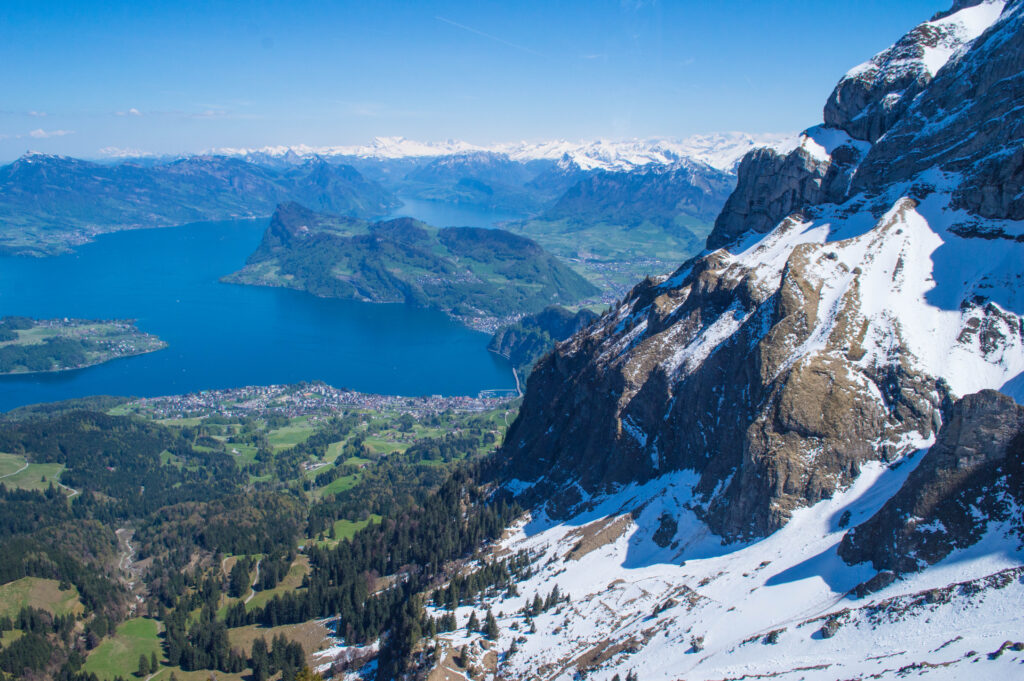
31. Rent free bikes
And as if Switzerland didn’t sound Utopian enough, another hot Swiss travel tip for you is that some cities actually offer free bike rentals so long as you put down a deposit and ID.
Here are two known cities that do this:
- Zurich: ‘Züri rollt’ program – free bike rental with a deposit of 20 CHF
- Geneva: GenèveRoule program – free bike rental in the summer with a deposit of 20 – 100 CHF plus an ID
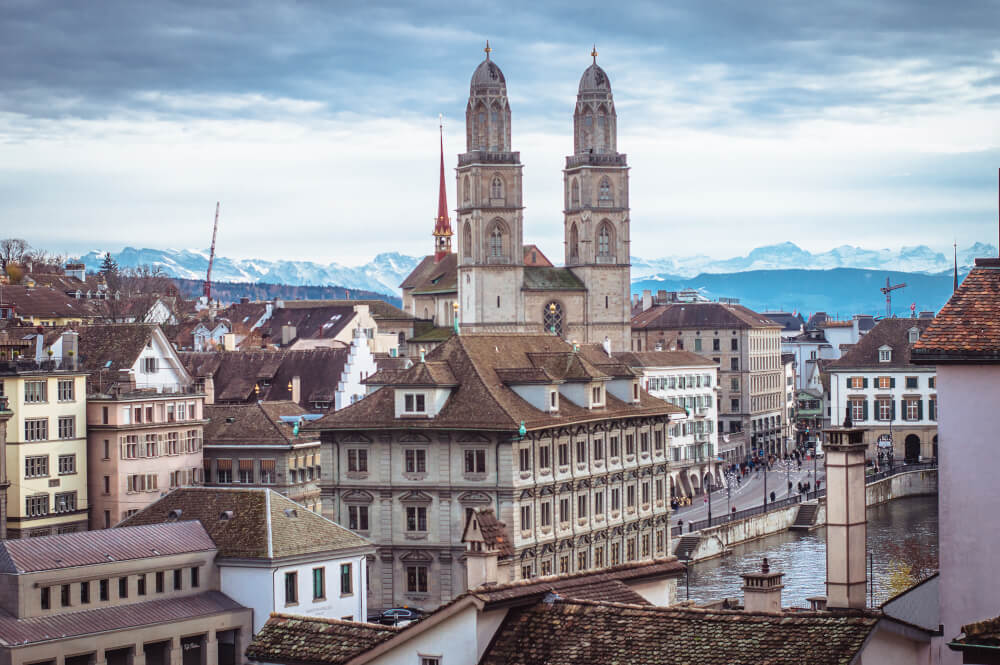
32. Use train station lockers
When travelling around Switzerland, if you’re looking for a stress-free way to explore a city for the day, or if you need a place to dump your bags before check-in or after check-out, remember that most Swiss train stations have a paid locker service that will totally save your life.
With them, you can explore with ease without worrying about lugging your bags around. So helpful!
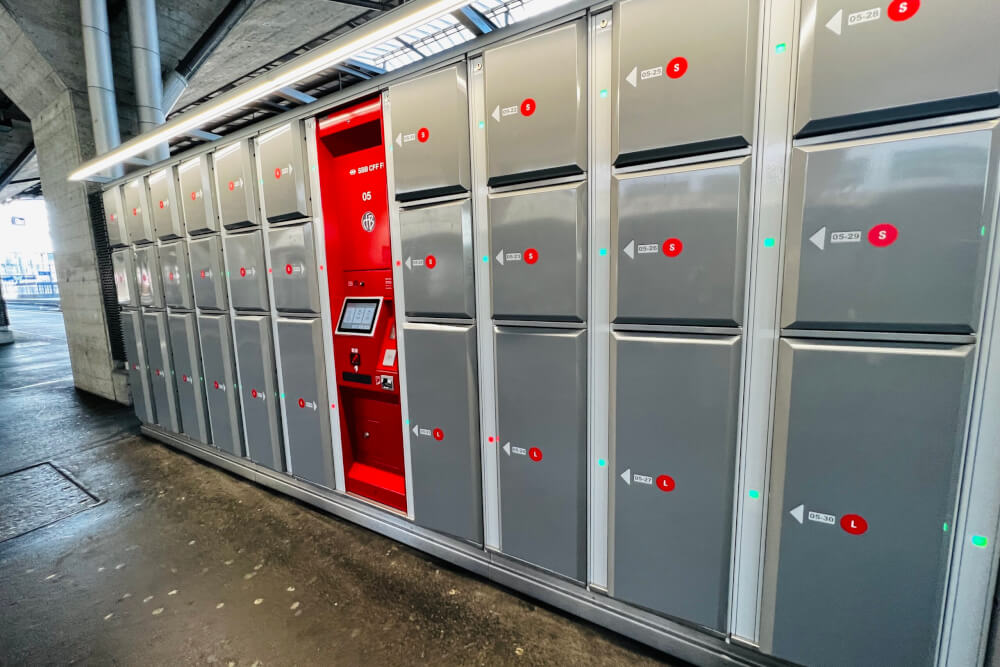
33. Get familiar with the many free things to do in Switzerland
Alright, as we near the end of this list of Swiss travel must-knows, it’s worth mentioning that while the country is (generally) quite expensive to travel, many of the best things to do in Switzerland are free.
Hiking? Free. Swimming in lakes? Free. Leaving a trail of drool as you gape at all the landscapes? Very messy… and very free!
Beyond the obvious however, there are many free attractions in pretty much every major Swiss city, from museums and parks to even a free tour of the Swiss Parliament Building.
So, be sure to google “Free Things to Do + Destination” to uncover a wealth of great freebies.

34. Know what “CH” means
Last but not least, allow me to solve a Switzerland mystery for you so you can strut around during your trip as someone ‘in the know’.
All over Switzerland, you’ll see the letters “CH” everywhere – the currency is CHF, most Swiss website URLS end in .ch…. etc. etc.
So what is that about? Well, as I learned, it comes from the Latin “Confoederatio Helvetica”, AKA the “Helvetic Confederation”.
The Helvetians were a Celtic tribe that occupied Switzerland for hundreds of years up to the 5th century.
Their legacy lived on through the Latin name of Switzerland through the Middle Ages (Helvetia), which is still seen today all over the country in the form of “CH”. Just in case you were curious (and want to flaunt your knowledge in front of your travel companions).
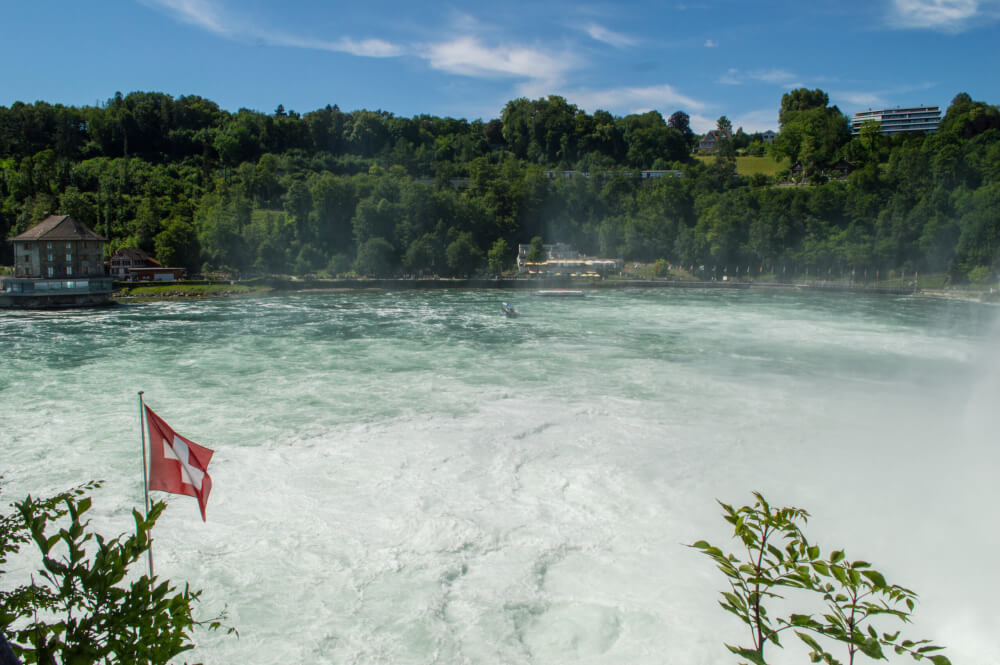
I hope this list of Switzerland travel tips was helpful!
Made it this far? Still reading? Wow! Hi mom 🙂 I admit this was a VERY long list of tips for Switzerland travel, but if you have any more questions, let me know in the comments.
My Go-To Travel Favourites:
🧳 Eagle Creek: My favourite packing cubes
💳 Wise: For FREE travel friendly credit cards
🍯 Airalo: My go-to eSIM
🏨 Booking.com: For searching hotels
📷 Sony A7IV: My (amazing) camera
✈️ Google Flights : For finding flight deals
🌎 WorldNomads: For travel insurance
🎉 GetYourGuide: For booking activities
4 thoughts on “30+ Switzerland Travel Tips for First Timers & Must Knows Before You Go”
I’ve lived here for ten years and still always giggle when I see the Äss Bar.
“The main one for me is that local bus services don’t tend to drop you to more remote hiking destinations or nature spots”
Yes they do. There are endless bus and train stops in the middle of nowhere. Certainly there are some spots you can drive to that would be an hours walk or more from the nearest public transport stop, but it would take years to exhaust all the options that are possible without a car.
“One of the most infuriating parts of travelling in Switzerland is the ubiquitous “Wanderweg” (Hiking Path) sign, which often points in two directions and offers little to no help for those new to these trails”
Those signs are just to indicate which of multiple options the path follows. If you come across a sign like that it means you just somehow stumbled into the middle of the section.
There are frequent signposts at every junction on the network and likely starting place (village, bus stop, car park etc) showing the destinations with the average time to reach them, and useful things like food or transport options – often with a map too in villages/transport stops.
You can also download the map on the SwissTopo app for free and check your position on that if you do somehow start mid-route.
Great article, and a ton of useful info !!!
I’m going there for Christmas & New Years by myself for the first trip across the pond. Flying in and out of Zurich. Starting off in Bern for Christmas, and eventually making my way back to Zurich. Any suggestions for Christmas day in Bern or New Years in Zurich….or elsewhere ?
Thanks again for your awesome article !!!
Hi Craig, sounds like you have a great trip planned! I haven’t spent Christmas in Bern so I’ll point you towards their official tourism page which will have more helpful info: https://www.bern.com/en/christmas/highlights If you didn’t know though, do prepare yourself for the fact that most (if not all) of the Christmas markets will be closed on Christmas Day.
As for New Years in Zurich, again, I haven’t had that experience myself but it looks like they do a cool fireworks display over the lake! Here’s more info on that: https://www.zuerich.com/en/visit/new-years-eve-in-zurich
Hope that helps, and safe travels! 🙂
Leave a Comment Cancel reply
By using this form you agree with the storage and handling of your data by this website. *
- EN - English
- PT - Portuguese
- ES - Spanish
- How it works
- Become a Host
- Download the app
Top Destinations
- United States
- United Kingdom
What type of experience are you looking for?
- Non-Profit School
- Permaculture project
- Eco Village
- Holistic Center
- Guest House
- How Worldpackers works

Learn from the most experienced travelers of the community
Traveling with worldpackers, planning and budgeting for travel, make a living while traveling as a lifestyle, travel with worldpackers.
- Using Worldpackers
- Work exchange
- Social impact
Plan your trip
- Women traveling
- Budget travel
- Solo travel
- Language learning
- Travel tips
- Get inspired
- Digital nomads
- Travel jobs
- Personal development
- Responsible travel
- Connect with nature
Top destinations
- South America
- Central America
- North America
- More destinations
- WP Life WP Life
- Exclusive discounts Discounts
- Europe travel guides
The ultimate Switzerland travel guide: everything you need to know
The ultimate Switzerland travel guide! Including all the necessary traveling to Switzerland tips, such as where to go, when to go, how to get around, what to eat, and how to travel on a budget.
Gabrielle Budget Travel With Gabby
Sep 04, 2023
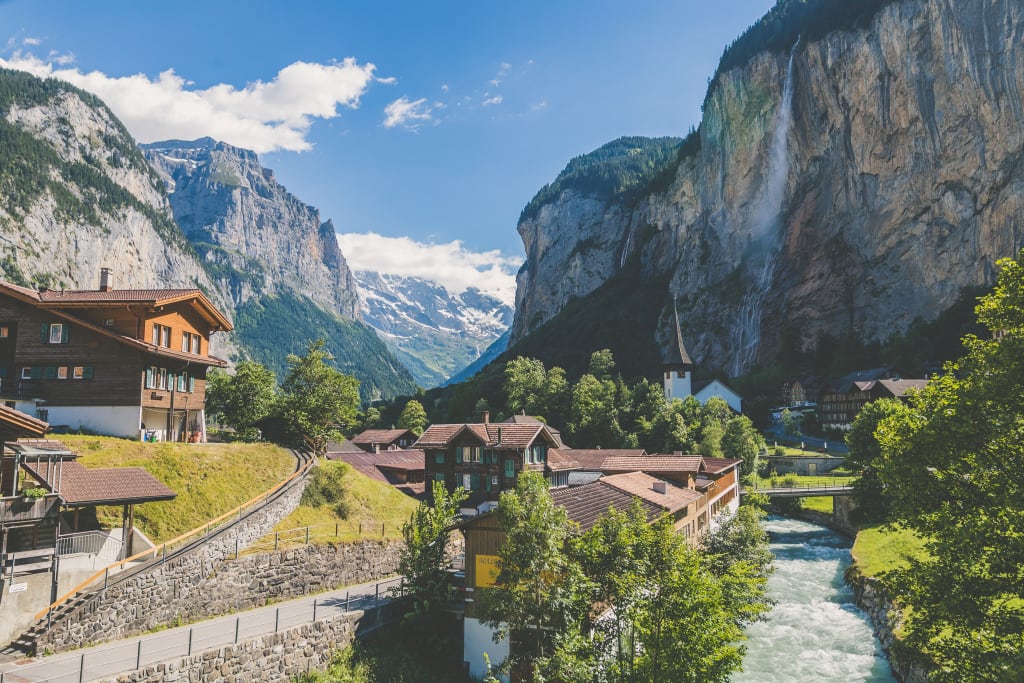
Switzerland is arguably one of the most stunning countries in Europe . With dramatic alpine scenery, heartwarming local food, historic towns, and world-famous cities , Switzerland has something for everyone.
No matter where you go or what you are willing to do in Switzerland, you are bound to find gorgeous natural beauty, delicious chocolate and cheese, and efficient, easy-to-use public transport.
Switzerland is a welcoming country where the locals are happy and healthy. The country has maintained a neutral position in global affairs throughout history. As a result, peace, prosperity, and innovation thrive all throughout the country.
With this Switzerland travel guide, we will give an overview of the country and highlight some things you may need to know before traveling here.
In this Switzerland travel guide you can find:
- When to visit Switzerland
How long to go?
- Where to go in Switzerland?
- Brief summary of Swiss history
- Budget travel recommendations
- Where to stay
- Worldpackers work exchanges in Switzerland
- What to eat
- How to get around
- The best things to do in Switzerland
Now let’s get into all the details about your trip to Switzerland. Read on to learn about general trip planning advice, how to visit the country on a budget , examples of epic Worldpackers work exchanges, and more.
Why visit Switzerland?
Switzerland is a stunning country in Central Europe. It is safe, solo traveler-friendly , and incredibly scenic.
It doesn't matter what kind of travelers you are, you sure can find something that suits you: Adventurous travelers can ski or snowboard in the Alps, or test their limits with adrenaline-pumping activities in Interlaken. Those more interested in art and history can tour the castles, museums, and art galleries in cities like Basel or Geneva.
Public transport is very well-maintained and easy to follow , and many locals speak English as well. So if you ever get lost or have a hard time finding a place you want to go, it's easy to get back on track.
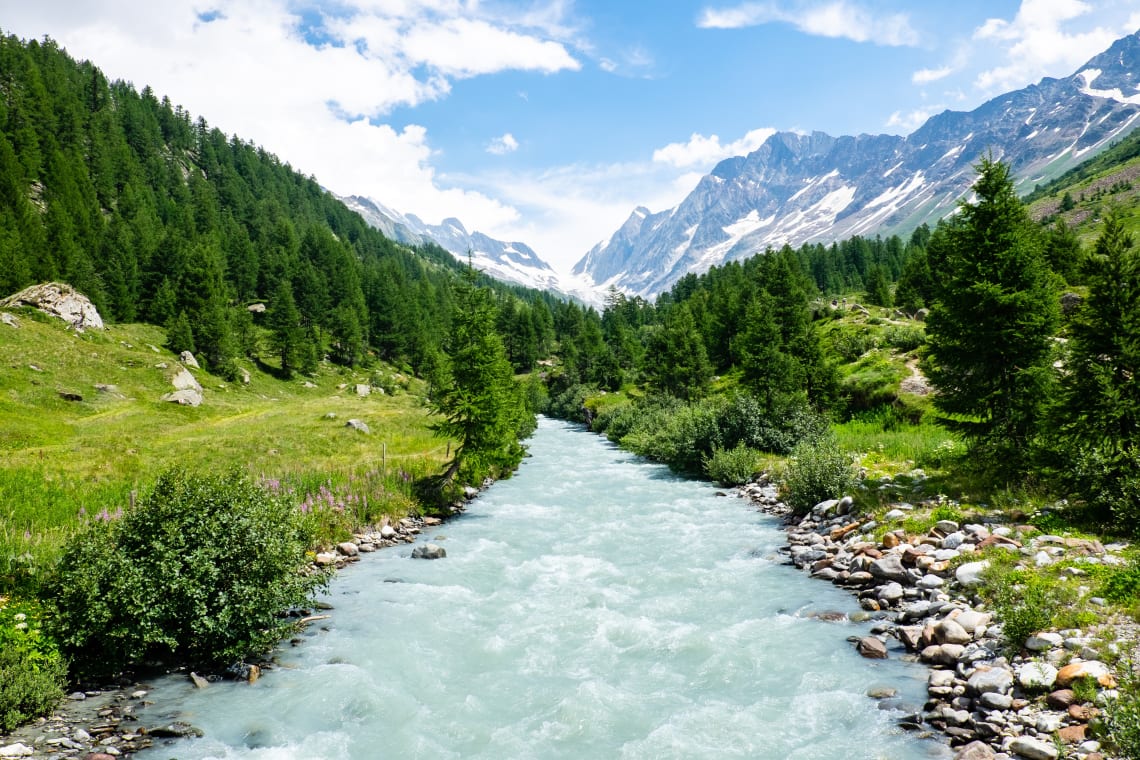
When to go?
There is no bad time to visit Switzerland ! It just depends on what you are looking for during your trip.
Many people flock to Switzerland to ski or snowboard in the Alps. If you’re looking for a holiday full of winter sports, then, of course, winter is the best time to go.
Between November and February, the snow season is at its peak . Skiing and snowboarding are incredible, and all of Switzerland looks like a winter wonderland.
If you’re looking for more outdoorsy activities like hiking, camping, waterfall rappelling, skydiving, whitewater rafting, mountain biking, or just some good old-fashioned sightseeing , you may want warmer weather.
Summer in Switzerland is stunning. The sun shines and the temperatures are warm between June and September . However, this is peak holiday season for Europeans, so many attractions are crowded. Flight prices also tend to go up.
The shoulder seasons of spring (March - May) or Autumn (September - November) are safe bets for visiting Switzerland. The prices of transport, tours, and accommodation drop, but the weather will still be pleasant.
So those wondering, “What is the best month to go to Switzerland?”, decide whether you want a ski holiday, a summer holiday, or a more affordable shoulder season holiday.
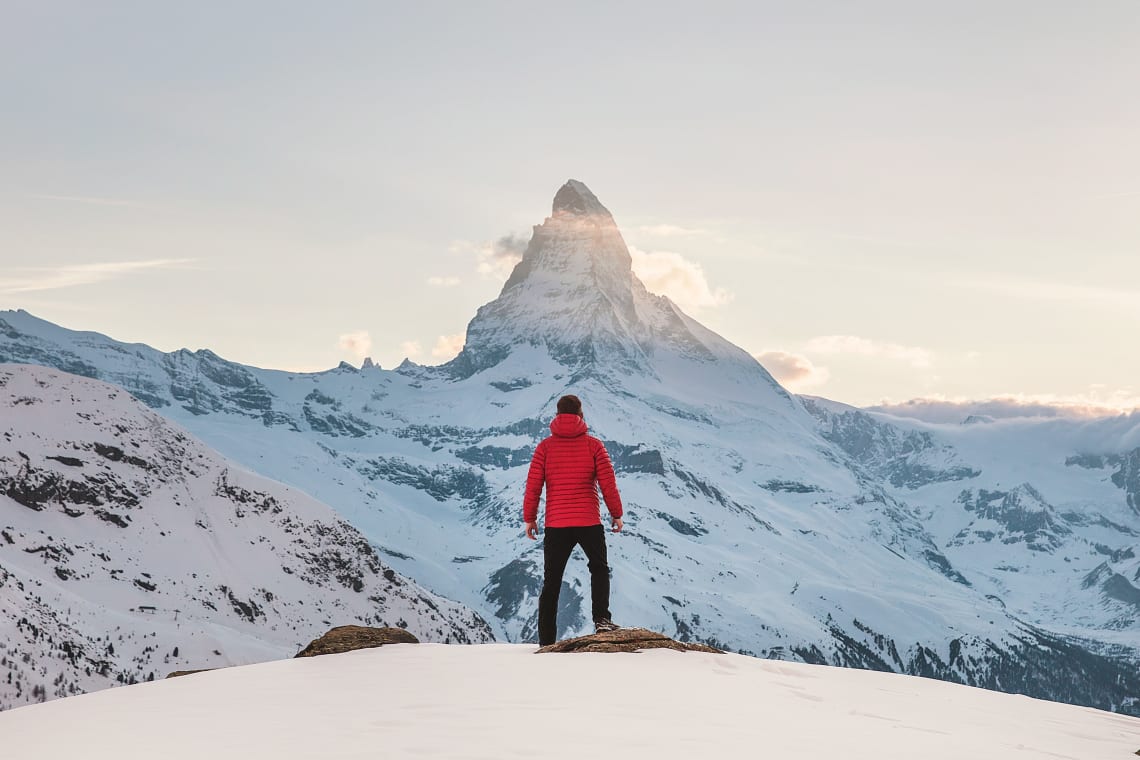
You can never spend enough time exploring Switzerland. As is the case with almost every country in the world, more time is better. The country isn’t that big, but there is so much to see and do, especially if you love adventure activities in nature.
If you only have 3-5 days to spare for your travels, I recommend picking one city to explore, such as Basel, Geneva, or Zurich . Spend a couple of days in the city, with maybe a day trip into nature or a day trip to a smaller local village.
Definitely spend at least one day in the Swiss Alps , which is arguably the most beautiful spot in the country.
Interlaken is a great tourist town to visit for exploring the Alps. From Interlaken, you can ski, snowboard, bike, hike, skydive, and more.
If you have more than a few weeks to spare, you can do a Worldpackers work exchange . This will allow you to work for accommodation, stretch your money out longer, and spend more time enjoying the country. If you have a month or more, you can really get a feel for the landscape and culture of Switzerland!
So to answer the question: “How many days is enough for Switzerland?”, I would say 7 days is ideal to start out with . One week is an amazing time frame for an introduction to Switzerland, as it will give you the chance to explore one or two cities, and see the Alps.
Where to go?
There are so many amazing places to visit in Switzerland. Here is a quick overview of the best places to visit during your trip.
Basel: A city on the Rhine River in northern Switzerland near France and Germany. Often referred to as the Cultural Capital of the country.
Geneva: A city full of history, diplomacy, and natural beauty. Explore Lake Geneva, one of Europe’s oldest Old Towns, and see the headquarters of the UN.
The Matterhorn: An iconic peak of the Swiss Alps that is popular for hiking and sightseeing.
Bern: The capital city of Switzerland. Full of medieval architecture, fountains, gardens, museums, and unique landmarks.
Zurich: This is Switzerland’s largest city. It’s a popular place to fly into and begin your Switzerland travels. It’s great for shopping, museum-hopping, and taking day trips out into small villages and nature.
Switzerland National Park: A stunning area of natural beauty in eastern Switzerland, perfect for hiking and cross-country skiing.
Interlaken: A holiday resort town near the Alps, nestled between the two stunning lakes of Lake Thun and Lake Brienz. The perfect place to base yourself for adventure activities and skiing/snowboarding in the Alps.
Jungfraujoch: Also known as the “Top of Europe”, this is one of the top places to ski and snowboard in the Alps.
Lucerne: A beautiful, peaceful, historic town on a lake. Lucerne is known for music, art, museums, and its Old Town
There are so many more places to see, but those are some of the most popular places for tourists to see during their visit to Switzerland.
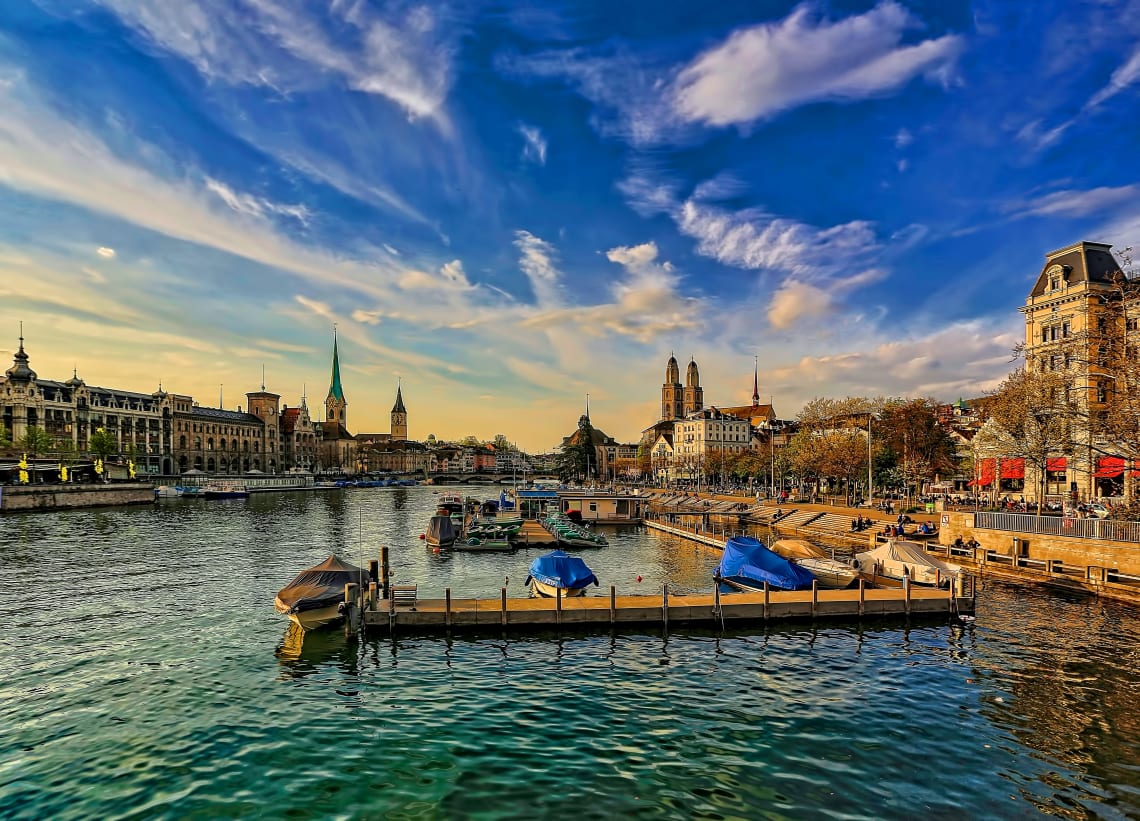
A summary of Swiss history
It is always helpful to know a bit about the local history when you visit any country.
The land that is present-day Switzerland h as been part of numerous different empires, including the Helvetians/Helvetic Celts, various Germanic tribes, and the Roman Empire.
Between the 1200s and the 1500s, the area was united by its ruling families to form the Swiss Confederation. The area remained stable even during the religious upheaval of the Protestant Reformation of the 1500s.
Because Switzerland is sandwiched between so many different cultures, languages, and religions, it quickly maintained a status of neutrality with the Treaty of Westphalia in 1648.
During centuries of conflicts between various religious groups and national groups, Switzerland stayed strong. They created a Federal State in the 1800s, loosely modeled after the US Consitution.
Even through both World Wars in the 1900s, Switzerland remained neutral and relatively unscathed, despite having French, German, and Italian influences within its borders.
The country rapidly developed and industrialized in the 1800s and 1900s, and now it is one of Europe’s most advanced and sophisticated countries . Its citizens have a high quality of life, and the United Nations European Headquarters is even located in Geneva.
The importance of staying neutral in global conflicts and maintaining peace and prosperity is one of the reasons why Switzerland is such an incredible country to visit or to live in.
Budget to travel to Switzerland
Switzerland is a pretty expensive country to visit. But it is possible to travel on a budget if you want.
For those wondering, “How much should I budget for a trip to Switzerland?”, let’s break down some of the average costs. Keep in mind, prices fluctuate based on season and current events. These are just general averages.
Prices will be listed in the local currency, CHF (Swiss Francs) . The conversion of CHF to US Dollars is roughly 1 to 1, so you could read these prices in USD and they would be similar.
Average costs of a:
- Meal in a restaurant: 10-15 CHF for lunch in a cafe or 20-30 CHF for dinner
- Beer in a bar or restaurant: 7 CHF
- Day pass for skiing in the Alps: 60-100 CHF
- Day tour from the city: 70-100 CHF
- Museum ticket: 20 CHF
- Train ride between cities: 20-50 CHF
- Dorm bed in a hostel: 30 CHF per night
- Room in a budget hotel: 80-100 CHF per night
- Room in a luxury hotel: 200 CHF per night or more
So taking all that into account, here is what a daily budget might look like depending on your travel style:
- Daily backpacker budget: 60-90 CHF
- Daily mid-range traveler budget: 150-180 CHF
- Daily luxury traveler budget: 250 CHF or more
Of course, everyone is different and you will have to plan your own travel budget based on your financial situation and your travel style.
Now that you have an idea of what things cost, we can get into more of the specifics about Switzerland travel.

Where to stay in Switzerland
Switzerland has accommodation options for every budget.
There are lots of awesome backpacker hostels around the country for those on a budget. Particularly in the big cities of Geneva, Bern, and Zurich, there are some great options. Touristy areas like Interlaken and Lucerne also have lots of hostels.
Hostels are great places to meet other travelers, especially if you’re traveling alone. The hostels in Switzerland are super modern, with great amenities, safe lockers to store your things, and helpful, friendly staff members.
For those with a bit more money to spend, hotels around Switzerland are plentiful. There are also plenty of Airbnbs, Bed and Breakfasts, and Guesthouses for those who want a more cozy, intimate experience .
Those looking to save even more money while traveling in Switzerland can consider a work exchange.
Worldpackers Work Exchanges in Switzerland
Volunteering with Worldpackers is an excellent way to spend your time in Switzerland.
Since you are working in exchange for accommodation, you can save money and get to stay in the country for free! This is huge because Switzerland is not a cheap country to visit.
Not only will you save money on accommodation, but you will also get the opportunity to live and work alongside locals and other travelers. This is an amazing way to meet people, learn new things, and immerse yourself in the culture .
Here are some examples of work exchanges you can do during your stay in Switzerland:
- Help at an eco-village
- Volunteer at a co-living space in the mountains
- Help with marketing and sales in Zurich
- Help with renovation and carpentry
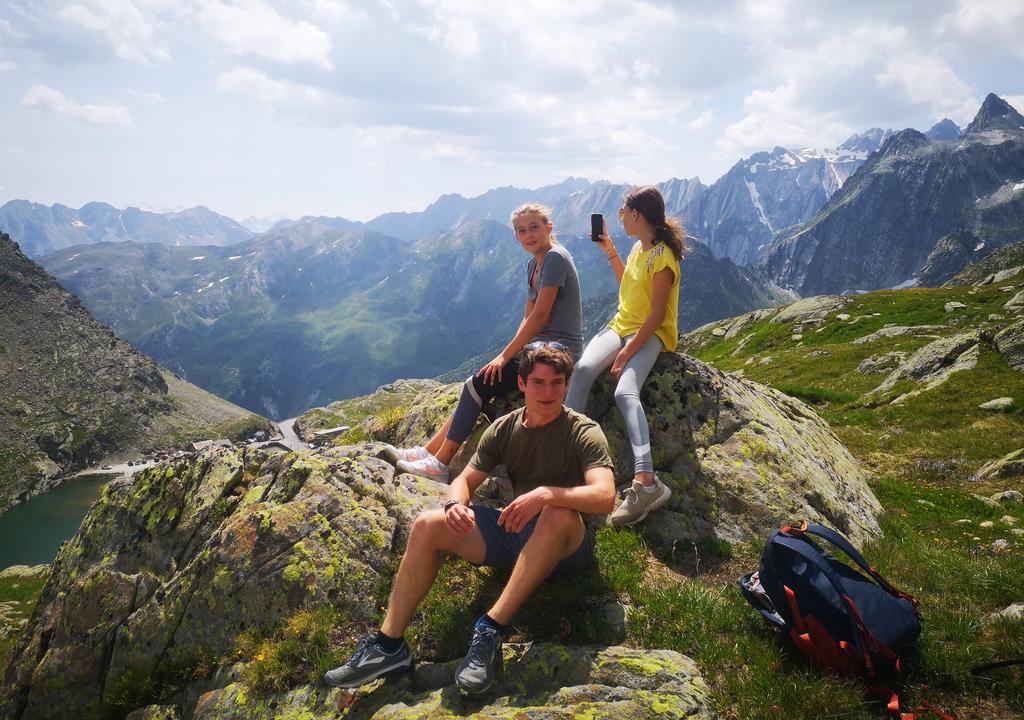
What to eat in Switzerland
Food in Switzerland is heavy and delicious. The most famous foods to try in Switzerland are definitely cheese and chocolate!
Swiss chocolate is world-famous , with Lindt and Toblerone being two of the most well-known brands. With a higher milk content than most other chocolates, Swiss Chocolate is incredibly rich and creamy. There are chocolate factories and chocolate shops all over the country, so definitely indulge!
Swiss cheese is a special type of alpine cheese that has lower acidity and lower salt content than other cheeses. Famous types of Swiss cheese include Emmenthal and Gruyère . You can buy them in any food store in Switzerland. Cheese is served in many forms in Switzerland, the most popular being fondue. Cheese fondue is something you have to try when you travel to Switzerland!
This big pot of melted cheese is served with bread and veggies that you can dip into the cheese. There are amazing restaurants all over the country where you can try traditional cheese fondue.
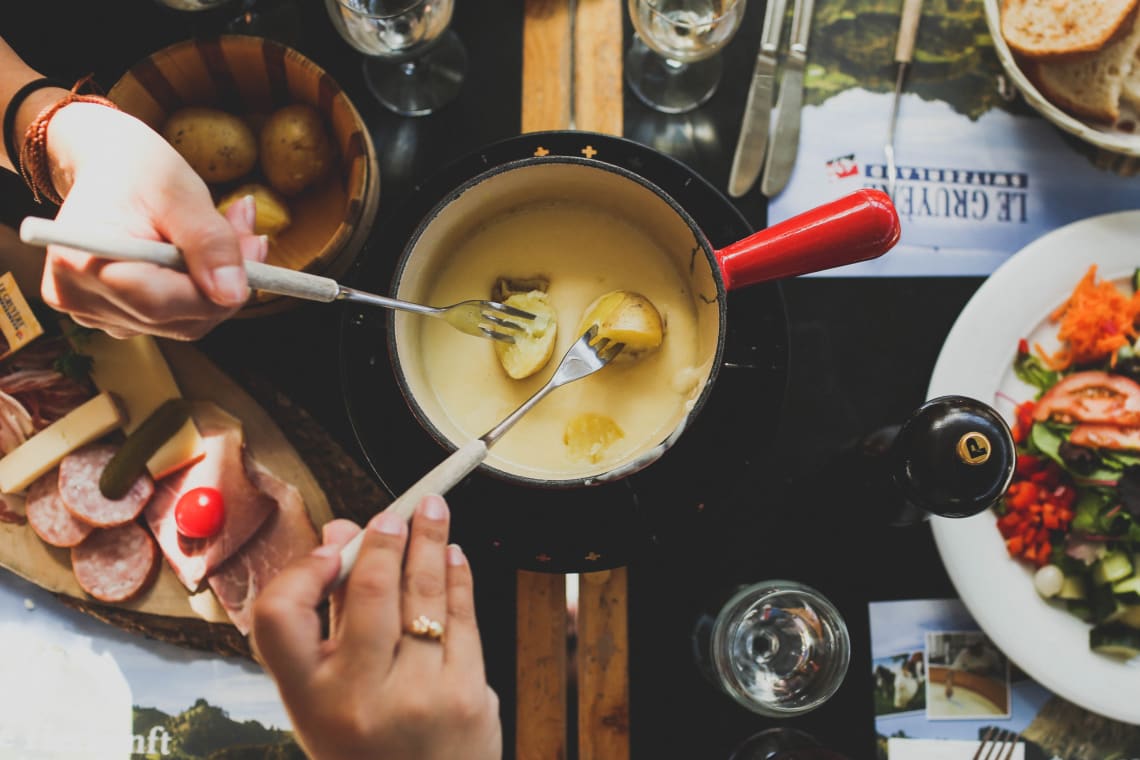
Besides cheese and chocolate, other must-try dishes in Switzerland include:
- Papet Vaudois: a warm dish of stewed leeks and potatoes with sausage on top
- Zopf bread: braided bread often served with jam and fruits
- Tartiflette: a baked dish of thinly sliced potatoes, bacon, onions, and chees
- Leckerli: sweet, sticky biscuits with hazelnuts
- Älpermagronen: A dish similar to macaroni and cheese with onions and potatoes
How to get around in Switzerland?
If you’re wondering how to travel in Switzerland, there are many ways to get around!
Public transport is plentiful here, and all the big cities and many smaller towns are well connected by train and bus .
Flights into Switzerland are easy and cheap from elsewhere in Europe . Zurich and Geneva are travel hubs, as are Bern and Basel. You can easily get a flight here when arriving in Switzerland.
You can take domestic flights within the country , though they are expensive.
Switzerland isn’t that big, so the best way to travel to different cities within the country is by train or bus . For example, a train from Geneva in the west of the country to Zurich in the north is only about 3 hours.
Trains are the fastest and most efficient way to travel between cities . Buses are a bit slower and cheaper. Buses are preferred for shorter journeys between smaller towns.
Renting a car is another option. The roads are easy to drive and well-maintained, though renting a car is still more expensive than public transport.
So for getting around Switzerland, you should be all taken care of by train or bus!

Best things to do in Switzerland
Here are some of the top activities to add to your Switzerland itinerary!
Ski or snowboard in the Alps
If you love to ski or snowboard, you’ll be in heaven in the Swiss Alps! Jungfraujoch is one of the top places to hit the slopes. Head to the town of Grindelwald and then take the train up from there.
Explore Geneva
Geneva is one of Switzerland’s most spectacular cities. Explore the interesting museums, walk through the Old Town, and enjoy the views on the shores of Lake Geneva. Book a boat tour of Lake Geneva for more incredible sightseeing.
Visit Chillon Castle
This gorgeous castle on the shores of Lake Geneva is one of the best castles to see in Switzerland . Tour the massive castle grounds and admire the lakeside views.
Kayak on Lake Brienz
Just next to Interlaken is Lake Brienz, one of the two alpine mountain lakes that give Interlaken its name (“Between The Lakes”). This turquoise-blue lake is perfect for kayaking!
See Oberhofen Castle
Located on the shores of Lake Thun next to Interlaken, the amazing medieval Oberhofen Castle is one of the most photographed sights in Switzerland .
Enjoy the views in Lucerne
This lakeside city is one of the most scenic places in the country. Enjoy the art, museums, architecture, and lakefront promenades . If you can, try to attend the Lucerne Festival, one of the world’s top international classical music festivals.
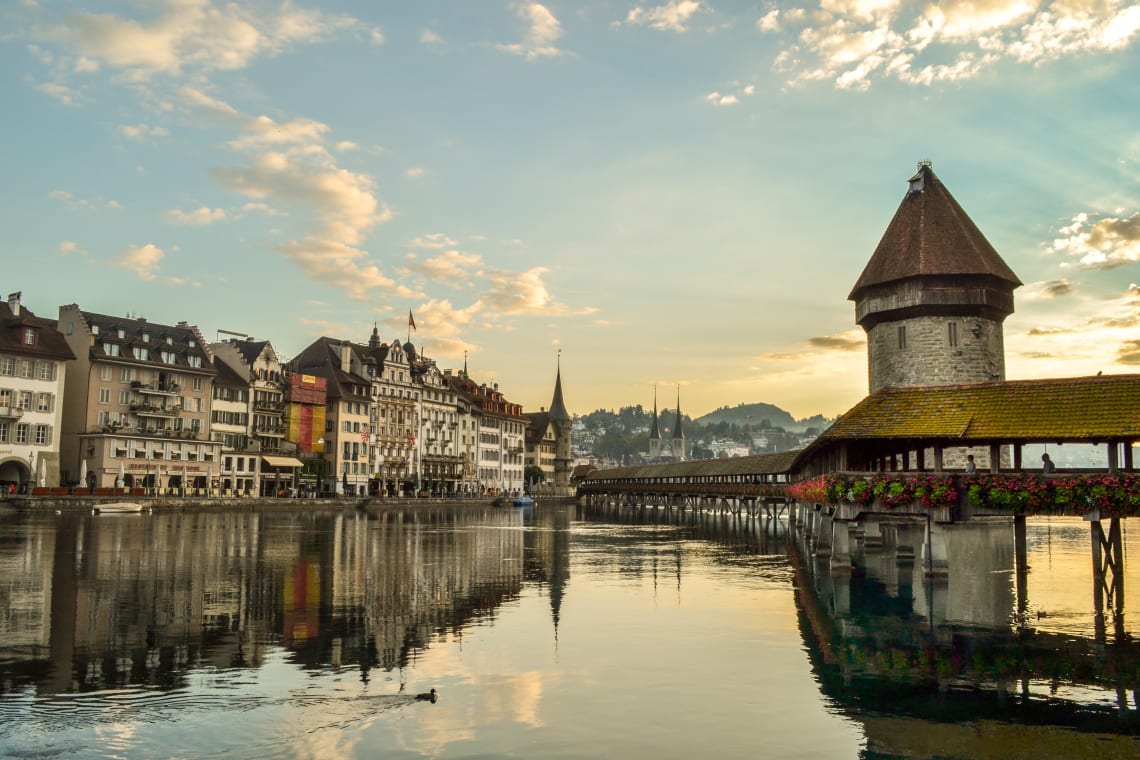
Go wine tasting
Switzerland has some amazing wineries scattered around the country where you can tour vineyards and taste local wine. Geneva, Vaud, The Three Lakes Wine, Valais, and Ticino are some of the country’s best wine regions.
See Rhine Falls
This is probably Switzerland’s most famous waterfall . Head to the nearby town of Schaffhausen and walk to the falls from there, or book a boat tour and get up close.
Hike Mount Pilatus
Near Lucerne is Mount Pilatus, a beautiful mountain where you can hit the trails and hike up to incredible viewpoints over the Alps . You can also take the cable car up if you’re not up for hiking.
Go on a scenic train ride
Europe has an extensive train network, and you can see some of the best scenery by train. Switzerland has some amazing train journeys where you can see the best of the landscape and countryside . The Bernina Express is one of the most popular train journeys, as is the train ride up to Jungfrau Railway.
Hike up to the Matterhorn
The massive, jagged peak of the Matterhorn is one of the most epic hikes you can do in Europe . You can also take the cable car up.
Try adventure sports in Interlaken
Interlaken is the Adventure Capital of the country, and there are so many fun ways to get the adrenaline pumping here. Go bungee jumping, sky diving, canyoning, waterfall rappelling, whitewater rafting, paragliding , and more.

Thanks for reading this Switzerland travel guide!
Hopefully, we’ve answered some of your top questions and helped you figure out how to travel and what to do in Switzerland.
Whether you’re on a backpacker budget or willing to fully indulge, there is so much beauty, culture, and history to be discovered in Switzerland!
Want to learn more about planning your trip? By subscribing to the WP pack plan you have unlimited access to +120 courses at Worldpackers Academy, the travel school made by travelers!
Join the community!
Create a free Worldpackers account to discover volunteer experiences perfect for you and get access to exclusive travel discounts!
Gabrielle Boucher
Budget Travel With Gabby
Hello! I am a 25 year old from the USA with a knack for traveling on a budget. I fell in love with traveling while studying in Europe, and that love grew even more when I started volunteering abroad in South America. Since then, I've worked odd jobs and volunteered all over the globe while cultivating passions for hiking, wildlife photography, food, wine, animals, permaculture, and more!
Be part of the Worldpackers Community
Already have an account, are you a host, leave your comment here.
Write here your questions and greetings to the author
Apr 21, 2023
Jun 05, 2023
More about this topic

The budget-friendly travel guide to Malta: how to get around and the best places to stay
The 10 most beautiful spots you cannot miss in serbia.
The best things to do in Montenegro: Backpacking the Balkans
How do Worldpackers trips work?
As a member, you can contact as many hosts and travel safely as many times as you want.
Choose your plan to travel with Worldpackers as many times as you like.
Complete your profile, watch the video lessons in the Academy, and earn certificates to stand out to hosts.
Apply to as many positions as you like, and get in contact with our verified hosts.
If a host thinks you’re a good fit for their position, they’ll pre-approve you.
Get your documents and tickets ready for your volunteer trip.
Confirm your trip to enjoy all of the safety of Worldpackers.
Have a transformative experience and make a positive impact on the world.
If anything doesn’t go as planned with a host, count on the WP Safeguard and our highly responsive support team!
After volunteering, you and your host exchange reviews.
With positive reviews, you’ll stand out to hosts and get even more benefits.

- Switzerland
- The Netherlands
- National Parks
- Affording Travel
- Photography
- Responsible Travel
- Worldschool
- Wanderlust Guides
- Travel Planning
- Work with Us
Europe , Switzerland , Travel
The perfect switzerland itinerary 7 days – 10 days.
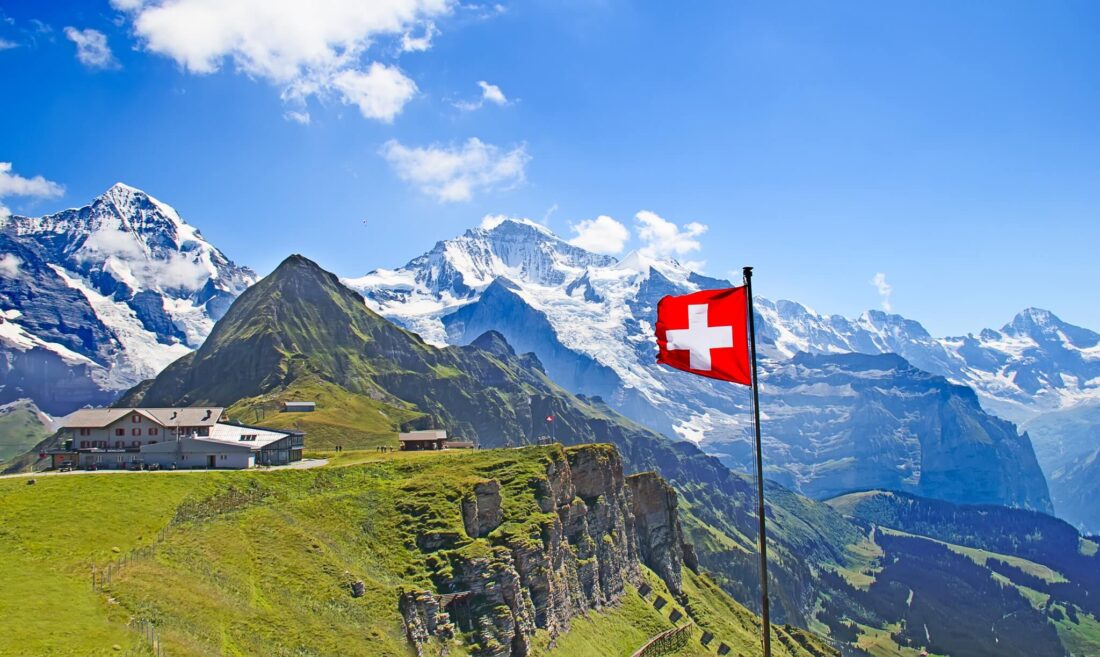
If you’re looking to spend 7 days in Switzerland, or even 10, this Switzerland Itinerary will help you plan the perfect trip for your first time. With day-by-day itineraries and detailed activity suggestions, you’ll be on your way to enjoying one of the most beautiful places on Earth!
Switzerland itinerary- the best way to spend one week in switzerland + 3 bonus days.
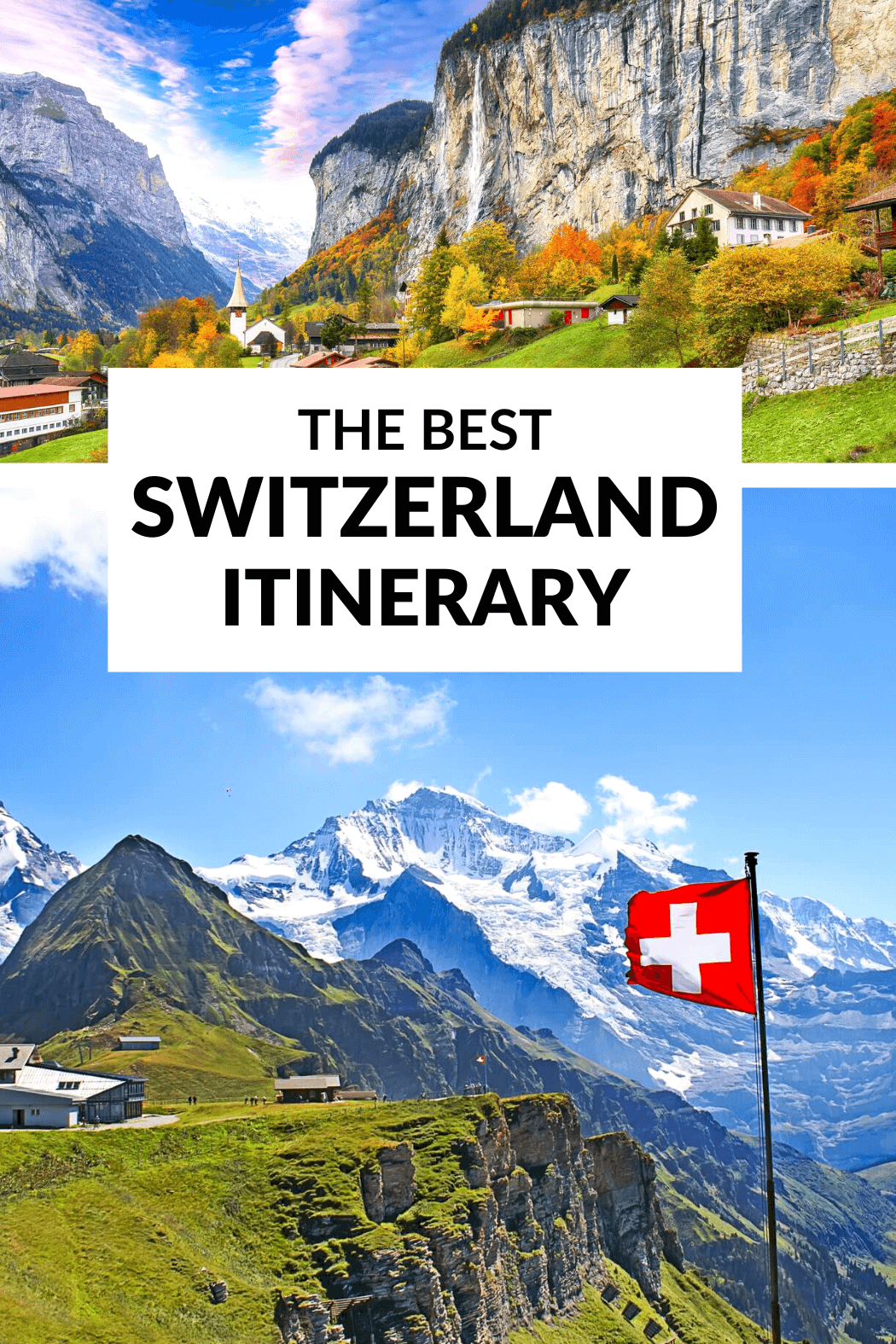
From its snow-capped mountains and glistening lakes to its quaint villages and world-class cities, Switzerland is a country that has it all. And whether you’re looking for an action-packed adventure or a relaxing vacation, you’ll find plenty of things to do in Switzerland that fit the bill.
We had the opportunity to live in Switzerland for a bit while we had some work there. We lived in Basel and loved our time there. I’ve since been back several times to visit friends and to visit this gorgeous country. I recently went back a few months ago and wanted to share my itinerary to help you make the best of your time, whether you have 3 days in Switzerland or 10 days in Switzerland.
If you’re spending one week in Switzerland, you’ll have enough to see the highlights, but I’ve added on a few extra days in case you have more time for a few extras on your vacation to Switzerland. I always recommend prioritizing the 7 day Switzerland itinerary, and then moving on to the extras only if you have time.
- Don’t have time to read a bunch of reviews and blog posts? Here are our top picks for visiting Switzerland:
- Wanderlust Switzerland Guide
Need a quick day-by-day, open-and-go itinerary for Switzerland? Get my guide and let me do the work for you!
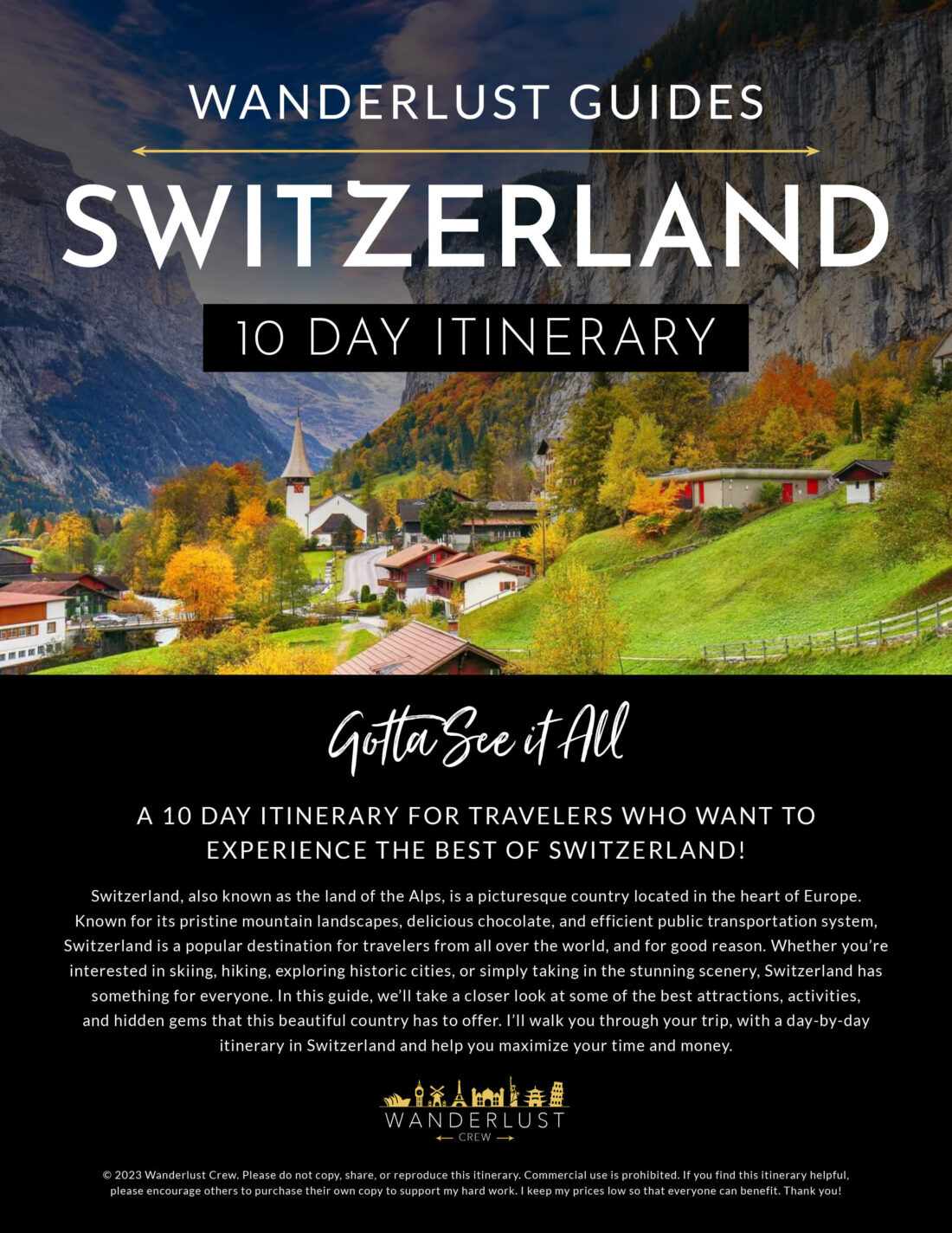
- Our favorite Hotels in Switzerland
- Zurich : Baur Au Lac
- Lucerne : Burgenstock Alpine Hotel & Spa
- Zermatt: The Omnia
- Interlaken : Victoria Jungfrau Grand Hotel
- Bern : Hotel Schweiserhof
- Geneva : Swiss Luxury Apartments
- Montreaux : Eurotel Montreaux
Getting Around Switzerland
- Unlimited Train Rides : Swiss Pass
- Renting a Car : Cheap Rental Cars or Expedia Cars
- Our favorite activities and tours in Switzerland
- Paragliding
- Lindt Chocolate Tour
- Lake Lucerne Cruise
Here's a Short Cut
Map of Switzerland
How do i get around switzerland, where do i purchase my swiss travel pass, swiss half fare card, where should i stay in switzerland, what languages are spoken in switzerland, do i need to know germany before i visit switzerland, what is the best time to visit switzerland, is it safe to travel to switzerland, how many days are enough for my switzerland itinerary – 7 days or more, what apps should i download for visiting switzerland, what currency is used in switzerland, how much is a trip to switzerland, is the tap water safe to drink in switzerland, what should i pack for my vacation to switzerland, some things to do in zurich, some things to do in lucerne, some things to do in interlaken, some things to do in lake thun, some things to do in the lauterbrunnen valley, some things to do in zermatt, some things to do in bern switzerland, some things to do in gruyeres, some things to do in montreux, some things to do in geneva, to sum this all up, here is my recommended switzerland trip itinerary:.
This interactive map will help you get around during your Switzerland itinerary. It’s color-coded by each day, so you can easily locate where you want to go and navigate there. Feel free to copy this map and download it offline so you can use it while you travel in Switzerland. Use the arrow on the top left of the map to pull up the key and see that each day is a different layer. It’s a very handy map once you figure out how to use it.
Things to Know About Visiting Switzerland
There are many ways to get around Switzerland, the two main ways are using public transportation and renting a car. I’ll highlight the best way to get to each destination below. This Switzerland itinerary can easily be used with either a car or by train.
If you choose to get a rental car in Switzerland, I always recommend using this site to compare rates and cars.
If you’re renting a car, there are two companies we prefer to use: Rental Cars and Expedia Cars. We have had no issues with them and have been able to find the best prices available.
If you choose to use public transportation in Switzerland, I recommend getting the Swiss Travel Pass to maximize your time and save you money . The Swiss Travel Pass offers unlimited train rides on most lines, free or discounted gondola rides, and discounts to many attractions though Switzerland.
I find that it’s especially worth buying the Swiss Travel Pass if you are planning to visit Zermatt because the expensive Gornergratt train is quite expensive, and it’s half off with the pass. If you’re comfortable riding trains and buses, I think it’s the best way to travel in Switzerland.
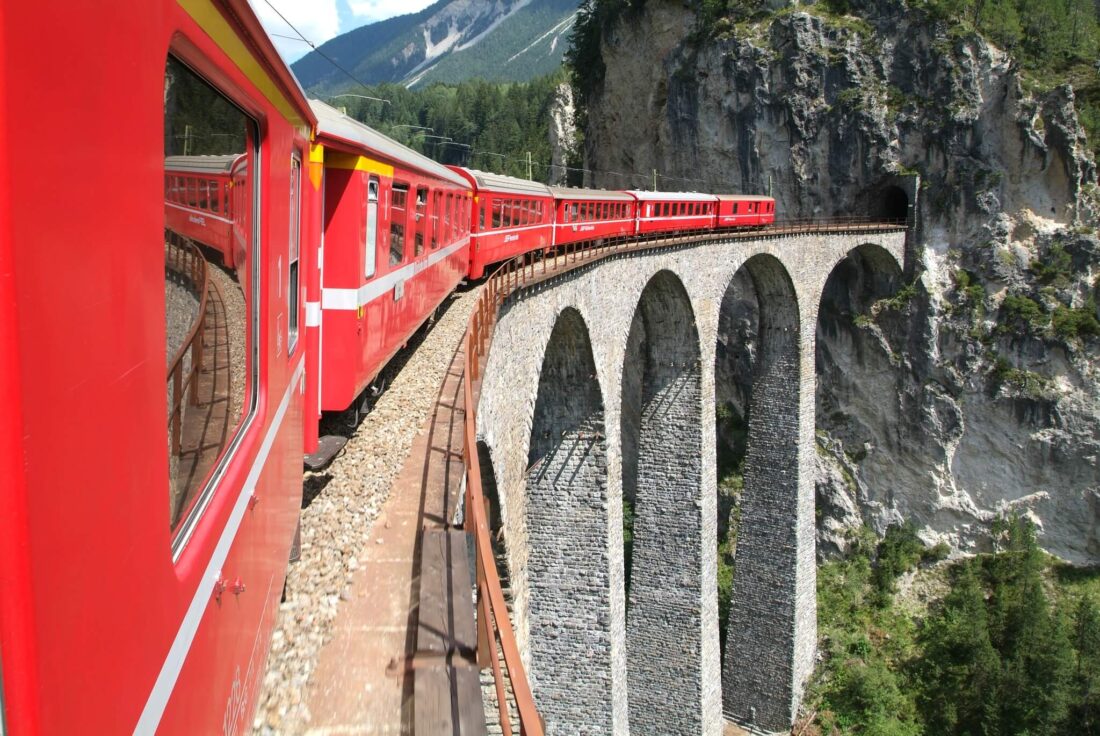
You can purchase your Swiss Travel Pass here . Just select the correct number of days for your Switzerland itinerary and check out. The pass begins on your selected date and runs continuously. The Swiss Travel Pass comes in. 3, 4, 6, 8, and 15 day increments.
If you’re unsure of your dates or the amount of time your Switzerland itinerary will be, it might be a good idea to purchase a Swiss Half Fare Card instead. This pass is good for one month and will offer 50% off most trains. There seems to be less of a discount on shorter journeys. I prefer to purchase the more expensive Swiss Travel Pass just for ease of use while I am in the country. But the Swiss Half Fare Card may be a better option if you are only planning on taking several long and expensive rail journeys. You can purchase the Swiss Half Fare Card here .
While Switzerland is a small country with world-famous efficient public transportation, there can be some destinations that take longer to get to. For this reason, I recommend staying in a few different places during your trip. You should adjust this to your own needs and time restraints, but I recommend staying in these destinations in this Switzerland itinerary:
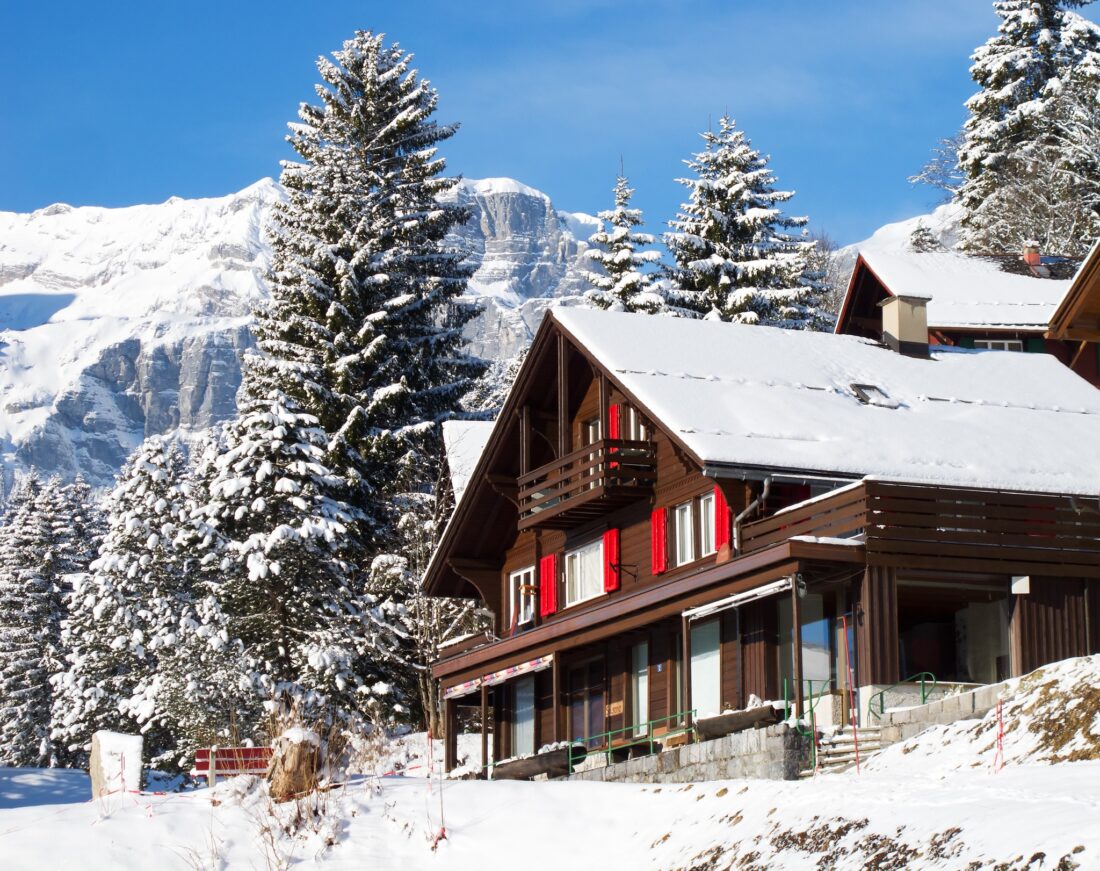
- 1 night – Zurich (either at the beginning or the end of your trip depending on flight times)
- 2 nights – Interlaken
- 2 nights – Lauterbrunnen
- 2 nights – Zermatt
- If continuing for 10 days in Switzerland:
- 3 nights – Bern with day trips to Gruyere, Montreux, and Geneva
Our Hotel & Chalet Recommendations: Zurich Hotels here Interlaken Hotels here Lauterbrunnen Chalets here Zermatt Hotels here Bern Hotels here
Believe it or not, there are actually FOUR official languages in Switzerland: German, French, Italian, and Romansh. Each of these is spoken in different regions of the country.
- Swiss German is the most widely spoken language, spoken by 63% of the population, and is spoken in the northern, eastern, and central parts of Switzerland. All official communications and publications are conducted and printed in German, however, there are also many different Swiss German dialects. Swiss German is a collection of Alemannic dialects no longer spoken in Germany or Austria, with French expressions sprinkled in. The Swiss German speakers take pride in the diversity of their dialects.
- Swiss French is the second most spoken language in Switzerland and is spoken mostly in the western cantons of Geneva, Vaud, Neuchâtel, and Jura. This is generally standard French that is also spoken in France.
- Swiss Italian is spoken in the canton of Ticino and the southern part of Graubünden, on the south bordering Italy. Funny enough, you’ll find German speakers in the northern regions of Italy. Most locals will speak both German and Italian, as this region of Italy was once part of Austria. Swiss Italian is only spoken by about 350,000 people in Switzerland.
- Romansh is the final official language of Switzerland and is the least spoken language with only 37,000 people. When the Romans conquered the province of Rhaetia, the language combined with the native people creating Rumantsch .
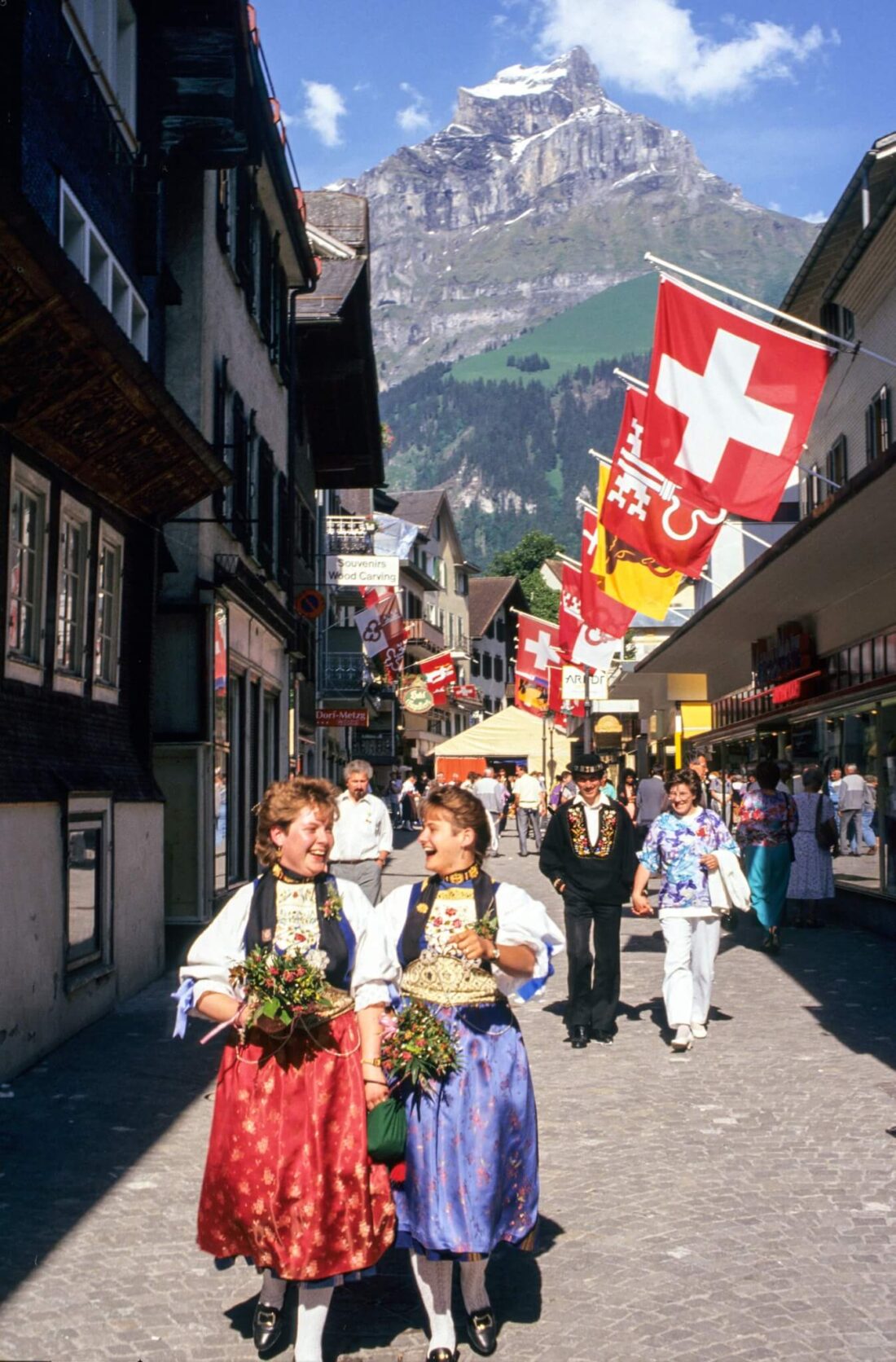
Learning German before you visit Switzerland isn’t a necessity as many people speak English, but it is definitely a good idea to learn a few German, and even French, phrases before you go. This should be plenty to help you get by during your time in Switzerland. You may not even need them, but it’s good to be prepared.
- Yes/No : Ja/Nein Pronunciation: Yah/Nine
- Hello: Hallo Pronunciation: a-low
- Excuse Me : Entschuldigung Pronunciation: ehnt-SHOOL-di-gung
- Good Morning: Guten Morgen Pronunciation: GOO-ten MOR-gen
- Good Evening: Guten Abend Pronunciation: GOO-ten aa-behnt
- Goodnight : Gute Nacht Pronunciation: GOO-teh nahkht
- Goodbye : Auf Wiedersehen Pronunciation: all-veet-a-zen
- See You Later: Bis Spotter Pronunciation: BIS Sh-put-er
- Thank You: Danke Pronunciation: dong-ka
- Thank You Very Much: Merci Vilmal Pronunciation: MEL-see VIL-mall
- You’re Welcome: Bitte Pronunciation: BI-teh
- Nice to Meet You: Freut Mich Pronunciation: FROYT mikh
- What’s Your Name : Wie Heisst du? Pronunciation: vee HICE-en zee?
- My Name Is : Ich Heisse Pronunciation: Ikh HICE-eh
- Do You Speak English? : Sprechen Sie Englisch? Pronunciation: SHPREHK-en zee EHN-glish?
- Welcome: Willkommen Pronunciation: Wheel-come
- Sorry: Tut mir leid Pronunciation: TOOT meer LIGHT
- I am Sorry, I Don’t Speak German : Entschuldigung, ich Spreche Kein Deutsch Pronunciation: Ent-shu-il-de-gung, eek sprek-a-nee doy-ch
- I Do Not Understand : Ich Verstehe Nicht Pronunciation: Ikh fehr-STAY-eh nikht
- Where is the Bathroom? : wo ist die toilette, bitte? Pronunciation: VOOH ist dee twah-LET-uh, BIT-tuh?
- How Much Is That? : Was kostet das? Pronunciation: vahss KOSS-tet dahss?
There’s really no correct answer to the question. There are incredible things to do in Switzerland during every season of the year. I personally always prefer to travel when there are less crowds and when the weather is not too hot and not too cold. This usually means taking a Switzerland trip during the shoulder season in April-May or September-October.
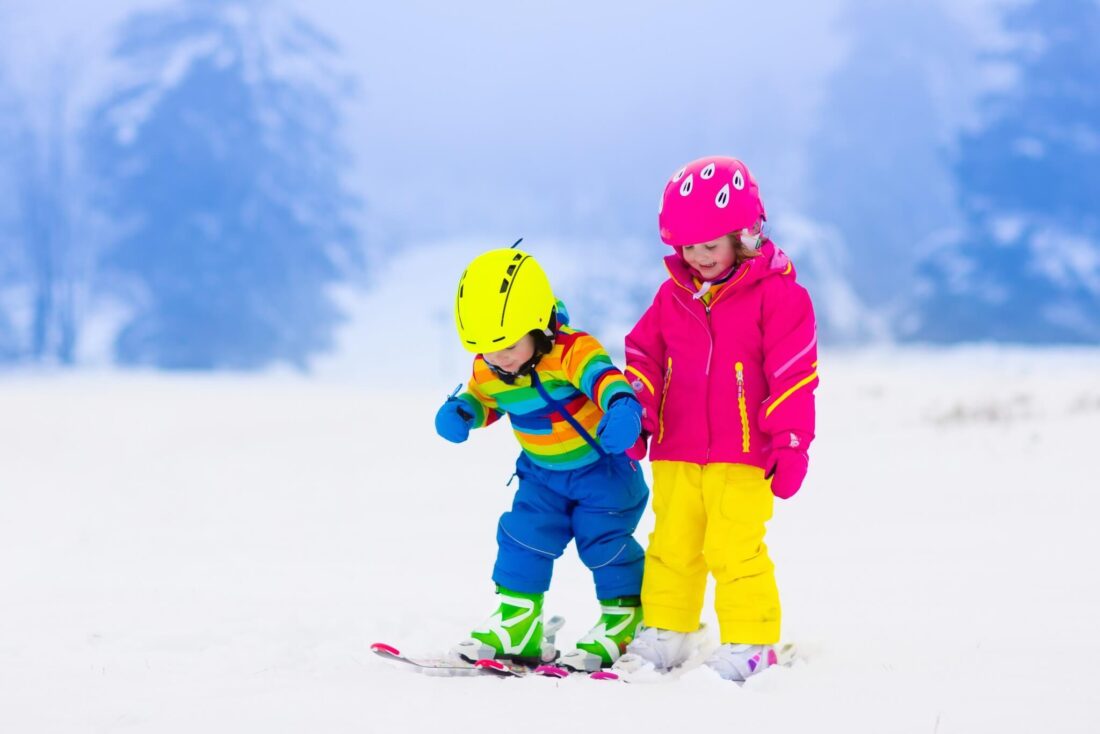
In June, July, and August you will find the busiest days in Switzerland. With a winter Switzerland itinerary, you will definitely have snow, especially in the Swiss Alps , and the weather in Switzerland in the summer is generally warm and pleasant, but still can be cold and rainy.
- Best time to visit to avoid crowds (shoulder season) : April – June, September – October
- High Season : July – August. The high season is July to August when the weather in Switzerland is the warmest it is in the entire year, but you will have to face a lot of tourists, and over 50% increase in prices.
- Low Season : October – March
- Ski Season : December – March
- When are the Seasons in Switzerland : April – June (spring), July – August (summer), September – October (fall), November – March (winter)
- Best Time to Ski in Switzerland: Winter (between December and March) is the low season in most parts of Switzerland, as there will be intense snowstorms. However, this is the best season for those who want to ski in Switzerland.
According to US News , Switzerland has been rated #1 in safety! And according to Travel Safe Abroad , it was given a Safety Index of 89, So I’d say that’s a pretty good sign. Every time I’ve visited Switzerland, I’ve felt completely safe, but as always, be on guard when you travel, protect your wallet, and don’t be an idiot when you travel in Switzerland.
I will say that your risk of being injured doing outdoor activities is most likely higher if you’re not used to being active outdoors at home. Just be careful and know your limits. Always register with STEP (Smart Traveler Enrollment Program) in case anything happens.
For this reason, also, I always recommend that you purchase travel insurance before you travel. Especially these days, you just never know. And better safe than sorry.
Your Switzerland itinerary will depend on the number of days you are able to travel, but I recommend spending at least 7 days in Switzerland if possible, although 10 days is ideal. A one week Switzerland itinerary will allow you to see most of the destinations on this list, so if you’re able to stay longer, keep going until day 10.
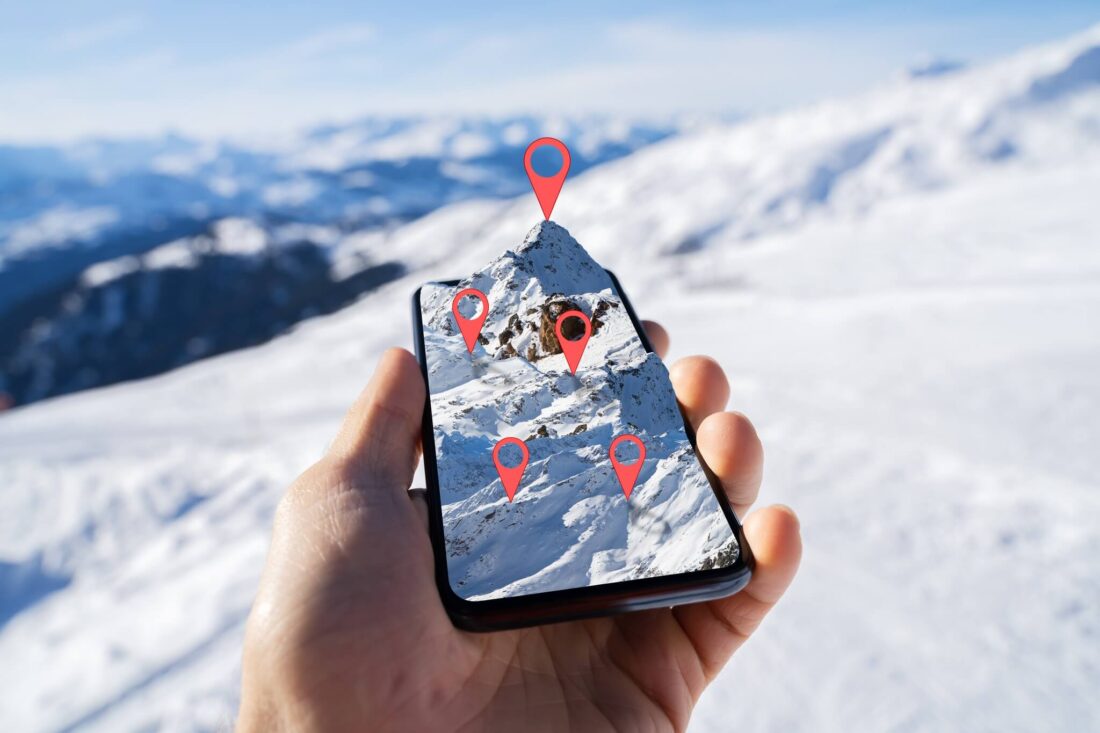
- SBB App – Public transportation in Switzerland is shockingly punctual, clean, fast, and efficient. The SBB app will tell you when and where to get your trains and buses to take you where you want to go. This is the most important app you’ll need in Switzerland if you’re only traveling by public transportation.
- Switzerland Mobility App – If you’re looking for great hikes in Switzerland, you’ll want to download the Switzerland Mobility App to help you find the best trails and not get lost.
- Duo Lingo – If you want to learn a bit of German or French before visiting Switzerland, Duo Lingo is a fun and free app to help you learn.
- Google Translate – While most people in Switzerland will be able to communicate with you in at least a little bit of English, it’s always goo to have the Google translate app, especially for reading signs or menus that are not in English.
Switzerland uses the Swiss Franc (CHF). The exchange rate right now is $1.05 USD to 1 CHF.
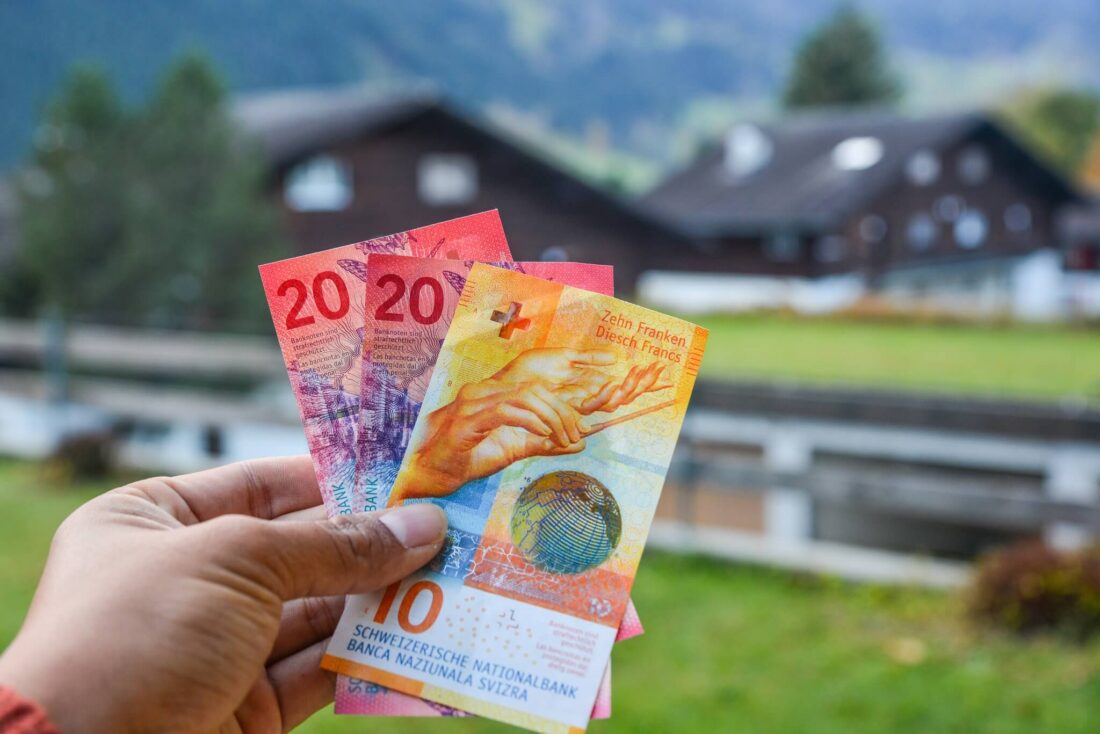
This depends on many factors like where you’re traveling from, when you’re going, how many people are in your party, what kind of hotels you choose, what activities you want to do, whether you rent a car or take public transportation, etc. It’s almost impossible to estimate how much this Switzerland itinerary will cost. I always say to plan around $3,000 USD per person for any trip to Switzerland.
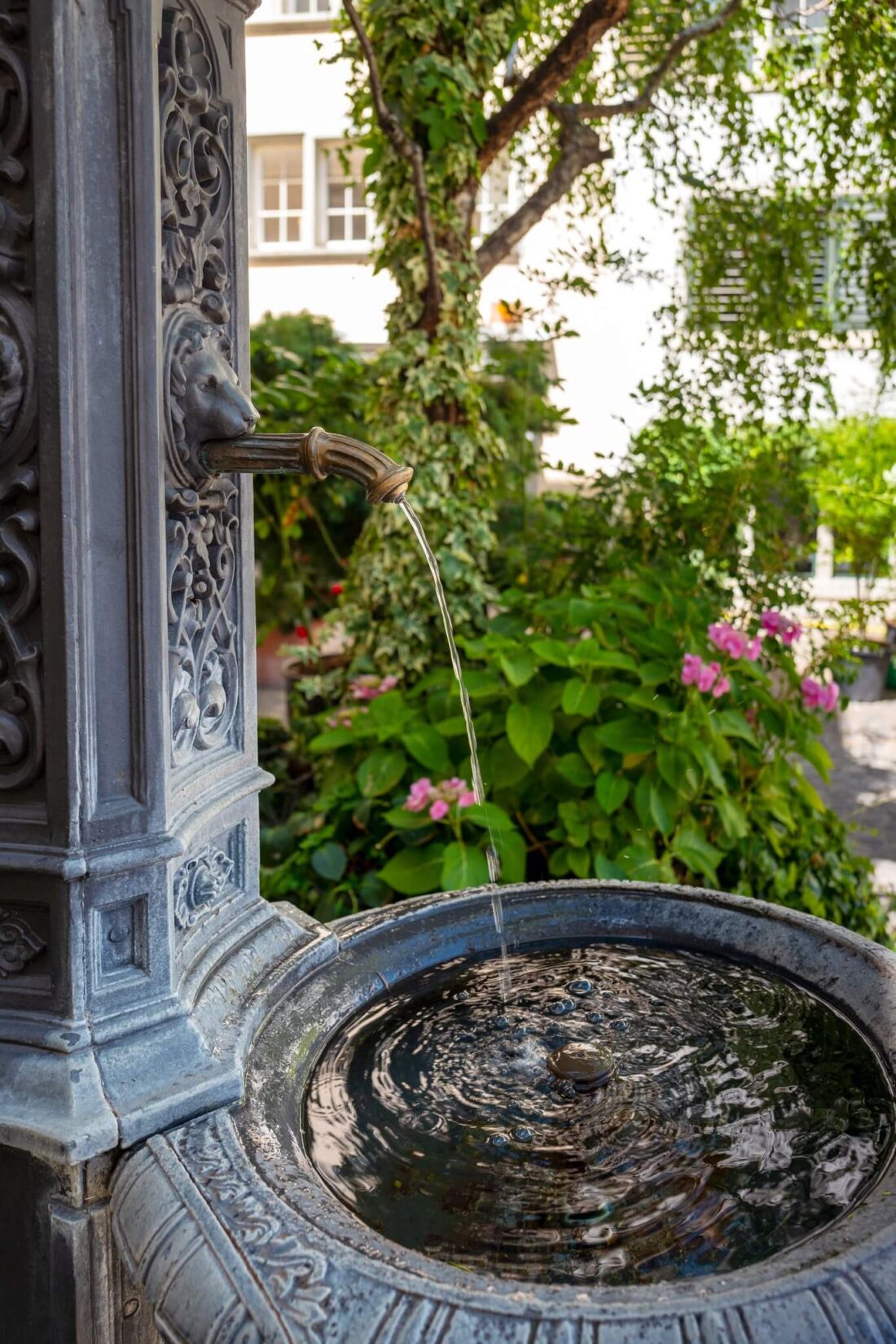
Tap water is safe to drink in Switzerland and you can also find drinking fountains all over the country that you can drink from. I’ve filled many water bottles from these fountains and it’s been tasty and safe.
When you’re planning a trip to Switzerland, you’ll want to be sure you pack properly. But don’t worry, there are plenty of places to shop if you forget anything. Here are a few essentials you’ll want to be sure to pack for Switzerland. You can see my Switzerland packing list , or check out my abbreviated list below.
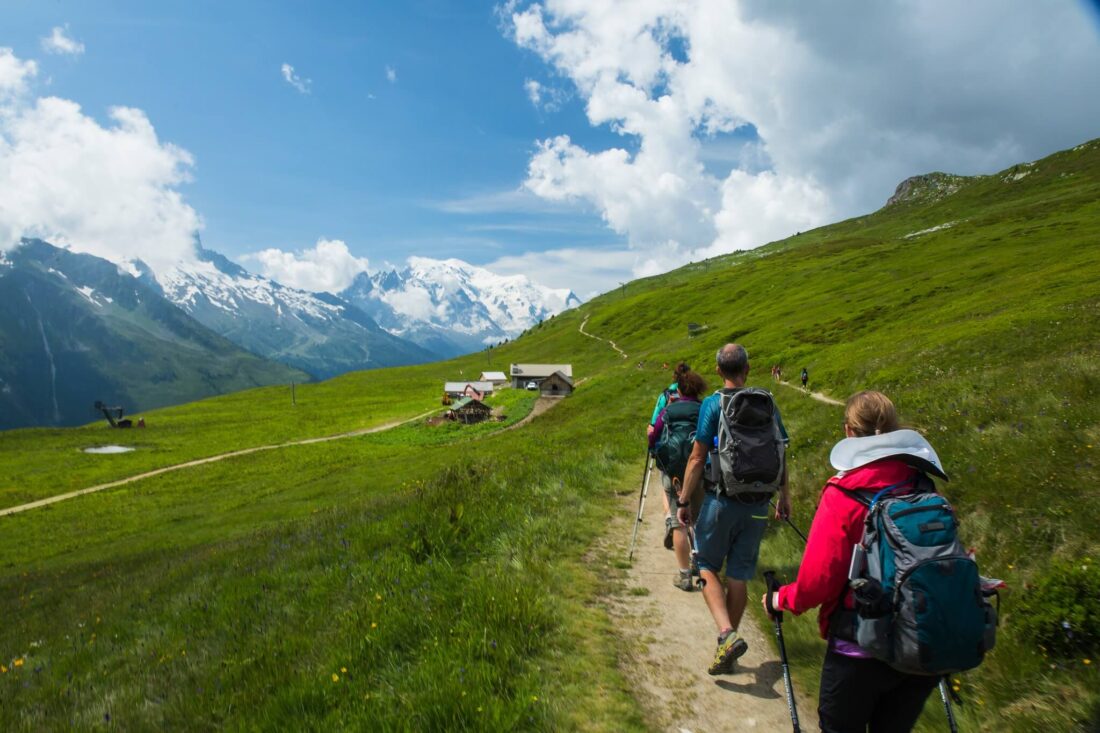
- Power Adapter for Switzerland
- Portable Charger ( my favorite )
- Portable WiFi Device
- Appropriate Outdoor Clothing ( I like to shop here )
- A few nicer outfits for dinners
- Packable down jacket
- Your favorite sun hat
- Sunscreen ( my favorite )
- Comfortable Walking Shoes
- Good Hiking Boots (if you’re planning to do lots of hikes)
- Collapsible Hiking Poles
- Packing Cubes
- Melatonin for Jetlag
- Packable Day Pack
- Liquid IV for Dehydration
- Waterproof Phone Case
- Reusable Water Bottle
- Quick Dry Towel
The Best Switzerland Itinerary for 7-10 Days
Ok now on to what you came here to read! This is the best Switzerland itinerary to help you maximize and enjoy your vacation. It spans the Switzerland countryside and cities and includes recommendations on where to stay and what to do in each destination.
Day 1 – Arrive in Zurich & Explore
Most major international flights to Switzerland will arrive at Zurich international airport, which is a great starting point for your Switzerland itinerary. Zurich is the largest city in Switzerland and one of the most popular tourist destinations. With its picturesque Old Town and world-class museums, it’s easy to see why Zurich is such a popular destination. You’ll most likely be beginning and ending your vacation to Switzerland here.
If you only have a short time in Switzerland, I recommend taking day trips from Zurich .
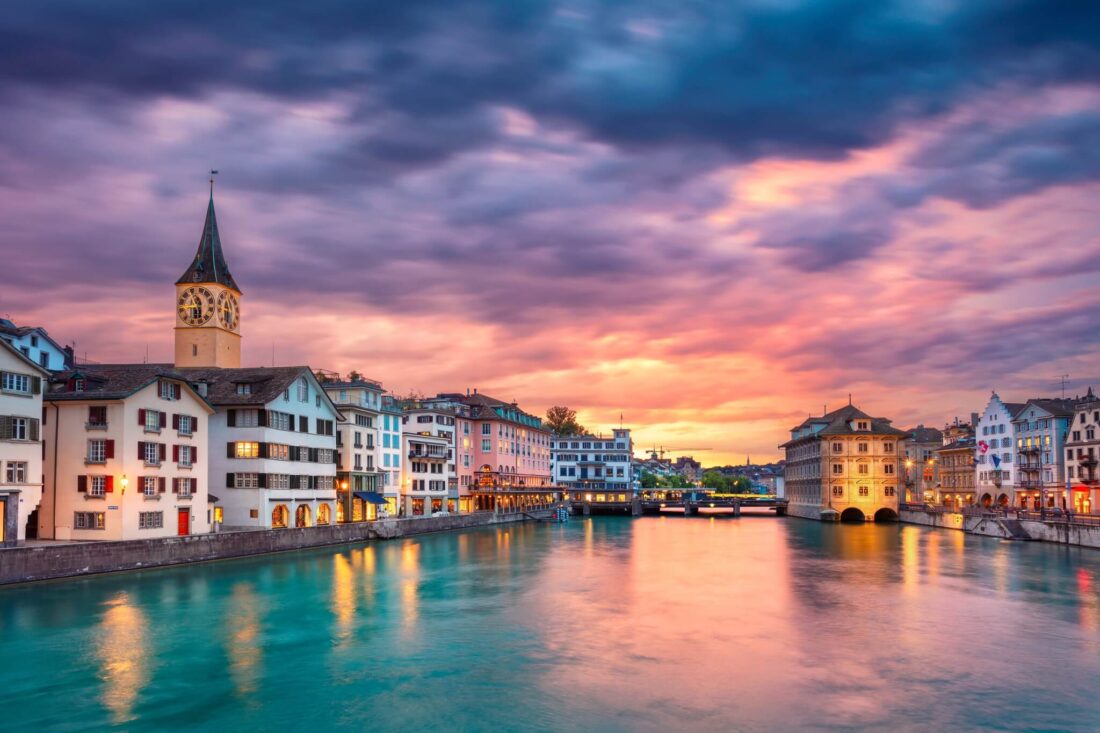
- Walk Around Old Town Zurich
- Explore Lake Zurich
- Visit the Museum of Art
- Enjoy Views from Lindenhof
- Visit the Swiss National Museum
- Visit Grossmünster Church
- See the Impressive Zurich Zoo
- Ride the train to the top of Uetlibertg
- Take a Cruise down the River
- FIFA World Football Museum
- Day 2 – Lucerne
Lucerne is a small city located in central Switzerland that is often overlooked by tourists. But with its beautiful Old Town, covered bridges, and Alpine setting, Lucerne is well worth a visit. And if you’re looking for things to do outside of the city, you can take a boat ride on Lake Lucerne or even go for a swim!
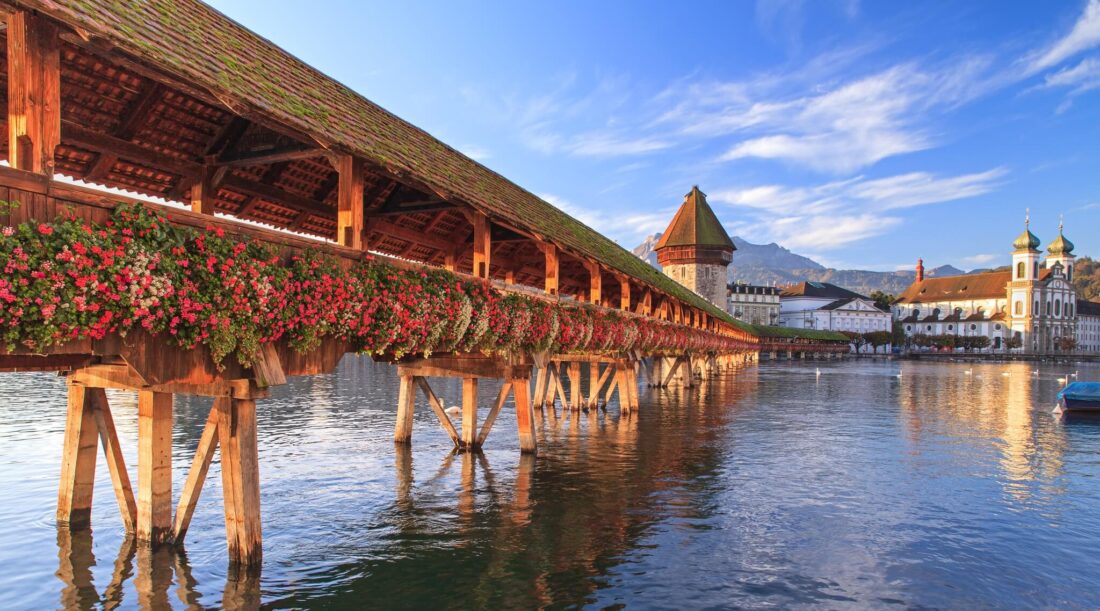
- Wander Around the Old Town
- Take a Cruise on Lake Lucerne
- Visit the Swiss Museum of Transport
- Walk Across Chapel Bridge
- Visit the Rosengart Collection
- See Bertel Thorvaldsen’s Lion Monument
- Explore the Glacier Garden
- Enjoy the Views from Musegg Wall
- Visit Hofkirche Basilica
Day 3 – Interlaken and Lake Brienz
Nestled between Lake Brienz and Lake Thun in the Bernese Oberland region of Switzerland, Interlaken is a popular tourist destination for those looking to enjoy the great outdoors. Surrounded by mountains, Interlaken is the perfect base camp for hikes, mountain biking, para-gliding, and other adventure activities. It also has a cute old town center to explore and dine in. I had the privilege of paragliding in Interlaken and I will never forget it. The whole area is postcard perfect!
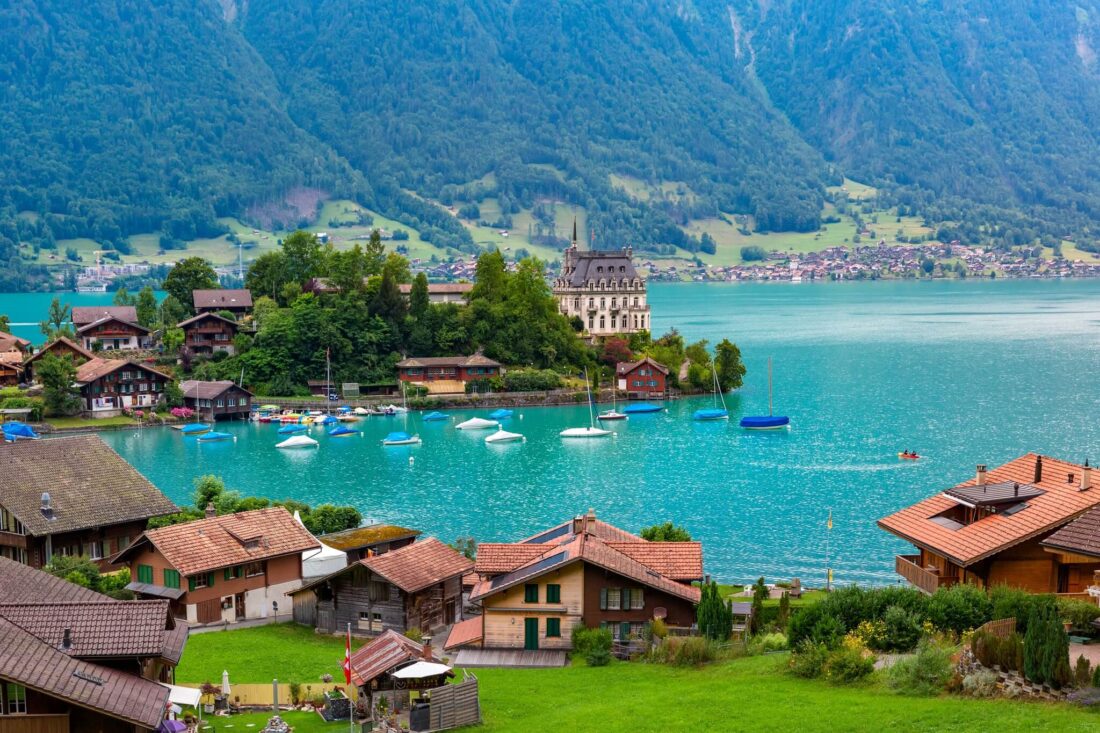
- Go Paragliding
- Ride up Harder Kulm via funicular
- Take a Steamboat on Lake Brienz
- Ride the Schynige Platte Railway
- Tour Justistal Alpine Dairy book here
- Aareschlucht Gorge info
- Explore the charming views at Istelwald village
Day 4 – Lake Thun
Lake Thun is the other lake that borders Interlaken and is just as beautiful as Lake Brienz. Spend a few days between these two lakes and soak up all the beauty around you.
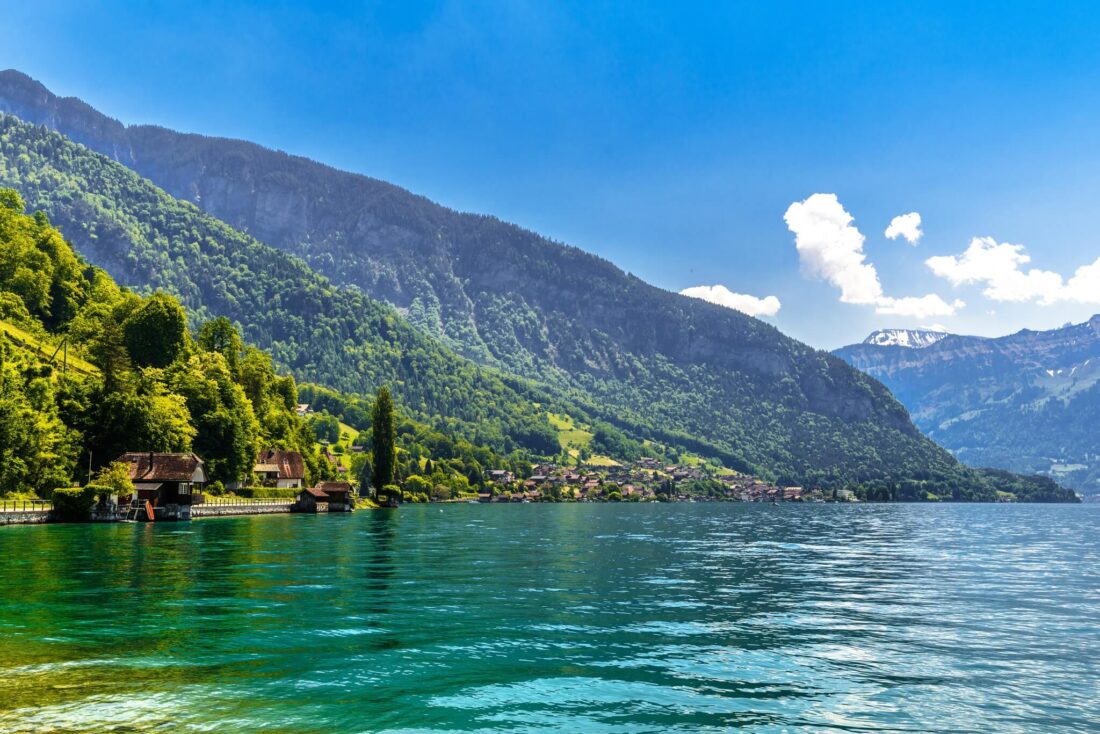
- Explore Lake Thun
- Ride a Steam Boat on Lake Thun
- Visit Thun Castle
- Explore St. Beatus Caves
- Wander around the medieval old town of Unterseen
- Weissenau Nature Reserve
- Explore the picturesque town of Spiez
- Panoramabrücke Sigriswil – Panoramic Footbridge
Day 5 – Lauterbrunnen, Murren & Schilthorn
The Lauterbrunnen valley is a gorgeous area of the Bernese Oberland that is a must-see. When you picture a quaint village in Switzerland with wooden chalets, Alpine valleys, high mountain peaks, and roaming cows with bells, it’s likely Lauterbrunnen valley that you’re thinking of. If you want to see iconic scenes like this when you visit Switzerland, Lauterbrunnen is the perfect place to go.
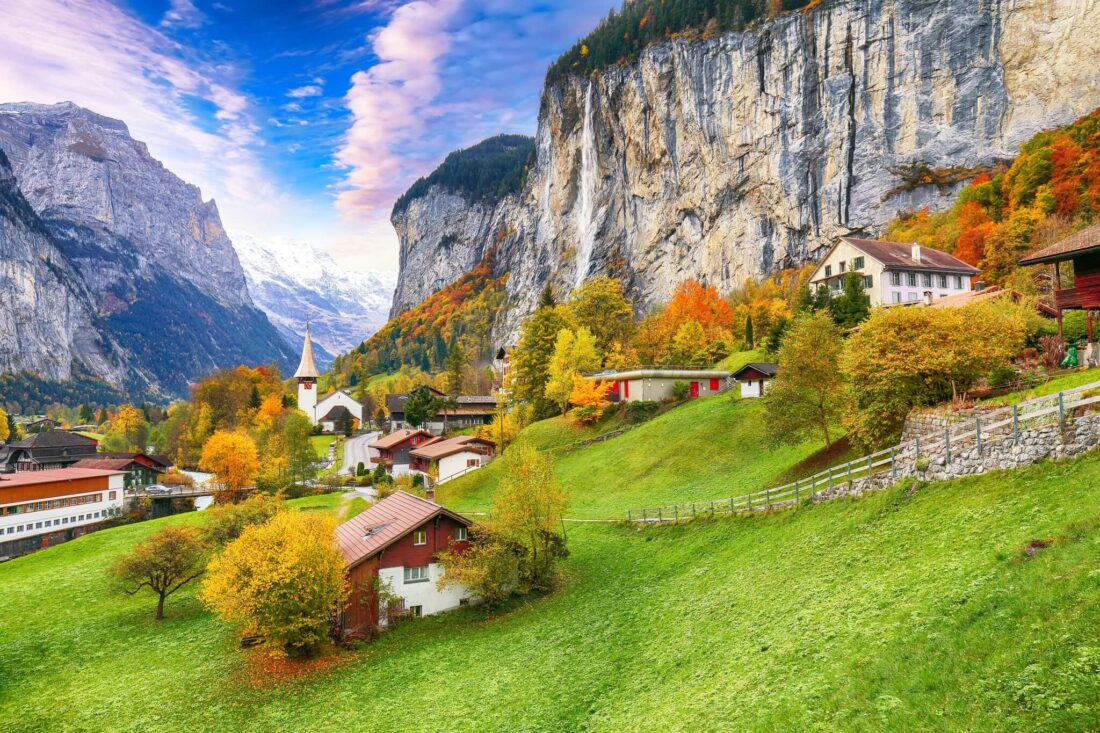
- Hike the Lauterbrunnen – Murren Trail (4 miles)
- Visit the largest free-falling waterfall in Europe (Staubbach Falls)
- Take the cog railway to nearby Wengen
- Take the cable cars to nearby Murren
- Take a cable car ride up to Schilthorn
- Eat at Piz Gloria, the rotating James Bone restaurant
- Visit the Highest Altitude Structure in Europe ( Sphinx Observatory)
- Explore Trummelbach Falls (a UNESCO World Heritage Site)
- Go paragliding or just watch the paragliders
- Grab a drink at the Horner Pub in town
- Rent bikes and ride around Lauterbrunnen Valley
Days 6 & 7 – Zermatt
While the mountain resort town of Zermatt is small, the surrounding mountains in the Swiss Alps and the surrounding areas are massive. This destination takes some time and effort to get to, even though it’s simple to reach by public transportation, so I always recommend staying the night and exploring Zermatt for two days if possible. Many people will attempt Zermatt as a day trip from Bern or Zurich, which is fine, it just limits what you can do there. It’s a must on any Switzerland itinerary. Zermatt is most famous for its incredible views of the Matterhorn, but there’s a lot more to this picturesque town. It’s home to some of the most scenic train rides on Earth and some great restaurants and shopping as well.
Zermatt is also the end of the Walker’s Haute Route , which is a massive hike through the Swiss Alps that begins in Chamonix, France, and traverses some of the most beautiful scenery in Switzerland, ending in Zermatt.
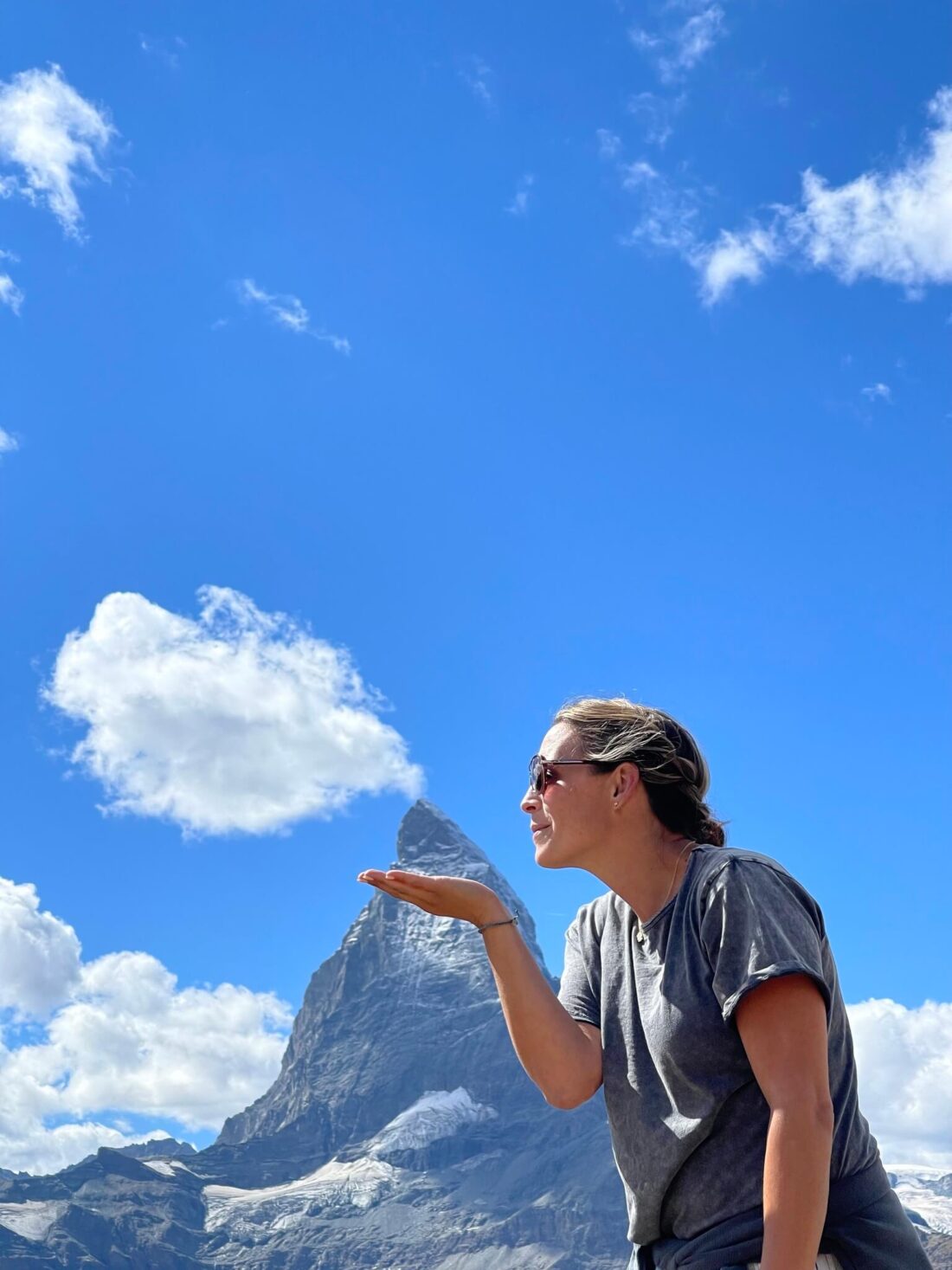
- Take the Matterhorn Glacier Paradise
- Hike the Matterhorn Glacier Trail
- Visit Schwarzsee (lake)
- Take the Gornergrat Railway (one of the most scenic train rides in the world)
- Hike from Gornegrat to Riffelsee (1.5 miles)
- Befriend Blacknose Sheep
- Explore the old town of Zermatt
- Eat Fondue & Raclette
- Visit the Matterhorn Museum
- Pay your respects at Mountaineers Cemetery
- Walk through the Hinterdorfstrasse – old town
- Walk along Gorner Gorge
That’s the end of my one week in Switzerland itinerary. However, if you have another 3 days in Switzerland or more, I recommend continuing with the next few destinations. They are great, but I always recommend prioritizing the above itinerary if you only have 7 days in Switzerland.
Day 8 – Bern
Bern is the capital of Switzerland and a unique and relatively small city. The entire city is a UNESCO world heritage site with so much to explore. The medieval architecture and easy public transportation make it an easy city to visit.
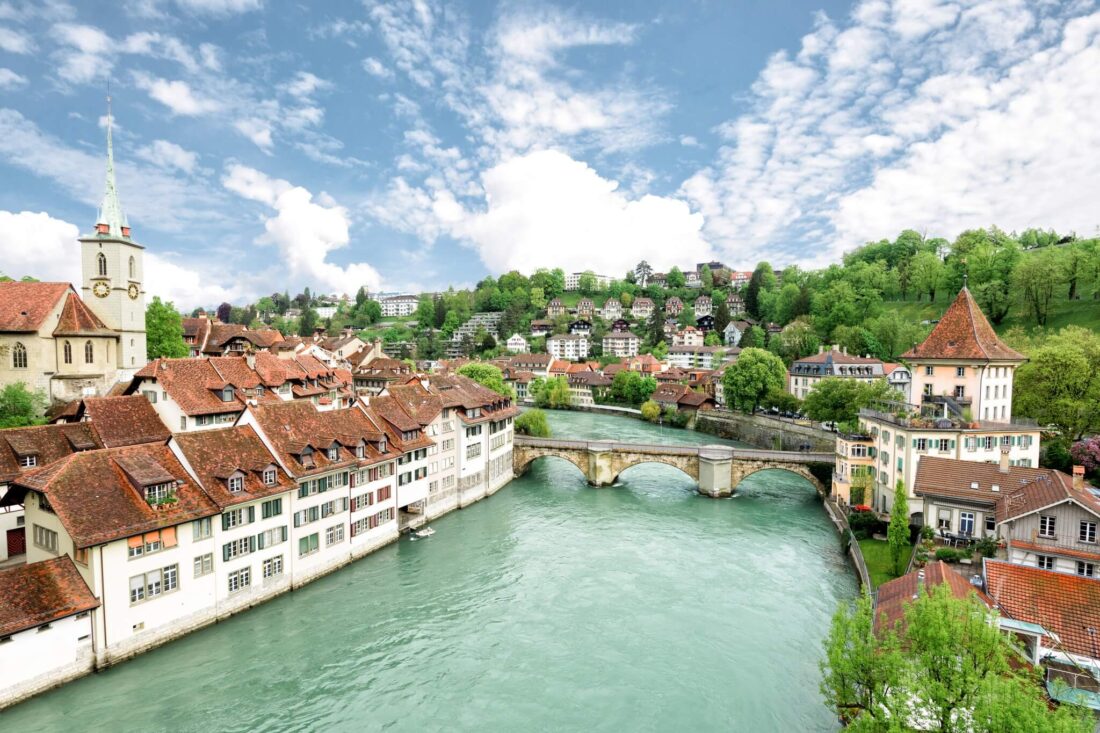
- Explore Old Town Bern
- Count the fountains of Bern
- Visit Berner Munster (Bern Cathedral)
- Climb up Kafigturm
- Zytglogge Clock Tower
- Visit the bears at the Barengraben, or Bear Pit
- Walk through the Rosengarten (Rose Garden Park)
- Visit the Einstein Museum & Einstein House
- Walk along the Aare River
- Relax at the Hamman & Spa Oktogon
Day 9 – Gruyere & Montreux
These two Swiss towns are some of the most beautiful in the country and reside in the French-speaking section. If you have a car, it’s only a 30-minute drive between the two. Public transportation between them can be tricky, so you may just want to pick one to visit if you don’t have a car, depending on where you’re staying. Either town is a great day trip from Bern or the Lauterbrunnen valley.
Gruyere is an idyllic farming town nestled in the Swiss Alps and renowned for the famous Gruyeres cheese, which you’ve probably tried before. Be sure to have fondue here, as it’s some of the best we’ve ever tried in Switzerland.
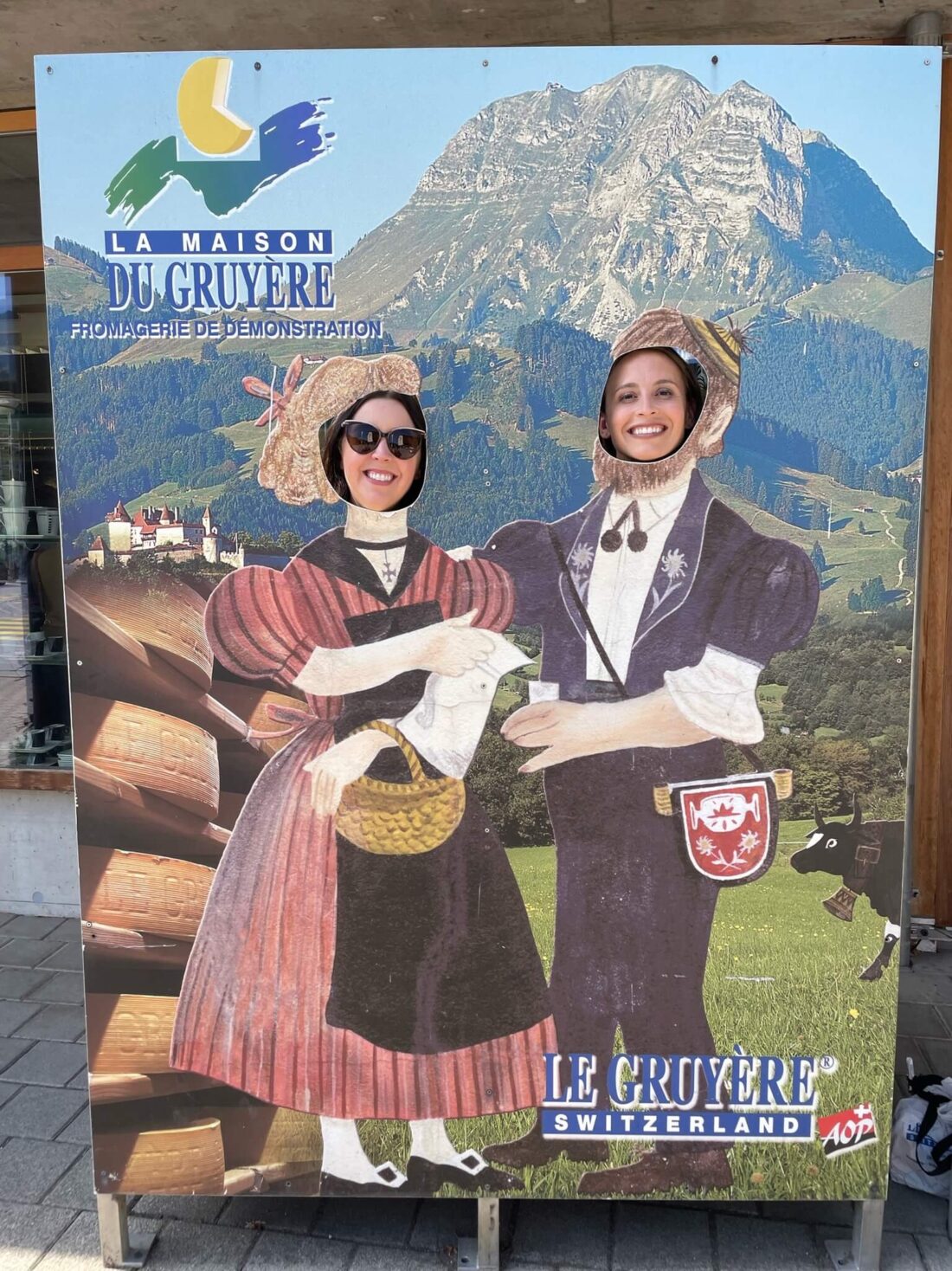
- Visit the Gruyeres Cheese Factory & Tour
- Walk down Rue de Bourg in the Old Town
- Walk Le Grand Chemins
- Tour Gruyeres Castle
- Walk along the Ramparts
- Eat Gruyeres Cheese Fondue
- Visit the HR Giger Museum
- Grab a drink at the Giger Bar
- Visit the Tibet Museum
- Tour Maison Cailler Chocolate Factory
Montreux is a dazzling town set against the backdrop of the mountain peaks of the Alps and on the shores of Lake Geneva. Also in the French-speaking region of Switzerland, Montreux has much to offer in way of scenery and cultural opportunities.
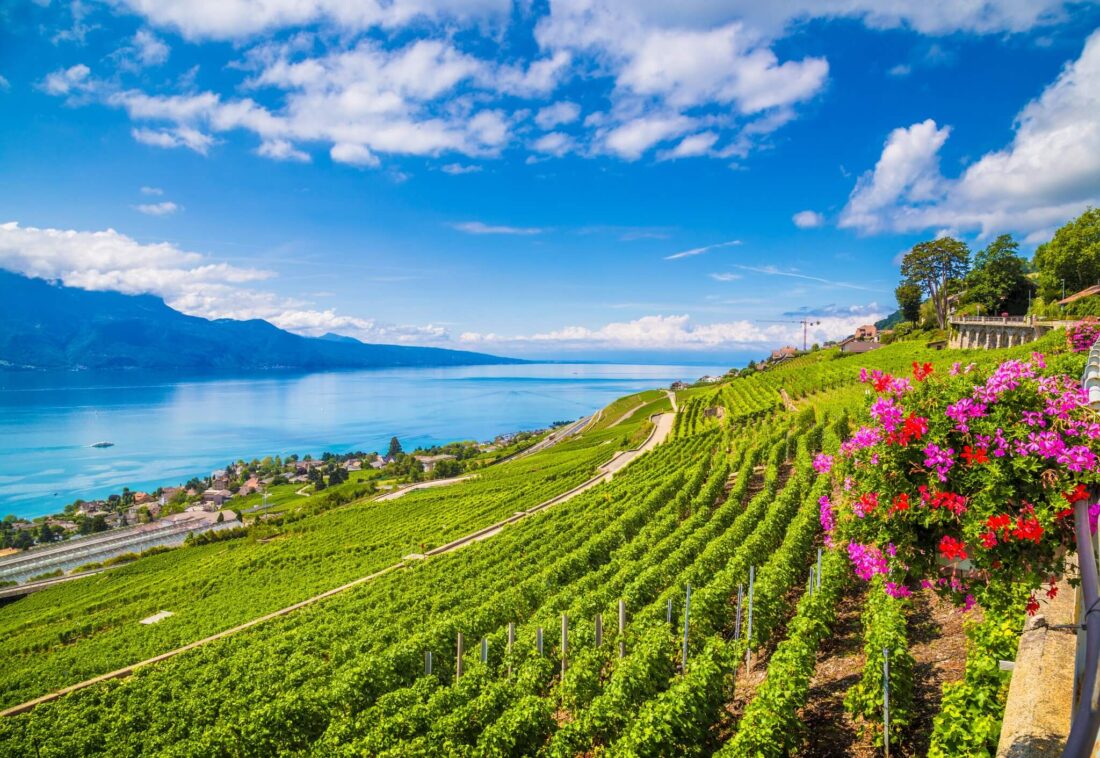
- Explore Montreux Old Town
- Visit Lavaux vineyards, a UNESCO World Heritage Site
- Walk Along the Montreux Lakeside Promenade
- Hike the Gorges du Chauderon
- Take a Cruise on Lake Geneva
- Visit Chateau de Chillon
- Hike Rochers de Naye
- See the Freddy Mercury Statue
- Visit Chaplin’s World Museum
- Visit the Nest Museum
- Day 10 – Geneva
Situated between the French border and Lake Geneva, the town of Geneva is an international town known for being the United Nations Headquarters and also the headquarters for The Red Cross. It’s also a great place to visit on your Switzerland trip if you want to get more of a feel for the French part of Switzerland.
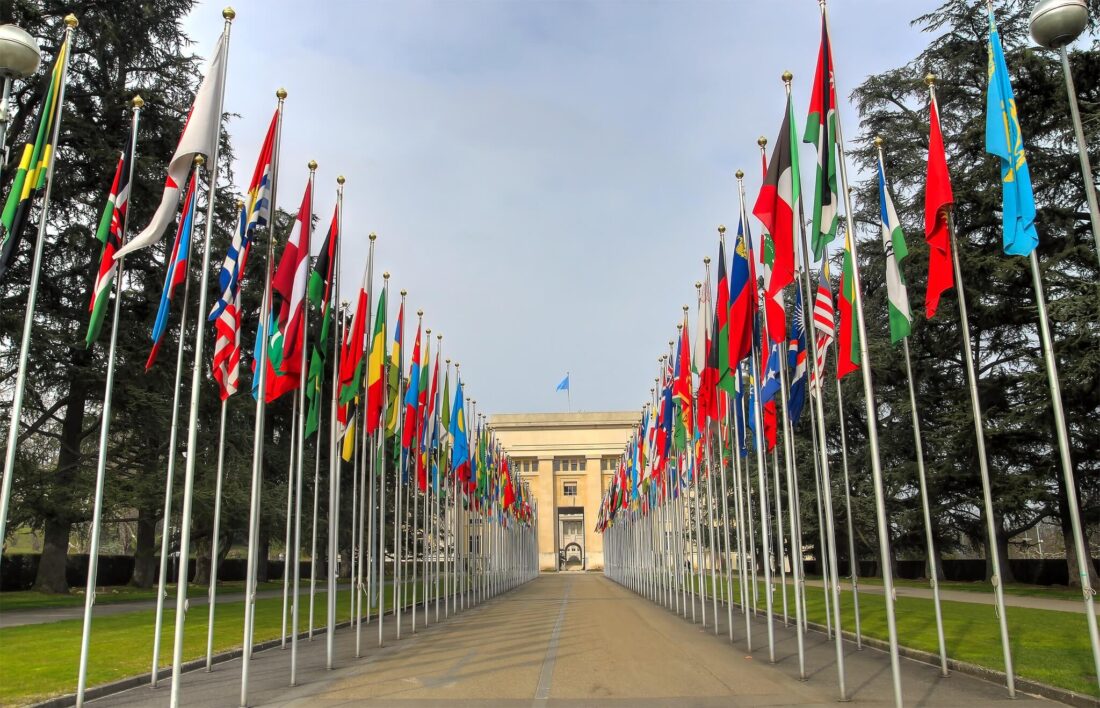
- Take a boat ride on Lake Geneva if you haven’t done that Montreux
- Check out the famous Jet d’Eau (Water Jet)
- Visit the Romanesque Temple de Saint-Pierre
- Explore Geneva’s Old Town
- See Bourg-de-Four, the oldest square in the city
- Check out the flags at Palais des Nations
- Tour the Art & History Museum
- Visit the International Red Cross and Crescent Museum
- Visit the Ariana Museum, dedicated to ceramics and glass
- Wander around Parc de la Grange
There’s so much to see and do in Switzerland and you could easily spend months exploring all this Alpine country has to offer! But if you only have a week, this Switzerland itinerary will help you make the most of your time in this beautiful country. From hikes with unbeatable views to leisurely days spent soaking in mountain views from your hotel room window and delicious chocolate and fondue, you’re sure to fall in love with this corner of Europe. I hope this Switzerland trip planner was helpful and that you’ll be on your way to planning a great vacation.
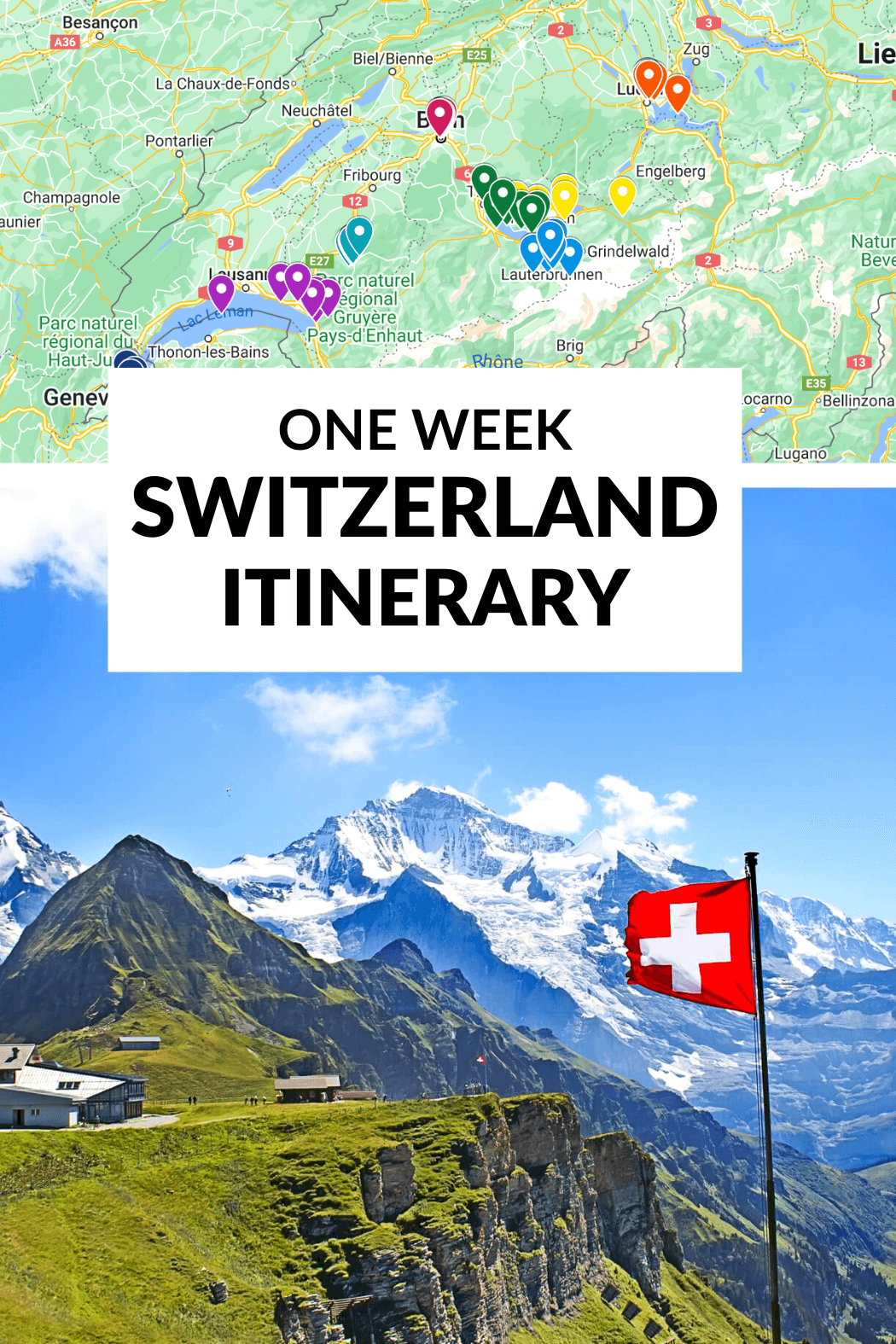
- Use the train to get around Switzerland
- Purchase a Swiss Travel Pass or Half Fare Card before you travel to Switzerland
- There are four official languages spoken in Switzerland
- Learn a few German phrases before your vacation to Switzerland
- The best time to visit Switzerland is Spring and Fall
- Switzerland is a very safe country
- 7-10 days in Switzerland is an ideal time
- Download important apps before Switzerland trips
- Swiss Francs (CHF) are used in Switzerland
- Tap water is safe to drink in Switzerland
- Pack appropriately for Switzerland
- The Best Switzerland Itinerary:
- Day 1 – Zurich
- Day 3 – Interlaken – Lake Brienz
- Day 4 – Interlaken – Lake Thun
- Day 5 – Lauterbrunnenn, Murren, & Schilthorn
- Day 6 – Zermatt – Glacier Express Train
- Day 7 – Zermatt – Gornergratt
- Day 8 – Bern
- Day 9 – Gruyeres & Montreux
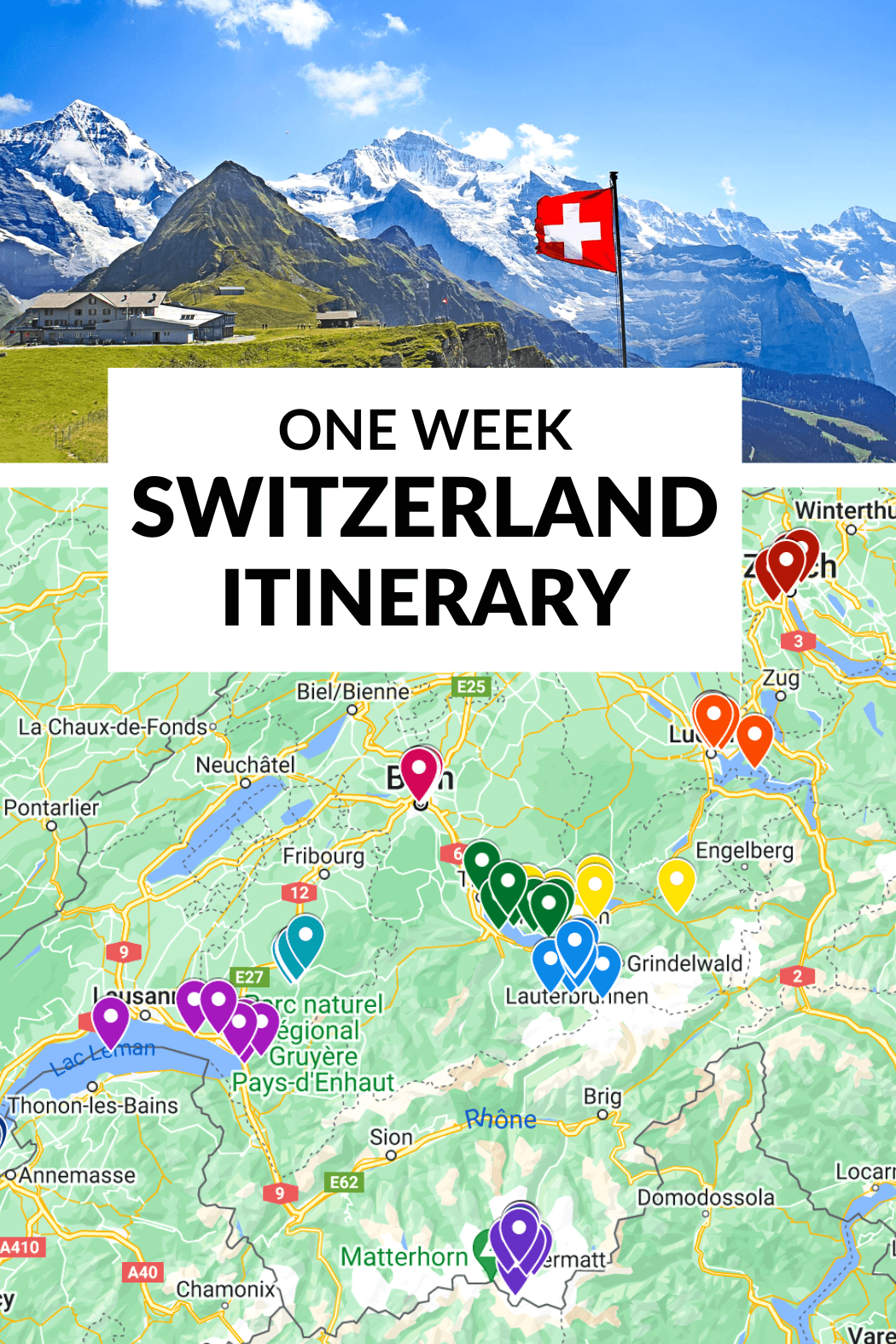
Wanderlust Crew
Leave a reply cancel reply.
Your email address will not be published. Required fields are marked *
Notify me of follow-up comments by email.
Notify me of new posts by email.
This site uses Akismet to reduce spam. Learn how your comment data is processed .

20 Travel Tips for Switzerland to Know Before You Travel
Jackson Groves
Posted on Last updated: October 2, 2023
Categories SWITZERLAND
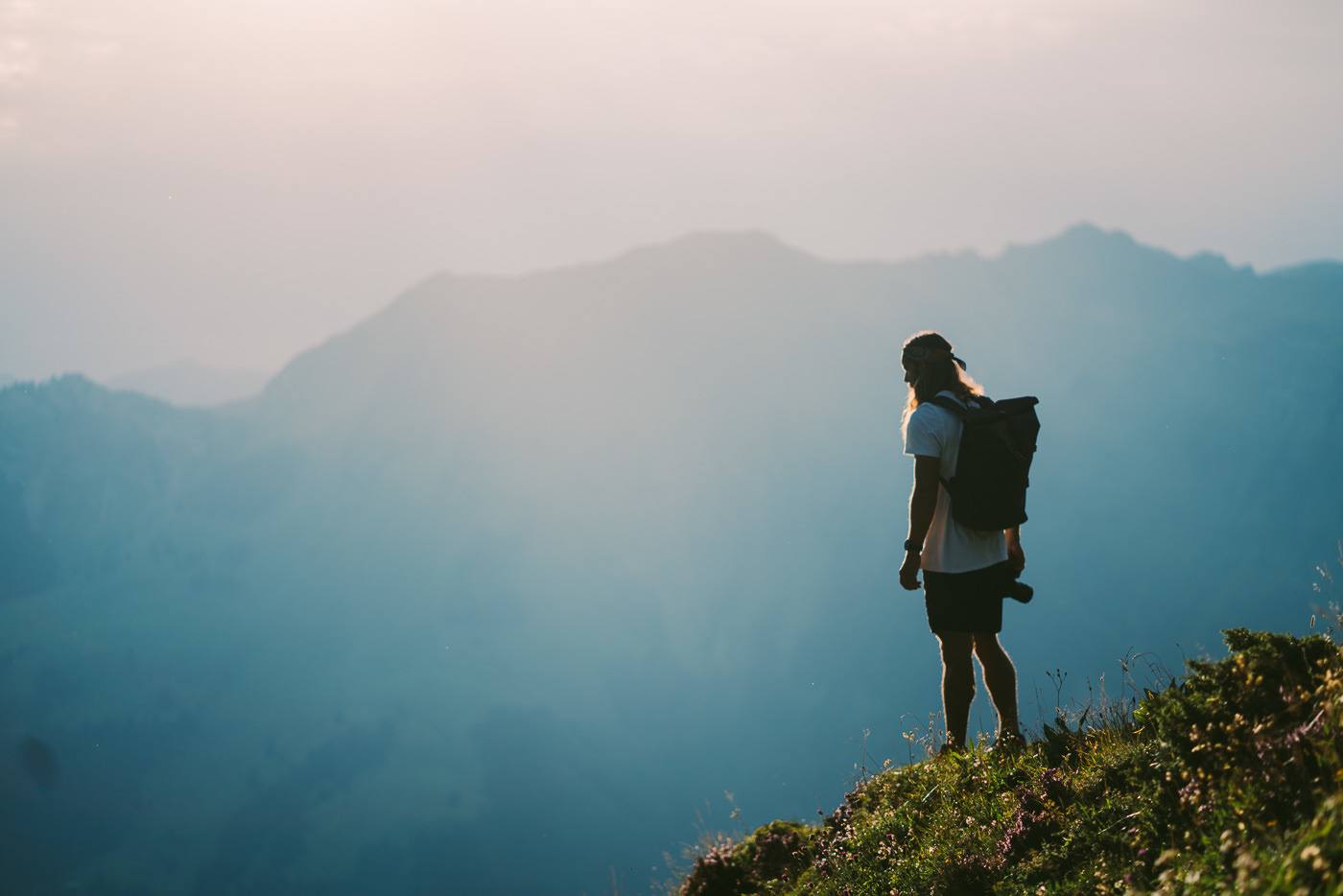
Switzerland is easily one of the most ‘epic’ countries I have visited. You’ll experience countless moments where you are completely lost for words because Switzerland is one of the most scenic countries in the world. However, it is also one of the most expensive places to visit so it takes a bit of planning to figure out the best ways to get around, find places to eat, and affordable accommodation. Hopefully these travel tips for Switzerland will help you have an awesome first experience exploring this amazing country.
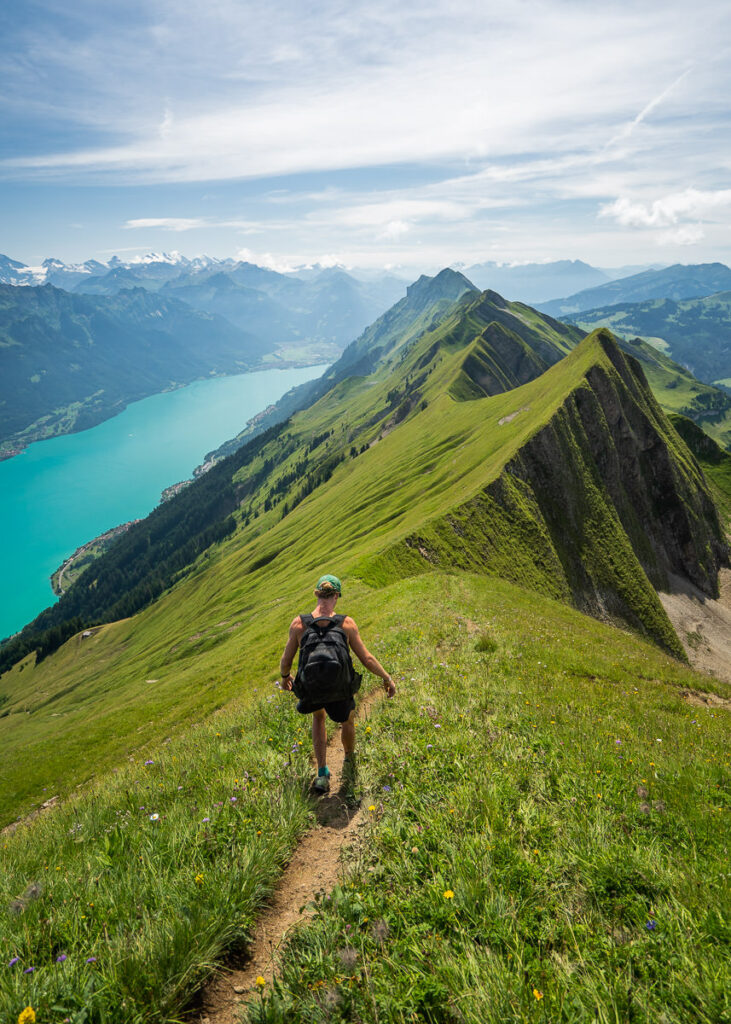
Table of Contents
Helpful Travel Tips for Switzerland
I spent 100 days traveling in Switzerland and in this travel blog post, I will explain my top travel tips for Switzerland. Many of them you simply can’t figure out until you have traveled to Switzerland, so I hope these tips prepare you for certain situations, save you money, keep you safe, and keep you healthy while traveling through Switzerland!
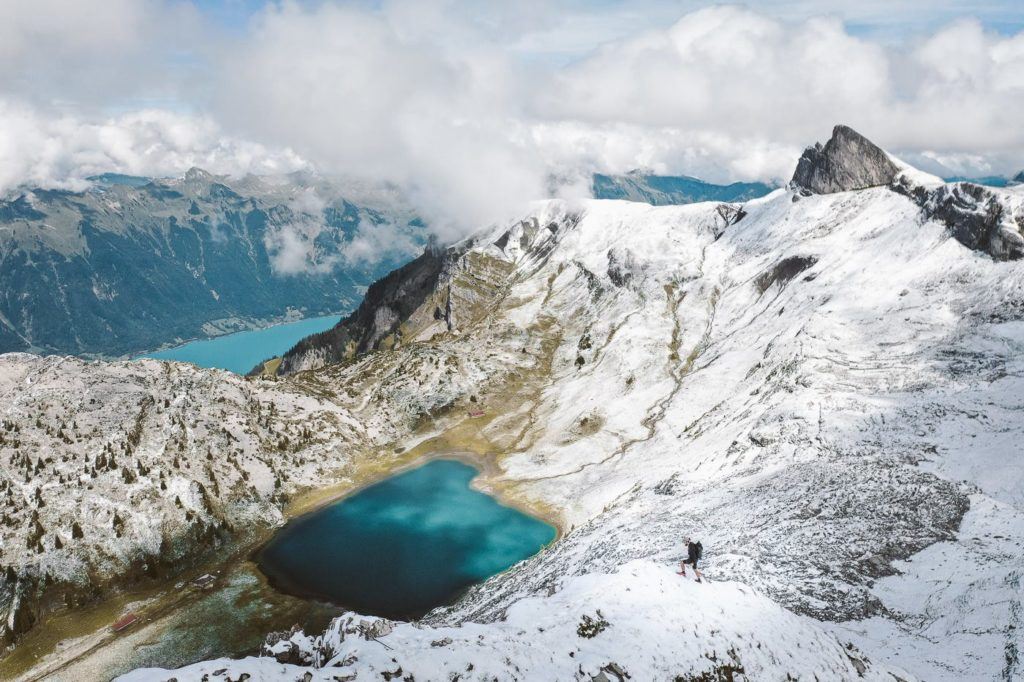
WHO THIS GUIDE IS FOR?
This guide is for everyone, not just those on a budget. I’ve got lots of tips that will help budget backpackers in Switzerland but many of the tips are related to activities, train trips, and food that both budget and luxury travelers will be involved in or encounter during their travel through Switzerland.
Most people in Switzerland are on a budget of some sort due to the high prices throughout the country so lots of the tips in this guide will help you find ways to make the most out of your time in Switzerland while not burning a hole in your wallet.
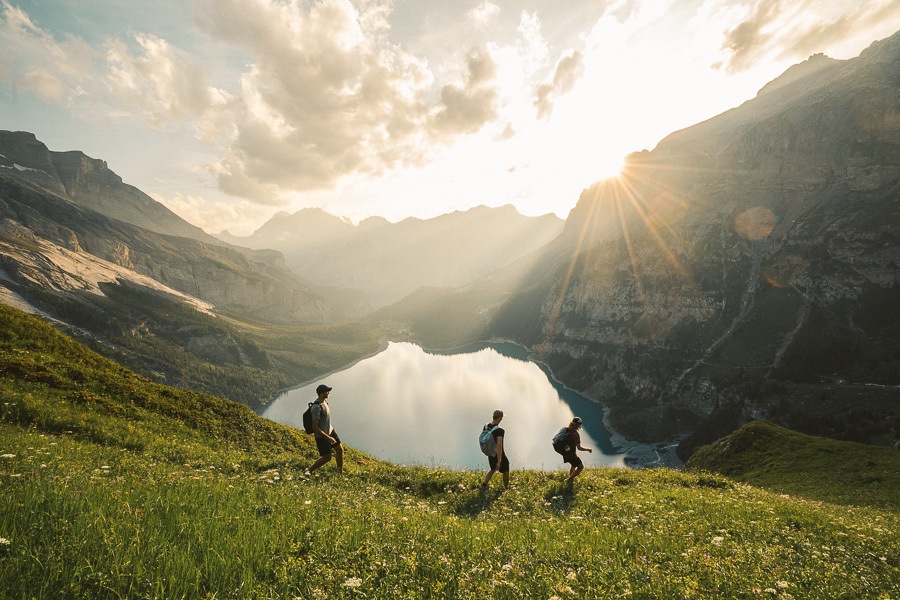
MY 20 TRAVEL TIPS FOR SWITZERLAND
I’ll start off with some basic tips about transport, the best towns to base yourself for hiking, and general costs, and then as we go deeper and deeper into the list, the Switzerland travel tips will get more and more specific and will definitely be things you wouldn’t have thought of.
SWISS TRAVEL PASS or HALF-FARE CARD
OPTION 1: Buy the Swiss Half Fare Card : Switzerland trains, buses, and cable cars are EXPENSIVE! I found the best way to get around cheaply was to buy the Swiss Half-Fare Card before I arrived. It gives you 50% off every regular train, bus, and even many cable cars. It only costs $150 USD but pays itself off in just a few days with many train tickets in Switzerland costing close to $100 alone. If you are staying for more than 5 days, I suggest buying the Swiss Half-Fare Card.
OPTION 2: Buy the Swiss Travel Pass : The second option is to get the Swiss Travel Pass, which gives you unlimited train, bus, and (many) cable car rides but it’s pretty expensive at around $100 USD per day so if you don’t travel each day it isn’t worth it.
OPTION 3: Buy the FLEXI Swiss Travel Pass : The final (BEST) option is to get the FLEXI Swiss Travel Pass, which allows you to buy 8 days’ worth of transit but you can choose the night before if you want to activate the next day. That way you don’t need to travel every day to get your money’s worth, you can just activate the FLEXI Swiss Travel Pass on the days when you are doing sizeable transits. My advice is to book the Swiss Half-Fare Card or the FLEXI Swiss Travel Pass in advance before your trip so it’s ready to go when you arrive.
GET A SWISS TRAVEL PASS!
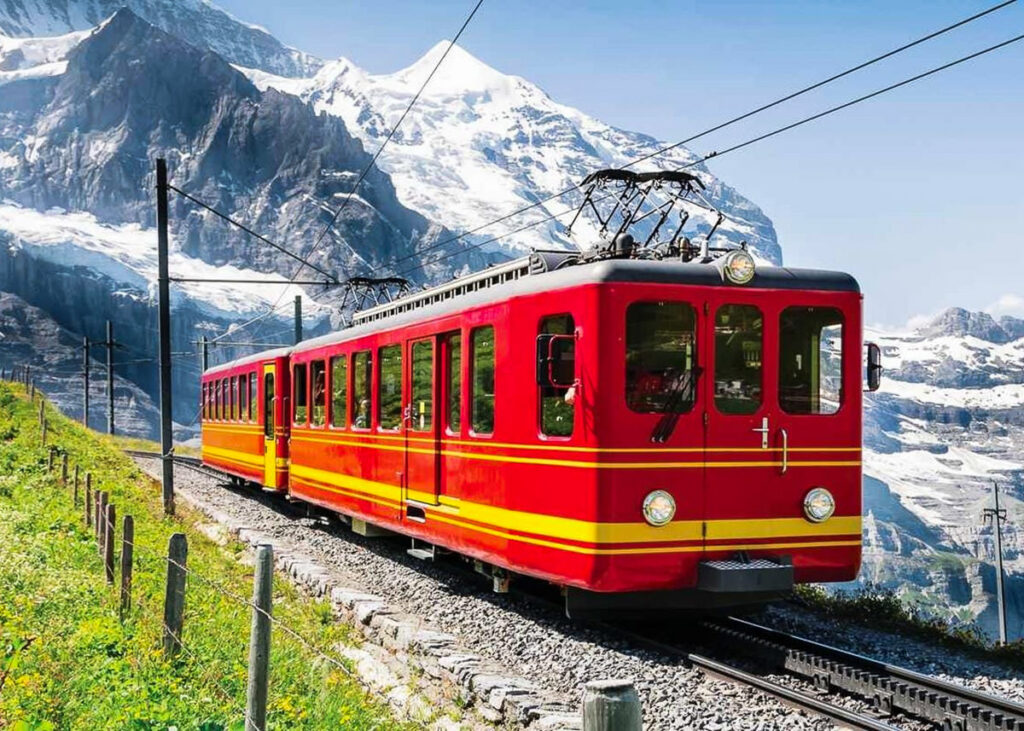
Enjoy UNLIMITED train, boat, and bus rides in Switzerland for up to 15 days. Click to book a flex Swiss Travel Pass or choose the Consecutive Swiss Travel Pass .
The Swiss Travel Pass starts at $260 for 3 days. Click here to check if it’s available on your travel dates.
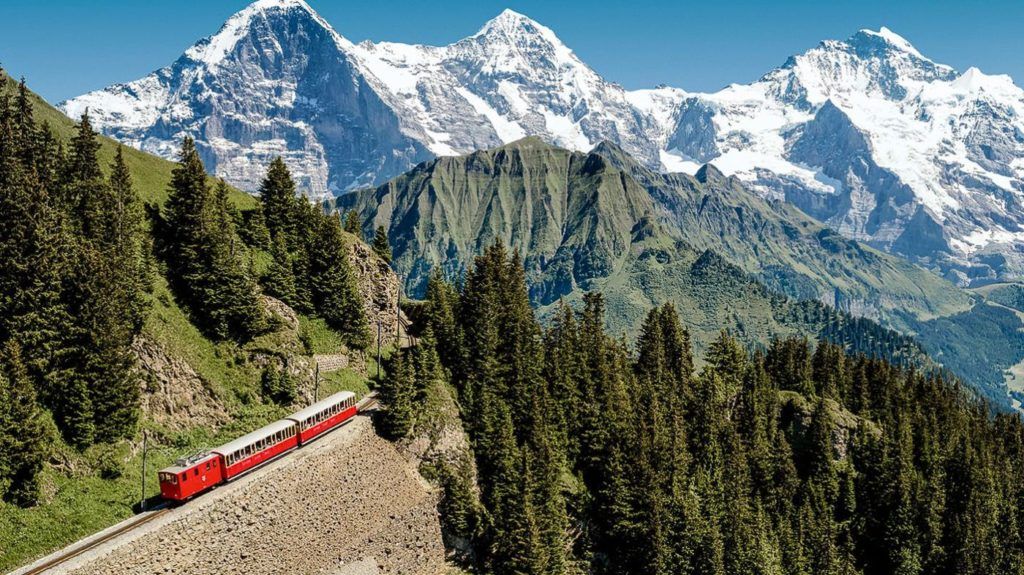
WHAT LANGUAGE WILL YOU NEED TO SPEAK IN SWITZERLAND?
In Switzerland, there are actually four official languages but the main two languages are Swiss-German and French. Depending on which region you are in will determine the languages most locals are speaking.
In the north and the east of Switzerland you can expect to hear mostly Swiss-German and around Geneva and the west you can expect to hear French. Those are the main two but in the south, there are many Italian-speaking regions, such as Lugano. The final official language is Rhaeto-Rumantsch but is spoken by a very small number within Switzerland.
So, what can you expect language-wise? Well, I spoke only a few words of German and no French, Italian, or otherwise. What I found is that there are a surprisingly high number of people in Switzerland who speak very little to no conversational English. However, there were, of course, lots of people who could speak English.
You will find that in touristy areas the prevalence of English increases and usually train conductors, tour operators, ticket booth attendants, and waiters will all know enough English to get you by.
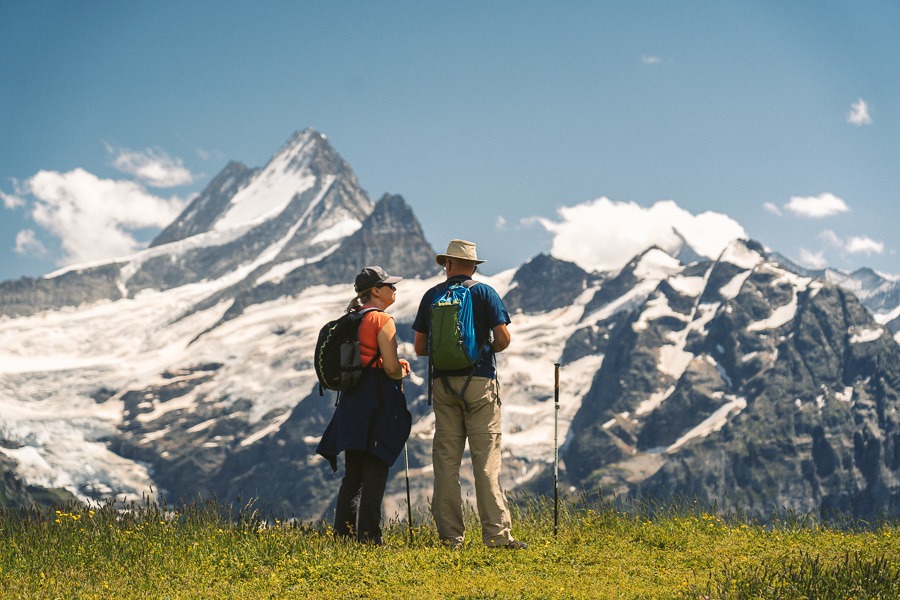
What I will say is you should try and learn a few basic phrases of German and French say you can greet people out on the hiking trails, say thank you and please at a restaurant and ask where the bathroom is. I think it is polite to learn those and any more is up to you but the more the better and locals always appreciate the effort even if your accent is horrible.
Many of the signs are in English or easy to follow, especially out on the hiking trails or at the train stations. The names of places are of course in Swiss-German or French but the directions are clear.

WHERE IS THE BEST PLACE TO BASE IN SWITZERLAND?
This is a question I can’t completely answer without knowing your budget and motives. However, I can make a few broad suggestions based on my 100-day journey around Switzerland.
If you are keen on hiking or at least viewing the mountains. I highly advise you to stay in Interlaken. I’ll go through a few key reasons that make Interlaken the best home base for your adventures.
- Price: Interlaken is relatively cheaper than most other towns. It has luxury resorts and hotels don’t get me wrong but it has more budget options than most towns. For example, in Zurich, the cheapest hostel I could find was $80 USD and in Interlaken, I stayed at a hostel for $40 USD including breakfast, two coffees per day, free locker storage, and $2 washing/drying machines.
- Location: Interlaken is a hub. If you stay in Murren , Wengen, or Lauterbrunnen you are in a great spot but you are very deep in and to get anywhere else becomes a bit of a journey. Especially if you want to go anywhere other than the Jungfrau region you are in for a long-haul trip. I was based in Interlaken for several weeks and was able to catch the train to Grindelwald in under 45 minutes, Lauterbrunnen in under an hour, and also Thun and Brienz in half an hour. You are more central and I would do things like go up to Murren at midday, do the Via Ferrata , and head home to Interlaken.
- Interlaken is quite a scenic town itself with lots to do like the Harder Kulm viewpoint, the epic Hardergrat Trail , the Schynige Platte Hike , and activities like Paragliding over the lake .
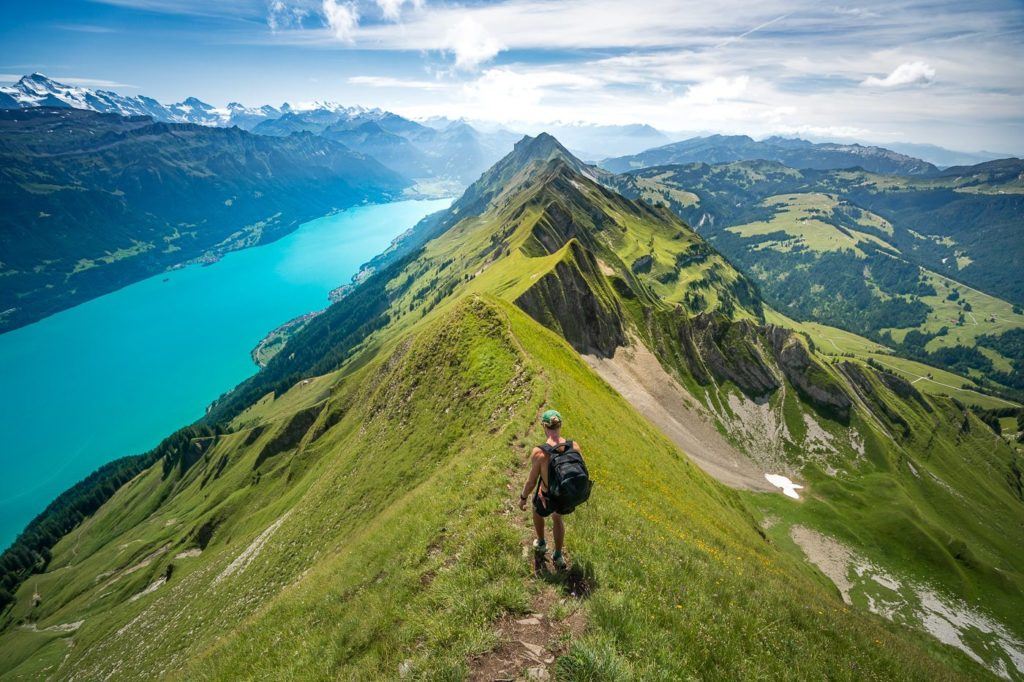
I created a couple of guides to help you investigate the best places to stay in Interlaken depending on your budget. There are a lot of budget hotels and hostels but also some traditional, stunning hotels. Here are the guides I wrote:
- Interlaken Accommodation: WHERE TO STAY IN INTERLAKEN
- Interlaken Budget Accommodation: BEST CHEAP PLACES TO STAY IN INTERLAKEN
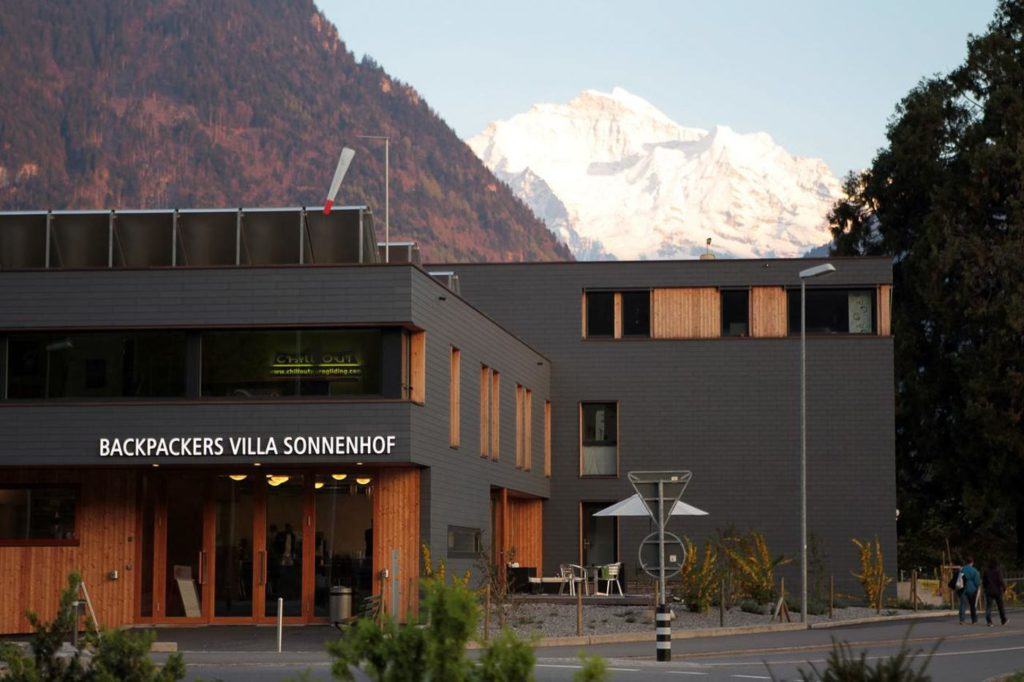
BEST TIME TO VISIT SWITZERLAND
Switzerland is quite multi-dimensional when it comes to weather and the perfect time to visit. Unlike some destinations around the world that have one amazing season that is clearly prime for that location, Switzerland is fantastic in the summer and the winter. The shoulder seasons are still okay for traveling and you can avoid tourists by opting out of the prime weather windows but it is the main winter and summer that are the popular times of the year to travel to Switzerland.
- Best time to visit to avoid crowds (shoulder season) : April – June, September – October
- High Season : July – August
- Low Season : October – March
- Ski Season : December – March
- When are the Seasons : April – June (spring), July – August (summer), September – October (fall), November – March (winter)
- High Season: The high season is July to August when the weather in Switzerland is the warmest it is in the entire year, but you will have to face a lot of tourists, and an over 50% increase in prices.
- Ski Trips: Winter (between December and March) is a low season in most parts of the country, as there will be intense snowstorms. However, this is the best season for those who want to go on ski trips.
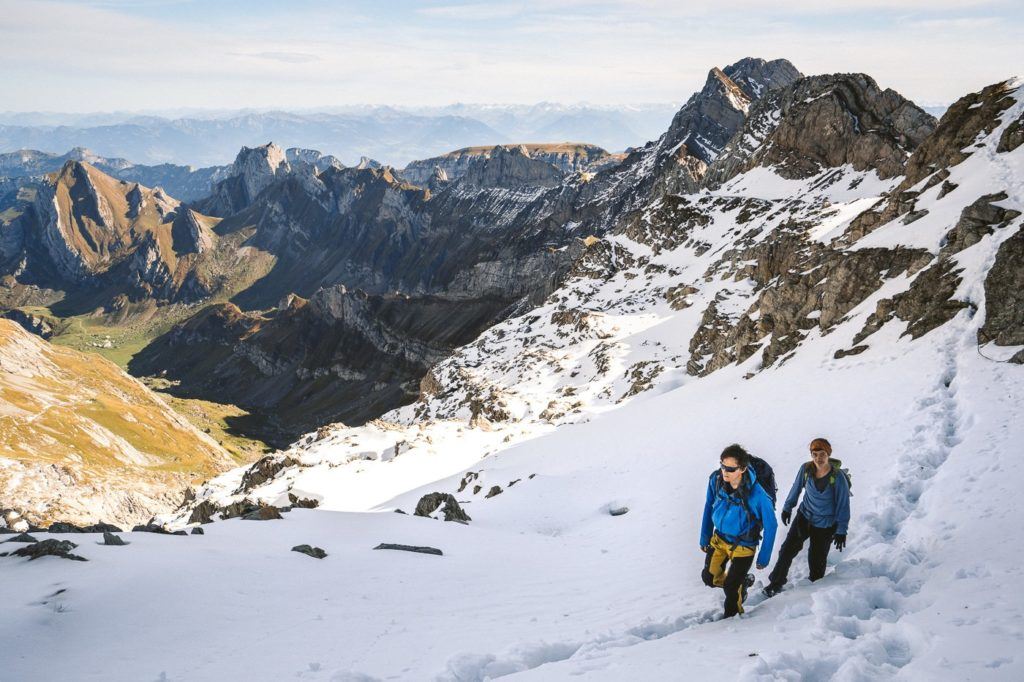
My experience With Seasons in Switzerland
I arrived in Switzerland in July and it was incredibly hot. It was great for hiking and enjoying the alpine lakes. There were big crowds in some places but there are so many hikes in Switzerland so unless you choose the most popular hike you won’t have too many people to fend off.
There were a number of cases though, where things were a bit crowded but it was never a big issue. If you try and go to Jungfraujoch and the massive tourist sites, you will be with hundreds of tourist sites in the peak season of the summer.
The summer was perfect for hiking because as you get above 2000m (which happens frequently in Switzerland), the temperature drops and it was enjoyable to not freeze to death on every trail.
As the months passed and the summer faded, the inevitable happened and I witnessed the first snow of the season. Now we had to check the snow reports and the trail reports to see if hikes were open and in a safe condition. Things became much more serious for hiking and I had to exercise more caution when hiking alone. Eventually, in August many trails and mountain huts started to close to regular hikers, so if you are looking to do hiking and are not on a crazy snow expedition, I would say get all your hiking in by August or you will be a little disappointed if things are closed.

IS SWITZERLAND SAFE?
Switzerland is one of the safest countries in the world. It has a very low crime rate, the people are quite reserved but very friendly and will help if you ask. Never did I feel unsafe and I spoke to a number of solo female travelers who also felt safe out hiking and in the towns.
There was a good vibe at the hostels and things were organized quite well. I can’t really imagine how Switzerland could be safer. There is internet connection throughout the country so you can stay in touch, which is an important safety factor also.
The most unsafe part about Switzerland is that it is so adventurous that many people go a bit far out of their comfort zone. It’s important to remember that what is comfortable for locals who grew up with mountain experience is not necessarily suitable for a city kid who is on their second hiking vacation. Play within your limits especially if alone on a trail.
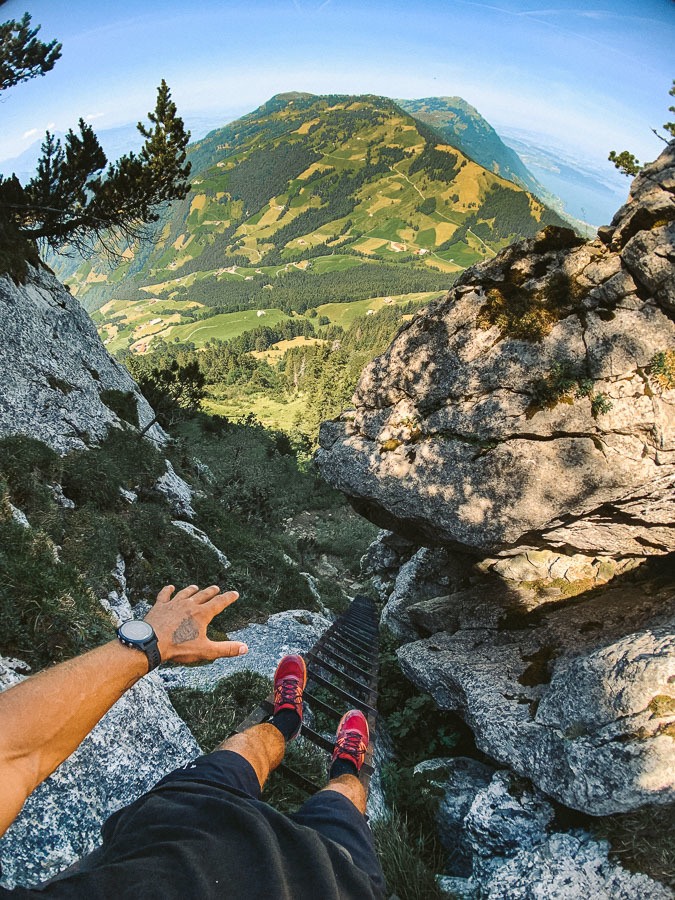
HOW DOES IT WORK HIKING TO MOUNTAIN HUTS
While you are hiking in Switzerland, it is inevitable you will come across some incredible mountain huts. I didn’t know much about the hut culture in Switzerland but once I was in on it, I loved it. Basically, the mountain huts are kind of like mountain cabin hotels. They usually have a restaurant and also a number of dormitory-style rooms.
For average-sized huts, it is common for a family to live up in the hut on the mountain during the summer and hiking season and visitors can book a night or more up at the hut. When they arrive they have dinner and breakfast included in their nightly fee. I stayed overnight at five different huts (which were listed above) and most ranged from about $60 a night to $100 a night per person including breakfast and dinner.
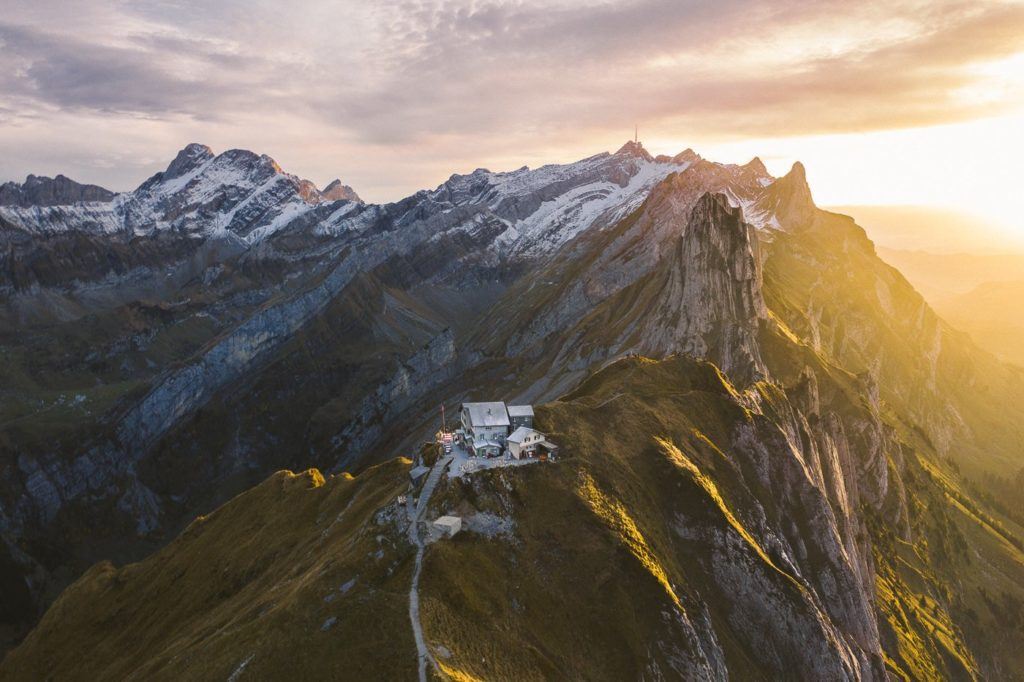
The ‘huts’ are actually pretty fancy and have heating, nice restaurants, balcony, alcohol, games, books, and much more. All you need to bring is a sleeping bag liner and your hiking gear and you are set. You can also shower at most of the huts (usually included in the price also).
I always did a one-night stay so I would hike up, watch the sunset and stay the night. I would then hike at sunrise and explore further on before hiking back down.
Many hikers like to do hut-to-hut mountain hiking, which means you map out several huts that are within hiking distance of each other and you do a multi-day trek where each night you will make it to a new mountain hut on the connecting trails throughout the Swiss Alps. It’s a great way to hike because you don’t need to carry all of your food, heavy camping gear, or warmer clothes for the cold nights outside. You do all your eating at the hut restaurants and carry a few snacks with you and sleep in the comfort of the cabin dormitories. If you are in Switzerland in the summer, I can’t recommend it enough.
You can click on one of the following links to visit my blog post about the mountain huts I visited. I stayed at Gleckstein Hut , Trift Hut , Ebenalp Hut , Baregg Hut and visited many others while passing through on hikes in Switzerland .
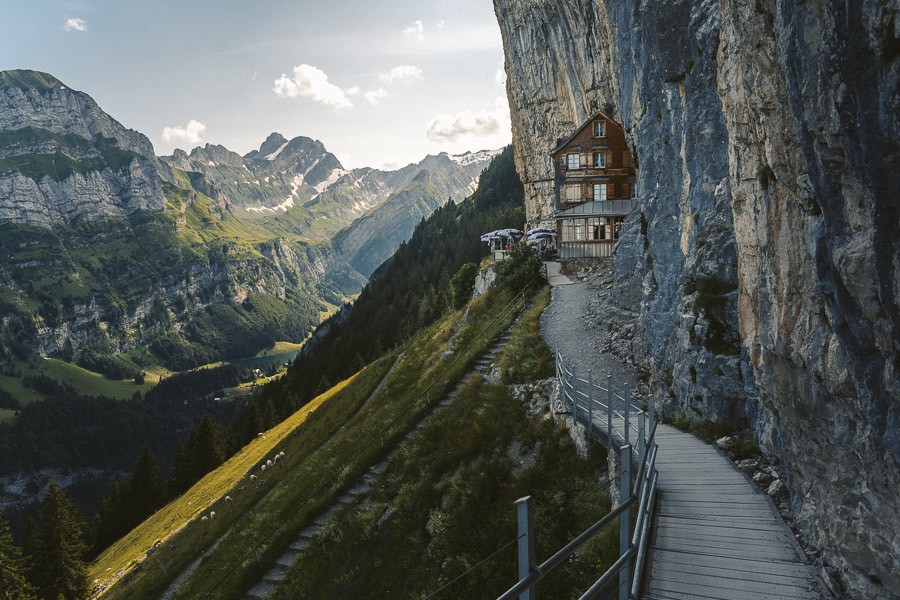
The other key point to remember is that most meals in Switzerland are $20-$40 at least so when you consider you are getting two meals included, the accommodation is really only $30-40 per night, which will be the cheapest accommodation you find in Switzerland but the best view!
If you are planning to stay at a lot of mountain huts you can buy a Swiss Alpine Club (SAC) membership , which also involves a rescue service if you get stuck on the mountain. This membership gives you a discount of usually 40-50% off the regular price of the hut price. It costs about $80 USD for the yearly membership so after three overnight stays you have made your money back and you are supporting the mountain hut owners of Switzerland, who you will see are all really nice families.
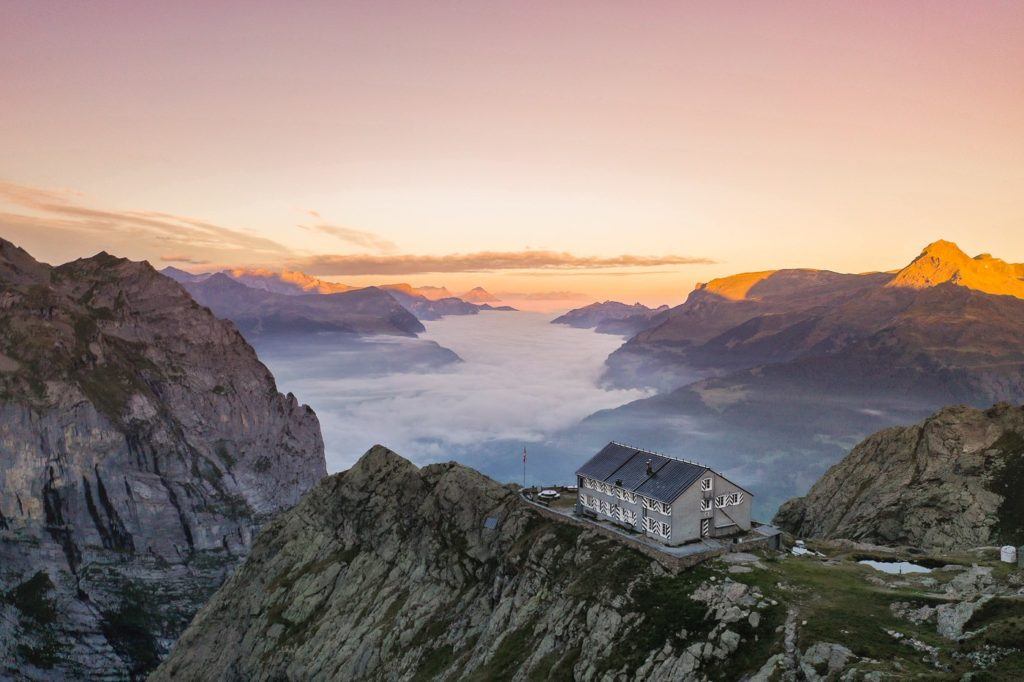
CAN YOU DRINK THE TAP WATER?
The tap water was one of my favorite parts of Switzerland. After traveling through Asia for many years, I was used to the constant battle to find safe drinking water without buying wasteful plastic bottles. In Switzerland, the water is 100% safe to drink from taps in buildings and it even goes one step further.
Most towns and even trails have fountains and taps installed (often very intricate and beautiful fountains) and you can fill your bottle up straight from the fountain. With so many glaciers and alpine regions, there is no shortage of fresh, clean water in Switzerland. I always carry a Hydroflask with me and keep it full all the time so I can stay hydrated and save money on buying drinks.
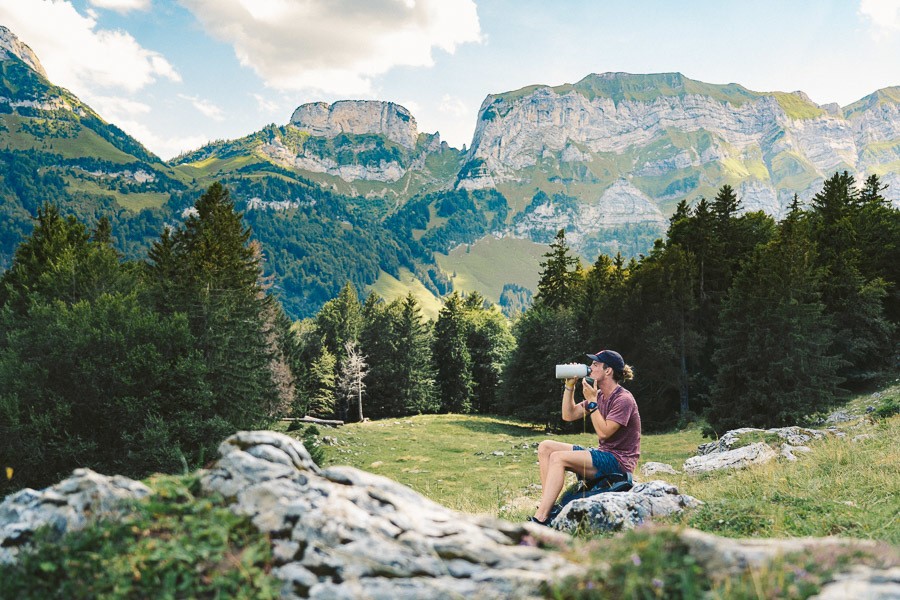
A UNIVERSAL TRAVEL ADAPTOR WILL DO THE JOB
In Switzerland, the adaptor you will need is for TYPE J outlets compared to the rest of Europe that uses Type F. To avoid all the confusion of plugs, it’s best to get a universal adaptor that works for any device in any country outlet. I’ve had one for two years and it wasn’t expensive at all and takes the hassle and stress out of figuring out the outlets and plug types of each country. Importantly it means you don’t need to carry lots of adaptors and plugs for every country, just one that fits them all. I’ll link the one I’ve used for two years here: Universal Travel Adaptor
ESSENTIAL HIKING GEAR FOR SWITZERLAND
Hiking in Switzerland is very different in the summer to the winter, which will obviously make a huge impact on what type of clothes and gear are necessary. However, for this little section on essential gear, I will just point out a few key items that you should have for basic hiking in average conditions. You’ll need hiking boots or trail running shoes, beanies, hiking socks, and more but I’ll write a more detailed post about that another time. This is just a quick round-up of three essentials but for a full rundown of all the hiking gear and camera gear I use you can check out this post: MY TRAVEL PHOTOGRAPHY GEAR: WHAT’S IN MY BACKPACK
- Hiking Poles : Not everyone will use them but the Swiss are religious about them, unlike many Australians or Americans. You will learn to love them too as they take the strain off your knees and quads on both the uphill and the downhill. I used them to power up hills and help as a shock absorber on the way down. You can get them quite cheap but I found that there were two components to my hiking poles that I really liked. They were foldable down to a small size so I can put them in my backpack side pocket and they were the carbon fiber/lightweight style. They are a bit more expensive but I used them a lot and they became a necessity in the end. I’ll link you here to the carbon-fiber LEKI foldable hiking poles that I bought. I purchased them in Switzerland so they were very expensive but you can get them online much cheaper. My Hiking Poles: Leki Micro Vario Carbon Fiber Hiking Poles

- Down Jacket : The next key item to have is a down jacket. Even in the summer when it might be hot at lower altitudes, once you reach the summit it gets that much colder. If it’s a sunrise or a sunset, I always had a lightweight but very warm down jacket with me. I chose one that I could stuff into my backpack when it was too hot but could always afford to carry it size-wise in case it was colder than I expected and I used it too many times to count. I’ll link you here to the Patagonia lightweight down-jacket that I bought online before heading to Switzerland. My Down-Jacket: Patagonia Nano Puff Jacket
- Hiking Gloves : They might seem like a small item but your hands are the first things to go when it gets cold. They don’t have to be amazing gloves but you want something. I chose gloves that still let me operate my camera and phone but had a decent amount of warmth too. Once you start doing sub-zero hikes in Switzerland, you will want a more heavy-duty type of glove. I’ll link here to the gloves I used in Switzerland that let me still operate my camera. My Hiking Gloves: North Face E-tip Gloves

YOU ALWAYS NEED A TICKET
There are many countries around the world where you might be able to get away with little hacks or find ways to cheat the system. In Switzerland, the system is so efficient that you shouldn’t bother. When we found the prices of the train so high, of course, it crossed our mind whether we should risk it and not buy a ticket at all. We still bought the ticket and quickly found out then on most major routes the tickets were checked by the staff who walk up and down the train.
It is very expensive to ride the trains but don’t try and outsmart the system as it is just too efficient. If you get caught on the train without a ticket it is a $99 USD equivalent fine plus the cost of the far you were taking so it’s not worth the risk. Of course, you should have high morals and never even consider this but when you purchase a train ticket for $100+, everyone begins to question their morals!
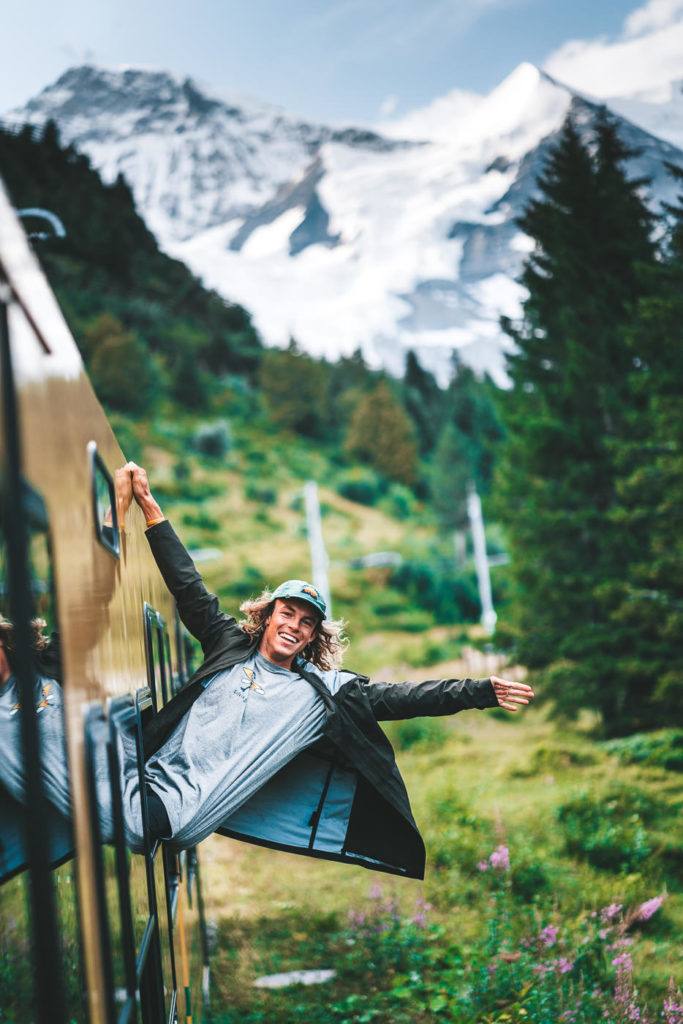
RED AND BLUE TRAIL MARKERS
Red and white markers on the trail mean it is a Swiss walking trail and you won’t need any expertise in climbing. It doesn’t mean it’s easy though as it could be 20 kilometers of hiking trails with 2000m of consistent incline but it won’t be technical so you will still need to look into the hike first to know what you are up against. Blue and white markers will be painted when they are indicating a technical or alpine route. Sometimes they are still quite tame but again, this is a warning sign that it is not going to be a leisurely walk on a trail and you can expect some kind of rock scrambling or climbing to be involved.
Swiss locals have years of experience on the trails so never compare yourself to a local and assume you can do it. I saw some local children on hikes that were far more experienced than me so you are better off comparing yourself to your previous efforts when deciding if you can take a certain route or make a certain climb.

YOU HAVE TO TRY A VIA FERRATA
For those who don’t know what a Via Ferrata is, it’s basically a series of ladders, steps, and rock climbing that leads you up a wall. You are wearing a harness and clip into a strong wire at the start of the Via Ferrata. From that point, you are always clipped in with at least one clip.
Every 10 steps or so, you reach a new section of wire and you unclip one Carabiner clip from the old section and attach it to the new section. Once it is firmly secured, you unclip the second clip from the old section and also add it to the new section so you now have two Carabiner clips in the new section and you move another ten steps.
I had never heard of it before Switzerland but it fast became one of my favorite activities. I did four Via Ferrata courses across Switzerland and they were definitely a highlight of my trip.
You can click any of the links for the places I did a Via Ferrata in so you can check out those specific blogs. My Favorite Via Ferrata experiences were: Murren to Gimmelwald Via Ferrata , Furenalp Via Ferrata , Rotstock Via Ferrata , and Pinut Via Ferrata .
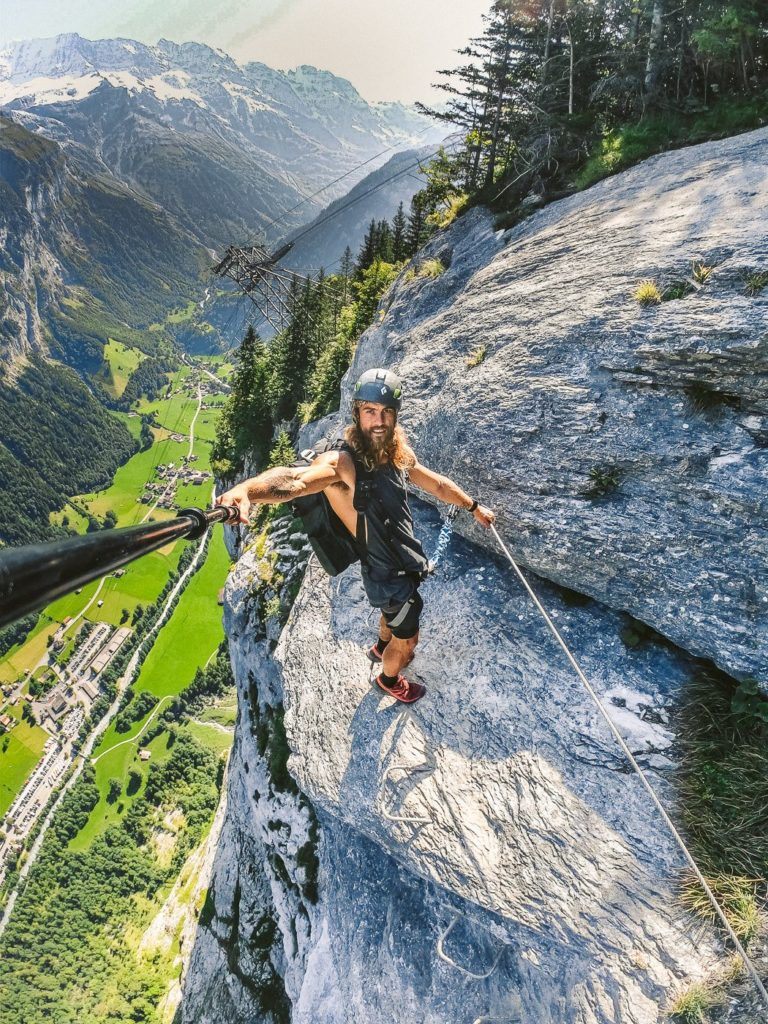
CHECK THE SUMMIT CONDITIONS BEFORE YOU HIKE
Many trails and summits in Switzerland have a webcam at the top. This isn’t to ruin the surprise of the view for yourself but to check the weather. Remember in some cases you may be at accommodation several thousand meters below the summit you are hiking up so there can be a big difference and you may want to check that there isn’t a huge layer of fog and maybe wait for a more appropriate day.
I used the webcams as a guide but sometimes the weather can change quickly. Simply search webcam+name of hike and you will find if there is one. One site that has many of them is Bergfex , which I used regularly.
If you have multiple days to plan your activities, why not give yourself the best shot of not getting rained on or the greatest opportunity to ‘get lucky’ with a beautiful sunrise or sunset? Once you start planning by the weather forecast, you will realize that luck plays a smaller part than you think. I only found out about the Switzerland travel tip after a few weeks in the country but then used it to plan my hikes for certain days when I could get the best weather and photos.
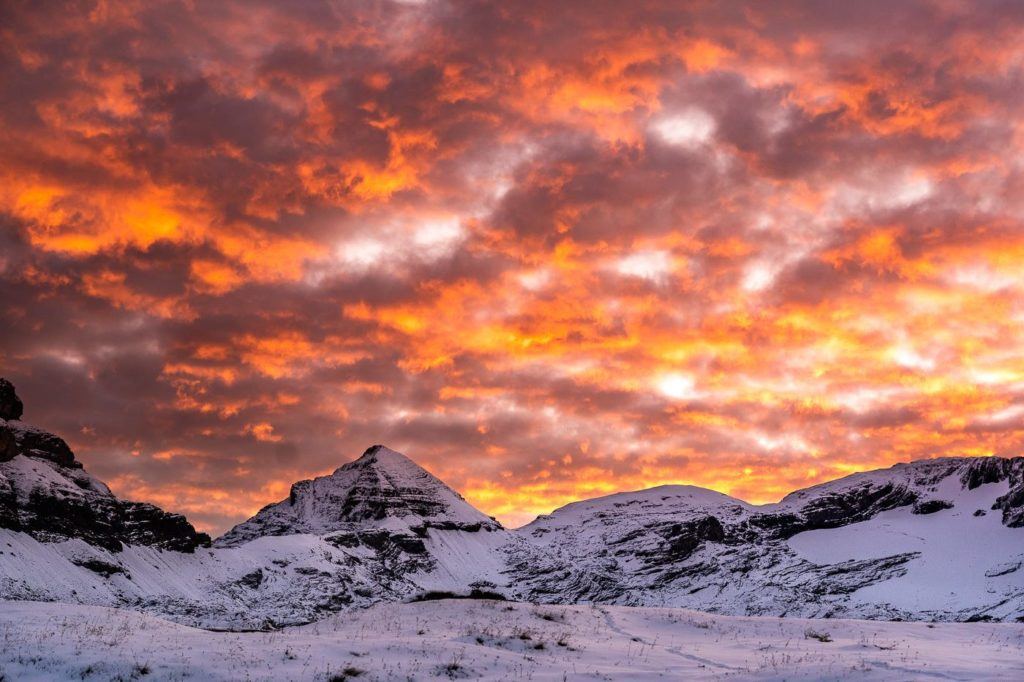
FREE OUTDOOR GYMS IN SWITZERLAND
Switzerland is one of the most expensive countries in the world so you would expect working out to cost you an arm and a leg also. However, we found out that there are lots of outdoor gym courses hidden in the forests of Switzerland. It’s a bit strange but pretty cool when you see the locals actually using them.
Basically, there’s an app and a website called Zurich Vita Parcours and you can just search your location and find the nearby outdoor gyms. They are often set up at several stations in a little forest course so you have to walk or jog between them. Josh and I found lots throughout our trip and they were really well equipped and kept us in shape. This is one of my top tips for traveling in Switzerland, especially if you are there for an extended period of time
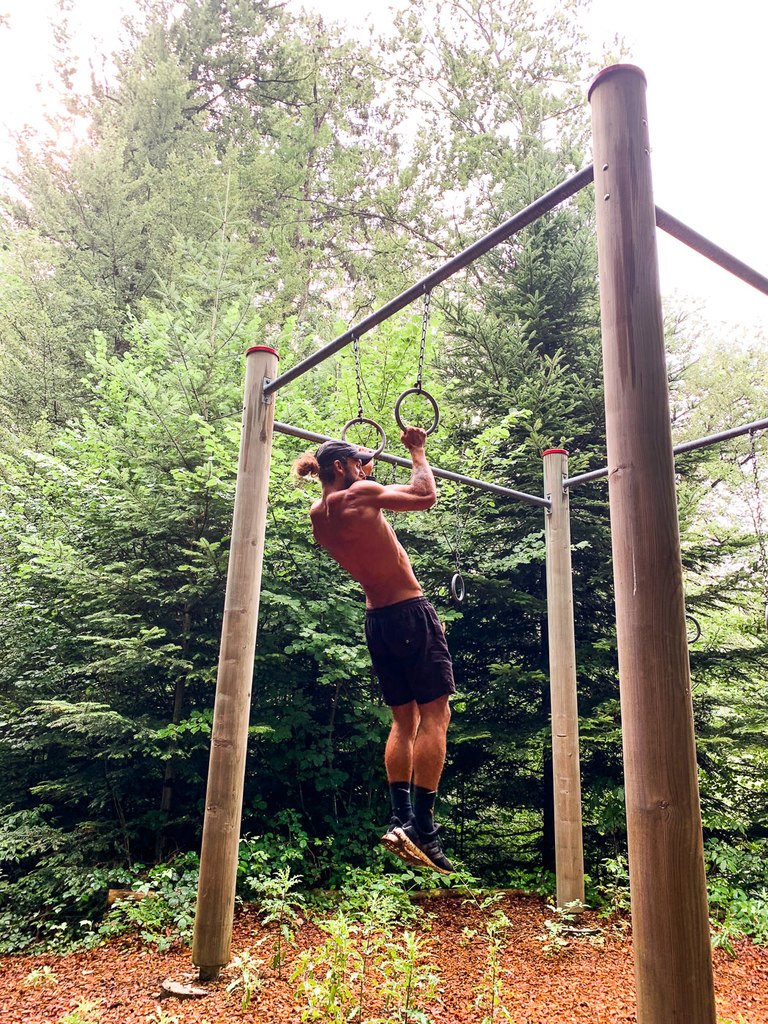
SAC HIKING SCALE -DIFFICULTY RATING GUIDE
Switzerland has a SAC difficulty scale, which labels hikes with a technical score such as T2 or T5 etc. All of the hikes in this blog post are T4 with a few T5 exceptions. I have included the full table/difficulty scale below so you can see what level suits you and the explanation of each level.
Below you can see the Swiss Alpine Club (SAC) difficulty rating scale I mentioned earlier in the article. Each level from T1 to T6 is explained in detail so you can understand what to expect when you see that terminology during your time in Switzerland.
- T1: Hiking – Well-developed and marked paths, mostly flat or slightly inclined, suitable for walking in trainers, navigation without a map possible.
- T2: Mountain hiking – Continuous route marking, some steep sections with a risk of falling, trekking shoes recommended, basic navigation skills required.
- T3: Challenging mountain hiking – Footpath available, partially exposed areas with ropes or chains, steep terrain and danger of falling, good trekking shoes and average navigation skills needed.
- T4: Alpine walking – No guaranteed path, sometimes requires the use of hands, exposed with various terrains including grass heaps, rocky slopes, and snow-covered areas, stable trekking shoes, terrain assessment, and good navigation skills necessary.
- T5: Challenging Alpine walking – Often without a path, includes simple climbing sections, exposed and challenging terrain with steep slopes and snow-covered areas, requires mountaineering boots, excellent navigation skills, proven alpine experience, and familiarity with alpine equipment.
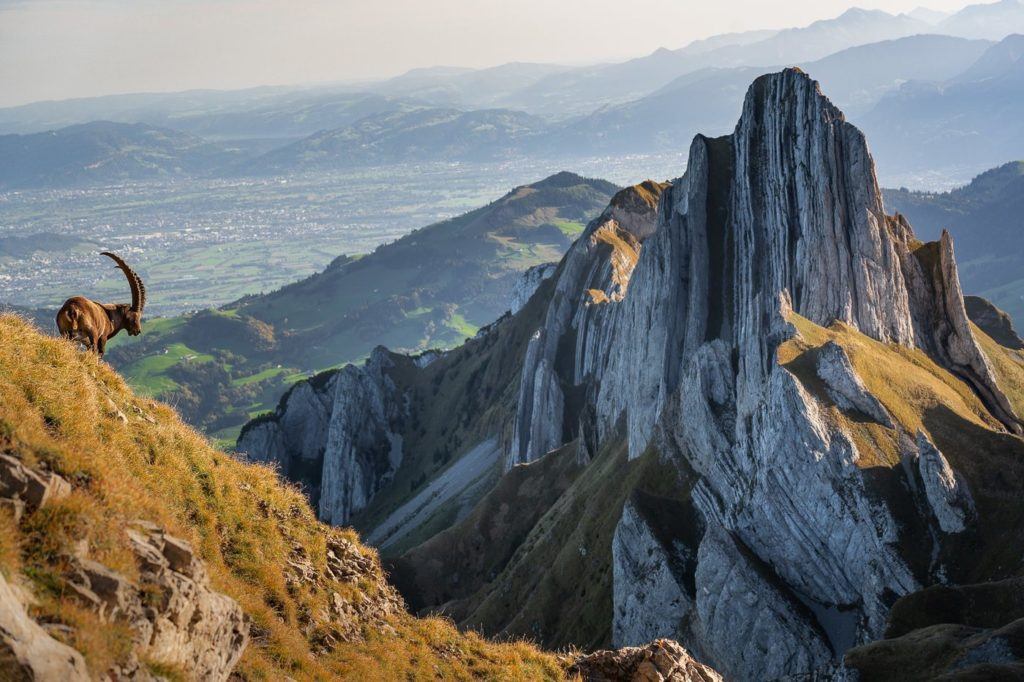
MAPS IN SWITZERLAND
used Google Maps for getting around Switzerland and planning my train transits, which is important to see when the last train is, which connection you need to make, and what the quickest route is. You can also use the SBB app, which is even more accurate than Google Maps but I still prefer Google Maps as it includes any walking or a more broad scope of getting around. The SBB app is the official transport app of Switzerland and you can use it to get cheap, non-peak-time train tickets and it has all of the scheduling and official information about transit in Switzerland.
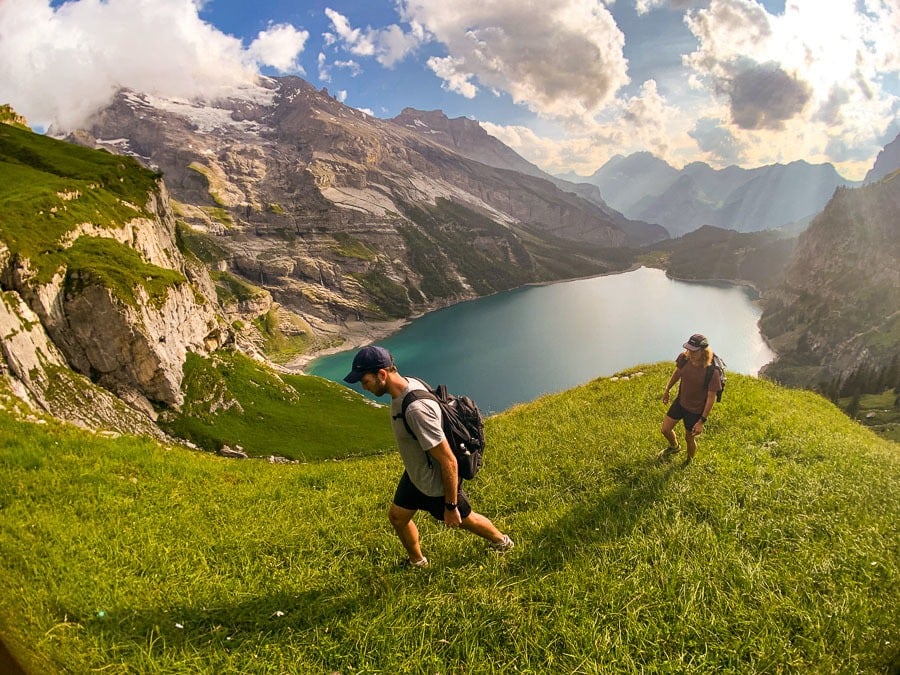
START SMALL AND EASE YOUR WAY INTO IT
If you are a city dweller or into moderate outdoor activity only, this applies to you. However, even if you are quite athletic you should still listen up. Switzerland is not your average adventure. A tough hike from where I’m from in South Australia is 400m of incline and 10km return. In Switzerland that might be considered a warm-up.
This is a country that thrives in the mountains so make sure you don’t bite off more than you can chew on your first few trails. Pick a couple of hikes that are good for beginners. Don’t let your ego lead you astray thinking you are well above a beginner hike because a Swiss beginner hike is relative to a regular or tough hike in other parts of the world.
Try and stick to hikes under 10km in distance and with no more than 600m of incline for your first couple. If you are finding them too easy then start looking at 1000m+ vertical hikes and longer distances or multi-day hikes.
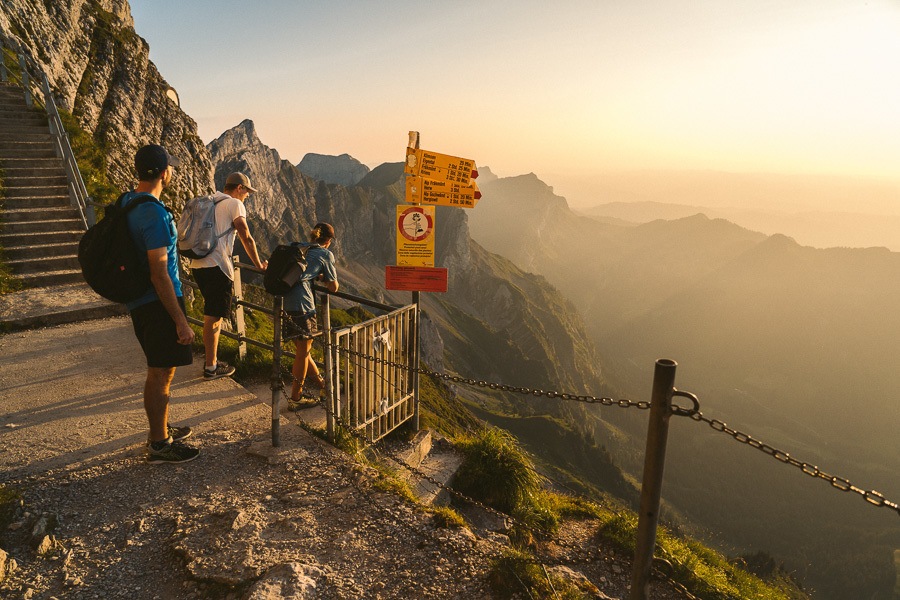
CABLE CARS IN SWITZERLAND: WHAT YOU NEED TO KNOW
The cable cars in Switzerland are great. If it’s a big hike, you can either catch one up to the summit and hike down, or hike up and catch the cable car down. If you aren’t interested in hiking just catch one up and down. It makes the mountains accessible to all types of hiking and adventure abilities.
I think this is one of the top things to know before traveling to Switzerland so that you understand you don’t need to be an expert hiker to enjoy the awesome views.
Many cable cars are not covered by the Swiss Half-Fare Pass or the Swiss Travel Pass or some may give you a small discount. I found this a bit strange when the Swiss Travel Pass is more than $100 a day and it still didn’t include all cable cars but it’s because many cable cars are privately owned and run and not part of the Swiss transport system like the trains and buses.
Cable cars can range from $8 to $60 depending on the journey with some of them taking you several kilometers. It can add up quickly and you can save yourself a lot by hiking down from summits.
It’s important to note that the cable cars often stop running well before sunset and not early enough for sunrise. This means if you want to see the golden hour, you will need to get your hiking boots on and your head torch ready. We did this many times and it was always worth it but always a pretty wild adventure in the dark. Make sure you check the timetable of the cable car so you know when the last ride down is to be sure you are safe.

SUNRISE & SUNSET SPECIAL CABLE CARS
I did say above that the cable cars don’t run during sunset and sunrise most commonly. However, there are a few special services that happen several times a month or on special occasions that specifically cater to those who want to watch the sunset or sunrise at the summit.
I was lucky enough to hear about two of these services and made the most of one while the other was too expensive. There is a sunrise train to the Riffelsee in Zermatt . Here you can see the reflection of the Matterhorn in the lake at sunrise. That ticket cost $100 USD and included breakfast at the top of the Gornergrat . I thought that was a bit much and hiked up by myself.
The second was the ‘late’ cable car at Mount Niesen near Interlaken . At Mount Niesen, there is a beautiful restaurant, and several times a month in the summer they run cable cars all the way until 10 pm so that diners can enjoy the sunset. There is no massive fee like at the Riffelsee Rail in Zermatt, the regular Niesen cable car just runs later so it isn’t expensive.
I hiked up, watched the sunset, and then caught the cable car down at 9 pm after enjoying soup at the restaurant after sunset. Definitely ask around and try and plan these into your trip because sunrise or sunset at a summit in Switzerland is worth the planning and effort. This is a Switzerland travel trip I wish I had heard about earlier in my three-month stay!
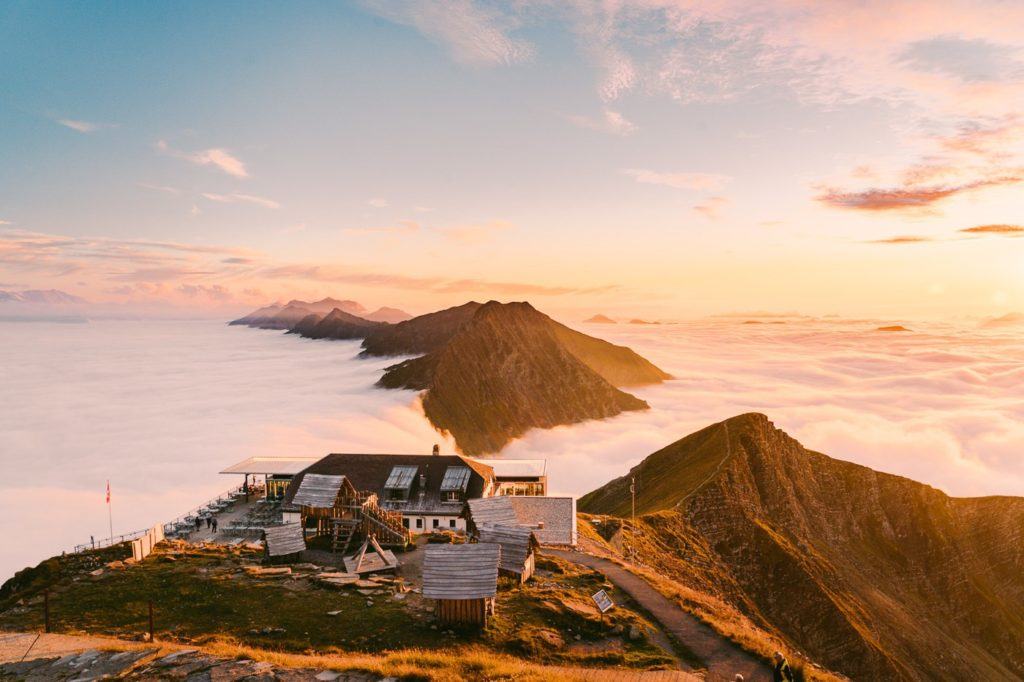
THE BEST VALUE FOOD IN SWITZERLAND
I’ve established by now that Switzerland is very expensive so, of course, the food is right up there with things you probably can’t afford while on your Swiss tour. Meals can cost upwards of $30 and eating at restaurants just isn’t an option for many travelers who frequent the grocery store and smaller cafes.
However, if you don’t find yourself at a restaurant or mountain hut go for the soup and ask for extra bread. Here are a few reasons why soup is always the best option:
- The soups throughout Switzerland are amazing and they are a bit of a specialty with a unique recipe at every mountain hut or cute restaurant.
- Soup is usually half the price of any meal but when the free side of the bread is added in, it’s usually just as filling.
- It will warm you up on a chilly adventure.
- You can usually ask for an extra bit of bread and for just $8-12 you have filled yourself up instead of a $25+ pasta or regular meal.
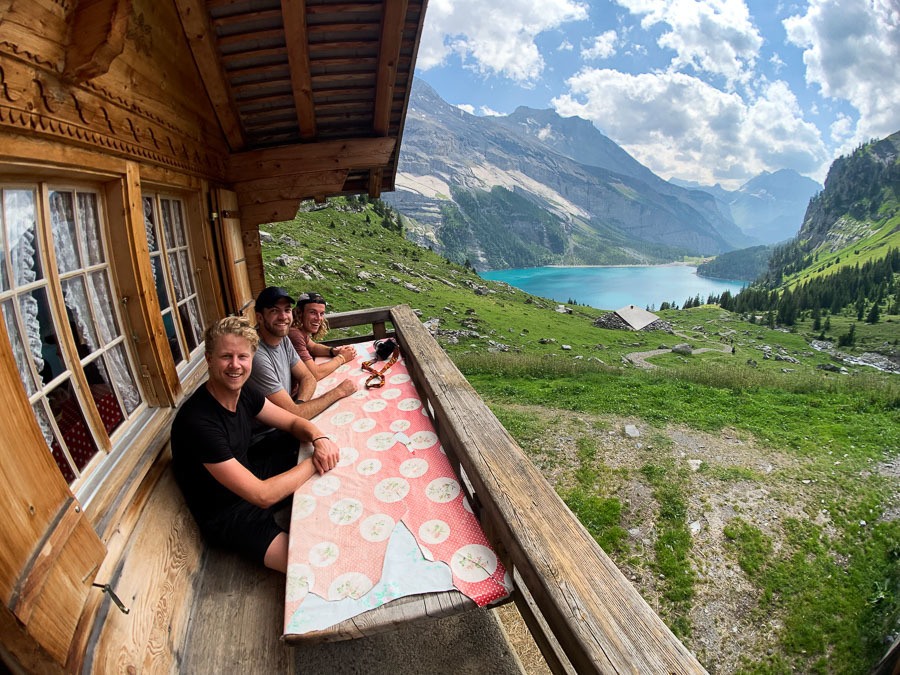
Those are my top Switzerland Travel Tips and I hope they help you have a smooth trip through Switzerland. I’m sure you’ll learn lots more helpful travel hacks and Swiss travel tips as you go so do let me know in the comments if you think there are any more tips that I should add to this list!
MY SWITZERLAND HIKING GUIDES
I spent 100 days hiking in Switzerland and created a guide for different regions around the country. You can click on one of my Switzerland hiking guides below to help you plan your trip.
- The Complete Guide: 50 AWESOME HIKES IN IN SWITZERLAND
- The Via Ferrata Guide: 4 EPIC SWITZERLAND VIA FERRATA COURSES
- Lauterbrunnen Guide: 10 AWESOME HIKES NEAR LAUTERBRUNNEN
- Interlaken Guide: 15 AWESOME HIKES IN INTERLAKEN
- Grindelwald Guide: 12 AWESOME HIKES NEAR GRINDELWALD :
- Mürren Guide: 7 AWESOME HIKES IN MURREN
- Appenzell Guide: 9 AWESOME HIKES NEAR APPENZELL
- Chur Guide: 7 AWESOME HIKES NEAR CHUR
MY SWITZERLAND TRAVEL TIPS
- For Backpackers: SWITZERLAND BUDGET BACKPACKING GUIDE
- Travel Tips: 20 THINGS TO KNOW BEFORE VISITING SWITZERLAND
- Transport Tips: RENTING AND DRIVING A CAR IN SWITZERLAND
- Accommodation Guide: 30 BEST PLACES TO STAY IN SWITZERLAND
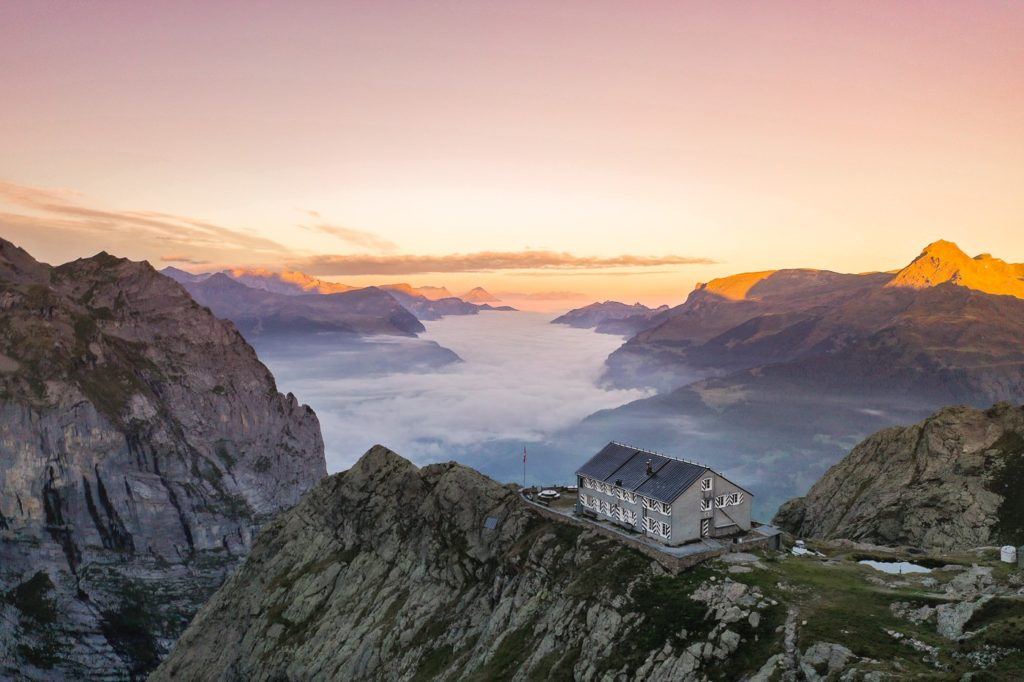
William Henry
Tuesday 18th of July 2023
Thank you so much for lv bunny cream varsity jacket sharing such a great and knowledgeable blog. Thanks!
Wednesday 22nd of February 2023
Love all the details you provide like technical epertise needed/optional routes, etc. Also love the pictures. All of this is so helpful in planning our upcoming trip.
Sunday 8th of May 2022
Thanks for this detailed review. I would also add that it is also important to have a vaccination now or a covid test. Websites like https://personichealthcare.com/ can help you get it done quickly. This is essential for a safe and easy trip to Switzerland
Saturday 16th of October 2021
Thanks for the armchair travel experience to one of my favourite countries during this time of limited travel. An important thing to know is that many gondolas and funiculars can be closed for maintenance a couple of times a year. Usually this happens after each high season. Of course being Swiss, they will have that information posted well in advance so you can plan around it. Here is a website that lists some of the most popular oneshttps://holidaystoswitzerland.com/cable-car-and-funicular-closures-winter/ When I went hiking in Switzerland and was passing through one of the more main train stations, I would stop at a Migros Take-Away and grab one of their delicious sandwiches to eat on my hike. Or pop into a mini-sized Migros or Coop grocery stores conveniently located in the train stations and purchase my trail meal there (Swiss chocolate anyone?)
Sunday 29th of August 2021
I bought a Lonely Planet guide and, given that hiking is a primary activity in Switzerland, was shocked to find that the info they had was paltry. I ran across your blog, which is an absolute goldmine and the best info I found scanning the internet today. I returned my Lonely Planet guide.
I'm planning to go in October, but worried about paths not being open. I'm fine with day hikes since it sounds like huts won't be open, but you mentioned trails might be closed too? Just because of snow or more officially? What are your thoughts on going in the first week of October? Am I better off just waiting for another time of year?
While every year the weather changes, I was in Switzerland til October 25 on my visit. There may be some routes closed but the first few weeks of October should have a decent number open. It depends on when the first snowfall is in that particular region. Many of the lower elevation trails may well be open.

10 Days in Switzerland: Detailed Trip Itinerary (+Map & Tips)
By Author Jurga
Posted on Last updated: May 6, 2024
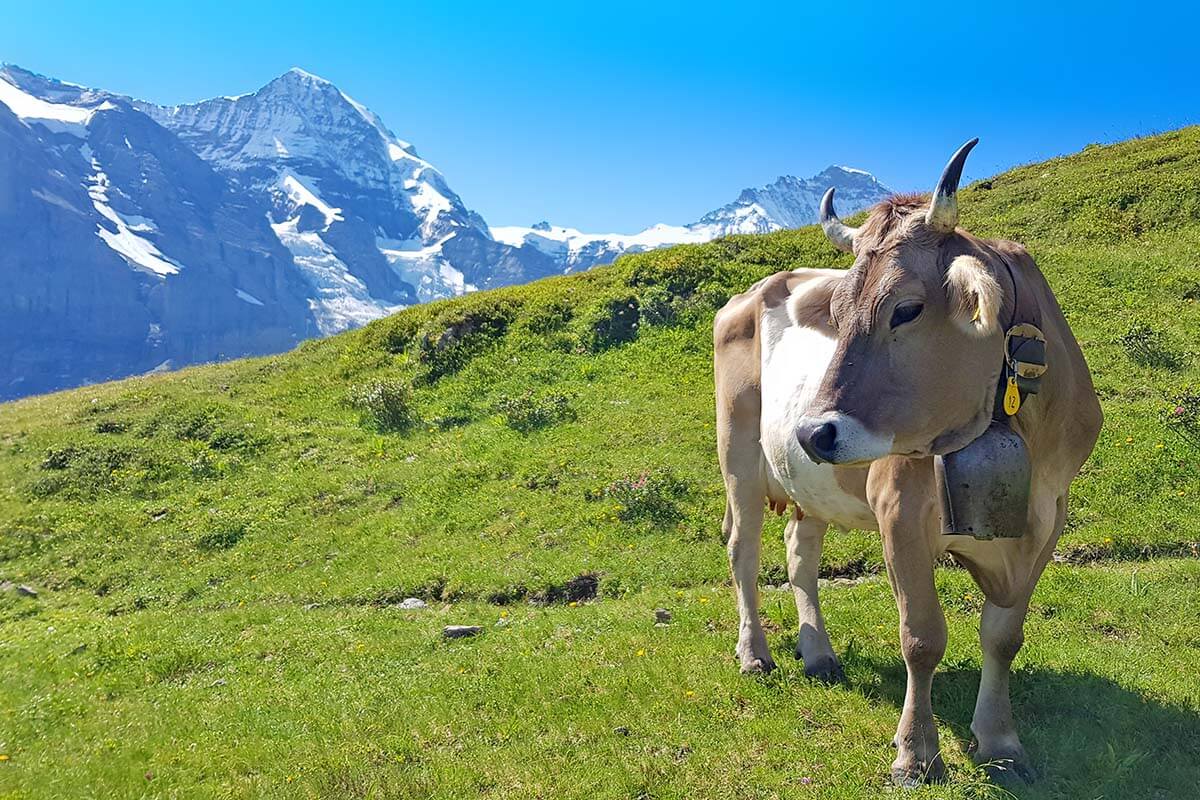
Visiting Switzerland for the first time, have about 10 days, and wondering which places are not to be missed and how to plan your trip? In this article, we share a recommended 10-day Switzerland itinerary that is perfect for your first visit.
If you want to see ‘everything’ in Switzerland in ten days, you should know that even several months wouldn’t be enough for that…. We have been going to Switzerland at least twice a year for almost three decades and still feel like we just scratched the surface…
The good news is that – with some good planning – you can see some of the best cities and visit several of the most impressive nature destinations even if you only have 10 days in Switzerland.
So to help you plan a trip, in this guide we share a detailed 10-day Switzerland itinerary that brings you to some of the most famous places in the country : Lucerne, Interlaken, Zermatt, Geneva, Bern, as well as the most iconic mountain destinations that should be at the top of every Swiss bucket list.
We also include a map and practical information such as how to get from one place to the other, how long it takes, and where to stay. At the bottom of this guide, you can also find several additional suggestions of places to add to your Swiss itinerary if you have more time.

Info & Tips for Planning a Trip to Switzerland
When to visit: Switzerland is a year-round destination and all the places in this itinerary can be visited in any season. However, your experience and many of the things you can do will highly depend on the season when you travel. For summer scenery and hiking, visit between late May and early October; for snowy landscapes and skiing – between Christmas and Easter.
Airports: The biggest airports in Switzerland are in Zurich and Geneva. This itinerary starts and ends in Zurich, but it’s very simple to adjust it if you are flying in or out of Geneva. In addition, you can easily extend this trip and combine it with France or Italy as well (flying in or out of e.g. Milan).
Getting around: The best way to travel around Switzerland is by train. With 10 days in the country, consider getting a Swiss Travel Pass that includes all public transport (and more). Switzerland is also a nice country to explore by car. However, traveling by car is only convenient if you are planning on visiting many smaller places in the mountains and not too many cities. In that case, you can also rent a car , but it’s not necessary for this itinerary. In most cases, it will not make your journey any faster or cheaper and you will also have to look (and pay) for parking, etc.
Just to avoid any confusion – you can follow this Switzerland itinerary no matter how you choose to travel – by car or public transport. In our descriptions and time indications, we assume you take a train. If you decide to drive, be sure to double-check driving times and distances, especially if traveling in winter. Also foresee some extra time if driving around the main cities at peak times, and be sure that your accommodation has parking (nearby).
Tours: If you prefer not to change hotels too often, you can also visit many of the places highlighted in our itinerary by taking day trips by train or organized tours from either Zurich or Lucerne. There are even day tours from Zurich to Zermatt ! However, we only recommend this approach if your time is extremely limited or if you prefer to travel with local guides and not have to worry about practicalities.
MAP: To help you get a better idea of where everything is located, we created this map that should give you a good overview of how this trip could be structured. Take a look!
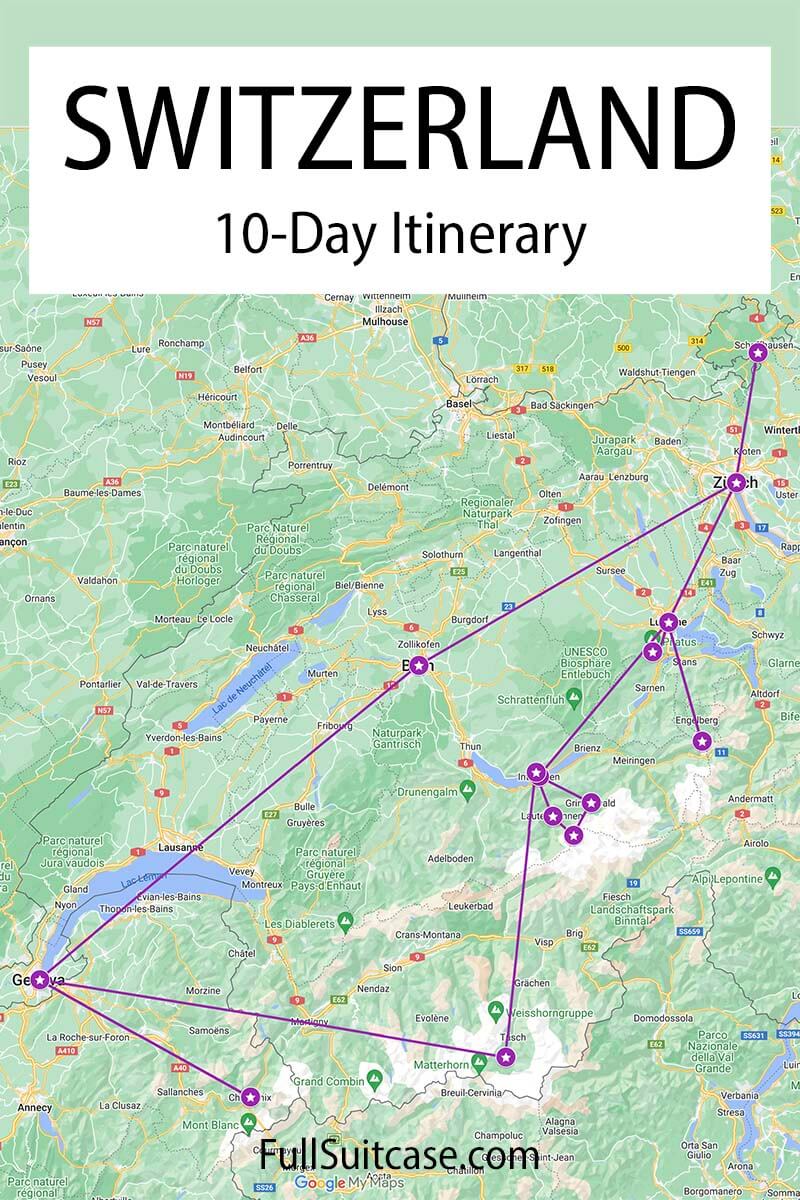
10-Day Switzerland Itinerary – OVERVIEW:
- DAY 1: Zurich area
DAY 2: Bern
- DAYS 3-4: Geneva area
- DAYS 5-6: Zermatt
- DAYS 7-8: Interlaken – Jungfrau Region
- DAYS 9-10: Lucerne area
- If you have more time
This is our recommended Switzerland itinerary for 10 days:
DAY 1: Rhine Falls & Zurich
Since many international travelers fly into Zürich, we start our Switzerland itinerary in this city. However, let me be completely honest with you – there are so many nicer places to see in just 10 days in Switzerland than its financial center.
So for this itinerary, we recommend just half a day in the city, in combination with a half-day trip to Rhine Falls , one of the largest and most powerful waterfalls in Europe. In addition, you can visit the medieval village of Stein am Rhein .
Good to know: You can easily get to Rhine Falls by train from Zurich; the journey takes about 1 hour each way. In that case, you’ll need to also book a boat ride . Alternatively, take an organized half-day tour that includes a boat ride as well. There are 3-4 hour tours like this one that only visit the waterfall and there are also somewhat longer tours like this 5-hour tour that also visits Stein am Rhein village.
No matter which way you travel to the waterfall, we recommend starting your day early. That way, you can spend the afternoon exploring the city center of Zurich.
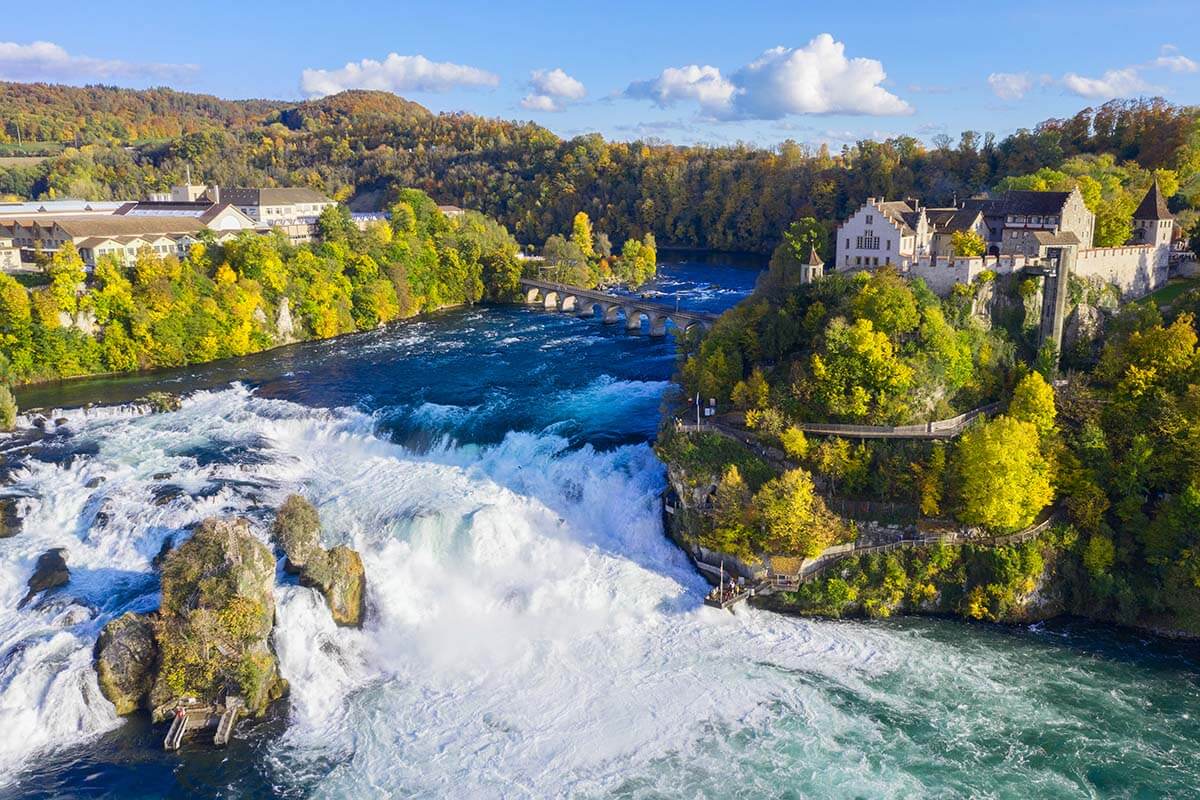
Some of the must-sees in Zurich include the Old Town ( Altstadt ) and its iconic churches (Grossmünster, Fraumünster, and St. Peter’s). A boat cruise on Lake Zürich is nice to do as well. There are city tours available, but you can also just walk around the old town on your own.
TIP: If you want to see more of the city in a short time, check out this highly-rated eTuk-Tuk city tour . It takes just a bit over an hour and has flexible departure times making it easy to incorporate it into any itinerary.
ACCOMMODATION: Stay in Zürich, ideally close to the central station. Here are some recommended hotels: Hotel Schweizerhof Zürich ($$$$), Ruby Mimi Hotel Zurich ($$$), or 25hours Hotel Langstrasse ($$).

On your second day, take a train from Zurich to Bern (1 hour), visit Bern, and in the late afternoon take a train from Bern to Geneva (2 hours). You can leave your luggage at the train station in Bern. You could also stay in Bern, but it’s not really a must and this way you can save one hotel change. Plus, you’ll also have more time in Geneva.
Even though Bern is the capital city of Switzerland, it’s a rather small and cozy town and you can easily see the best places in a few hours.
Don’t miss the Old Town with its ornate fountains, the Cathedral (climb the tower!), and Zytglogge clock tower . Be sure to walk to the Bear Pit and check out the famous Nydeggbrücke bridge. If you have more energy, climb to Rosengarten Park for nice city views.
If interested, you can also visit Einstein House. With more time to spare, consider visiting the Einstein Museum/Bern Historical Museum as well.
TIP: If available on the day of your visit, join this guided city tour . It takes just 1.5 hours and is a great way to get a quick introduction to the charming capital city of Switzerland.
LEARN MORE: Best Things to Do in Bern
ACCOMMODATION: Stay in Geneva for 3 nights. We recommend staying close to the station – it will make things so much easier. Here are some recommended hotels: Warwick Geneva ($$$$), Hotel Bernina ($$$), or VISIONAPARTMENTS ($$).
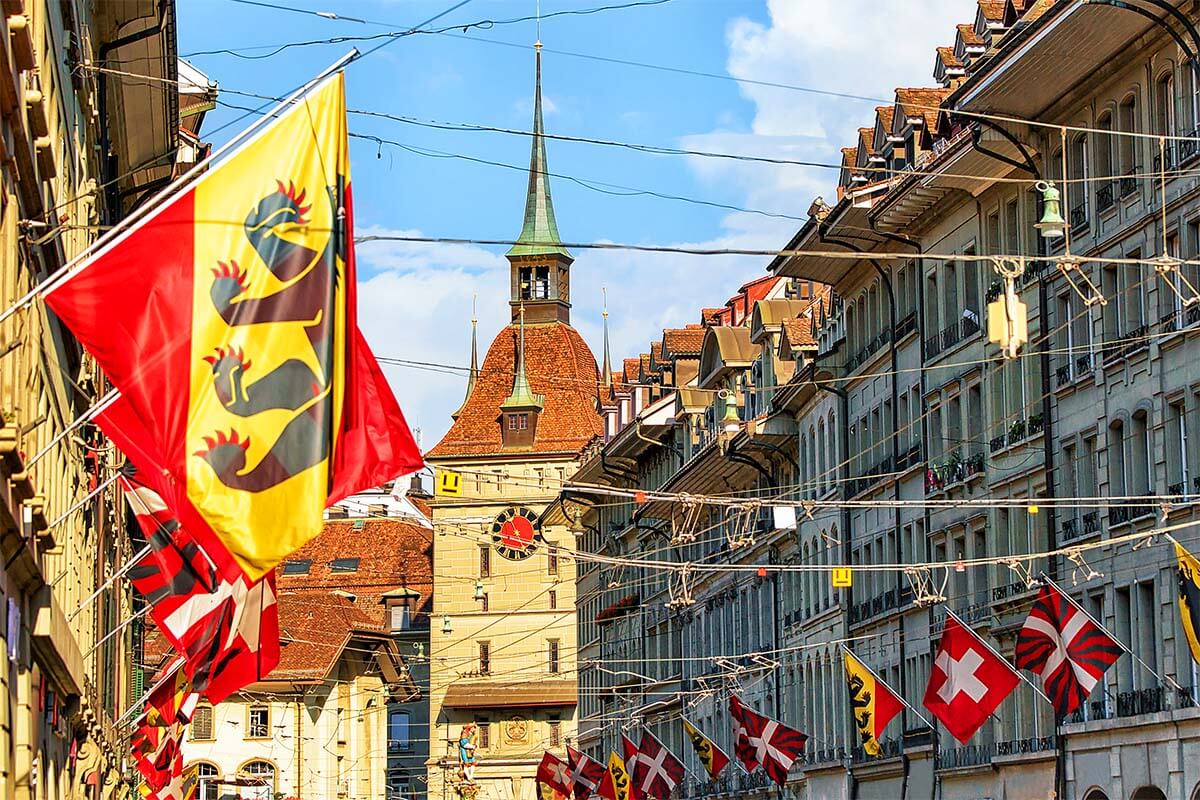
DAY 3: Geneva
Geneva is one of the most beautiful cities in Switzerland and has a lot to offer. With a full day in the city, you could see many of the highlights and maybe visit one museum.
In the Old Town, see the top attractions like St. Pierre’s Cathedral, Bourg-de-Four Square, English Garden, and the Flower Clock, and consider a chocolate tour . Check out the Jet d’Eau (fountain) in Lake Geneva and be sure to take a scenic lake cruise as well!
In the International Quarters, see the UN buildings, the Avenue of the Flags, and the Broken Chair monument.
Depending on your interests, you could visit one of the many museums. We recommend either the Red Cross Museum or the Patek Philippe Museum.
TIP: If you want to get the absolute most out of your trip, you could also consider a half-day trip to Annecy (France). In that case, you can explore Geneva in the afternoon, when you get back from the tour. There is also this highly-rated tour that combines the Geneva city tour with a trip to Annecy – perfect if you don’t have much time to do research and just want to see the top spots in a short time.
LEARN MORE: Best Things to Do in Geneva
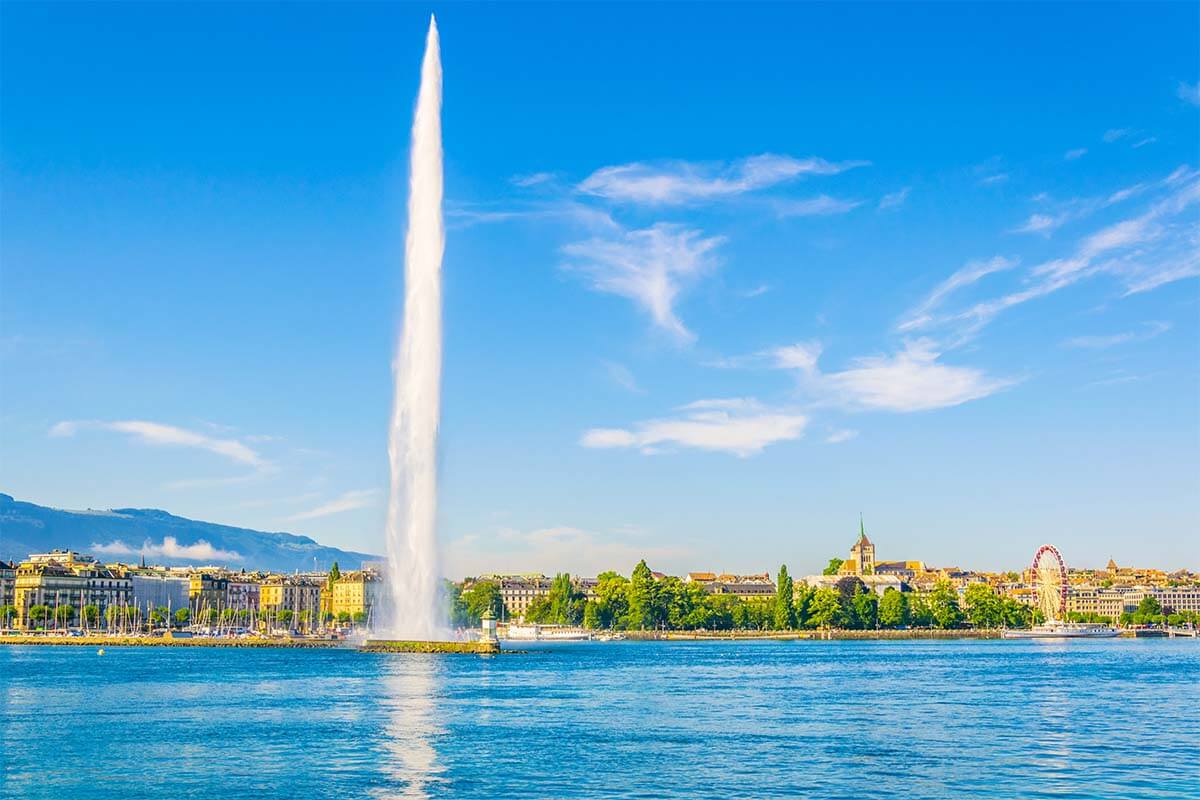
DAY 4: Chamonix (or Another Day Trip from Geneva)
There are many wonderful places that you could visit near Geneva. So if you have just one extra day in this area, the choice will be tough.
We already mentioned a day trip to Annecy . Other popular options include the smaller towns of the Swiss Riviera , Lausanne, Glacier 3000 , and Gruyères …
But the most popular day trip from Geneva is to Chamonix, France . This beautiful mountain village is located at the foot of Mont Blanc, the highest mountain in Western Europe.
There are many guided tours that can bring you to Chamonix from Geneva. They normally include a cable car to Aiguille du Midi where you can enjoy amazing panoramic views of the surrounding mountains. Most tours also include a trip on the famous Montenvers cogwheel train to Mer de Glace Glacier where you can also visit an ice cave.
Good to know: Day tours from Geneva to Chamonix take about 8-10 hours. So plan an entire day for this excursion.
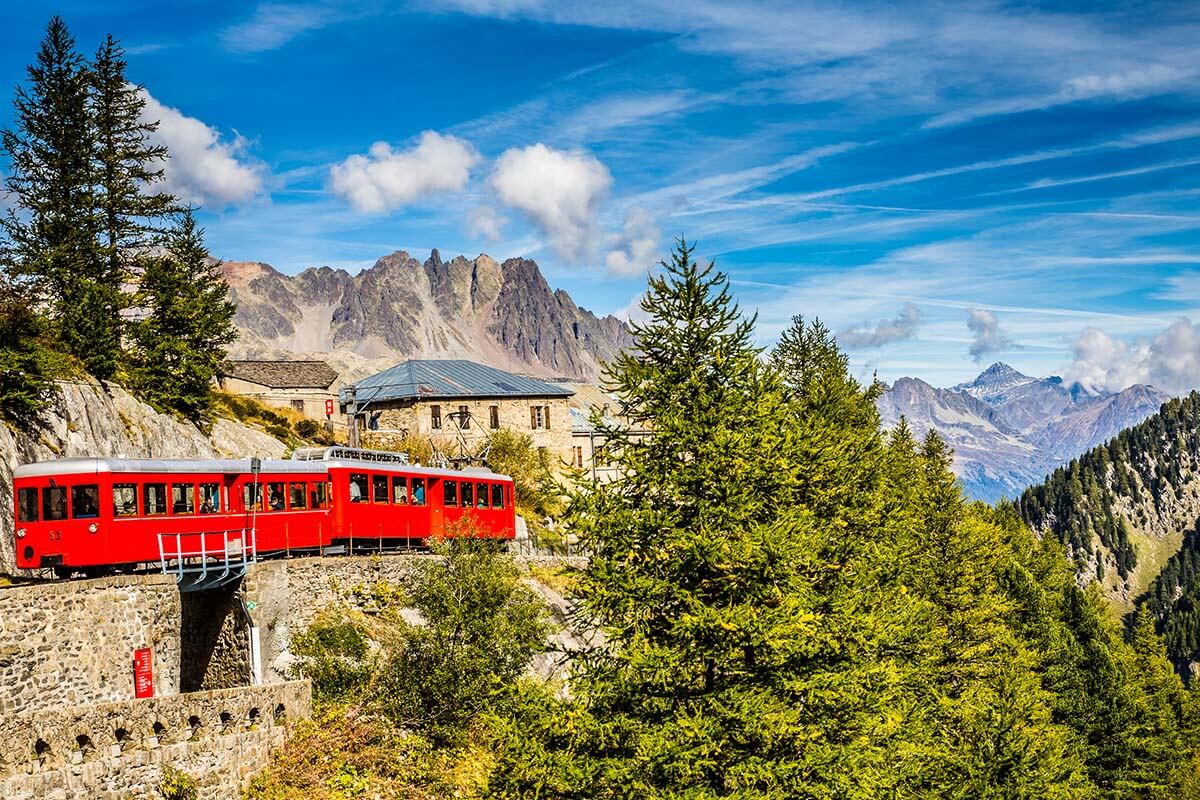
DAY 5: Zermatt
Today, take a train from Geneva to Zermatt . The journey takes about 3.5-4 hours, so we recommend leaving early in the morning. Zermatt is a car-free village and no matter how you travel – by car or public transport – you’ll need to take a train for the last part of the journey (from Täsch).
Zermatt is an Alpine resort located at the foot of the famous Matterhorn Mountain on the Swiss-Italian border. It’s known for luxury hotels and restaurants and some of the best skiing in Switzerland. In the summer, you could spend days hiking here.
For this itinerary, we suggest that you plan to spend 1 night in Zermatt, which gives you about a day and a half to explore. What exactly you’ll be able to see and do will depend a bit on the season when you visit. You also need to take into account the schedule of mountain trains and gondolas when planning your sightseeing itinerary.
On the day of arrival and after checking in at the hotel, take a mountain train to Gornergrat (you’ll need a ticket for it, but if you have a Swiss Pass , you can buy tickets on the spot with a big discount). Gornergrat is a mountain ridge at 3,089 meters (10,132 ft). From the top, you can see the Gorner Glacier and countless mountain peaks including the Matterhorn.
Train-schedule and season permitting, hike from Gornergratt to Riffelsee and potentially even further down to Riffelalp. The scenery here is breathtaking!
LEARN MORE: Best Things to Do at Gornergrat
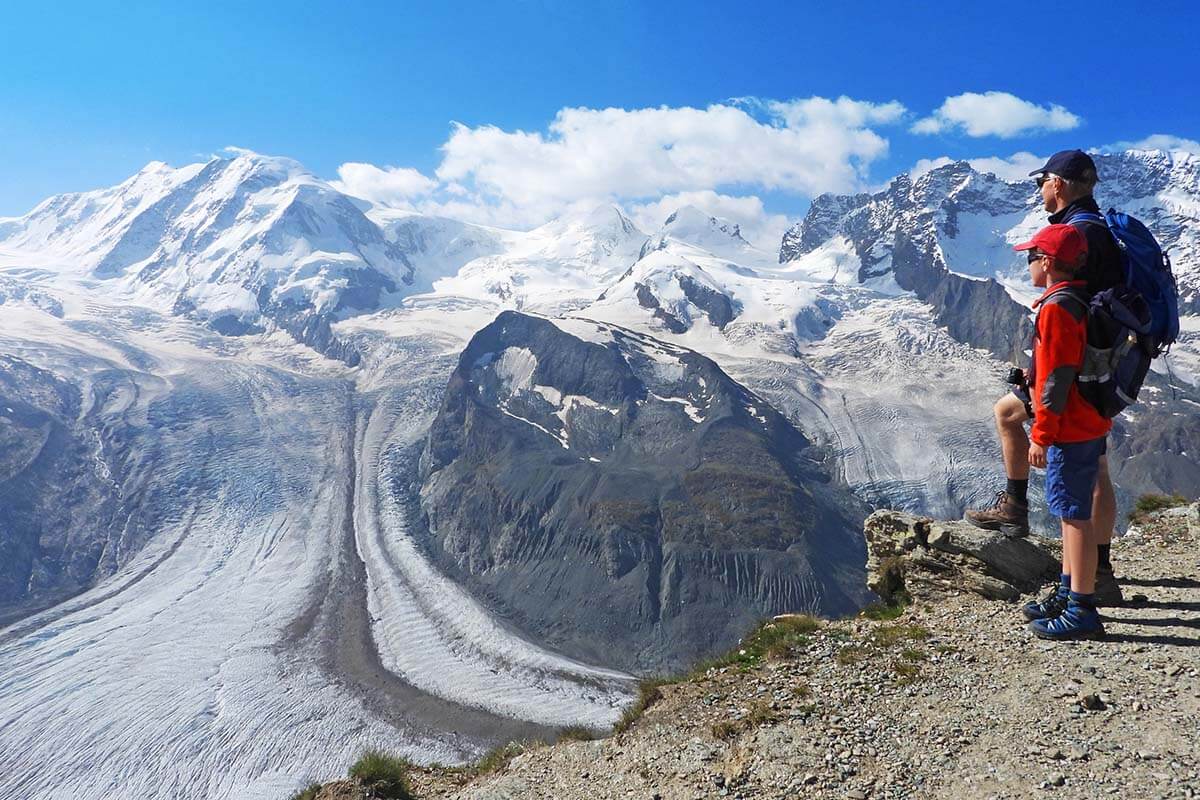
Good to know: If you just take the train to the top, walk around and enjoy the views at the top, and go back, you need about 1.5-2 hours for a visit here.
Add about 1 hour for a hike to Riffelsee and another hour if you go all the way down to Riffelalp. All in all, half a day is plenty for this area, even in the summer. In the winter, you won’t be able to hike, so you’ll need less time (but the trains stop earlier too).
In the evening, take a train back to Zermatt and explore the town. Don’t miss Matterhorn Museum – Zermatlantis and the old traditional buildings of Hinterdorfstrasse.
LEARN MORE: Best Things to Do in Zermatt
ACCOMMODATION: Stay in Zermatt for 1 night. Also here, if you want to make it easy for yourself and save time, stay not too far from the railway station. Here are some recommended hotels: Schweizerhof Zermatt ($$$$$), Backstage Boutique SPA Hotel ($$$$), or Hotel Bahnhof ($$).
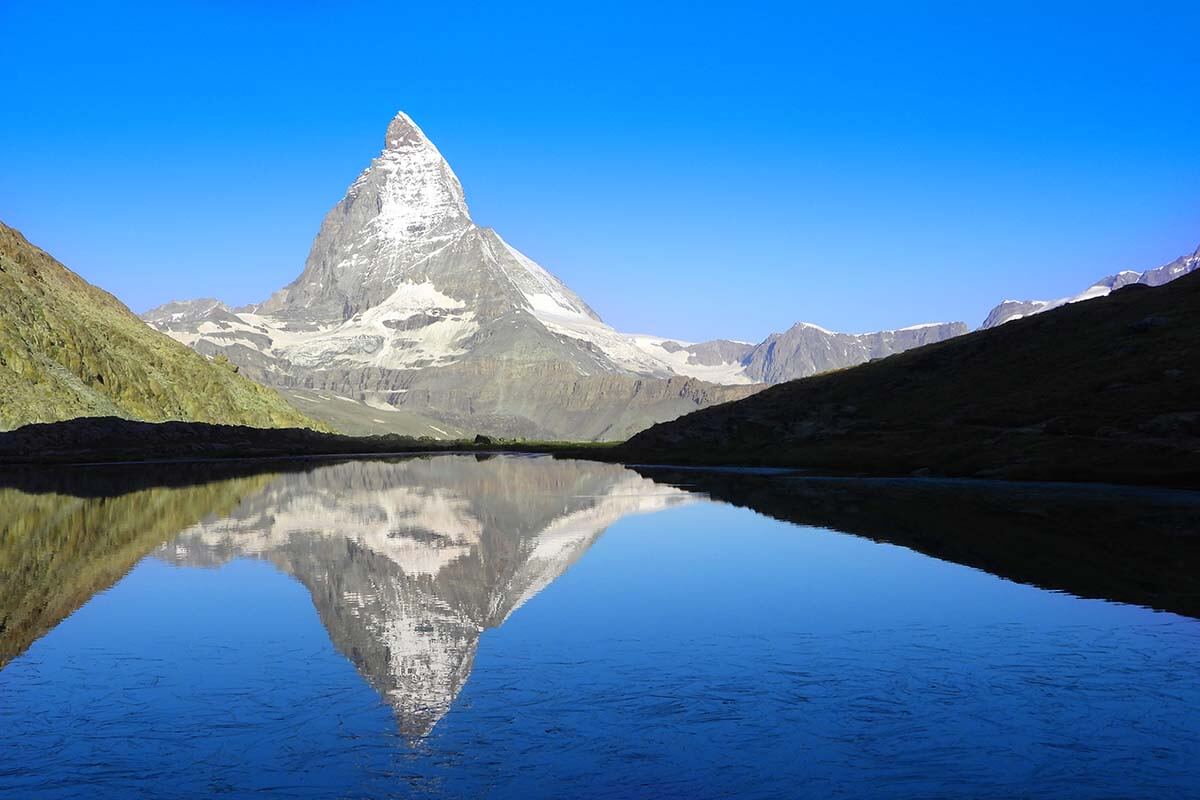
DAY 6: Zermatt
We recommend starting your day early and taking a gondola to Matterhorn Glacier Paradise at Klein Matterhorn (3,883 m (12,739 ft)). Also here, you’ll need to get a separate ticket (also here, you can get a discount if you have a Swiss Travel Pass).
At Klein Matterhorn, you can enjoy 360° views from the highest viewing platform in the Alps. On a clear day, you can see more than a dozen glaciers and 38 mountain peaks higher than 4,000 m (13,123 ft), including the Mont Blanc.
Your ticket also includes a visit to the Glacier Palace, a natural ice tunnel. There are also several other experiences, souvenir shops, etc.
Good to know: If you just visit Matterhorn Glacier Paradise and go back to Zermatt, you need about 2.5-3 hours for a visit here.
LEARN MORE: Things to Do at Matterhorn Glacier Paradise
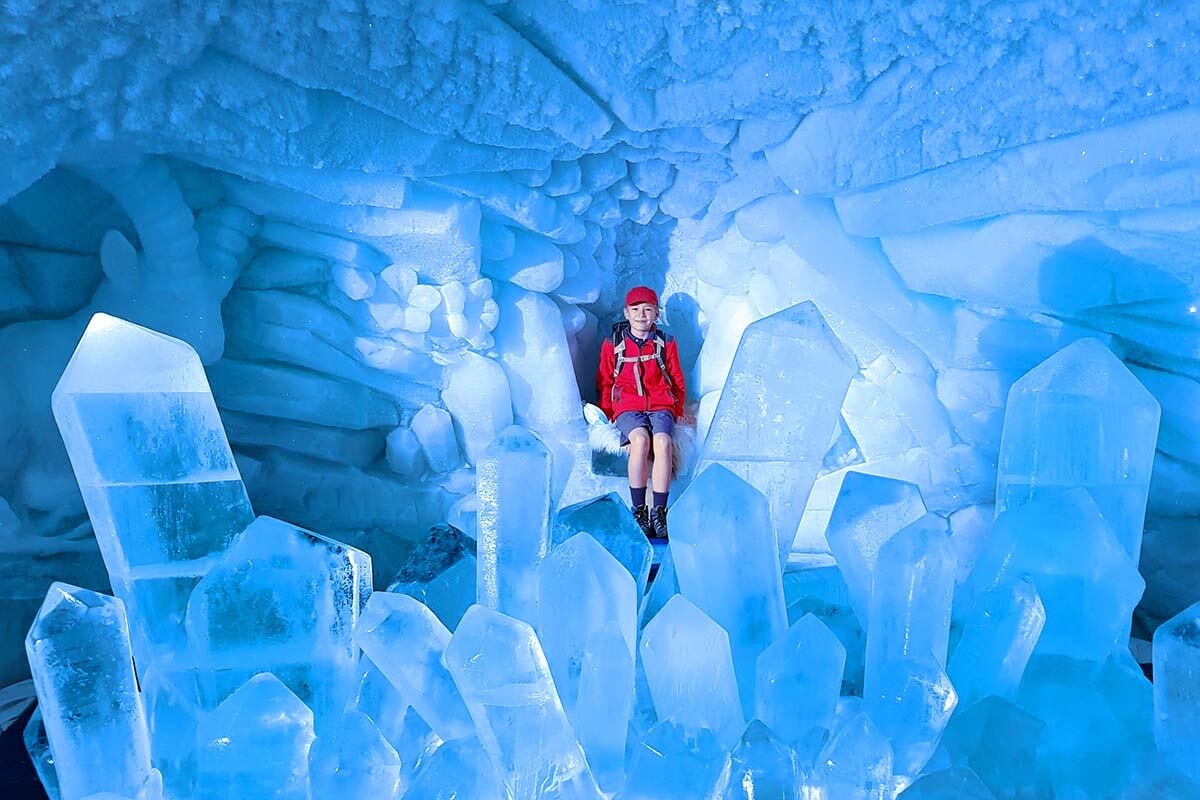
If visiting in the summer, you can also do some hiking in this area. For that, take a cable car back down the same way you came and then hop off at one of the intermediate stations.
Depending on the season and your ability, consider hiking the Matterhorn Glacier Trail (you’ll need at least 2-2.5 hours for this medium-difficulty trail). It starts at Trockener Steg gondola station and ends at Schwarzsee. Alternatively, you can simply hop off at each of these places, walk around, and take the gondola further.
Anywhere you go in this area, you have amazing views of the Matterhorn Mountain. In addition, at Schwarzsee, you can walk to the ZERMATT sign for some nice photos. In the summer, people sometimes also swim here, so if you are up for it, you may want to pack your swimwear and a travel towel.
There are some easier hikes further down the mountain as well. For example, the Furi Suspension Bridge Trail which is very easy and takes about 1 hour, or the Furi – Zmutt – Zermatt hike that takes about 1.5 hours.
READ ALSO: Best Hikes in Zermatt
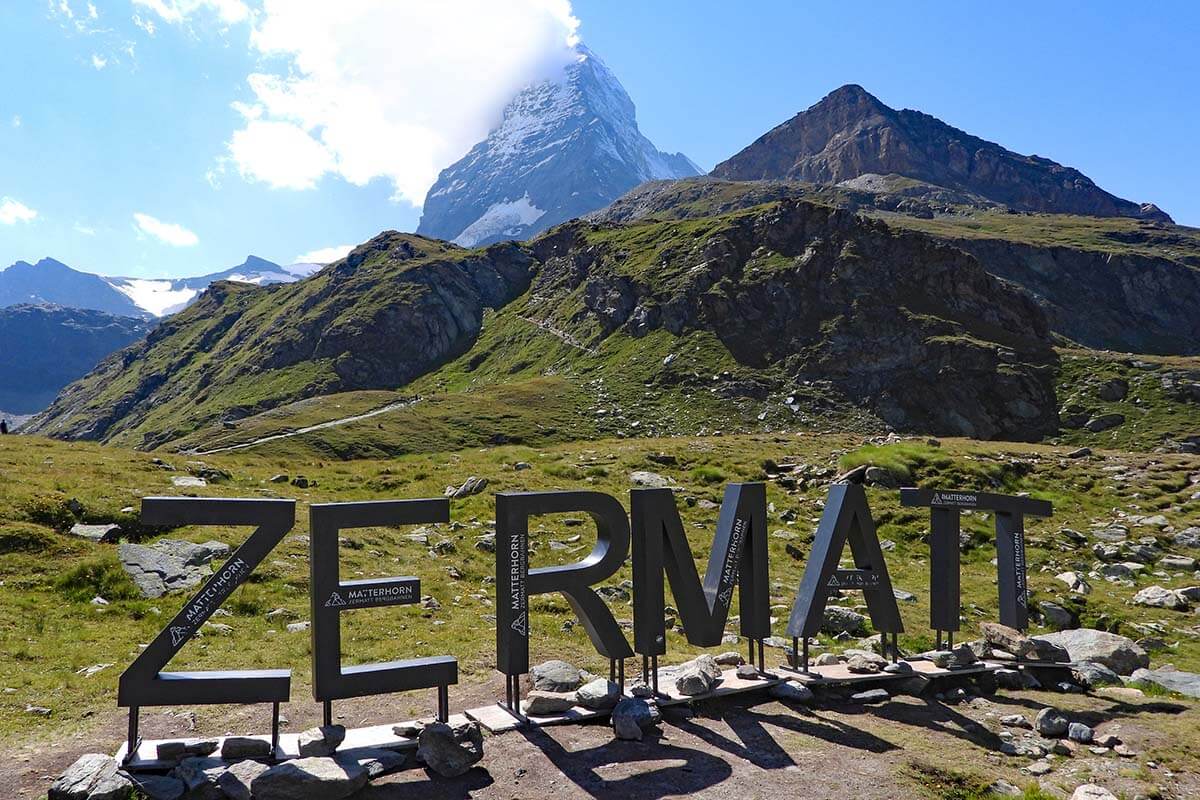
In the late afternoon, pick up your luggage from the hotel and take a train from Zermatt to Interlaken . The journey takes about 2.5 hours.
ACCOMMODATION: Stay in Interlaken for 2 nights. To minimize travel time, we recommend basing yourself close to Interlaken Ost railway station. Here are some recommended hotels: Hotel Du Nord ($$$) or Hotel Interlaken ($$).
Good to know: Interlaken is a good hub for many excursions in the area. Depending on what you ultimately decide to do, you could also base yourself in e.g. Grindelwald which would add at least 30-45 minutes to your train journey. Accommodation in Grindelwald is also more expensive than in Interlaken.
DAY 7: Jungfraujoch + Lauterbrunnen + Grindelwald + Harder Kulm
There is so much to do in the Jungfrau Region in central Switzerland that you could easily spend a week or even two here and not get bored. We’ve been to this area so many times, sometimes longer than a week at a time, and our list of places still to visit (and revisit) is just getting longer… Anyway, with 10 days in Switzerland, you could spend two or maximum three days in this area.
On the first day, visit the famous Jungfraujoch, Top of Europe, home to the highest railway station in Europe (3,454 m (11,332 ft)). There are several ways to get there, so you could make a sort of a mini road trip.
First, take a train from Interlaken to Lauterbrunnen and explore the valley a bit. Foresee extra time if you want to walk to Staubbachfall Waterfall and even more time if you want to visit Trümmelbach Falls (especially because this waterfall can’t be just seen from outside and has opening hours).
After that, take a train to Kleine Scheidegg (potentially stopping for lunch and in Wengen village on the way), and from there yet another train to Jungfraujoch.
After visiting Jungfraujoch, take a train or gondola and visit Grindelwald town on the other side of the mountain.

In addition, in the summer, you could also do some hiking. One of the options is the Eiger Trail (medium-difficulty, 3 hrs), but with just a day for this area, it’s probably better to do the famous Panorama Trail (easy-medium, 1h15).
However, keep in mind that depending on what you choose, the transportation you’ll need to take also differs – the whole area is full of gondolas and trains so there are tons of possibilities how to plan this day.
If you want to take it easy and don’t plan to do any longer hikes, just stop for a short walk/photo stops at Lauterbrunnen, Wengen, Kleine Scheidegg, and Grindelwald.
LEARN MORE: How to Visit Jungfraujoch
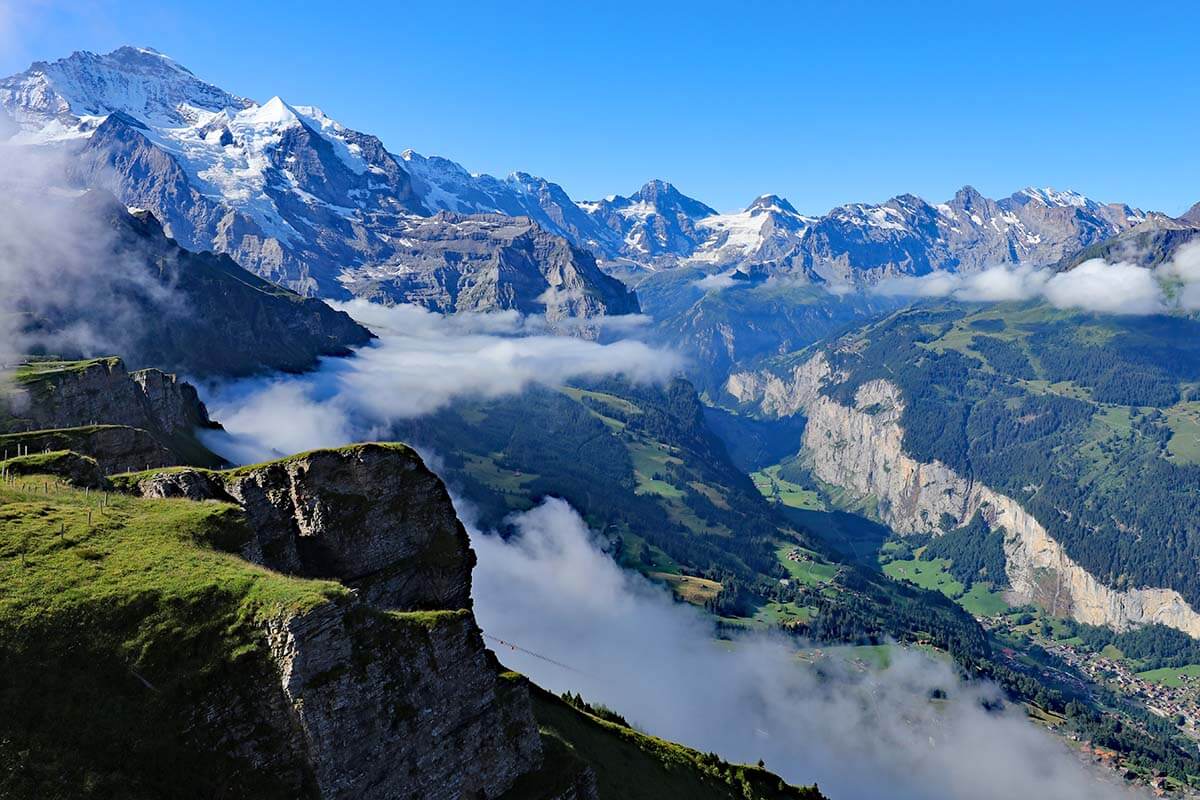
In the late afternoon/early evening take a train back to Interlaken. If you still have some energy left, take a funicular to Harder Kulm . It usually runs quite late in the evening, so it’s one of the few places around Interlaken that you can visit at the end of the day.
Harder Kulm , also known as The Top of Interlaken offers easy access to some sweeping views of the azure-blue lakes below as well as the mountains of Eiger, Monch, and Jungfrau which you’ll have visited earlier this day.
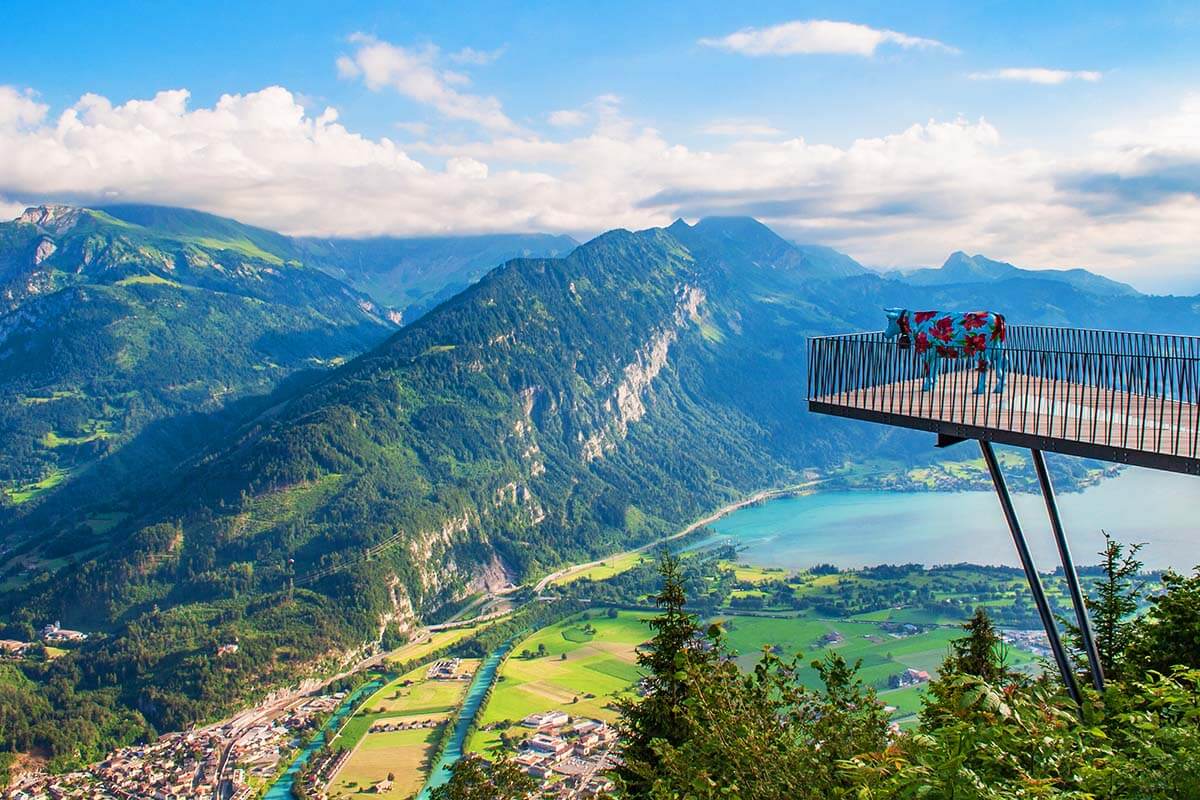
DAY 8: Interlaken Day Trip of Your Choice
As already mentioned, there are tons of places to visit and things to do around Interlaken, especially if you are visiting in the summer. So you’ll have to be selective with what you choose to do.
Below are my top 3 suggestions for this day. Keep in mind that you can only do one per day so it will be a tough choice as it is and I don’t want to overwhelm you with yet more options.
(1) Simply stay in Interlaken , visit Harder Kulm if not done on the previous day, and take a boat trip on one of the lakes – either Lake Brienz or Lake Thun. If you plan well and don’t hop off the boat anywhere along the way, you could even do both. Otherwise, pick one and explore some of the beautiful surroundings a bit deeper.
LEARN MORE: How to Spend 1 Day in Interlaken
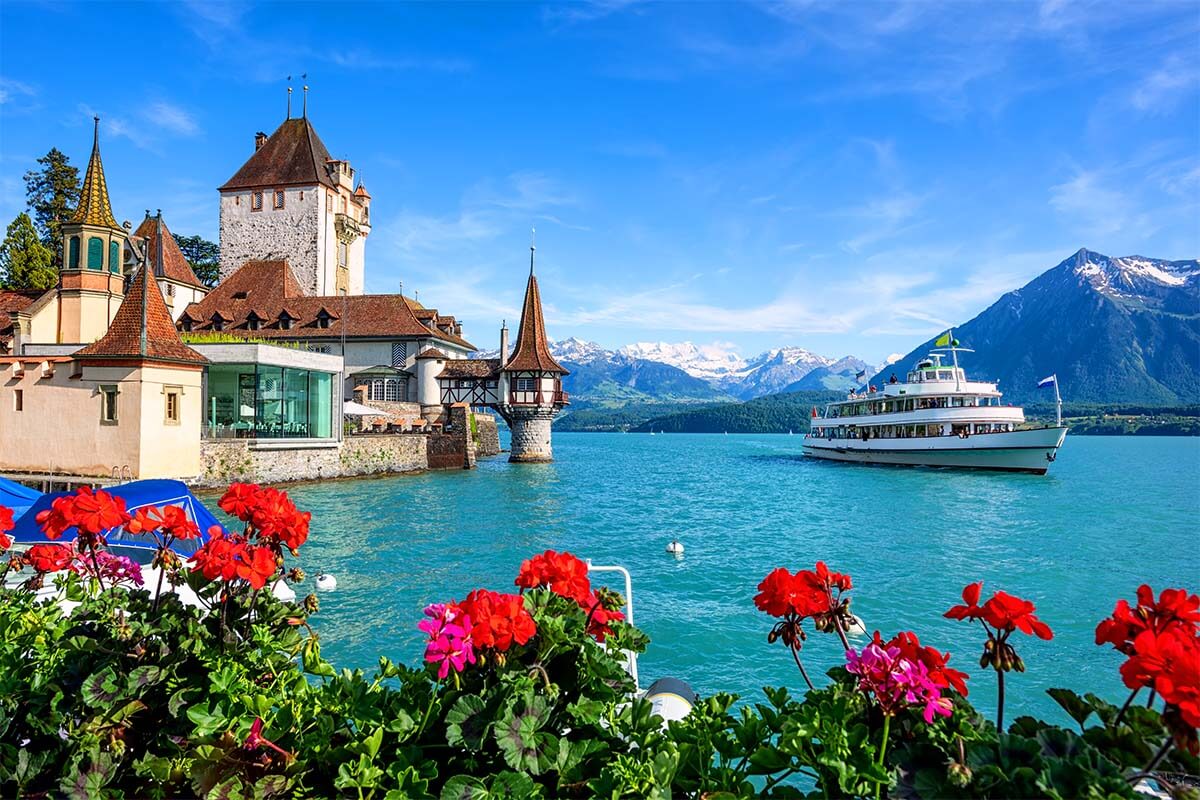
(2) Take a train back to Grindelwald and this time visit another side of the mountains – Grindelwald-First. You can easily spend the entire day here.
At the top, don’t miss the scenic First Cliff Walk , try one of the many fun activities such as First Glider or First Flyer, hike to Bachalpsee Lake , and/or do one of the longer hikes in the area.
LEARN MORE: What to See & Do at Grindelwald-First
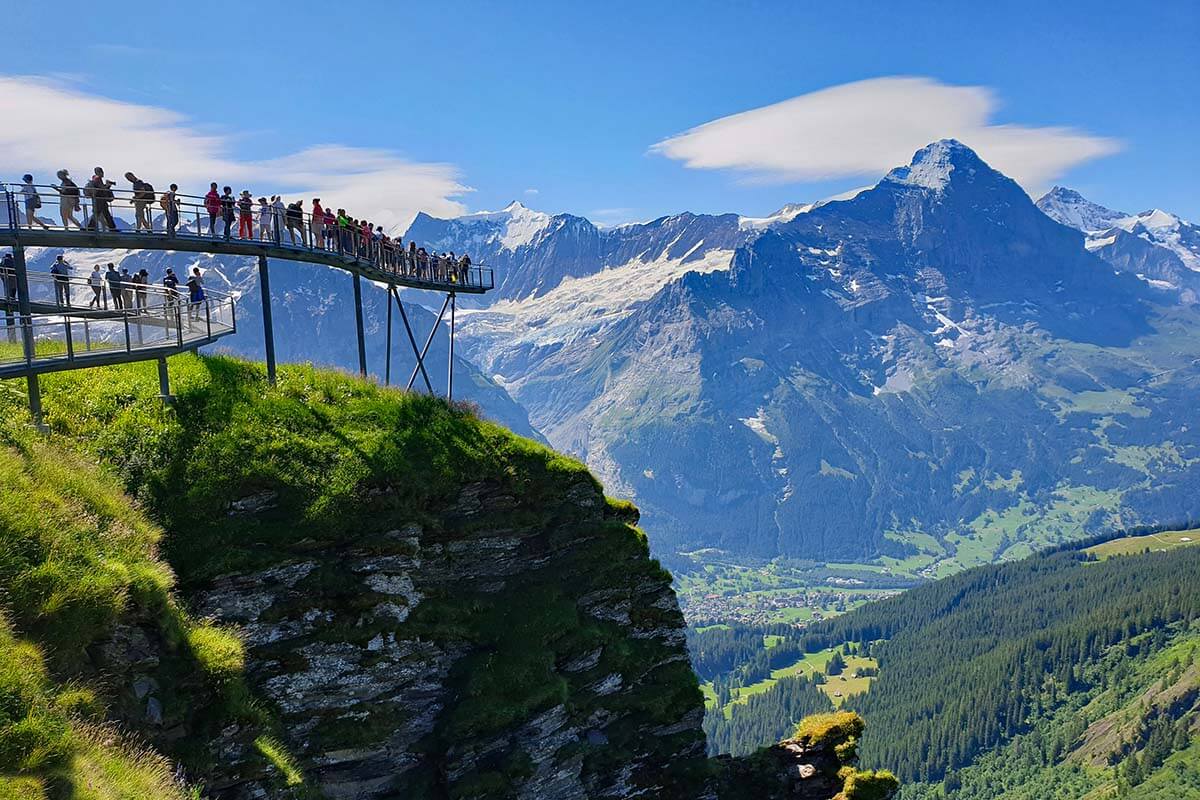
(3) Visit Schynige Platte , which is yet another mountain peak, somewhat closer to Interlaken. From here, you have unparalleled views of the two lakes of Interlaken on one side and the most iconic mountains of the Jungfrau Region to the other side.
LEARN MORE: How to Visit Schynige Platte
If you come this way, be sure to do some hiking – the Panorama Trail offers the best views with relatively little effort. Experienced hikers may even want to attempt the hike from Schynige Platte to Grindelwald and quickly see both areas (you’ll need to start very early for this!).
LEARN MORE: Best Hikes at Schynige Platte
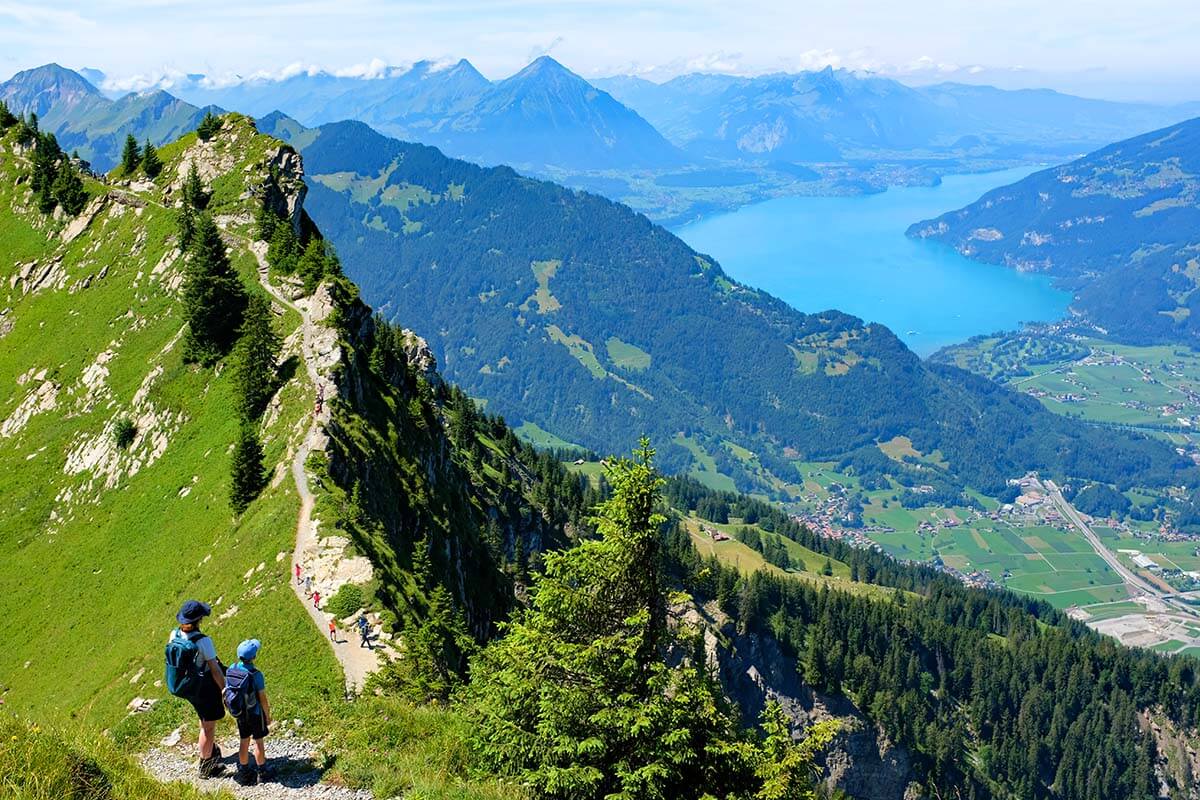
In the late afternoon, get back to Interlaken, pick up your luggage from the hotel and take a train from Interlaken to Lucerne . No matter which of the above day trips you choose, you will need to change trains in Interlaken anyway, so if your hotel is nearby, it’s not a big detour.
The train journey from Interlaken Ost Station to Lucerne takes almost 2 hours.
ACCOMMODATION: Stay in Lucerne for the rest of the trip. If you are flying out of Zurich, you can easily take a train from Lucerne to the airport without having to stay in Zurich anymore. Also here, the main railway station is located right in the center so try to find a hotel nearby. Here are some recommended hotels: Waldstätterhof Swiss Quality Hotel ($$$$), AMERON Luzern Hotel Flora ($$$) or Radisson Blu ($$+).
DAY 9: Mt Pilatus & Lucerne
Today, take a half-day trip from Lucerne to Mount Pilatus. After that, spend the afternoon exploring the city.
Mt Pilatus is located just near the city of Lucerne and offers stunning panoramic views of the area and Lake Lucerne. It can be visited year-round, but is best on a sunny cloudless day of course.
There are several ways to visit Mt Pilatus from Lucerne , including a bus, gondolas, trains, and scenic boat. In the summer season, we recommend that you do the so called Golden Round Trip which involves all of the above. You’ll need about 4-6 hours for this, so start early in the morning. If you are visiting in the lower season, you can simply visit by gondola (the same way there and back).
LEARN MORE: Mt Pilatus Golden Round Trip
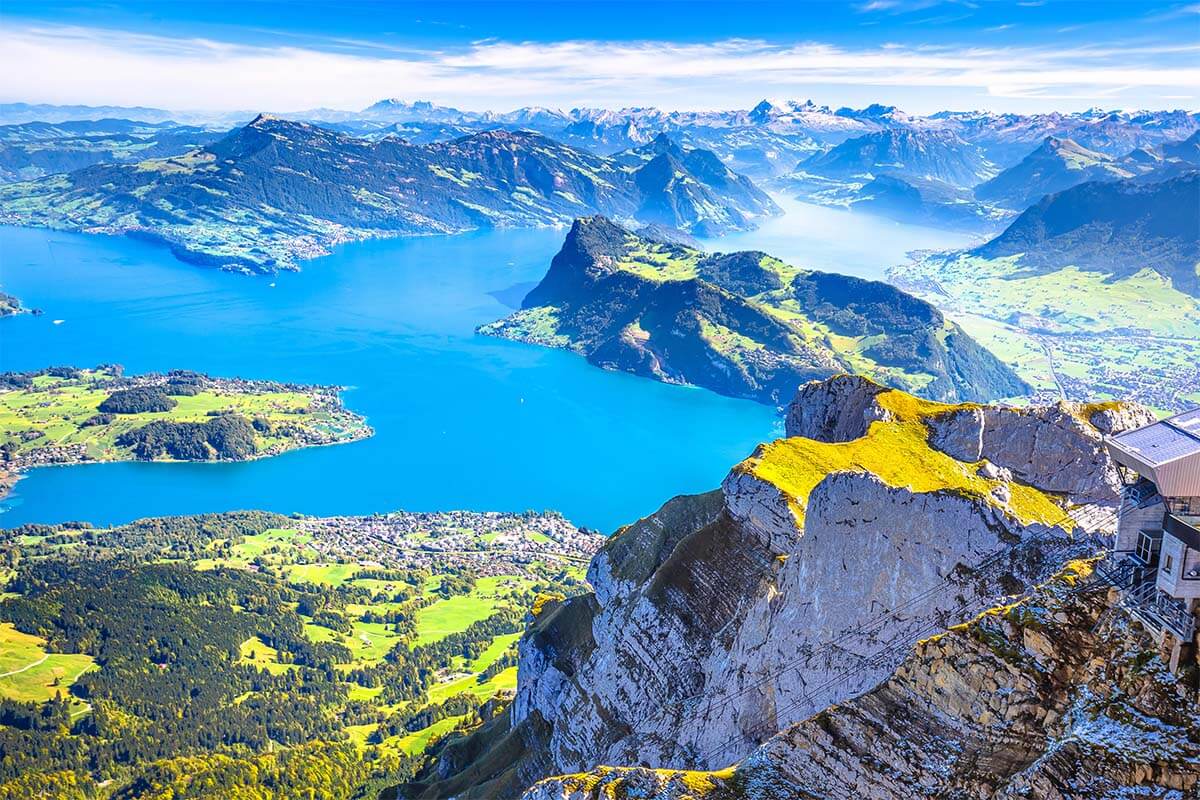
Upon return in Lucerne, explore the picturesque old town with colorful buildings, charming squares, and impressive churches. Don’t miss the Chapel Bridge and Water Tower, the Spreuer Bridge, and do the Lucerne Ramparts Walk.
Next, check out the Lion Monument and the Glacier Garden of Lucerne. If the weather is nice, take a walk along the lakeshore.
Also here, you can find some very good city tours – either walking tours or by eTukTuk . Some of these tours have lots of possible starting times. If you visit Mt Titlis first thing in the morning and don’t plan to do much hiking there, you’ll likely be back in the city by 2-3 PM.
TIP: The Swiss Museum of Transport is also well worth a visit, especially if you are traveling with kids. However, it’s located a bit further away from the other attractions and you really need at least a few hours to do it justice. This could also be a good choice for the last day of this itinerary.
LEARN MORE: Best Things to Do in Lucerne
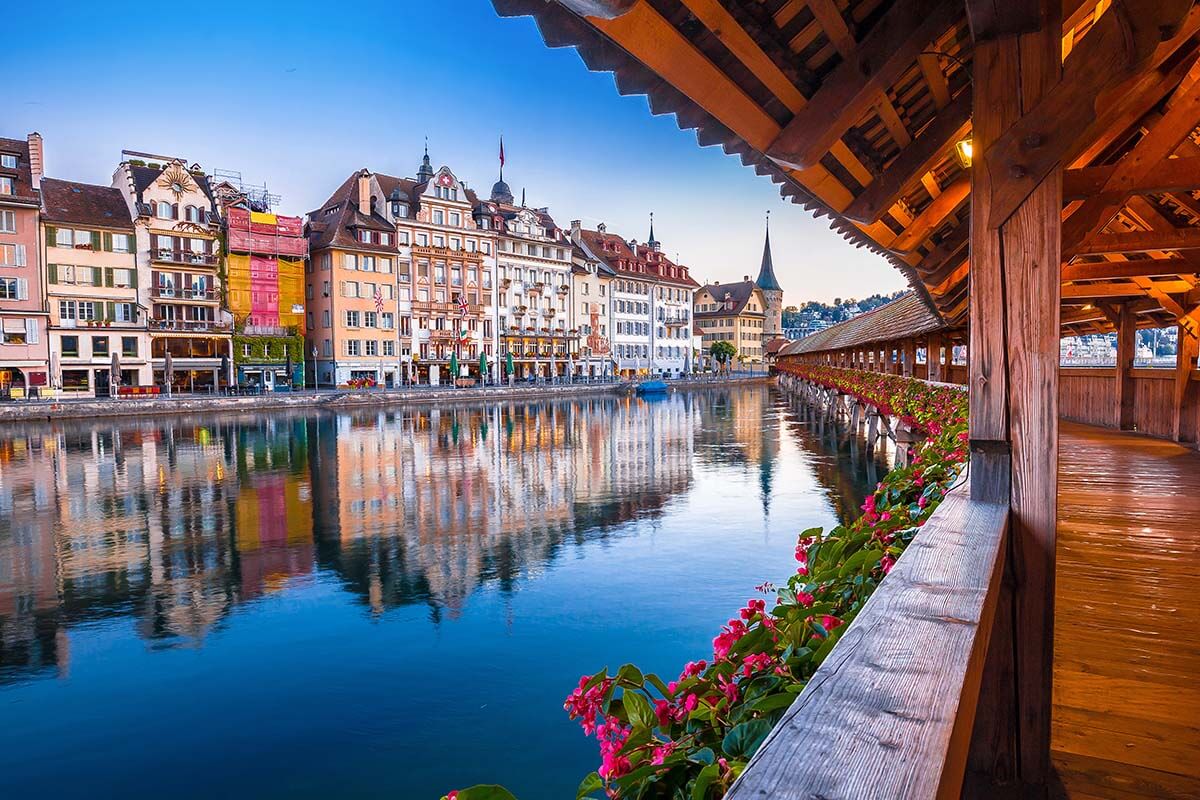
DAY 10: Mt Titlis (or Another Day Trip from Lucerne)
Just like in Interlaken, there are tons of beautiful places to visit and things to do around Lucerne, even more so if you are traveling in the summer. So also here, you’ll have to choose where to go based on your interest and also on the season when you travel.
One of the most popular day trips from Lucerne is Mount Titlis , which can be visited almost the whole year (apart for a few days of maintenance, usually in November). It’s yet another mountain-peak destination, a bit like Jungfraujoch Top of Europe near Interlaken or Matterhorn Glacier Paradise in Zermatt.
At Mt Titlis, you can enjoy spectacular panoramas from a viewing platform at 3,020 meters (10,000 ft), explore a glacier cave, and walk over Europe’s highest suspension bridge.
In the summer, you can also go tobogganing on a glacier and hiking at lower altitudes – the area around Trübsee Lake is not to be missed! In the winter ski season, you’ll find sleds, snow tubes, and snowmobiles near the Trübsee gondola station on the way to/from the peak.
LEARN MORE: How to Visit Mt Titlis
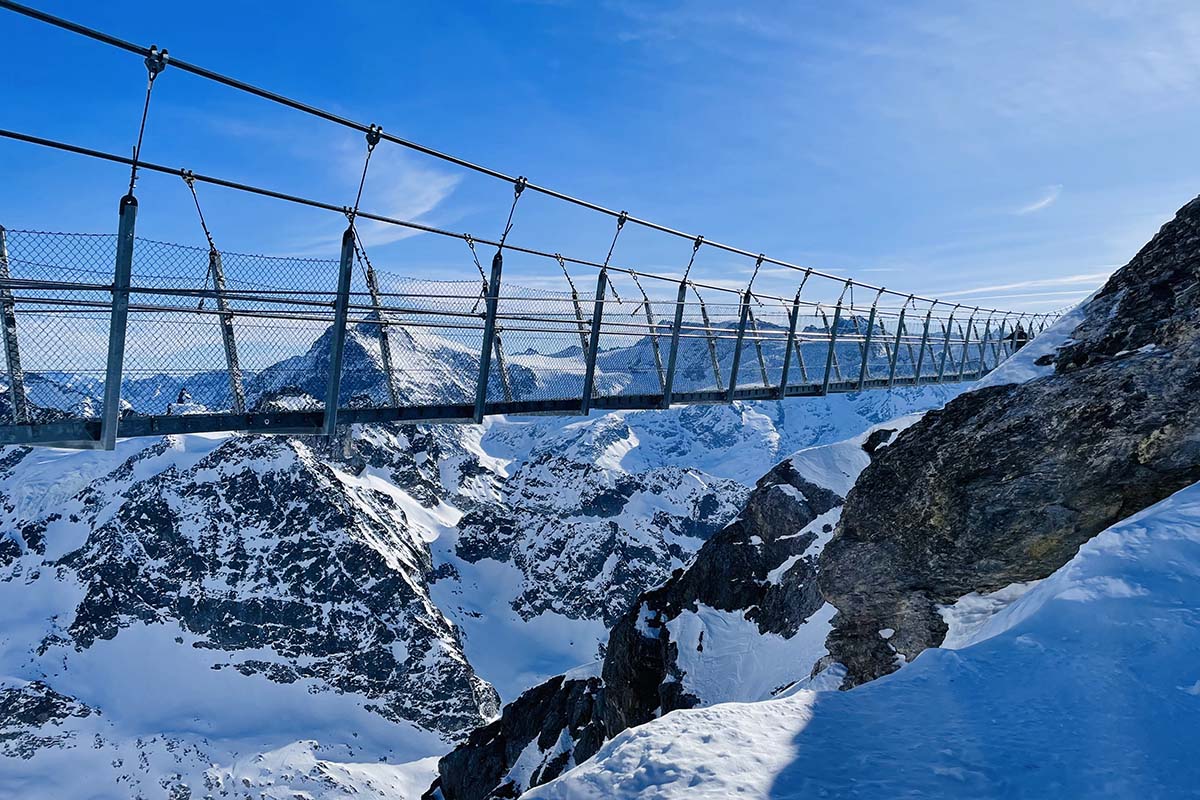
Since Mt Titlis offers a bit similar experience as several other places included in this itinerary, you may want to opt for another day trip near Lucerne (or potentially skip Jungfraujoch (day 7) and visit other places in that area). If you are not sure which one to choose, take a look at our guide comparing Mt Titis to Jungfraujoch . Or visit both.
Also around Lucerne, you have a lot more choices in the summer than in the winter. Here are a few alternatives if you decide to skip Mt Titlis (or have more time in the Lucerne area):
(1) Simply book a scenic boat cruise on Lake Lucerne and spend more time in the city. In that case, definitely try to visit the Swiss Museum of Transport as well.
(2) Another choice and easy to visit in any season is Mt Rigi , aka Queen of the Mountains. The experience is somewhat comparable to Mt Pilatus, but Mount Rigi is located on the other side of the city so offers different views.
(3) Stoos – Fronalpstock. This area is located on the other side of Lake Lucerne and will require a bit of an effort to get to if you don’t have a car. But if you like hiking and want to enjoy some of the most spectacular scenery in the Lake Lucerne area, you may want to check out the Stoos Ridge Trail .
LEARN MORE: Best Day Trips from Lucerne
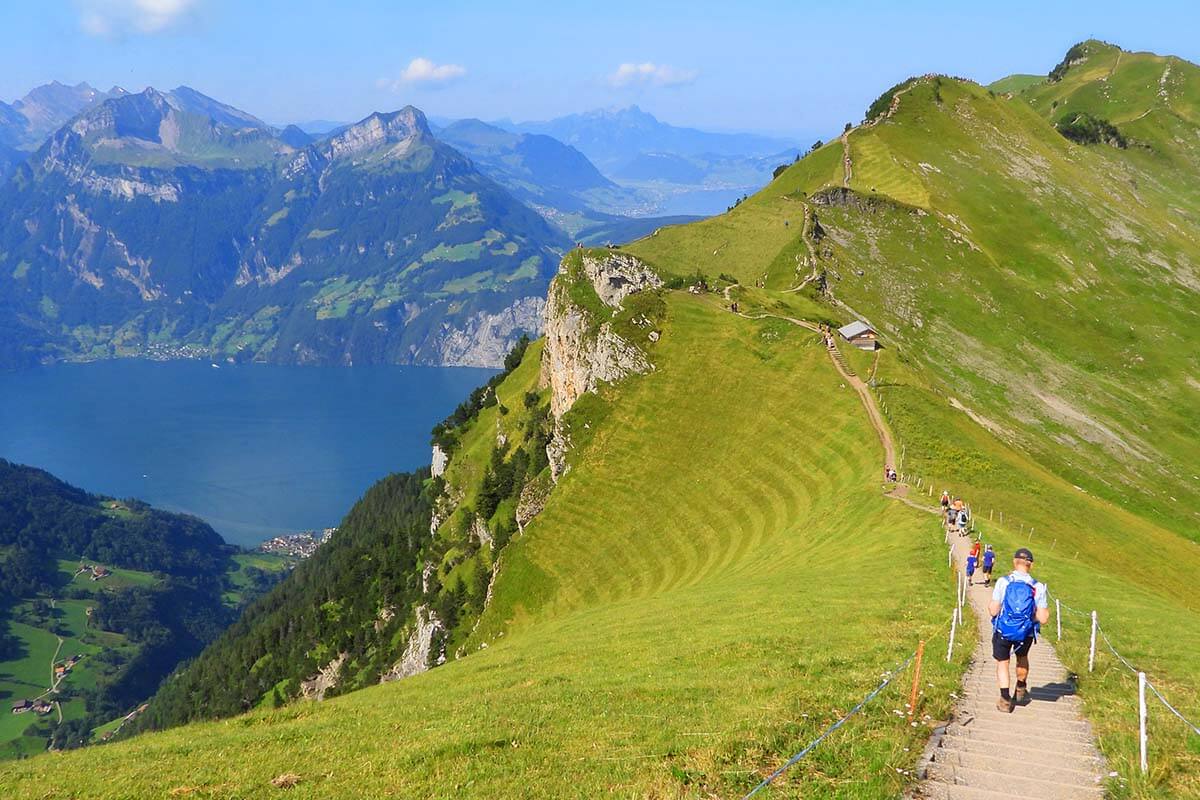
If You Have More Than 10 Days in Switzerland
If you decide to spend more time in Switzerland, you could add extra days pretty much anywhere in this itinerary and you’ll find plenty to do.
We already included some additional recommendations in the article above (mostly the areas around Interlaken, Lucerne, and Geneva). Here are a few extra suggestions:
- If you want to see more towns, spend an extra day in Zurich, or visit Basel or Lausanne. From Basel, you can also take a day trip to France and visit the picturesque Colmar or some of the best little towns on the Alsace Wine Route . This area is also beautiful during the Christmas Markets season.
- If you are also visiting Italy on the same trip, check out the Lugano area in the Italian-speaking part of Switzerland, close to Lake Como . In this same area, you can also do the famous Bernina Express train ride .
- If you like hiking (and are visiting in the summer), I highly recommend the Oschinensee Panorama Hike . It’s located in Kandersteg and could be done as a day trip from the Interlaken area.
- If you like skiing (and are visiting in the winter), you could add a few days extra at any of the mountain destinations mentioned in our itinerary. We personally love skiing in Engelberg (at Mt Titlis) and also in the Wengen – Grindelwald area . Zermatt is also great and they even have a small ski area that remains open all year.
These are just a few famous destinations; we are not even mentioning lesser-known places…
There’s more to see in Switzerland than you could ever do in one or even ten trips, let alone days. So my best advice is leave the FOMO behind, pick the places that interest you the most and simply make the most of the time that you have. And don’t forget to slow down once in a while and simply enjoy the moment.
Whatever you choose to visit, you are sure to fall in love with Switzerland. And once you visit this beautiful country, you’ll definitely want to come back and explore more!
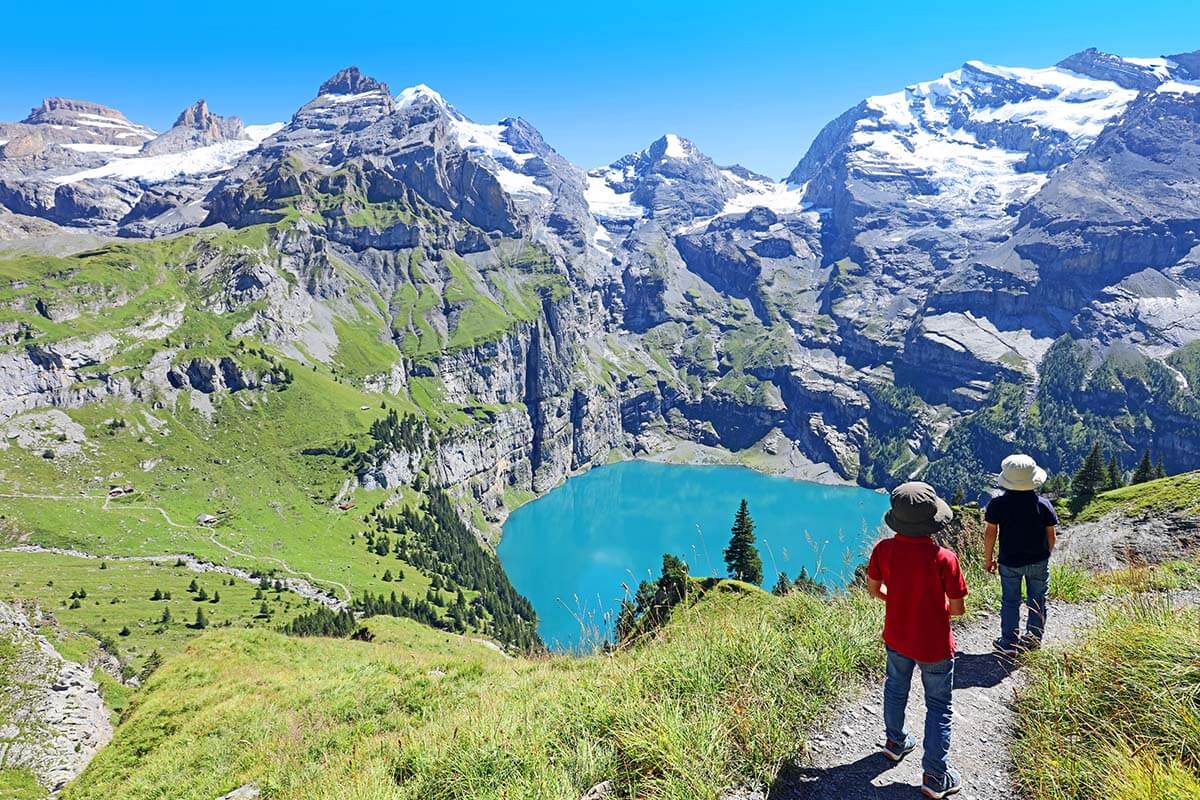
So these are our suggestions for how you could plan a trip focusing on the top sights and most popular tourist destinations in Switzerland.
If you are visiting for the first time and want to see THE VERY BEST of Switzerland in ten days , this itinerary should help you do just that.
Yes, it’s quite packed and on some days you will also have to make some tough choices on what to visit and what to skip. But no matter what you decide, this trip will give you a very good overview of what Switzerland has to offer. Plus, you can always plan a repeat visit to the areas that you like the most and explore deeper.
TIP: Take a look at our Switzerland travel guide for more destination guides and helpful tips.
READ ALSO: Tips & Tricks for Planning Your First Trip to Europe
If you found this post helpful, don’t forget to bookmark it and share it with your friends. Are you on Pinterest? Pin these images!
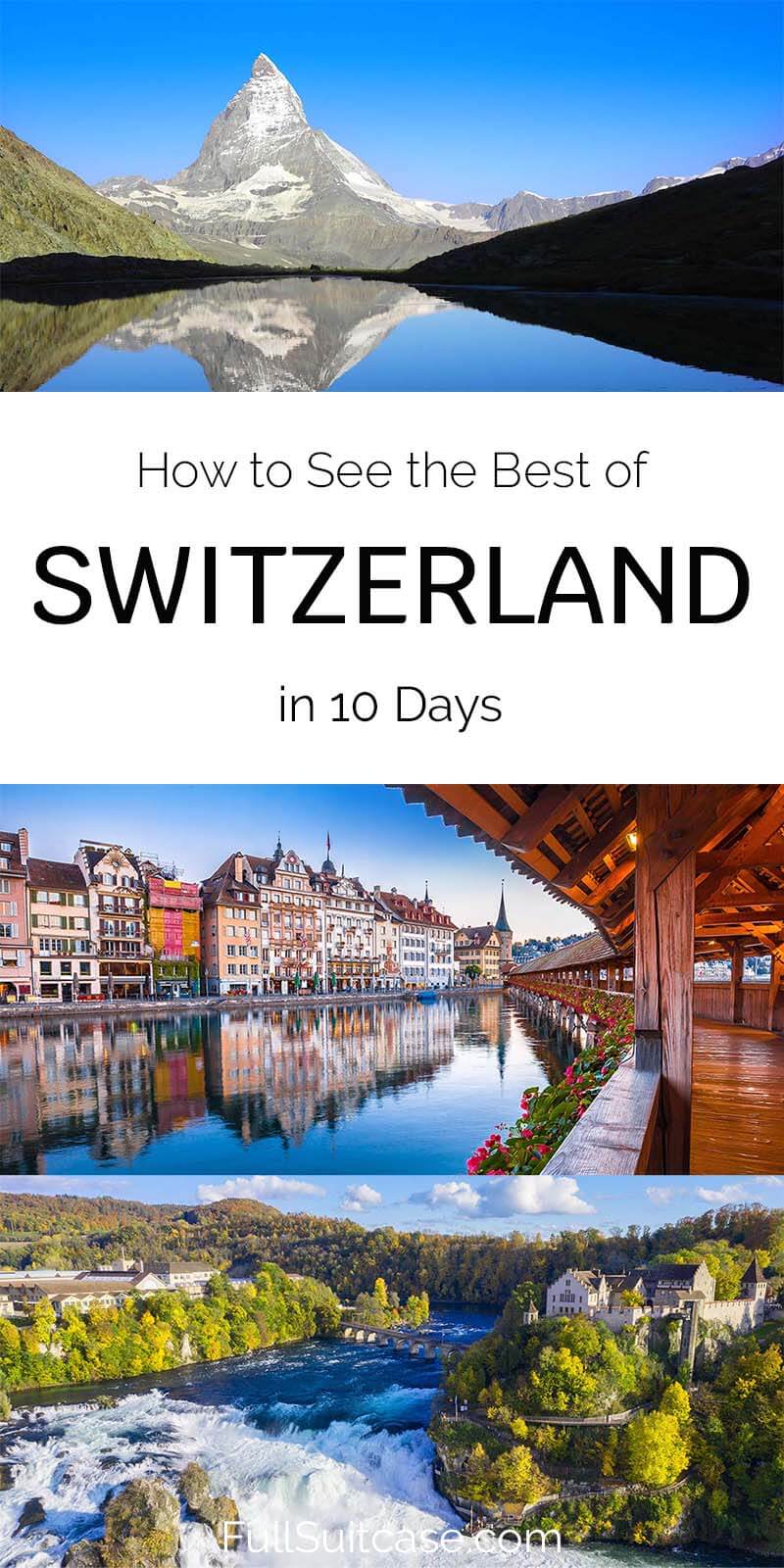
Images: Personal collection, Depositphotos.com, Shutterstock.com.
This site uses Akismet to reduce spam. Learn how your comment data is processed .
Sunday 14th of April 2024
Switzerland sure is beautiful. I am saving this article.
You should visit, Michael!
Monday 25th of March 2024
Thank you, this is great. I am interested in the day trip to Chamonix. Would it be better to spend the night in Chamonix and then go directly to Zermatt?…and do you have a recommendation for accommodations in Grindelwald area, for spending more time in that area?
Wednesday 27th of March 2024
Hi Bo, I can't really answer your question without knowing where you are traveling from to start with and which means of transport you'll use. The drive from Chamonix to Täsch (the place where you leave the car before taking the train to Zermatt) is about 2.5 hours. Whereas the bus + train journey involving quite a few changes along the way can be 3.5-4.5 hours (all the way to Zermatt). If, for example, you take a train from Geneva to Zermatt, the shortest connection is also about 3.5 hours, but you only need to change the train once. As for Grindelwald, depending on how you travel, you may want to stay closer to the train station. But it's not such a huge village and if you stay somewhat closer to the main road (so not somewhere on the mountain), then it's all quite convenient. Some of the hotels we had booked in the past include Hotel Spinne and Sunstar Hotels. They are both very centrally located between the main station and the Grindelwald-First gondola. Hope this helps.
Saturday 23rd of March 2024
Can you help with what are the best things to do or visit or best place to stay in Lausanne.
Just thinking of a 2 nights stay before returning to Zurich for a day tour that I have booked.
Sunday 24th of March 2024
Hi Lynn, one of the main points of interest in Lausanne is the Olympic Museum. You can also take a boat and visit some places on Lake Geneva. If you are looking for more ideas, take a look at all the options here and see if something interests you. As for where to stay, if you are traveling by train, it's always simplest to stay within walking distance of the station, for example, Agora Swiss Night by Fassbind or Hotel Victoria. If you are looking for a more unique accommodation, check out Château d'Ouchy (a renovated medieval castle) - it's located very close to the Olympic Museum and just steps away from the lake where the boat trips start, so it's very convenient for sightseeing as well. Hope this helps. Enjoy your trip!

Switzerland Road Trip: The Best Itinerary + Map & Tips
This post may contain affiliate links, from which we earn an income.
Best Road Trip in Switzerland from Zurich
Our ultimate Switzerland road trip takes you along a breathtakingly scenic route, exploring beautiful cities, incredible natural scenery, and UNESCO World Heritage sites. This Switzerland itinerary is the perfect adventure for those who love to explore.
From discovering charming lakeside towns and the dramatic Swiss Alps to tackling some of Switzerland’s most famous driving roads, you can also take time to stop and visit local wineries, discover adrenaline sports, and sample delicious Swiss cuisine on this road trip through Switzerland.
In this Switzerland road trip planner, we share travel tips, the best route between towns and cities, things to do and see along the way, and hotel recommendations to help you plan your perfect Swiss itinerary.
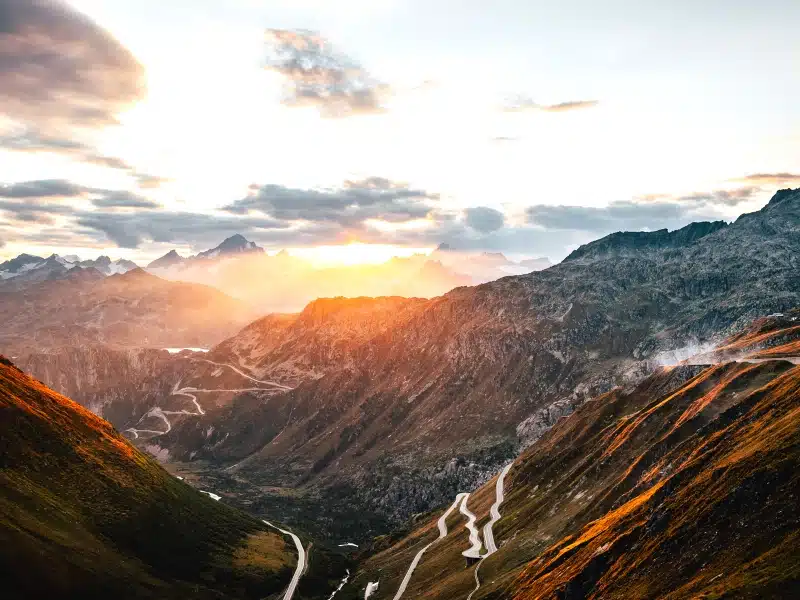
Where is Switzerland?
Switzerland is a small mountainous country located in central Europe, most famous for the Dufourspitze, the second-highest mountain in the Alps, deliciously creamy Swizz chocolate, secretive Swiss banks, and Heidi, Switzerland’s most well-known literary character.
This landlocked country is home to 451 mountains and is about the size of New Jersey and is sandwiched between France and Italy , and also bordered by Austria , Germany , and Liechtenstein, which lend a cosmopolitan culture and outlook to the country.
Switzerland is not a member of the European Union or European Economic Area but it is part of the Schengen Area, meaning any time spent touring Switzerland by car counts toward your 90 in 180 days allowance.

Getting to Switzerland
Whether you’re taking a road trip to Switzerland in a car, motorcycle, or campervan, self-driving is absolutely the best way to explore this spectacular European country.
You can stop whenever you want, try new activities, visit places you see along the route, and have the freedom to change plans at the last minute.
Fly into Zurich Airport to start your Switzerland road trip. With direct flights from America, Europe, and the UK, we recommend booking through Skyscanner for live deals and the best prices.
Are you planning to rent a car in Switzerland? As one of the largest car hire aggregator companies in the world, we recommend Rentalcars.com because they have massive purchasing power which enables them to secure the best car rental prices, which benefits you when you’re planning a road trip.
For a real adventure, hire a motorhome or campervan in Switzerland. We recommend Motorhome Republic , an aggregate booking site who pull together all the best deals from a number of rental agencies, to offer you a wide choice of options alongside an excellent English speaking expert motorhome Concierge Team.
Traveling in Switzerland by Car
The Swiss make it easy to see their breathtakingly beautiful country, with great roads and a well-managed and maintained network of trains, boats, and cable cars. It’s surprisingly easy to see the mountains and gain real elevation without being a super-fit hiker – everywhere you go, there are mechanical means to help you enjoy the peaks.
Although this is a Swiss Alps road trip guide, you will definitely be using trains, cable cars, and boats to see some of the top sights and attractions. If you prefer to arrange your own trips, a virtual Swiss Travel Pass offers unlimited travel on all Swiss trains, buses, and boats and discounted or free admission to many Swiss attractions including museums and mountains.
An alternative is the Swiss Half Fare Card which gets you 50% discounted tickets on standard fares for trains, buses, boats, and cable cars in Switzerland, for one month. This is not a virtual card, however, and you’re still required to physically purchase your tickets.
RELATED POST: Driving in the Alps: Top Tips & Best Routes
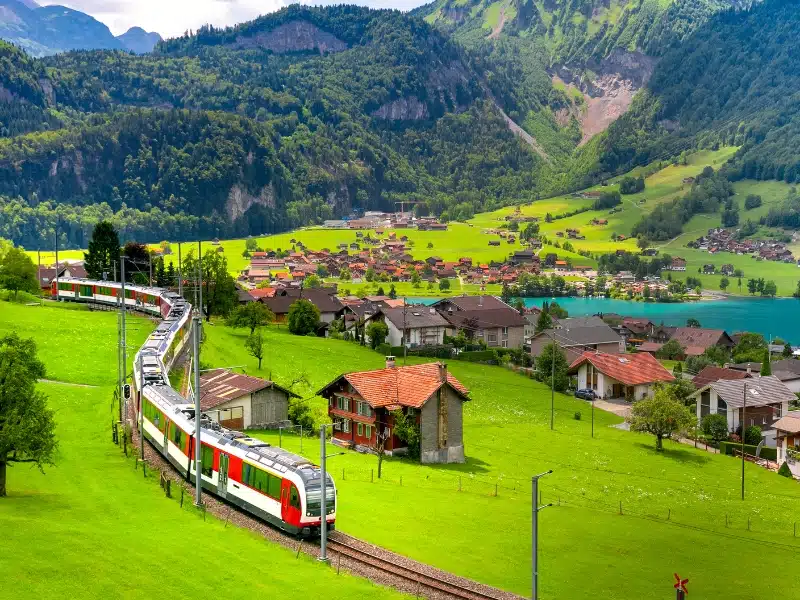
Looking for the best SIM card deals in Europe for your trip? Check out our guide to the best data SIMs in Europe and get the best deal for your trip to Switzerland.
Road Trip Switzerland: Best Time to Go
March to may.
Spring is a wonderful time to visit Switzerland, with temperatures warming up across the country. Blooming wildflowers, vibrant greenery in the mountains and cows heading out to pasture mean spring is a fantastic time to experience Switzerland by car. You’ll find the roads and cities less crowded, and most attractions will be open.
June to August
In summer, Switzerland enjoys beautiful weather and the prospect of water sports, mountain hiking, and dining al fresco. This is when locals and visitors alike head to the lake shores and mountains, meaning heavier crowds and more traffic.
September to November
Autumn is a fantastic time for a Swiss road trip . The grapes and crops are being harvested, food festivals celebrate the bounty of the land, and you might enjoy an Indian summer, with the fall colors of the vines aflame.
December to February
The winter months in Switzerland can be very cold, but most people come to Switzerland during the months of December to March for winter sports like skiing and snowboarding. It’s not the best time for a road trip, as the spectacular mountain passes will be closed and roads can be challenging to drive.
RELATED POST: The Best of Switzerland in Summer: 17 Amazing Highlights
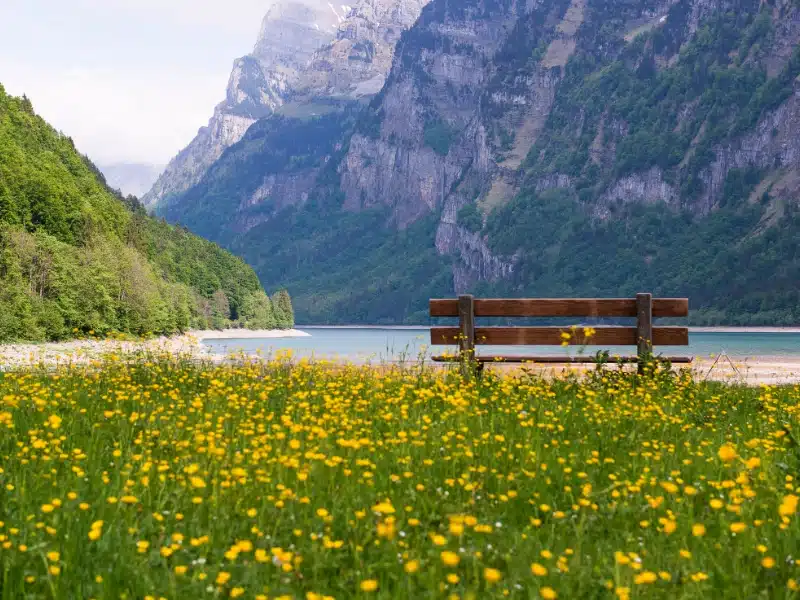
Make sure you have travel insurance you can trust when visiting Switzerland. We recommend True Traveller for their 5-star TrustPilot reviews, variety of cover options, best activities cover as standard, great prices, and excellent service.
Switzerland Road Trip Map & Route
We recommend completing a circular route during your road trip around Switzerland, starting and ending in Zurich. Zurich, the global capital of banking and finance, is home to Switzerland’s largest international airport.
Our two week Switzerland road trip will take you on a spectacular, circular drive through Switzerland’s iconic landscapes, covering roughly 1000km south across western Switzerland to Geneva before heading east towards Zermatt and eventually back north to Zurich.
Starting in Zurich, your first stop will be Bern, found within the curves of the Aare river. Bern is the capital city of Switzerland and is known for its 12th century architecture that forms the old town or Alstadt . Your visit to Bern would be incomplete without exploring Lake Brienz, just north of the Alps, which offers breathtaking mountain views.
After your trip to Bern, begin traveling south to Lausanne, Geneva, and Montreux, visiting Lac Léman en route.
The following stretch of your trip will provide unrivaled views of Les Diablerets as you head towards Zermatt where you will be met with the iconic Matterhorn, a mountain in the Swiss Alps.
At this point, your road trip will begin taking you north. Drive towards Interlaken, Lauterbrunnen, and Grindelwald where we recommend stopping at the famous Victoria Jungfrau Grand Hotel located in the mountains of Bernese Oberland, the perfect place to celebrate a special occasion.
As you leave Grindelwald, make sure you save time for the Furka Pass as you head to Lucerne. Our Swiss road trip itinerary will continue north to our initial starting point, the city of Zurich.
- Get the Travel Guides
- Lonely Planet Switzerland
- The Rough Guide to Switzerland
- DK Eyewitness Switzerland
Switzerland Road Trip Itinerary
Zurich – Bern – Lausanne – Geneva – Montreux – Nendaz – Zermatt – Interlaken – Lauterbrunnen – Grindelwald – Furka Pass – Lucerne – Zurich
- Distance 991km
- Duration 10-14 days
- Drive Time 17 hours
How to use this map – Use your fingers (or computer mouse) to zoom in and out. Click or touch the icons to get more info about a place, and click the arrow in the box top left to open the index. To add to your own Google Maps account, click the star next to the title of the map.
Flying into Zurich and renting a car is the easiest way to kickstart your Switzerland road trip. Get our one day Zurich itinerary complete with map, recommendations & Zurich travel tips to help plan your trip to this stylish and cultured Swiss city.
Zurich’s old town is full of cobbled streets with cozy bars, traditional Swiss restaurants, and art museums. It is also home to some of Zurich’s famous Romanesque churches. You can indulge in fabulous shopping on the Bahnhofstrasse with its luxury boutiques, visit Lindenhof Hill with its fantastic views of the city, and sample the famous Lindt chocolate.
If you prefer to have your day organized for you, check out this popular and highly rated private tour with a local guide and get to know the beautiful city of Zurich with a professional guide who will show you the city’s hidden gems and also help you experience this popular destination like a real local.
In the evening, head for Seebad Enge , one of Lake Zurich’s swimming pools, which turns into a lively bar at night. Stop here for a cold beer and a homemade grilled snack to start your evening off the right way, before heading to Oepfelchammer . A mainstay of Zurich dining since 1801, Oepfelchammer is the place to go if you want traditional Swiss food made with regional and seasonal produce.
- Where to Stay in Zurich
Upmarket: Marktgasse Hotel – Booking.com | Agoda
Mid-Range: Placid Hotel Design & Lifestyle – Booking.com | Agoda
Budget: Meininger Hotel – Booking.com | Agoda
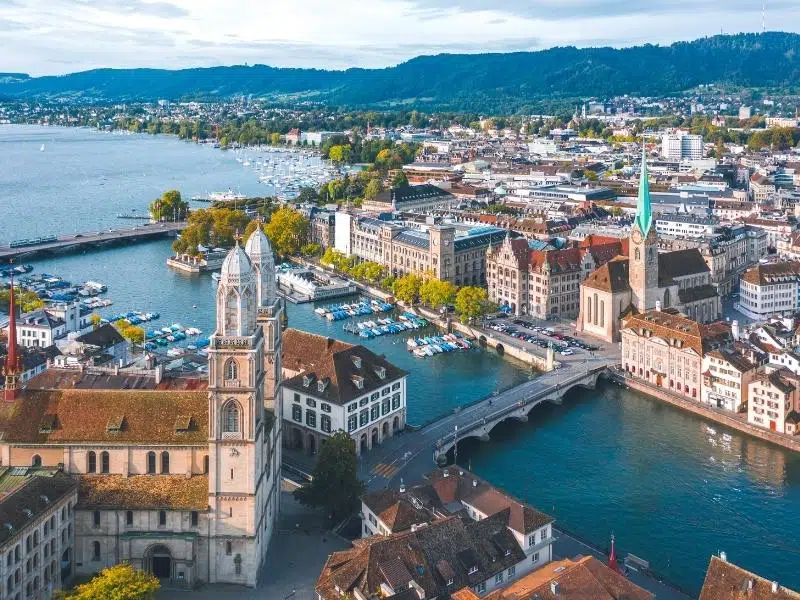
Rhine Falls Side Trip
Just under an hour away from Zurich in Schaffhausen are the Rhine Falls, the largest waterfall in Europe with a width measuring 150m (492ft) and a height of 23m (75ft). Over 600,000 liters of water per second plunge over the falls in the summer.
There is an elevator to take you up from Laufen Castle to the viewing platforms for a breathtaking view of the falls. A boat ride to the falls basin is also on offer, and well worth the time. Across the river is a huge rope park, so you can glide from tree to tree and admire the falls from every angle.
If you prefer not to drive, there are lots of day trips to the Rhine Falls from Zurich, but we think this highly recommended Rhine Falls day trip from Zurich is the best. Your driver will take you through a scenic landscape of charming villages to visit the Rhine Falls, you’ll cross the river to the Belvedere Trail viewing platform for incredible views, and learn about the medieval history of Stein am Rhein.
Driving from Zurich to Bern is a scenic journey that takes approximately an hour and 20 minutes, depending on traffic conditions. From Zurich, you will head towards the Swiss Alps, passing through picturesque villages along the way.
Travel Tip: We would highly recommend taking a detour on your drive from Zurich to Bern to visit the UNESCO Biosphäre Entlebuch . This Swiss national park is a biosphere reserve that encompasses approximately 39,000 hectares and is an incredible expanse of the untouched Swiss landscape.
Bern, the capital of Switzerland, is renowned for its well-preserved old town, a UNESCO World Heritage Site, its historic clock tower, the Zytglogge, which is one of the city’s most recognizable landmarks, and the Bear Pits, or Bärengraben , where bears have been housed since 1513 and have come to symbolize the city.
Bern has a variety of unique experiences to offer and the best way to see the city is with our recommended guided walking tour where you’ll have the opportunity to admire Bern’s fountains, towers, quaint streets, and arcades as you learn about the city’s 800 years of history from a local guide.
- Where to Stay in Bern
Upmarket: Stay KooooK Bern City – Booking.com | Agoda
Mid-Range: Los Lorentes Hotel Bern City – Booking.com | Agoda
Budget: Bern Backpackers Hotel Glocke – Booking.com | Agoda
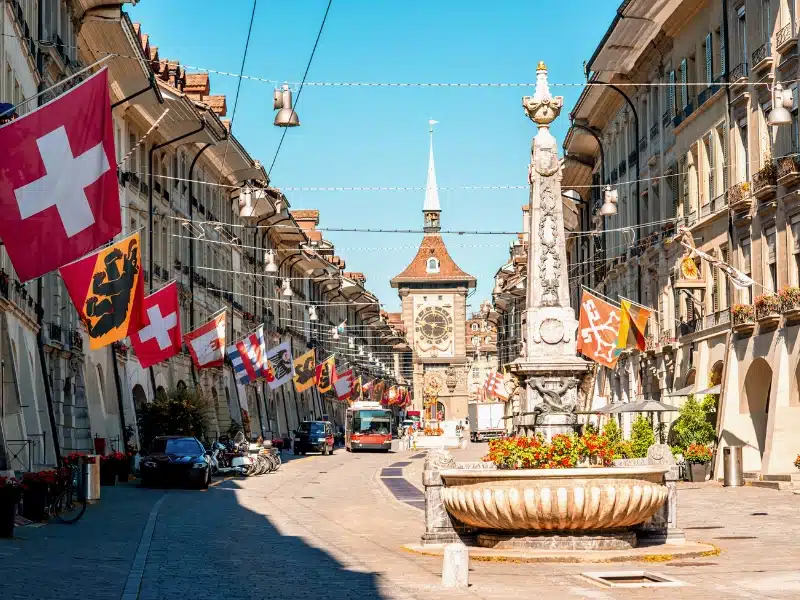
Don’t forget your road trip essentials! Our free road trip checklists help you remember everything, including road trip snacks , podcasts , and road trip songs for the journey!
As you leave Bern and head towards Lausanne, you will be surrounded by the Swiss Alps, offering breathtaking views of the country’s mountainous natural beauty. However, as you draw closer to Lausanne, the scenery will change from mountains and rolling hills to the shores of Lake Geneva, also known as Lac Leman, where the city of Lausanne is located.
Lausanne is home to a number of historic churches, including the Cathedral of Notre Dame, as well as several museums and art galleries, including the Olympic Museum , a must-visit for sports fans.
Lausanne is a foodie’s paradise. Be sure to sample some of the local specialties, such as fondue, raclette, and rosti, while enjoying the stunning views of Lake Geneva.
Travel Tip: From Lausanne, you can take a day trip to Glacier 3000 , an alpine experience near Les Diablerets. A 15 minute cable car journey will give you 360-degree views of the Swiss mountains. Once at the summit, you will enjoy spectacular views of Lac Leman. The Glacier 3000 Peak Walk, the only bridge in the world connecting two summits, provides daring visitors with panoramic views of the alpine landscape.
- Where to Stay in Lausanne
Upmarket: Hotel Angleterre & Résidence – Booking.com | Agoda
Mid-Range: Moxy Lausanne City – Booking.com | Agoda
Budget: Hôtel du Marché – Booking.com | Agoda
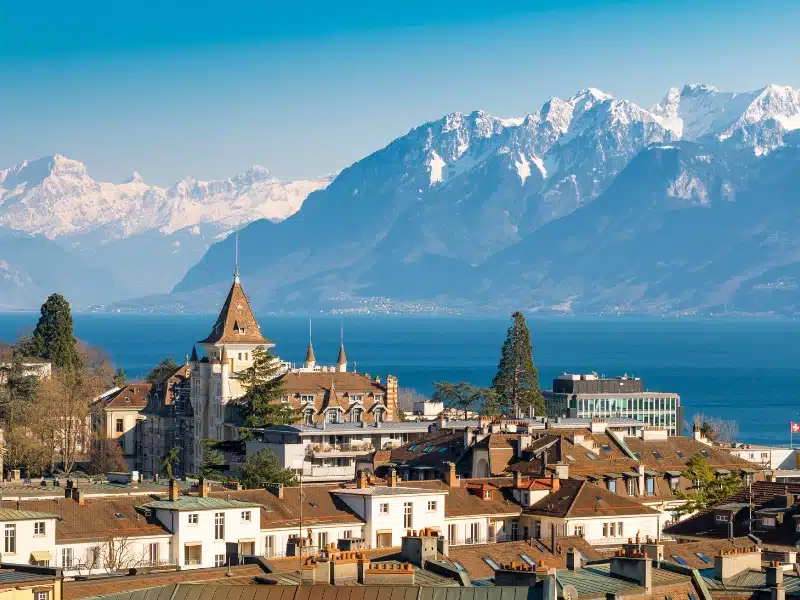
Other Nearby Road Trips
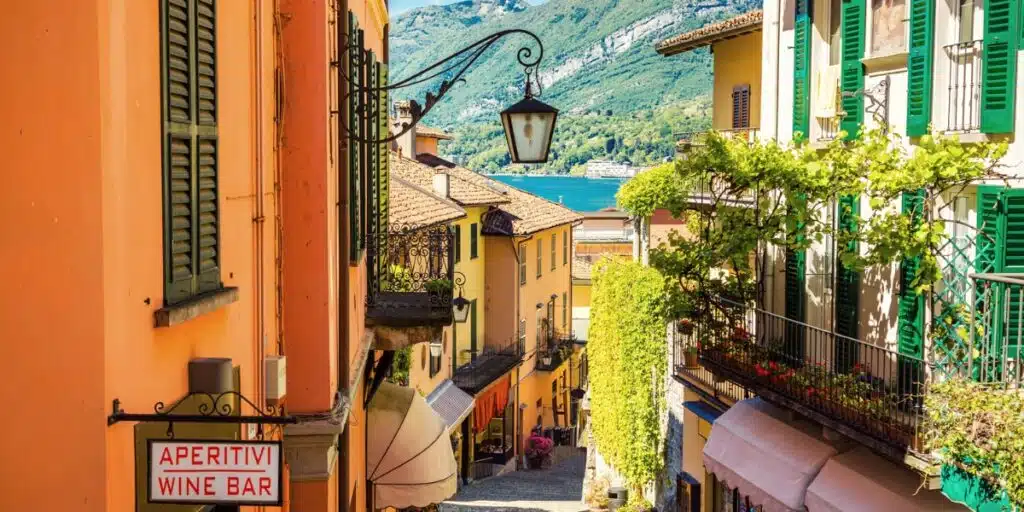
Northern Italy Road Trip: Itinerary, Map & Tips
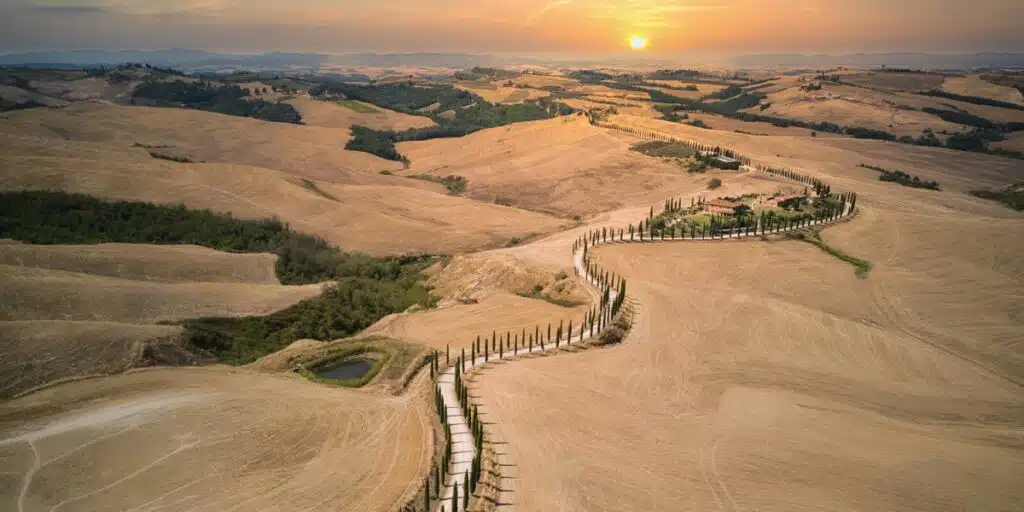
Tuscan Road Trip: Itinerary, Map & Tips
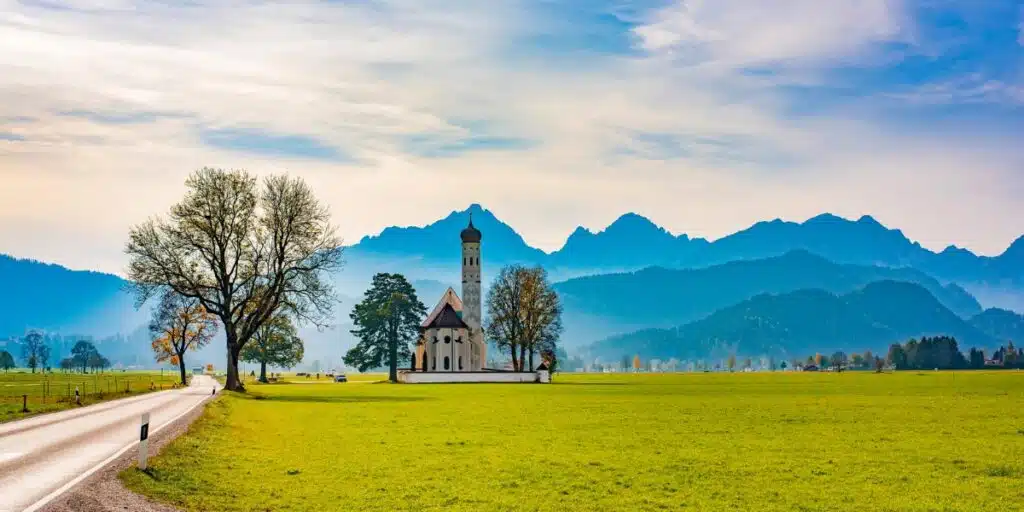
Romantic Road Germany: Itinerary, Map & Tips
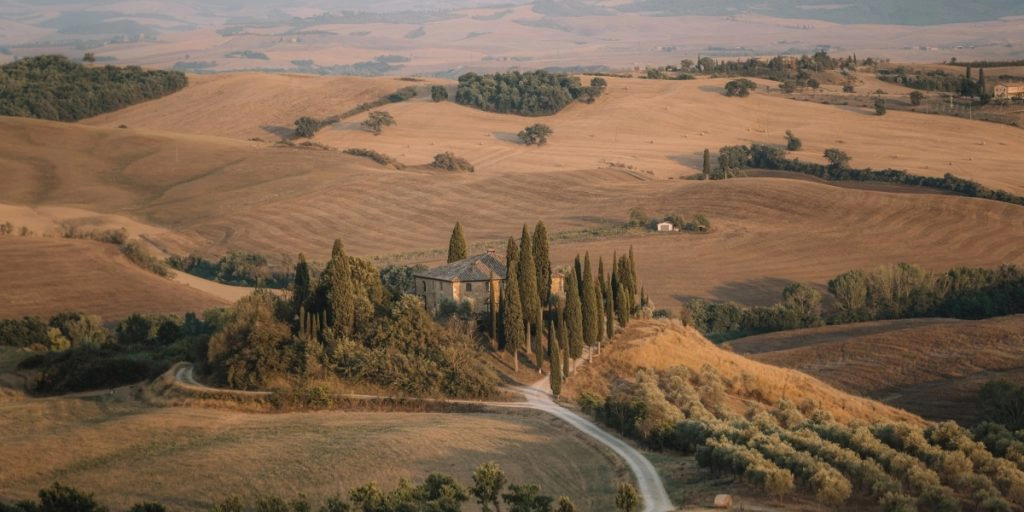
The Ultimate Bucket List Italy Road Trip
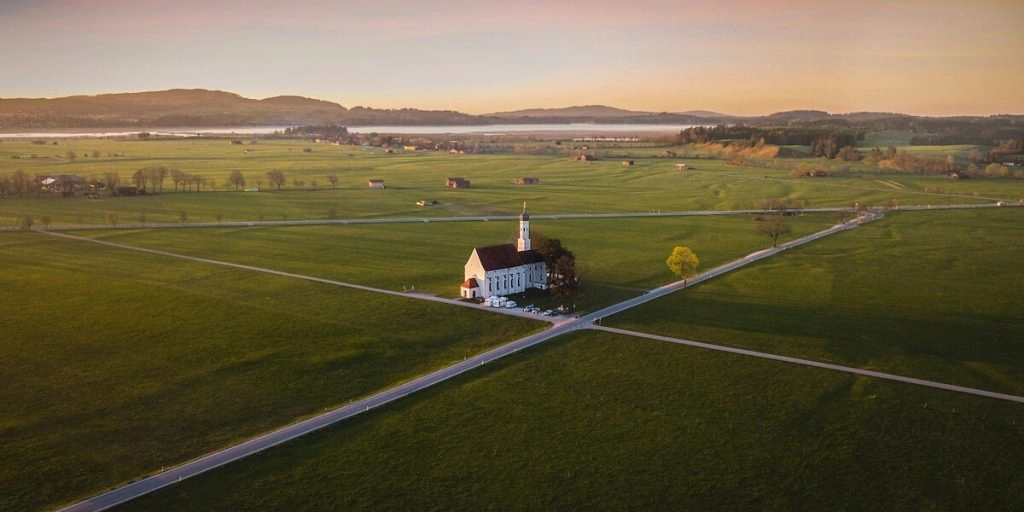
Six Unmissable Germany Road Trip Routes
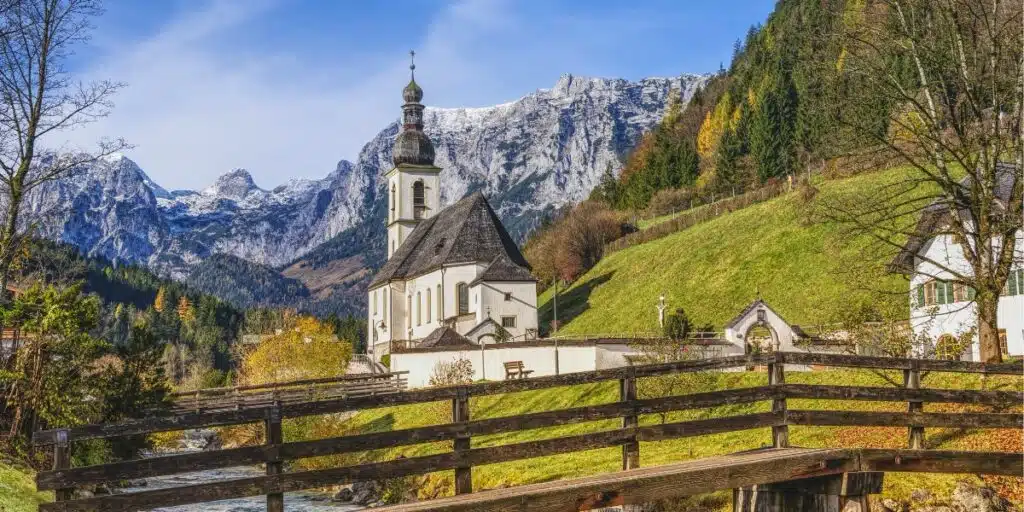
Deutsche Alpenstrasse: Route, Map & Highlights
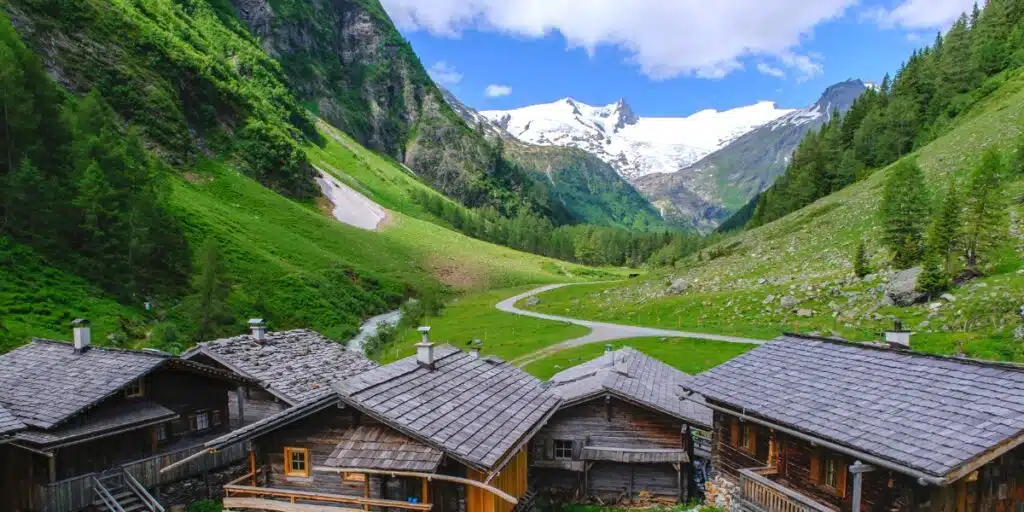
Austria Road Trip: The Best Itinerary, Map & Tips
Driving from Lausanne to Geneva takes approximately 45 minutes and takes you along the shores of Lake Geneva, offering stunning views of the lake and the surrounding mountains. Geneva is also the place where our Switzerland road trip route crosses with the Grand Tour of Switzerland route, which takes in five alpine passes, twelve UNESCO World Heritage sites, and 22 lakes.
Travel Tips: There are many mountain peaks along this route. If you love walking, why not consider stretching your legs and exploring the areas surrounding La Dôle, Le Noirmont, or Crêt de la Neige?
As you approach Geneva, you will be greeted by the city’s modern skyline, punctuated by the iconic Jet d’Eau, a 140-meter-high fountain located in the heart of the city.
Geneva is renowned for its rich history, beautiful parks and gardens, and world-class museums, including the Museum of the International Red Cross and Red Crescent. We would highly recommend a Lake Geneva cruise to enjoy scenic views of the Swiss and French Alps, as well as Geneva’s landmarks, from the waters of Lake Geneva.
- Where to Stay in Geneva
Upmarket: Hôtel Longemalle – Booking.com | Agoda
Mid-Range: Hotel Mon Repos – Booking.com | Agoda
Budget: Meininger Hotel Genève – Booking.com | Agoda
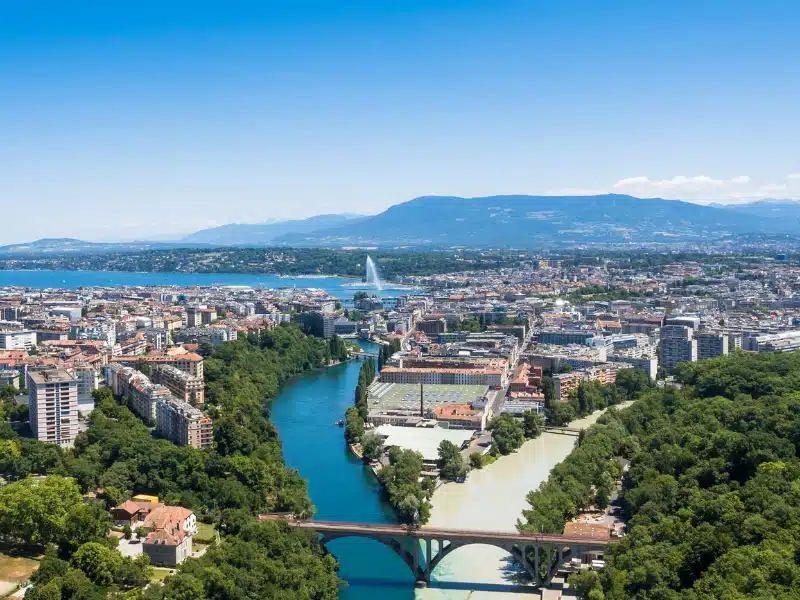
Want to plan your own road tri p? Get our step-by-step road trip planning guide to help you organize the perfect trip, or check out our Europe road trip ideas .
Montreux
Driving from Geneva to Montreux will take you further along the shores of Lake Geneva and through the picturesque Swiss countryside. The mild climate of Montreux, with a backdrop of the Swiss Alps, makes it a popular destination for both locals and tourists
Montreux is home to a number of cultural and historical landmarks, including the Château de Chillon, a medieval castle located on a small island in the lake. The city is also renowned for the Montreaux Jazz Festival , which takes place every summer and attracts music lovers from all over the world, and as the home of Charlie Chaplin and his family at Manoir de Ban in Corsier-sur-Vevey for 25 years.
Travel Tip: The Lavaux Vineyard Terraces are a UNESCO World Heritage Site located a 20-minute drive from Montreux. They feature miles of vineyards along the hillsides of Lake Geneva and are a must-see for wine lovers.
- Where to Stay in Montreux
Upmarket: Grand Hotel Suisse Majestic – Booking.com | Agoda
Mid-Range: La Rouvenaz – Booking.com | Agoda
Budget: Bon Port – Booking.com | Agoda
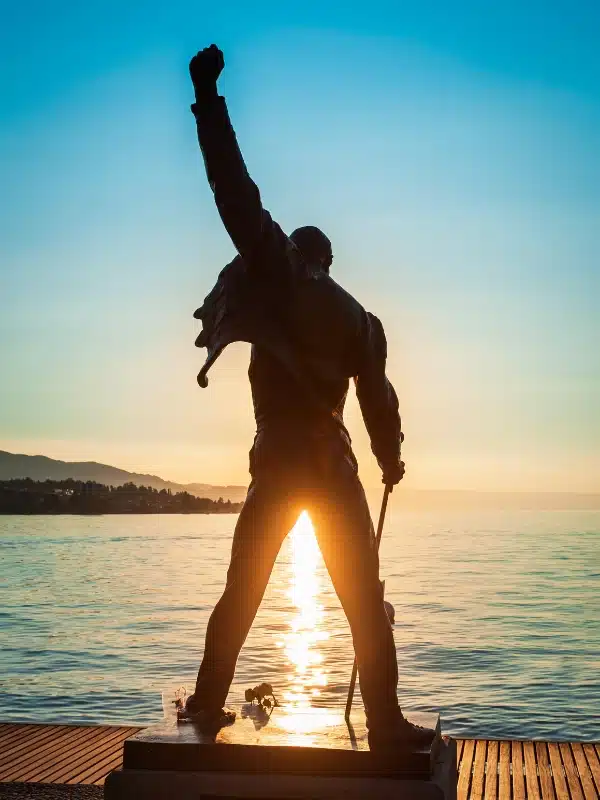
It’s worth making a stop at Nendaz, at the foot of Mount Tracouet. You won’t be surprised to learn that there is a traditional cable car up the mountain, helping you to enjoy the incredible landscape which surrounds you.
If you’re passing Nendaz in summer you may be lucky enough to experience the Swiss Alphorn Festival . This annual festival held in late July celebrates a work of Swiss tradition and history. The alphorn is a longhorn (around 11 feet) made of wood, historically used as a means of communication, and now used in Swiss folk music.
During the festival, alpenhorn blowers from the entire world descend for the official alphorn blowing competition, a trachten parade featuring folk costumes, concerts, folklore events, village balls, and an alphorn concert which involves a band with over 150 alphorn players! This really is a spectacle and very worth seeing.
- Where to Stay in Nendaz
Upmarket: Nendaz 4 Vallées & Spa – Booking.com | Agoda
Mid-Range: Le Cret Haute Nendaz – Booking.com | Agoda
Budget: Gîte de Planchouet – Booking.com | Agoda
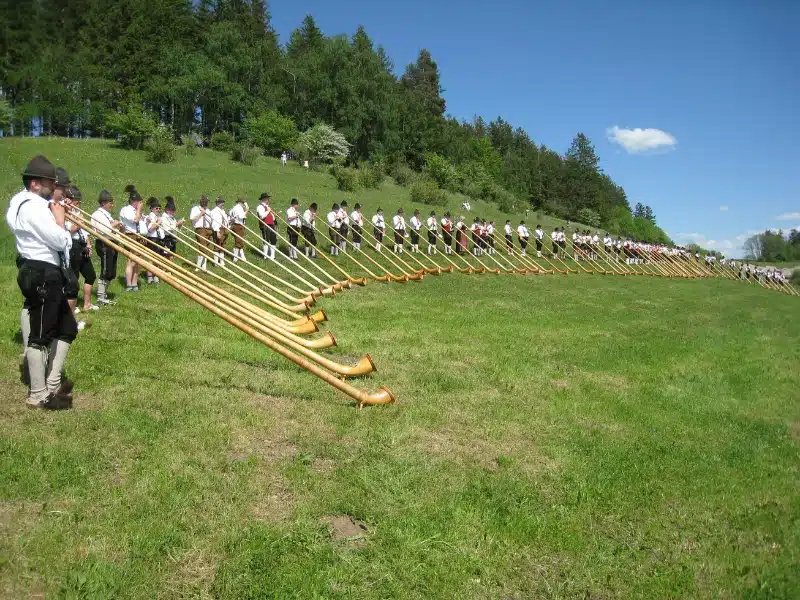
Zermatt
The drive from Montreux to Zermatt will be one of the longest legs of your trip! However, driving this incredible route will be an unforgettable experience as you further explore the beauty of the Swiss Alps.
As you approach Zermatt, you will be surrounded by towering, mountain peaks offering a glimpse into the heart of the Swiss wilderness. Zermatt is one of Switzerland’s most famous mountain resorts and is renowned for its ski slopes and breathtaking views of the Matterhorn, one of the most iconic peaks in the Swiss Alps.
Did you know that Zermatt is car free? You have to leave your car at one of the parking facilities in nearby Täsch. From there, Zermatt is 12 minutes awy by train, or you can grab a taxi direct to your hotel.
Definitely set aside time to hike in the Matterhorn Valley! We recommend the stunning five lakes hike, which passes the unique lakes of the Stellisee, Grindjisee, Grünsee, Moosjisee, and Leisee, the latter of which is good for swimming. This is a moderately easy walk and you can reach the trailhead by taking the Sunnegga funicular from Zermatt, and then the gondola to Blauherd.
As well as hiking, Zermatt offers a range of other outdoor activities. With over 360km of ski slopes, Zermatt is one of the largest ski areas in the Swiss Alps and offers skiing, snowboarding, and snowshoeing options for all levels.
A number of restaurants in Zermatt, such as Restaurant Zum See and The Cambrian , offer mountain views alongside locally sourced ingredients and traditional Swiss dishes.
Travel Tip: No trip to Zermatt is complete without a trip up the Matterhorn, which is one of the highest summits in the Alps at 4,478 meters above sea level. Take the Matterhorn Glacier Paradise Cable Car or the Gornergrat Bahn Cogwheel Train to the top for panoramic views of the Swiss Alps and the Matterhorn.
RELATED POST: Most Beautiful Places In Switzerland That You Must Visit!
- Where to Stay in Zermatt
Upmarket: Hotel Schweizerhof Zermatt – Booking.com | Agoda
Mid-Range: Le Mirabeau Hotel & Spa – Booking.com | Agoda
Budget: Hotel Bahnhof – Booking.com | Agoda
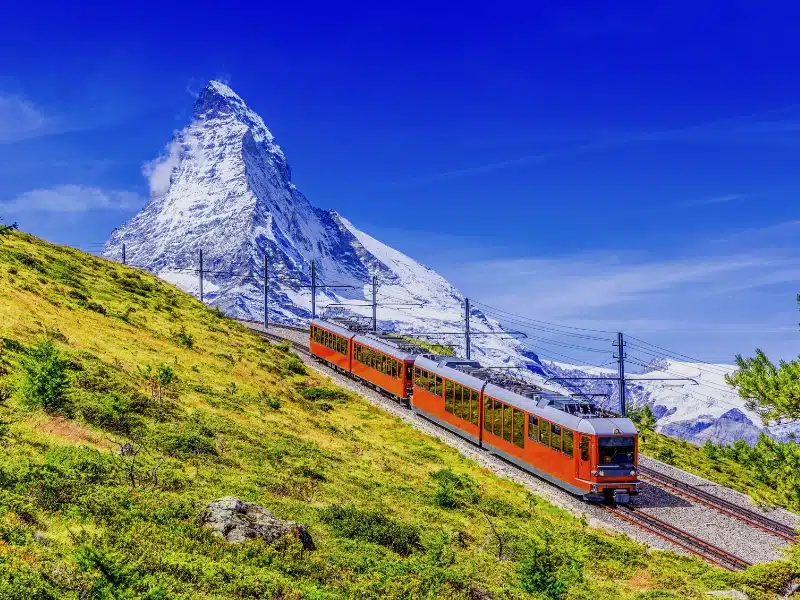
Interlaken
The drive from Zermatt to Interlaken takes you south through the towering peaks of the Swiss Alps. On route, you will pass the Weisshorngruppe. This mountain range is dominated by the Weisshorn peak, which reaches a height of 4,506 above sea level and provides a spectacular backdrop for your road trip.
There are lots of things to do in Interlaken and you can take in the cultural attractions, such as museums, churches, and traditional Swiss architecture.
Interlaken is also a popular destination for adventure sports enthusiasts, Interlaken offers a range of activities such as tandem paragliding , bungee jumping, and white-water rafting on the nearby Lütschine river .
Bordering Interlaken are Lake Thun and Lake Brienz. You can enjoy a range of activities on the emerald waters of these lakes. Lake Brienz offers jet boat tours and kayaking experiences while Lake Thun is home to the St Beatus Caves; a cave system featuring lit pathways through tunnels and chambers.
Travel Tip: While in Interlaken, take the time to visit the Harder Kulm viewpoint . With an altitude of 1,322 meters, this high vantage point allows visitors to enjoy unrivaled views of Interlaken and Unterseen.
- Where to Stay in Interlaken
Upmarket: Lindner Grand Hotel Beau Rivage – Booking.com | Agoda
Mid-Range: Hotel Chalet Swiss – Booking.com | Agoda
Budget: Walters Hostel Interlaken – Booking.com | Agoda
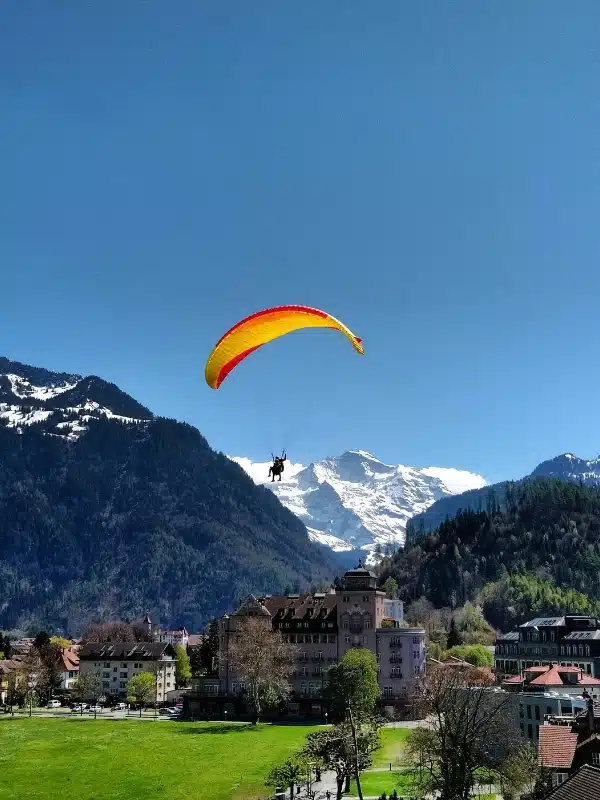
Jungfraujoch Side Trip
The Jungfraujoch is a topographical saddle connecting two major 4,000m+ mountains of the Bernese Alps – the Jungfrau and the Mönch. It lies at an elevation of 3,463 meters above sea level and is directly overlooked by the rocky prominence of the Sphinx, and the incredible Sphinx Observatory.
The Jungfraujoch Railway is the highest in Europe and trains leave Kleine Scheidegg railway station regularly throughout the year for the “top of Europe”. Once there, you can experience breathtaking views of the snow-capped Jungfrau-Aletsch region from the Sphinx Observation Deck and the Glacier Plateau, before hitting the snow park for snow tubing, sledding, and zip lining.
In the Ice Palace are intricately detailed ice carvings and sculptures of animals such as bears, penguins, and eagles, and you’ll also be able to learn about the history of the railway here. Just to top off your visit, nearby is Lindt Swiss Chocolate Heaven!
With over one million visitors a year, it’s best to book your Jungfraujoch tickets well in advance. With our recommended round trip to the top of Europe package , you get your train tickets, plus entry to all the Jungfaujoch experiences except the snow park. These tickets are on a buy now, pay later basis, so you can always cancel at no cost if your plans change.
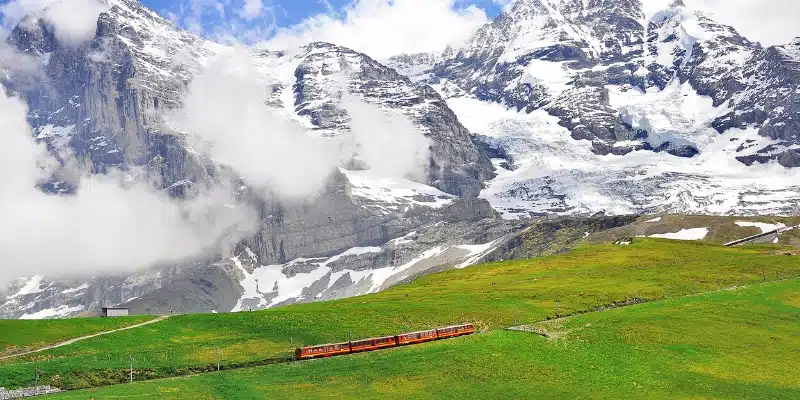
Lauterbrunnen
Driving for twenty minutes will take you from Interlaken to Lauterbrunnen. Lauterbrunnen is known for its 72 waterfalls, including the famous 300-meter-high Staubbach Falls, and the nearby Trümmelbach Falls, which gush through mountain crevices past viewing platforms.
Hiking, paragliding, rock climbing, and canyoning are all popular ways to experience what Lauterbrunnen has to offer. For a truly unique experience, consider viewing the landscape and the Bernese Alps from a hot air balloon.
Travel Tip: Lauterbrunnen and Mürren served as filming locations for the James Bond movie On Her Majesty’s Secret Service in 1969. From Stechelberg, get the Schilthorn cable cars to Bond World and the Birg Station at 2,970 meters. Once there, test your nerves on the Skyline Walk overlooking a vertical wall and tackle the Thrill Walk along a 200-meter cliff pathway, before walking the remaining distance to the iconic 007 Piz Gloria restaurant, which revolves to reveal a breathtaking 360-degree view of the Eiger, Mönch, and Jungfrau peaks.
- Where to Stay in Lauterbrunnen
Upmarket: Hotel Silberhorn – Booking.com | Agoda
Mid-Range: Hotel Schützen Lauterbrunnen – Booking.com | Agoda
Budget: Valley Hostel – Booking.com | Agoda
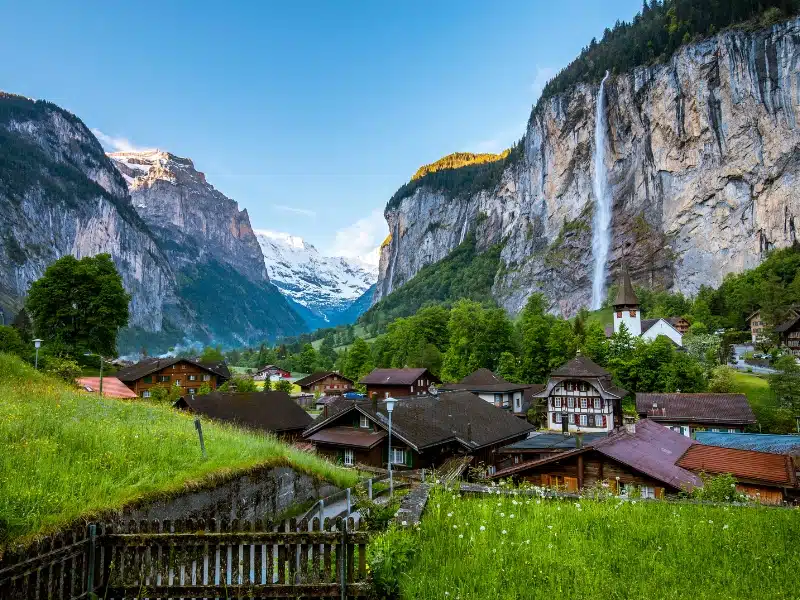
Grindelwald
The drive from Lauterbrunnen to Grindelwald takes approximately 30 minutes, depending on road conditions, passing traditional Swiss mountain chalets. These include Sulwald Stübli , a restaurant with mountain views that we highly suggest grabbing lunch in.
Grindelwald is surrounded by towering peaks including the famous Eiger mountain. The challenging hike along the Eiger Trail offers breathtaking views of this iconic mountain peak.
For a much easier walk, head to the First Cliff Walk at the summit of the First mountain at 2200m above sea level, a quick ride from the village on the Grindelwald Firstbahn cable car. The walk itself is along a metal walkway and a single-rope hanging bridge constructed along a cliff. At the end of the walkway, there is a spectacular observation platform that stretches out 45 meters above the mountains below.
We suggest experiencing the Grindelwald-Männlichen Cableway while in Grindelwald. This cable car ride offers panoramic views of the surrounding mountains and valleys, including the famous peaks of the Eiger and Wetterhorn.
Travel Tip: For an out-of-this-world experience, visit Grindelwald Glacier Canyon , an underground labyrinth carved out by the 250 million-year-old Grindelwald Glacier.
- Where to Stay in Grindelwald
Upmarket: Bergwelt Grindelwald Alpine Resort – Booking.com | Agoda
Mid-Range: Sunstar Hotel & Spa – Booking.com | Agoda
Budget: Grindelwald Youth Hostel – Booking.com | Agoda
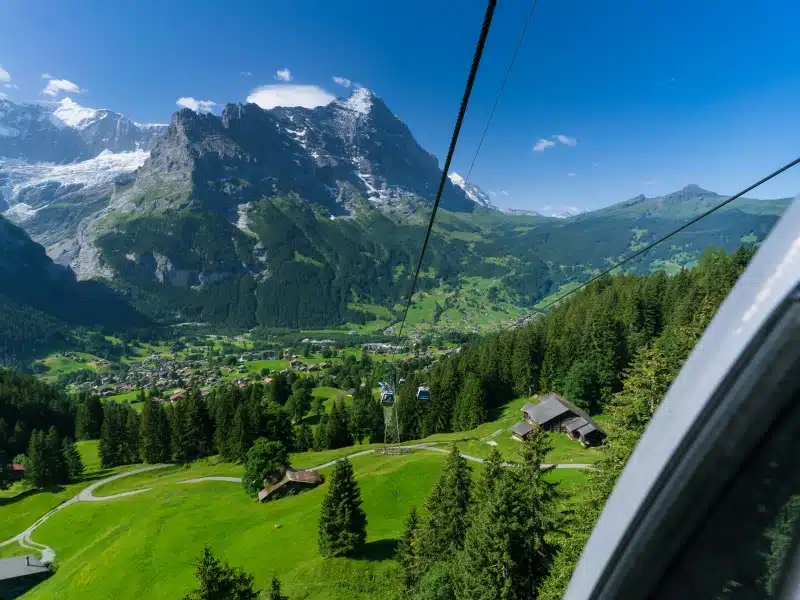
Furka Pass
To reach the Furka Pass, just over an hour from Grindelwald, you’ll first have to cross the Grimsel Pass, meaning you’ll bag two of Switzerland’s best driving roads in a day. These high-altitude mountain passes in the Swiss Alps are famous for their incredible scenic drives.
Remember, you will need to time your travel dates correctly to experience this world-renowned drive! The Grimsel and Furka Pass are only open between June and October due to travel conditions and snow on the roads, and will appear closed on our interactive map if you’re planning your route outside of the summer season.
When the road is closed you can transport your rental car by train in the Furka Base Tunnel , connecting Realp and Oberwald.
Travel Tip: The Furka Pass is located in a protected natural area, so be sure to follow Leave No Trace principles. Additionally, the road up the Furka Pass is steep, narrow, and winding, so it’s important to drive with caution, especially if you’re not used to mountain driving.
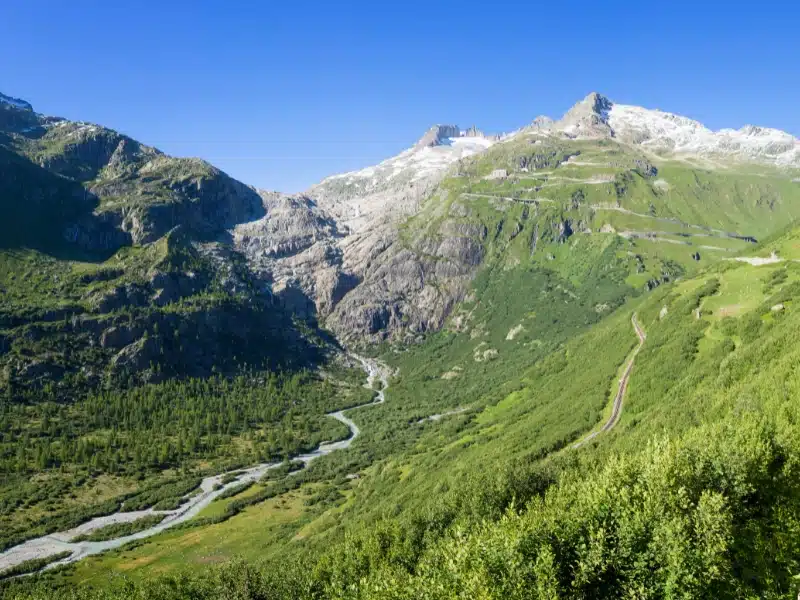
Lugano Side Trip
This is more of an optional extra than a side trip! On the other side of the Furka Pass, you have the option to head north on Route 2 to Lucerne, or south to Lugano, a good hour’s drive away. You’ll want a few days spare for this Lugano side trip!
Lugano is in an Italian-speaking region and has a distinctive Swiss-Mediterranean mix of cultures which are reflected in its architecture and cuisine. The city stands on the shore of beautiful Lake Lugano, surrounded by mountains, including Monte San Salvatore, and is full of lively squares, lakeside walks, fun shopping streets, and colorful parks.
To tick another country off your list, hop on a boat from the downtown pier of Lugano Centrale to either Porlezza or Ponte Tresa, both of which are in Italy.
The charming city of Lucerne is surrounded by rolling hills, forests, and lakes, showcasing the beauty of the Swiss countryside. A trip to Lucerne is incomplete without exploring Lake Lucerne. We would recommend experiencing the lake on a boat tour, by kayaking or paddleboarding.
While in Lucerne, we would recommend taking a Lucerne city tour to see the Chapel Bridge, the Lion Monument, and Lucerne’s historic old town. While visiting this city, you can also take a brilliant Lake Lucerne and Mount Pilatus trip , known as the golden round trip, which takes you on a boat, cogwheel railway, aerial cableway, and finally a gondola offering panoramic views of the surrounding mountains and the city itself.
Driving from Lucerne to Zurich takes approximately 1 hour and 15 minutes and is the final travel day on your ultimate Switzerland road trip.
- Where to Stay in Lucerne
Upmarket: Grand Hotel National Luzern – Booking.com | Agoda
Mid-Range: Waldstätterhof Swiss Quality Hotel – Booking.com | Agoda
Budget: Anstatthotel Horw – Booking.com | Agoda
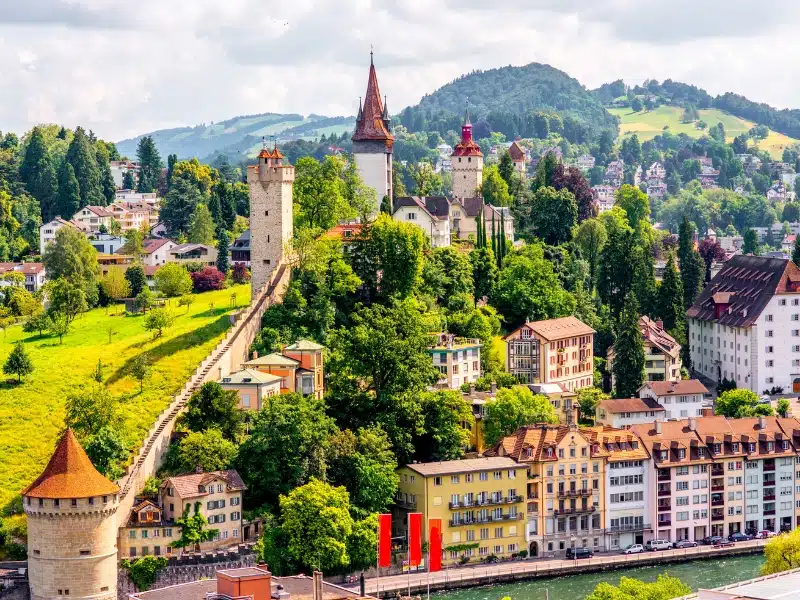
Mount Titlis Side Trip
A half-hour scenic drive from Lucerne to Engelberg will take you to an unmissable Swiss experience. The Titlis Glacier, found atop Mount Titlis is reached on the Rotair revolving cable car from Engelberg – yep, a rotating cable car!
You can also experience an unforgettable adventure on the Ice Flyer chairlift, step inside a glacier cave and cross the Titlis cliff walk bridge suspended high over the Swiss Alps.
If you prefer not to drive, this highly rated half day tour from Lucerne will transport you to Engelberg and include all the experiences Mount Titlis has to offer.
A road trip through Switzerland is filled with natural beauty, cultural richness, and adventure. From the rolling hills and pristine lakes surrounding Zurich, Bern, and Lucerne, to the stunning alpine landscapes of Zermatt, Interlaken, and Grindelwald, Switzerland offers a wealth of scenic vistas and outdoor activities.
Along the way, you can explore charming old towns, visit UNESCO world heritage sites, sample delicious Swiss cuisine, and relax in some of Europe’s most beautiful and serene natural settings.
Switzerland Road Trip Resources
Here are the websites and services we personally use and recommend for traveling in Switzerland.
- Search for affordable flights to Switzerland with Skyscanner
- Search for availability and book hotels and accommodation in Switzerland with Booking.com
- Find and book the best campsites in Switzerland with Eurocampings
- Book the cheapest and most reliable car rentals in Switzerland with Rentalcars.com
- Find and hire your perfect motorhome or campervan with Motorhome Republic
- Get highly rated, reliable, and trustworthy travel insurance with True Traveller
- Check if you need a visa and arrange your documents with Visagov
Tips for Driving in Switzerland
Travelling in Switzerland by car is a pleasure. The roads in Switzerland are well maintained and the drivers are courteous and measured. The engineering of the mountain passes and complex tunnels and bridges that ribbon across the landscape is a real marvel.
Whether you’re traveling in your own vehicle or flying in and renting a car, you need to follow these rules when you drive and travel in Switzerland;
- You must have at least three months remaining on your passport (issued in the past ten years) at your intended date of departure from Switzerland.
- You may need a visa to enter Switzerland, you can find out more on the State Secretariat for Migration website .
- You must have at least 3rd party insurance for your vehicle when you road trip in Switzerland.
- Citizens of non-EU third countries may require an IDP, you can check here .
- It is compulsory to carry a warning triangle inside the car, not in the boot.
- If you wear glasses you must carry a spare pair.
- You will require a Swiss motorway vignette or toll sticker if you want to use the autobahn. It’s almost impossible to avoid doing so, and it’s easy to buy a sticker online , at the border or at a service station just inside the country. If you’re renting a car, the vignette will be included.
- If you’re planning a winter road trip to Switzerland, you should carry snow chains. Road signs will let you know when you need to put them on the car.
- In Switzerland, motorists drive on the right and overtake on the left. Unless otherwise indicated, the vehicle coming from the right has priority at intersections.
- Drivers approaching roundabouts must give way to all traffic already on them unless otherwise indicated by signs.
- If you have a GPS navigation system that shows you where any speed cameras are, you must deactivate this function. Carrying or using radar detection equipment is illegal when driving through Switzerland.
- You may only use a mobile phone whilst driving with a hands-free device.
RELATED POST: Driving in Europe – Everything You Need to Know
Are you looking for more road trip inspiration? Check out these top posts…
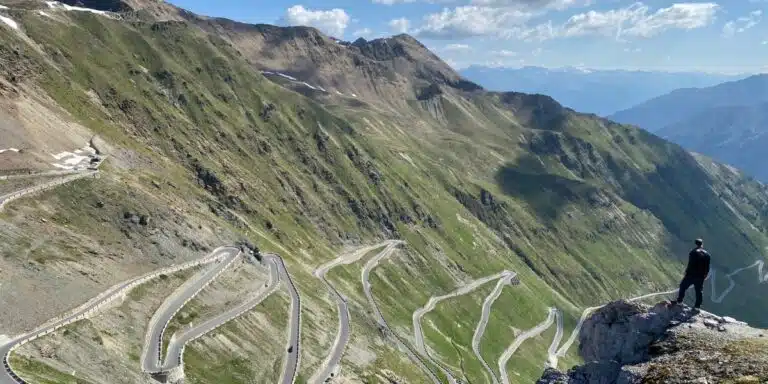
Stelvio Pass: The Best Mountain Road in Italy?
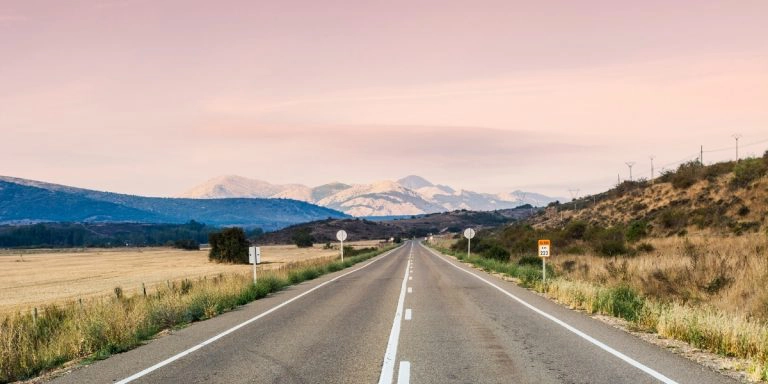
Spain Road Trip: 8 Amazing Routes for an Epic Trip
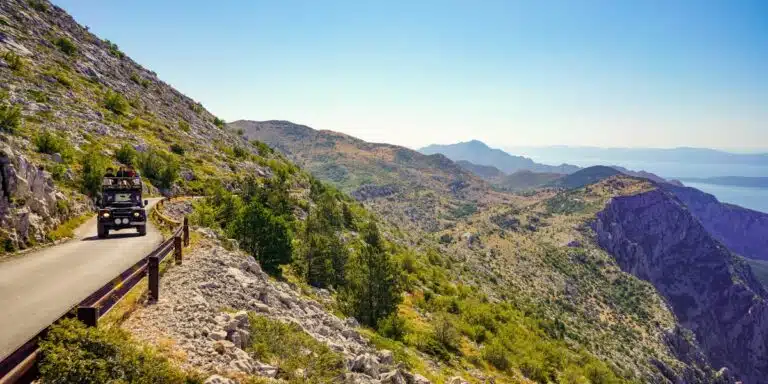
Croatia Road Trips: Five Incredible Routes
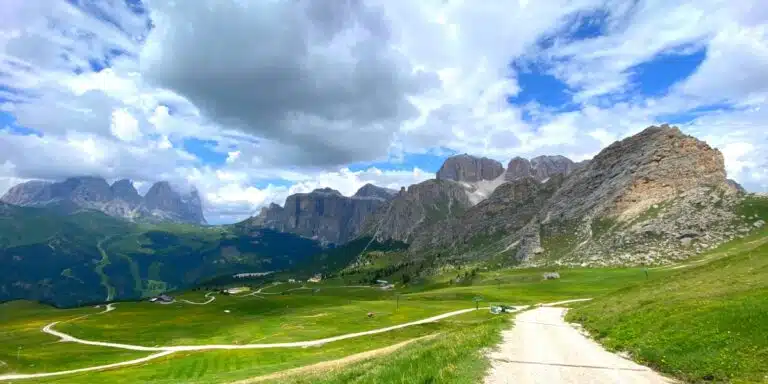
Dolomites Road Trip: Explore the Best of Northern Italy
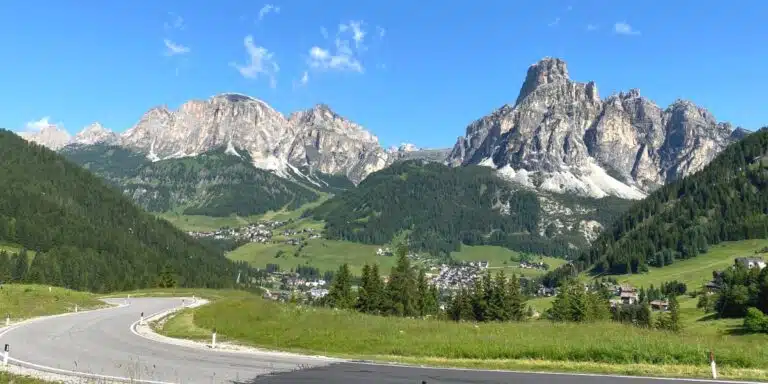
Great Dolomites Road: Absolutely Everything You Need to Know!
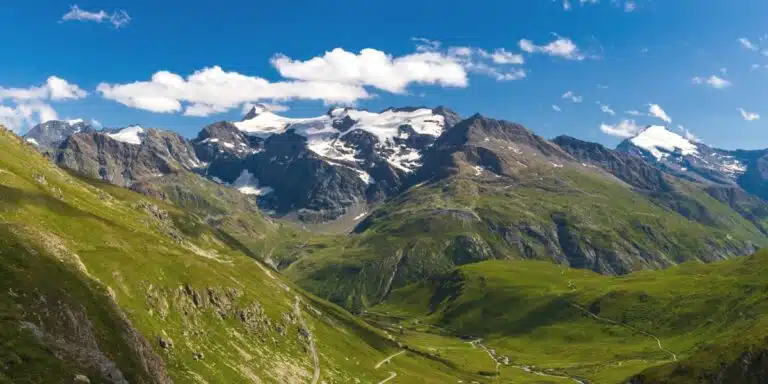
Route des Grandes Alpes: An Epic French Road Trip
Love it pin it.
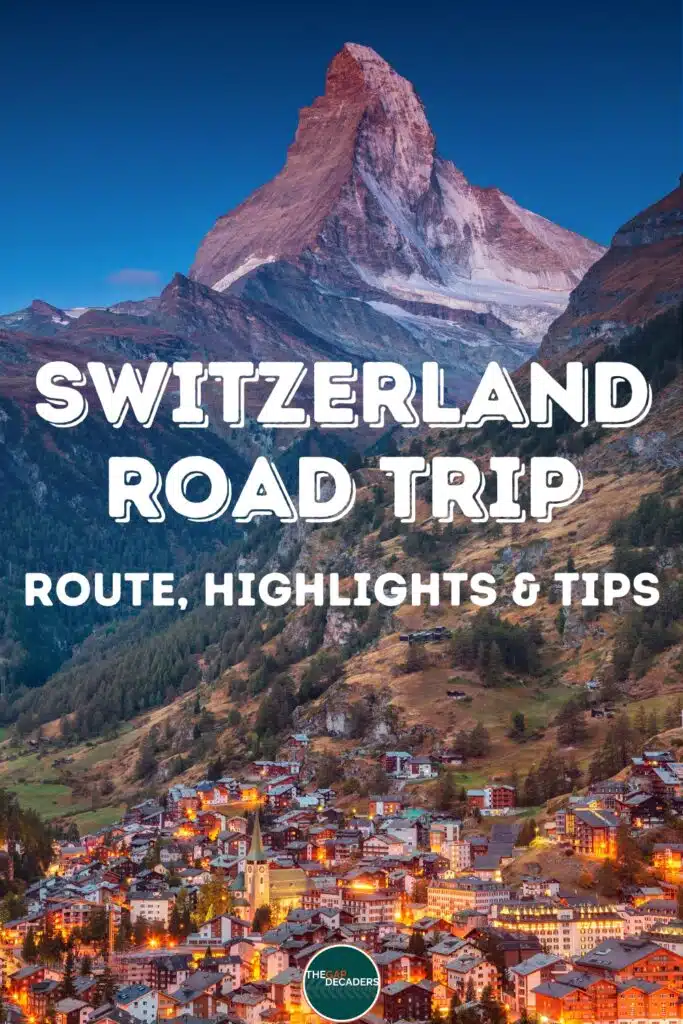
Switzerland itinerary: 3 to 14 days [2023]
Disclaimer: This post contains affiliate links. At no cost to you, I might earn a small commission if you make a purchase through the links in this article.
Famous for the snow-capped mountains, Alpine villages and thundering waterfalls, Switzerland is a bucket list place for many adventurers.
Switzerland is influenced by its many neighbors, and yet, it has its own unique identity. The postcard views are abundant throughout this country, whether you spend time in cities or venture into the mountains.
My Switzerland itinerary will show you the best places beyond the popular staples like Zermatt or Lauterbrunnen that sometimes can feel a bit touristy.
Buckle up and get ready to put some cool places on your bucket list!
PRO TIP: Want to avoid mistakes while traveling this country? Check my top tips for Switzerland travel that will help you enjoy your Switzerland itinerary without falling into most common tourist pitfalls.
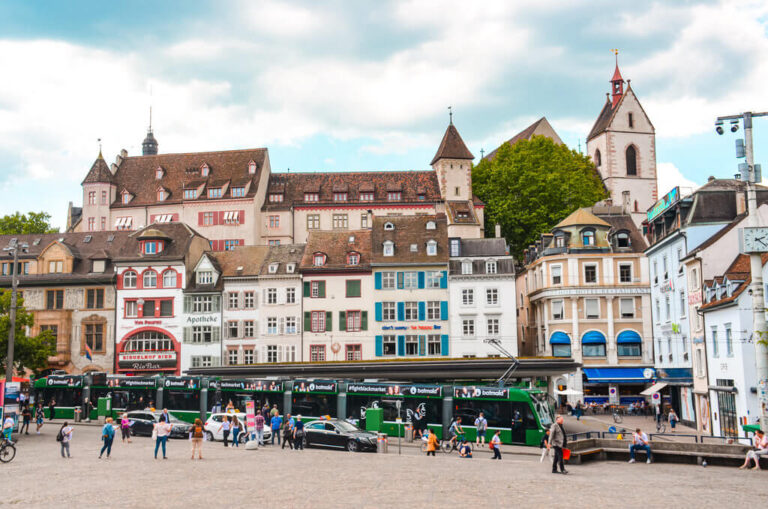
Where to begin your Switzerland itinerary
If you arrive to Switzerland from outside Europe, it makes sense to begin your trip to Switzerland from Zurich , Geneva and Basel that have international connections. Since most travelers spend about 5-7 days in Switzerland, planning your trip requires time and preparation, as there are too many places in Switzerland that are worth a stop.
PRO TIP: If you are not flying to Zurich airport, another option is to fly into Milan Malpensa Airport, which is under one hour from the border of Italy and Switzerland. This way, you can start your Switzerland road trip in Ticino, a southern canton that boasts a Mediterranean flair .
Your Switzerland itinerary: a complete overview
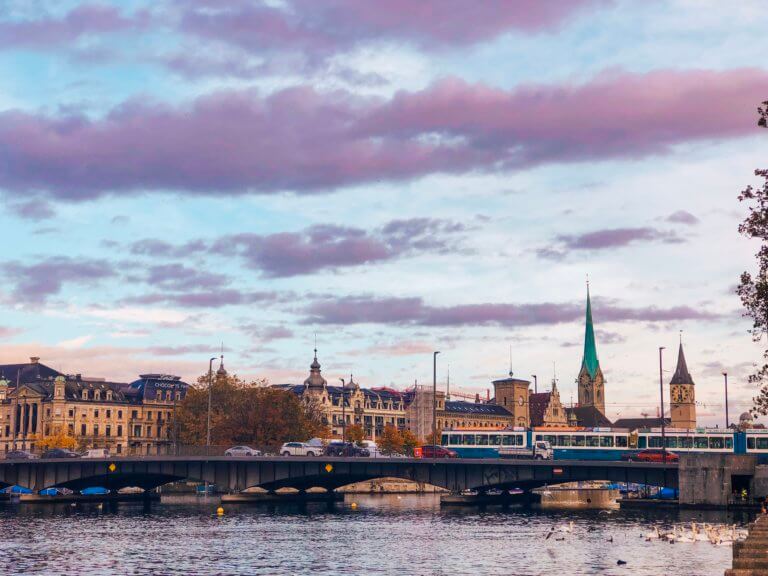
Day 1: Zurich
Where to stay: Hotel Seehof
Zurich is the largest city in Switzerland and also one of the most expensive cities in the world.
Located on the shores of Lake Zurich, this city is a great stating point for your itinerary because it offers a good intro to the country and has plenty of things to keep you busy for a few days.
✅ Read my complete guide on how to get from Zurich to Lucerne
Best places to visit in Zurich
Old Town Zurich has centuries-old architecture and historic landmarks such as the old protestant church Grossmunster , Peter Kirche and Framunster .
To get a panoramic shot of Zurich, climb to the top of Grossmunster . There, you will be able to get on an observation platform and see Fraumunster , the Limmat River and the Old Town of Zurich .
✅ Check my complete guide to Uber in Zurich to get around the city quickly
If you want to have some fun, head to Langstrasse that has many restaurants and nightlife. In summer, mark your calendar for the biggest annual event in Zurich, The Street Parade , which is also the most attended techno parade in Europe.
Best day trips from Zurich
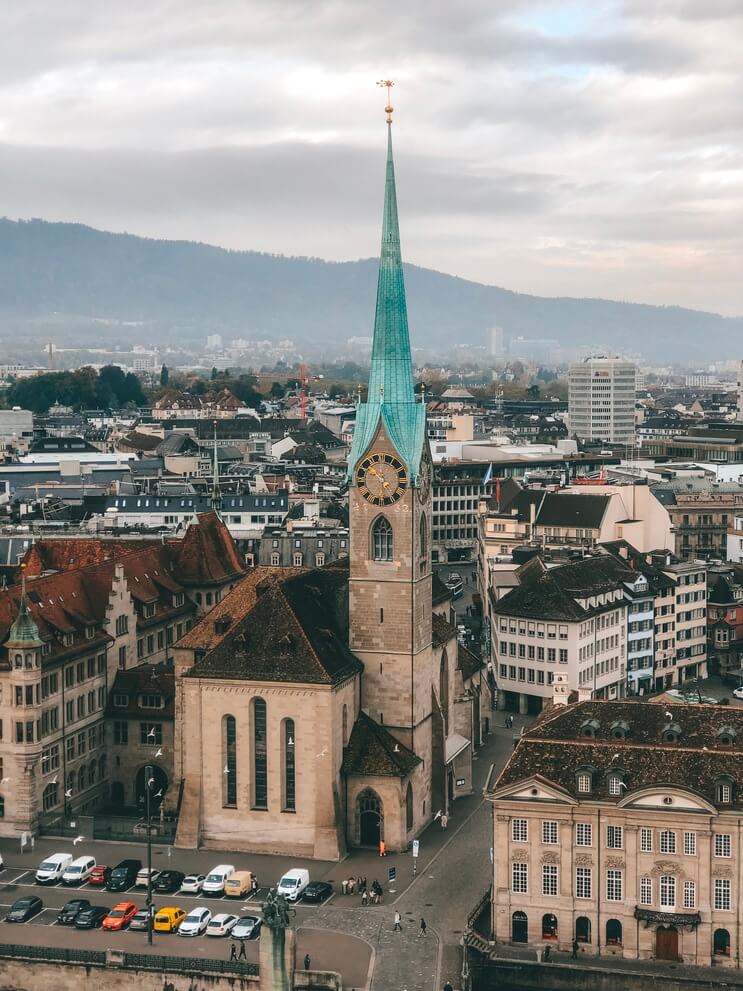
You can also enjoy Uetliberg , the closest mountain to Zurich from which you can soak in the views of the area; shop till you drop along the Bahnhofstrasse , Zurich’s shopping district where you can find many stores from H&M to luxury boutiques; or visit one of Zurich museums like the Swiss National Museum to learn about the history of the country.
Best free things to do in Zurich
Zurich is an expensive city, and you can spend a pretty penny here without trying hard. To stay within your budget, take advantage of the free things to do in Zurich.
Take a stroll along the Limit River that flows through Old Town of Zurich or grab some food and enjoy the views on one of the benches along the river bank. You can also walk to the top of Lindenhof Hill a few minutes away from Old Town of Zurich from where you can get amazing views of the city.
If you are short on time, book your sightseeing tour of Zurich which will help you to see the city’s main highlights just in a day.
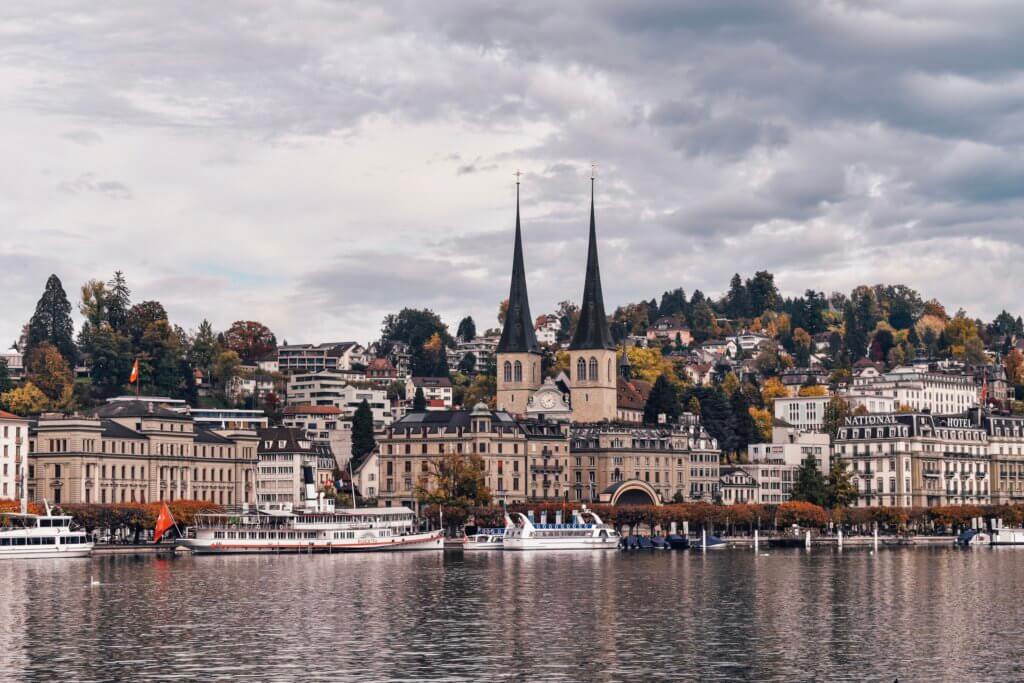

Day 2: Luzern
Where to stay: Hotel Des Alpes
Luzern (Lucerne in English) is a classic Swiss town: It’s compact, it has a nice Old Town and it is easy to get around on foot. Luzern is about 50 minutes south of Zurich by train, and makes for a perfect day trip.
✅ Learn about where to stay in Lucerne
The city’s signature landmark, Kapellburcke (the Chapel Bridge) is what draws a lot of tourists. However, there are plenty of other things to do in Luzern such as the old town, Musegg Wall , and Hofkirche .
Best places to visit in Luzern
One of the best places to visit in Luzern is the Swiss Museum of Transport . The most popular museum in Switzerland, this place showcases road signs and everything that related to different modes of transport, and makes for a fun afternoon visit.
One of the most popular things to do in Luzern is Mount Rigi. Take a boat from Lucerne to Vitznau and get on the cogwheel train to the summit of Mount Rigi.
Another way to get to Mount Rigi is by a boat. Weggis dock is 15 minutes uphill to the cable car (Luftseilbahn). From there, you can take a 10-minute cable car to the resort Rigi-Kaltbad, and catch the red cogwheel train on the Vitznau–Rigi line to the peak of Mount Rigi.
Finish your day in Luzern by taking a cable car from the valley station in Kriens near Lucerne to Mount Pilatus where you can hike and see a wonderful panorama of Luzern.
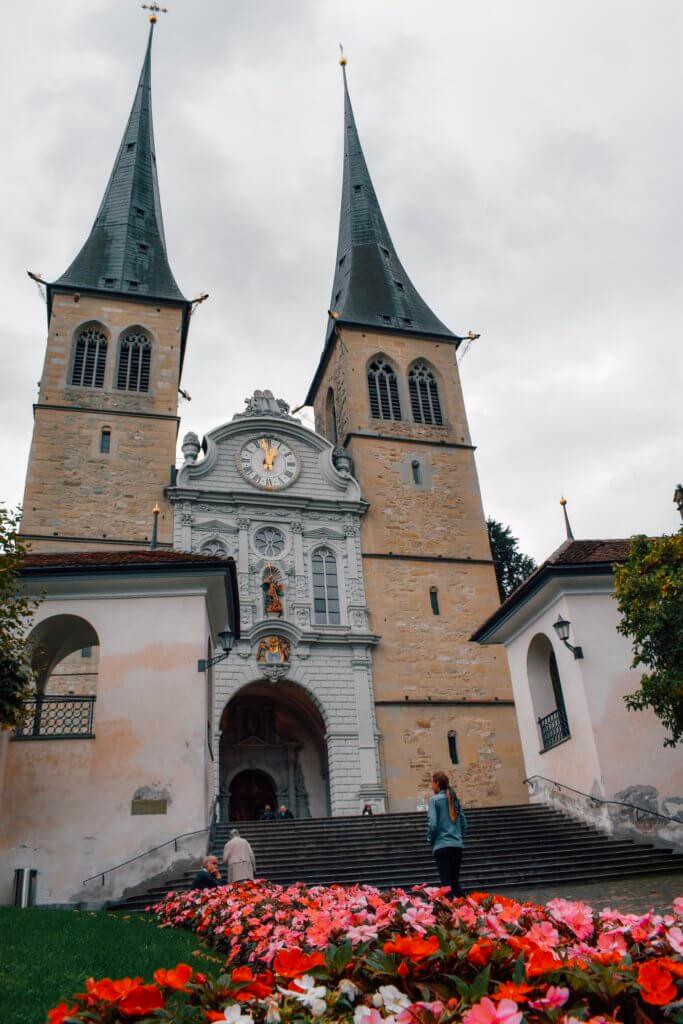
PRO TIP: If you are in Switzerland only for a few days and don’t plan on buying the Swiss Rail Pass, download Omio App for booking your train tickets around Europe. I have used this app numerous times, and really loved how easy and simple it was to use.
Best tours of Lucerne
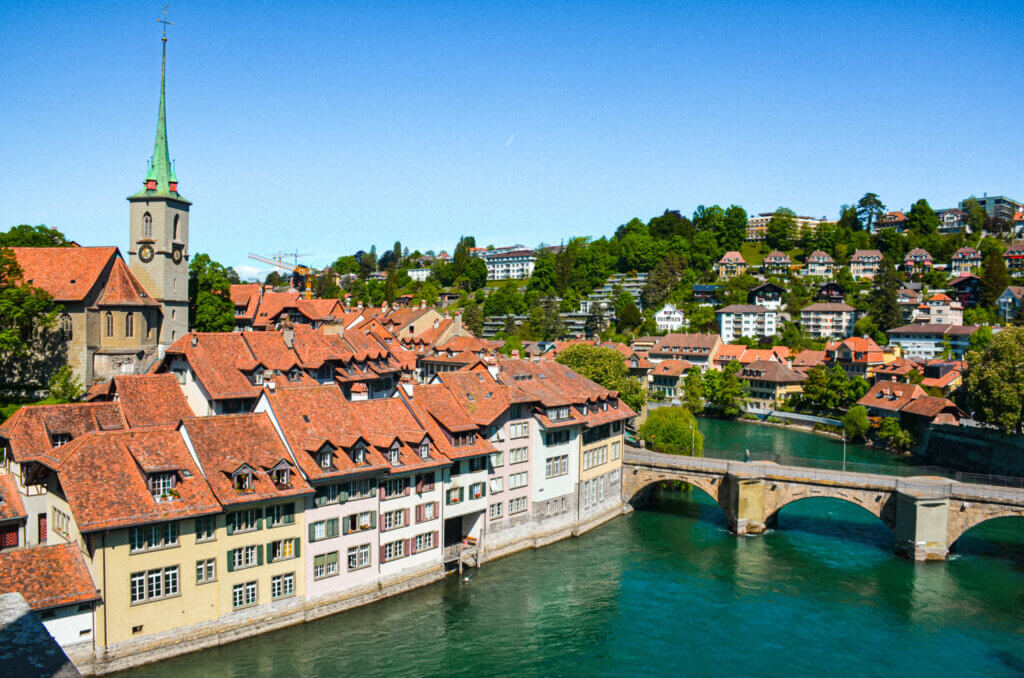
Day 3: Bern
Where to stay: Hotel Jardin Bern
Catch a 1-hour train from Luzern to Bern and spend a day in the Swiss capital.
Bern boasts a medieval old town on the shores of the Aare River. One of the most notable feature of Bern’s Old Town are the arcade-style buildings where you can find many stores, restaurants and cafes.
While Bern lies slightly off the popular tourist route, it is one of the best places to visit in Switzerland, if you are looking to see more culture of the country.
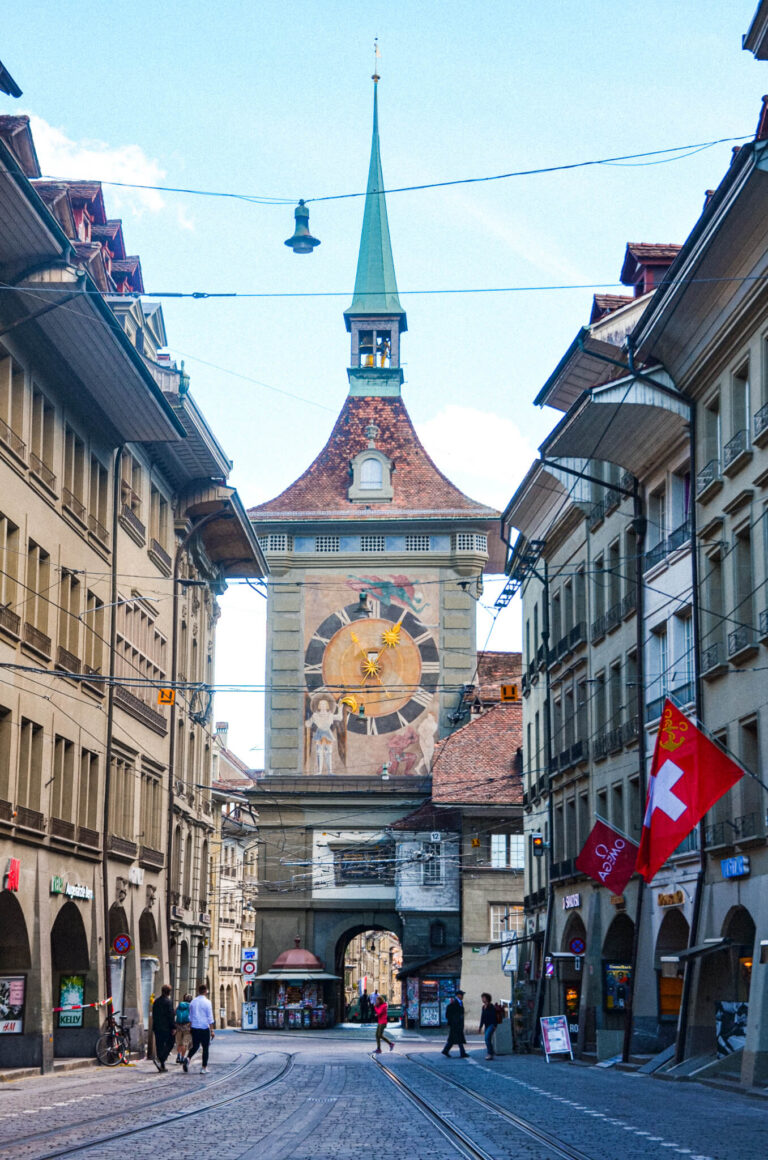
Visitors enjoy sightseeing in Old City Bern that has many landmarks such as Zytglogge , a medieval clock tower with moving figurines; The Bern Minster , a Swiss Gothic cathedral built during the reformation era; and many typical Swiss fountains – the most famous of them is “ Kindlifresserbrunnen ” which is literally translated “child eating fountain.
The unsettling figure portrays a man eating babies out of a bag – Read more about this sculpture and other things to do in Bern, Switzerland .
PRO TIP: Use public fountains to fill up your water bottle. Tap water in this country is very high quality, so you can save money instead of buying bottled water.
Best tours of Bern
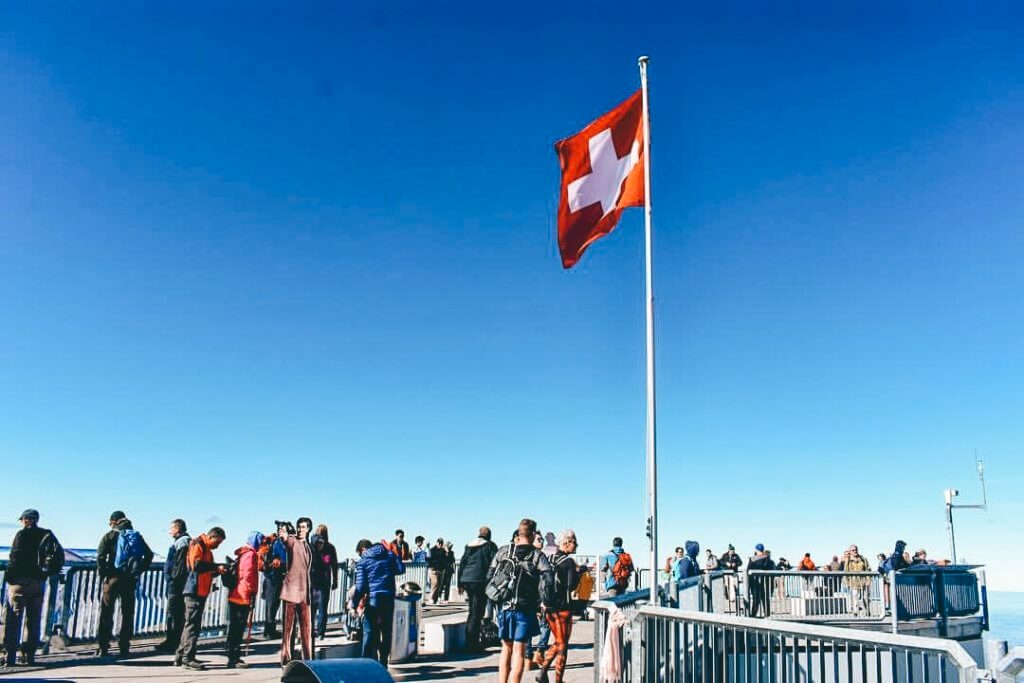
Bernese Oberland
Where to stay: Hotel Regina
Bernese Oberland is one of the most breathtaking parts of Switzerland with tall snow-powdered mountains, deep valleys carved by glaciers and green Alpine meadows that most people picture when they think of this country.
Here you can visit Jungfraujoch and Schilthorn , some of the most well known mountains in the region.
You can get to Schilthorn from Murren via Winteregg railway station. While tickets are available at the ticket office and online, book your tickets in advance because it’s one of the most popular places in the country.
Day 4: Schilthorn. Skip Jungfrau
Jungfrau is on everybody’s bucket list.
It’s crowded and expensive, and while being on top of it is cool, you don’t get to see the actual mountain. Visit Schilthorn , a less expensive, and also less crowded mountain that boasts a great panoramic view of the Eiger, Monch and Jungfrau . It’s a perfect alternative to Jungfrau!
After soaking in views of Schilthorn , stop in a revolving restaurant Piz Gloria for a delicious meal where you can get 360-degrees views of the Swiss Alps without getting outside. Here you can also learn about one of James Boys movies that was filed here back in the day!
Best tours of Schilthorn
Bernese Oberland boasts many picturesque mountain towns. One of the most popular villages in the Jungfrau region is Grindelwald that has hotels , restaurants and stores.
Other areas to stay near Jungfrau are Wengen, Mürren and Lauterbrunnen.
PRO TIP: While a day is often enough to check cities off your bucket list, this is not the case with the Swiss mountains. If you want to hike and enjoy Bernese Oberland and visit places like Thun and Interlaken without rushing, spend from 3 to 5 days there.
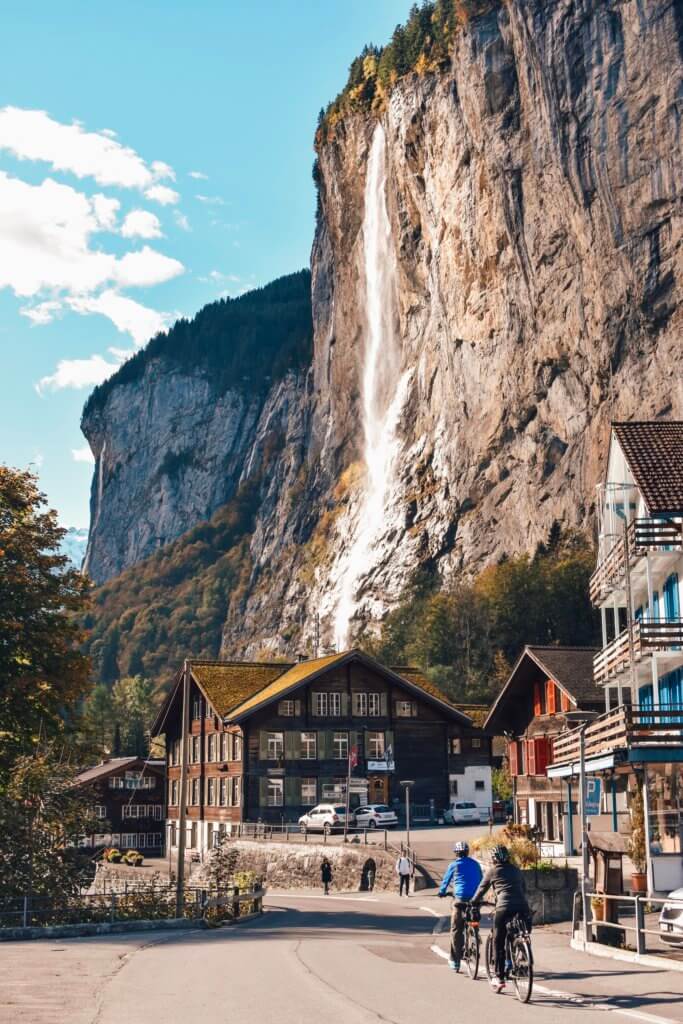
Day 5: Lauterbrunnen
Where to stay: Hotel Silberhorn
Your trip isn’t complete without venturing into the mountains – one of the most popular things to do in Switzerland, and there’s no better place to start than Lauterbrunnen Valley – a crown jewel of the Jungfrau region that boasts wonderful postcard views of the Swiss Alps.
Nestled between the gigantic mountains, this glacial valley is a popular stop for mountaineers, base jumpers and skiers because it offers a quick access to some of the most famous mountain peaks in Switzerland.
The Lauterbrunnen Valley has dozens of thundering waterfalls which make it a bucket list for travelers from all over the world. Wandering around here is a pure joy, and although Lauterbrunnen is touristy, it will be one the main highlights on your itinerary.
You can reach Lauterbrunnen from Bern by train via a connection in Interlaken. Check the SBB website to find out how to get Swiss Rail Pass and plan your journey.
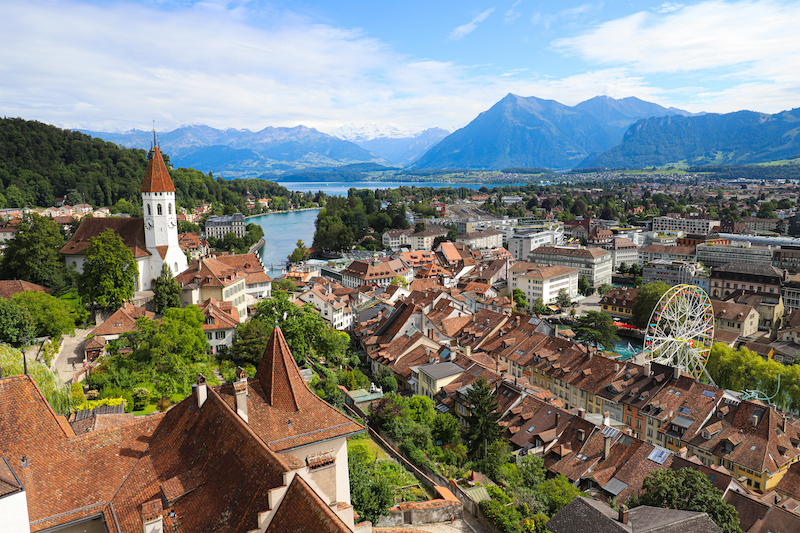
LET ME HELP YOU PLAN YOUR TRIP TO SWITZERLAND!
Besides being a travel blogger, I also create itineraries for my readers 😃 If you want me to plan your trip to Switzerland, provide insider tips and do all the research for you, fill out the form.
My custom itineraries include information on popular landmarks, restaurants, and hidden corners that most tourists miss. As part of my services, I also create suggestions on flights, hotels and activities.
Can’t wait to hear from you! 💛
Day 6: Zermatt
Where to stay: Wellness Hotel Alpenhof
Located at the foothills of the legendary Matterhorn, Zermatt is a famous resort in the canton Valais, that is a popular stop for many travelers.
Here you can ski in the middle of the summer, reach the dizzying heights thanks to the wonders of the Swiss engineering, or climb one of the world’s most famous mountains.
On a clear day, Matterhorn can be seen from several points in the area such as Gornergat, Rothorn and Glacier Paradise , the highest cable car in Europe. It’s important to plan your trip to Zermatt on a clear day, so you can see this world-famous peak and get the panoramic views of the Swiss Alps surrounding it.
Best tours of Zermatt
To get a good taste of Zermatt, spend 2-3 days in the area. Some of the most popular activities here are mountain biking, skiing, ice skating and hiking. The Zermatt village has plenty of restaurants and accommodation from simple hostels like Zermatt Youth Hostel to luxury 5-star hotels like Mont Cervin Palace in the heart of Zermatt.
If you are looking for good hotels in Zermatt, I recommend Agoda , a great website for finding accommodations.
You can reach Zermatt by train from Interlaken in just over 2 hours, but you will have to change trains two times.
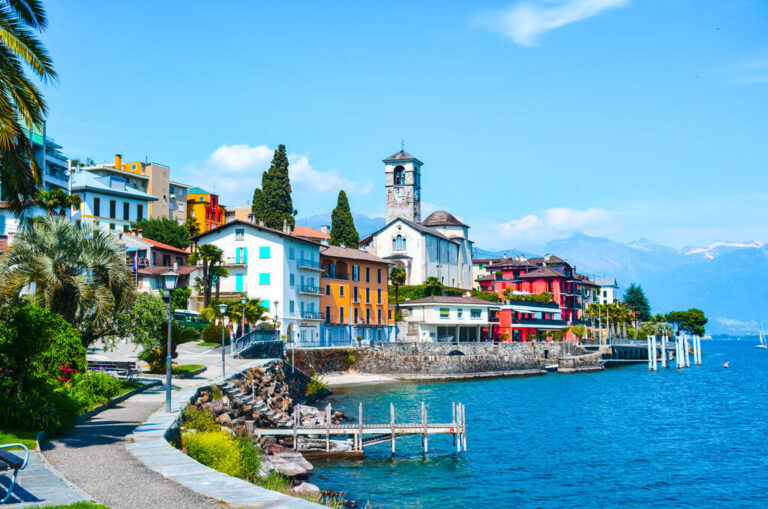
Day 7: Ticino
Where to stay: Hotel Victoria
OK, here’s the deal: After visiting Bernese Oberland, Zermatt and other, many travelers go to Geneva or back to Zurich to catch their flight back home.
I want to give you a different option if you are looking to see the different side of the country.
The Italian-speaking canton Ticino is a true gem that boasts Mediterranean flare, warm climate and the architecture similar to that in Northern Italy. It is home to some of the best places in the country if you want to explore the country off the beaten track.
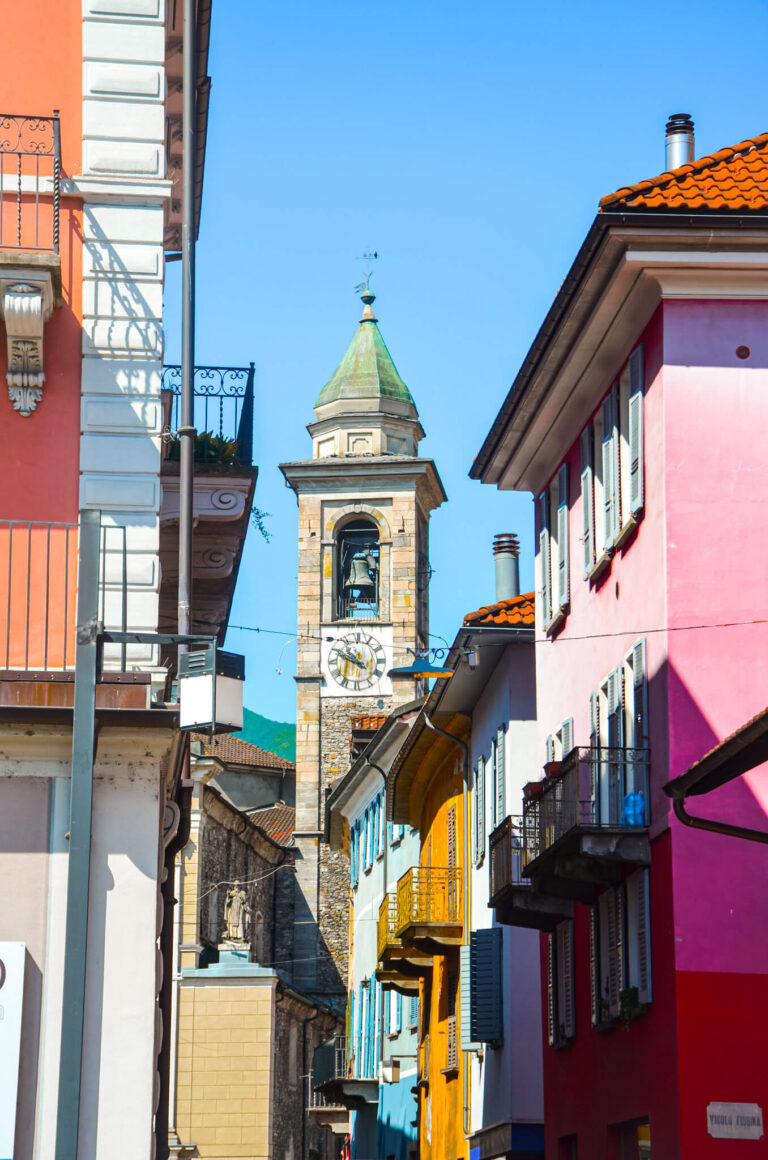
PRO TIP: Although you can get around most of the country by public transportation, Ticino is one place where renting a car makes more sense. The region has many small towns and scenic overlooks, and while you can visit them by public transportation, it will take longer.
👉 Exploring Ticino is a great idea, if you have a little bit more time, like 10 days in Switzerland.

Places to visit in Ticino
Some of the most beautiful places in Ticino are Lugano, Morcote , Locarno and Valle Verzasca.I recommend setting one day aside for your trip to Valle Verzasca where you can find an unspoiled nature and charming mountain towns such as Sonogno and Lavertezzo .
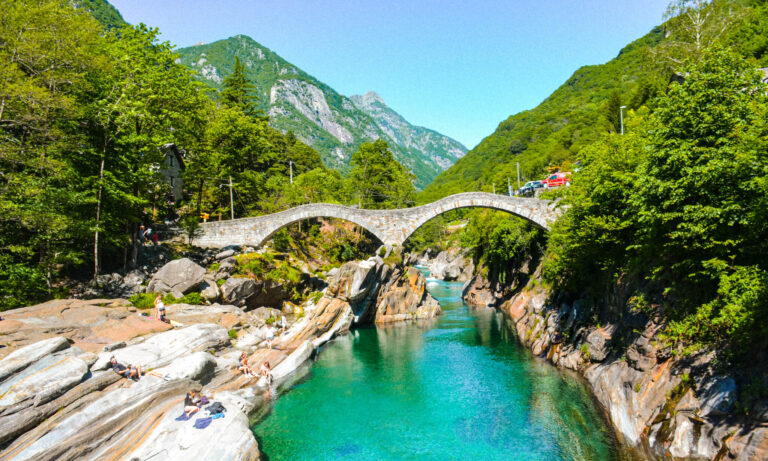
To enjoy some of the best places to visit in Ticino, spend no less than 3 days in the region. You can easily spend a week here because there is so much to do in terms of culture and outdoors, but some travelers stay in Ticino for just a couple of days.
GOOD TO KNOW: Ticino is a common stop for travelers who head south to Italy through Switzerland. From Ticino, you can quickly reach Lake Como and Milan, which makes it a perfect stop if you are going to Italy.
Take a drive on Gotthard Pass
If you travel Switzerland during summer, and plan to visit Ticino, take a scenic route along the Gotthard Pass in the Swiss Alps that connects northern and southern parts of the country. The highest point of the pass is located at the elevation of nearly 7,000 feet and the ride along the pass offers 360-degree views of the Alps. It is a perfect addition to your road trip if you have a car rental .
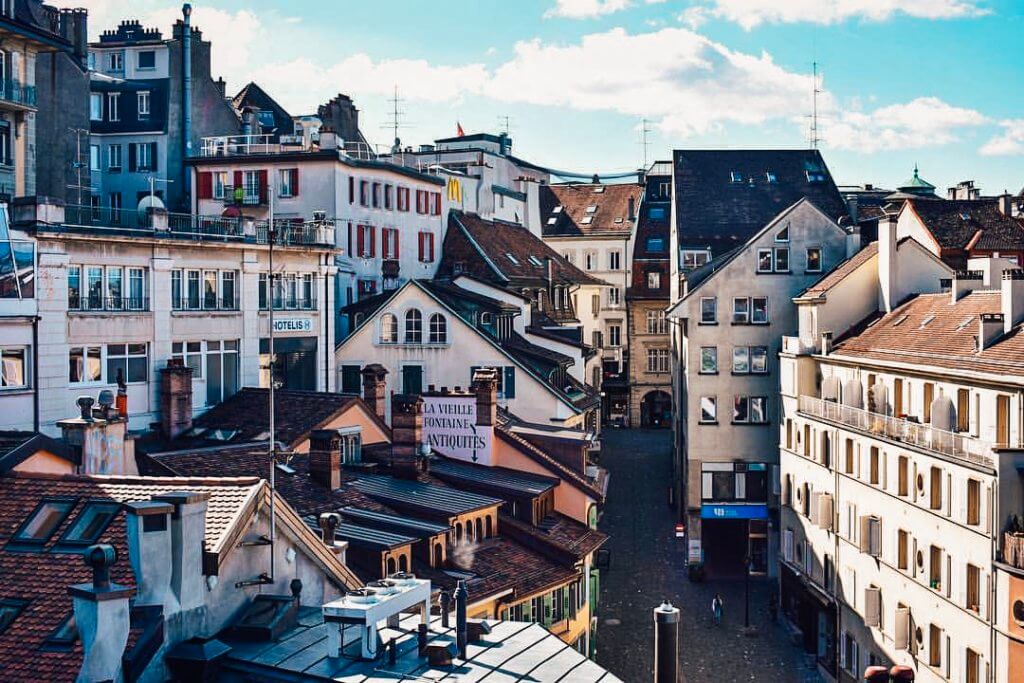
Day 9: Lausanne
Where to stay: Discovery Hotel
If you continue your trip in Geneva , don’t forget to add Lausanne to your road trip.
The fourth-largest city in the country, Lausanne was built on three hills. Here you can get a good exercise by climbing to the historic old town where you can find the ornate Lausanne cathedral and marvel at Lake Geneva surrounded by the French Alps.
Lausanne has a relaxed pace, which makes it a perfect place to chill and take a boat ride along Lake Geneva if you want to visit Vevey, Montreux and Nyon.
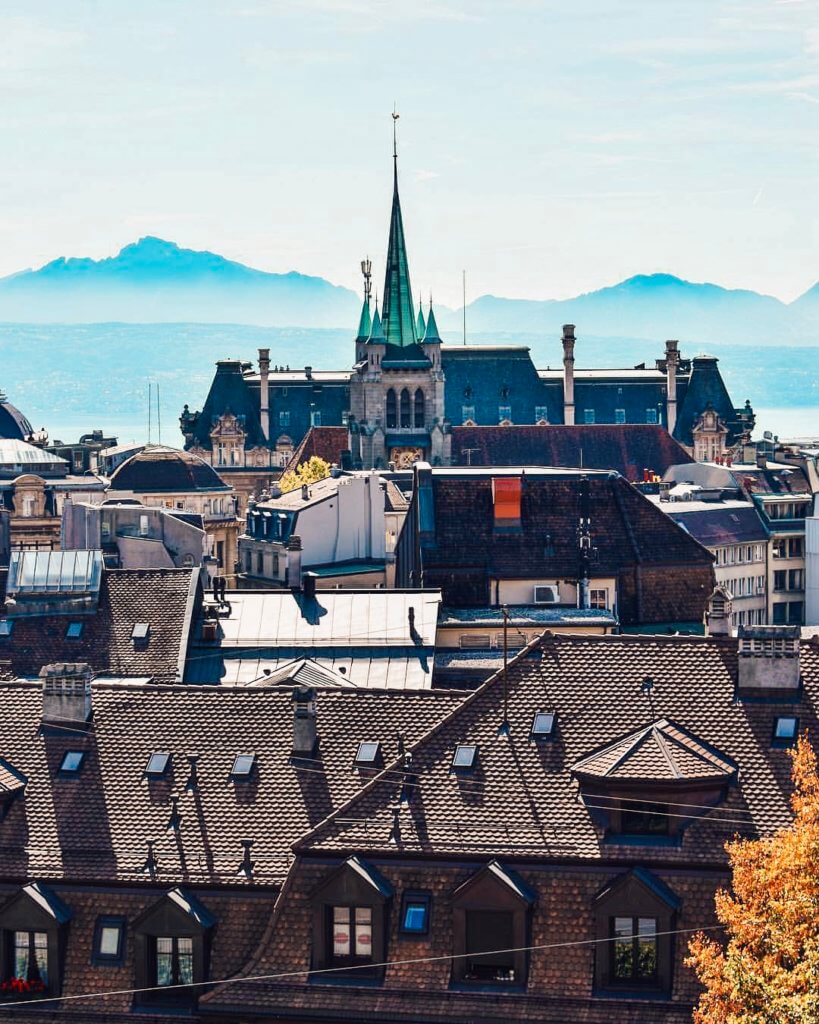
Lausanne is also a home of the International Olympic Committee. The city is located in the wine-making region, and so this is your perfect chance to try some quality Swiss wine and treat yourself to some delicious sweet treats.
Best day trips from Lausanne
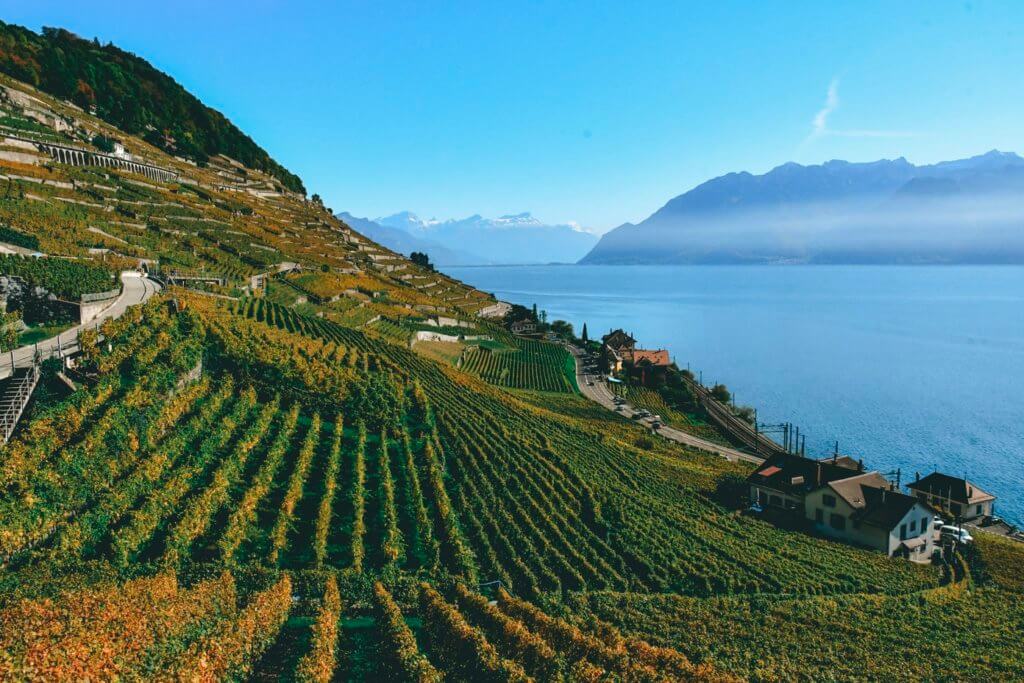
Day 10: Lavaux
Lavaux is a hidden gem, and you should include it on your itinerary before it becomes too popular!
A UNESCO heritage site, Lavaux, is a district comprised of terraced vineyards stretching about 19 miles along the shores of Lake Geneva.
These wine terraces are ultimately one of the most beautiful places to visit in Switzerland thanks to the cute villages on the slopes and stunning landscapes. Wander through Lavaux vineyards and sip some locally produced wine when you come here.
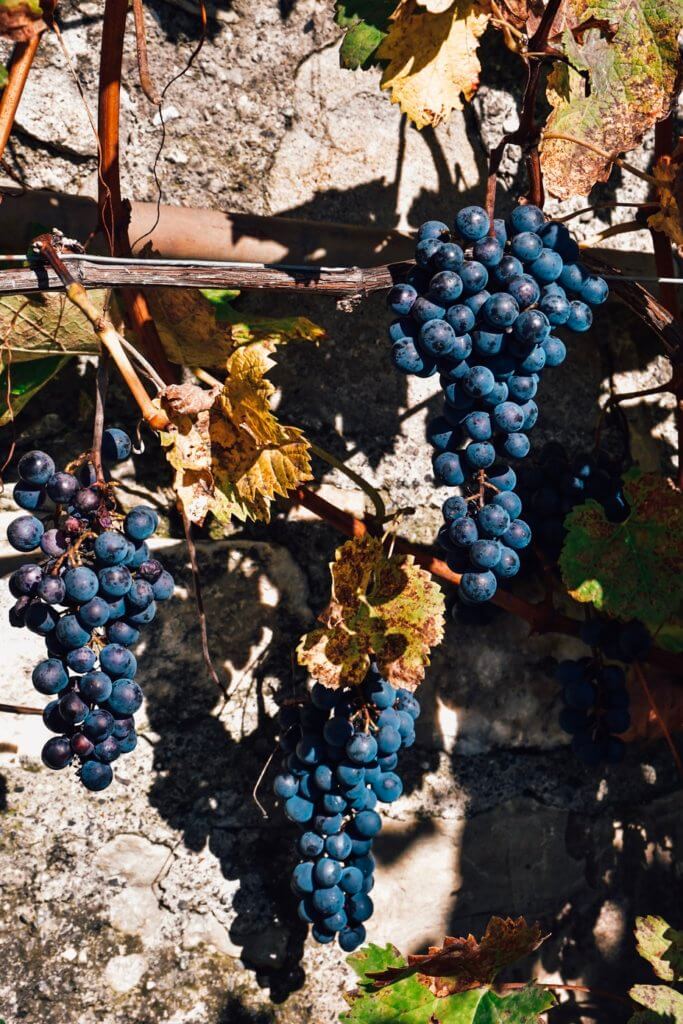
Lavaux is just east of Lausanne and can be accessed via a combination of boat or train and a boat from the city. It’s a perfect place to put on your itinerary if you want to take a break from the crowded spots, and a boat ride along Lake Geneva that will bring you here from Lausanne is an absolute must!
Castle de Chillon
Chillon Castle (or Chateau De Chillon) is a fairytale-like castle located along Lake Geneva near Montreux. One of the most beautiful castles in Switzerland, this medieval fortress is a great day trip from Geneva, Lausanne and other towns in the region of Lake Geneva, so if you have a few spare days, stop by.
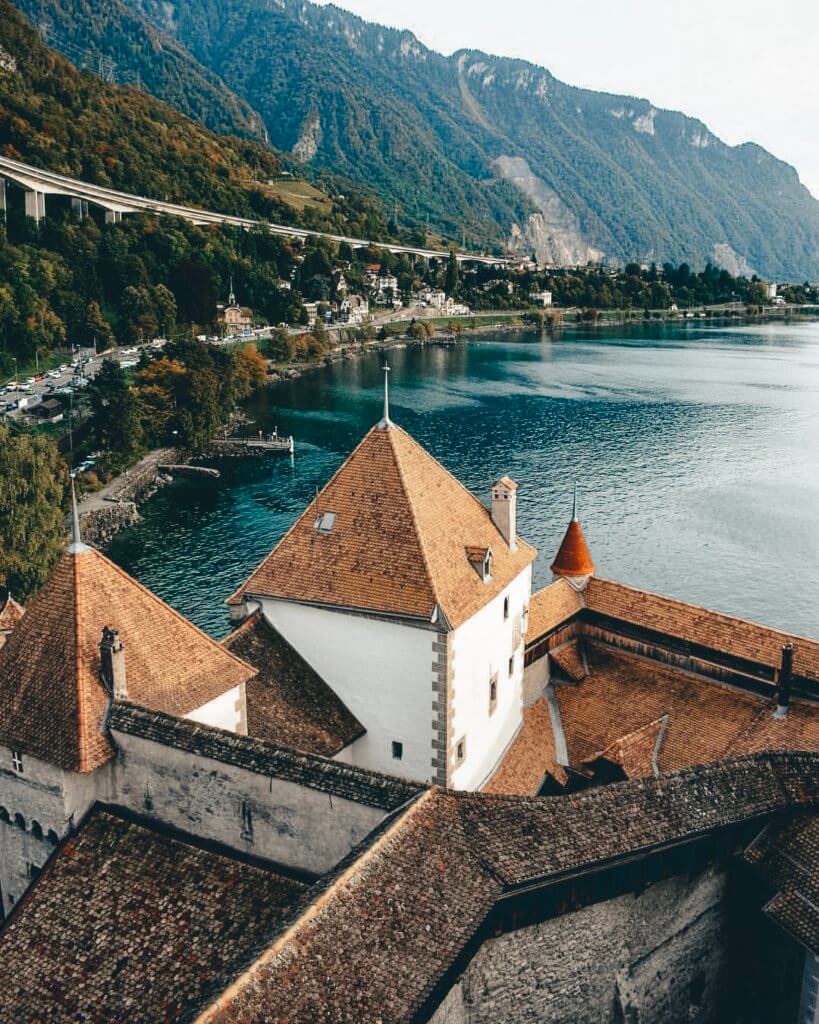
How much time do you need for Switzerland?
While a classic Switzerland itinerary is about 7 days, I recommend at least 10 days in Switzerland for your trip which will allow you to see the country without rushing through. This country has too much scenic beauty and in my opinion, it’s one of those places where choosing a path less travelled and taking time to enjoy it really pays off.
Spending extra time in places like Bernese Oberland and Ticino will help you see places beyond the tourist playbook and create memories for lifetime. I suggest 14 days in Switzerland for the best experience.
Popular scenic routes by train in Switzerland
- Bernina Express Switzerland – Nicknamed “from glaciers to palms,” Bernina Express will take you from Chur through the high Alps to the palm-fringed promenades of Ticino. Taking this scenic route is one of the most popular things to do, so get your tickets ahead of time!
- The Glacier Express – This scenic ride will take you from Zermatt to St. Moritz. It’s a great option if you want to visit the famous ski resorts.
- The Golden Pass – This train route is from Luzern to Montreux and is a perfect option if you are looking for an easy option that can be done in a short time during your itinerary.
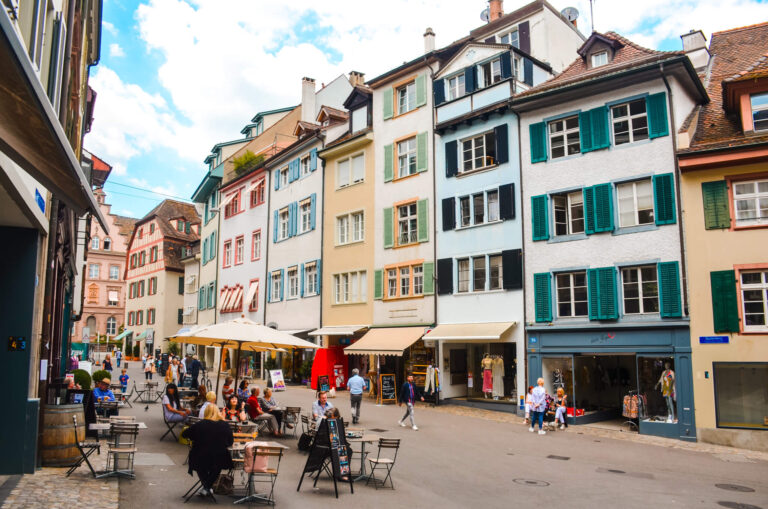
Bonus: Other places to add to your trip
If you have extra time, consider adding several other destinations to your itinerary.
- Basel – Switzerland’s third most populous city, Basel sits on the Rhine River near France and Germany. It has the most museums in Switzerland and also offers rich architecture and history.
- Iseltwald – A gorgeous village along the shores of Lake Brienz, Iseltwald is one of the best places to visit in Switzerland thanks to its fairytale-lake architecture, and opportunities for hiking, kayaking and paddle boarding on the gorgeous lake.
- Ticino – Exploring Ticino takes time. Here you will find beautiful mountain villages, green valleys and tons of scenic hikes. I suggest 5-7 days in Ticino, so adding an additional time to your Swiss trip will help you see more of this stunning place.
- Bernese Oberland – This is the part of Switzerland where you should add the most time. Bernese Oberland boasts gorgeous scenery and has many hikes and scenic overlooks.
- Kleine Scheidegg – A mountain pass with gorgeous view of the surrounding Alps, Kleine Scheidegg Sita at an elevation of 2,061 m (6,762 ft) between the peaks of Eiger and Lauberhorn in Bernese Oberland. It’s a popular starting point for hikes in the area and a perfect sunset watching spot.
- St. Moritz – Located in Eastern Switzerland, St. Moritz is a popular ski resort in winter and scenic holiday destination in summer that can be accessed via Bernina Express.
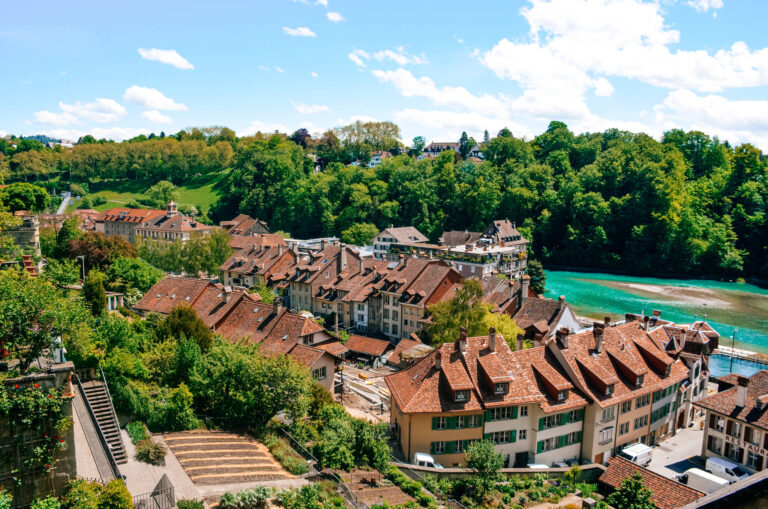
3 Days in Switzerland itinerary
Three days in Switzerland is a really short time.
If you decide to visit a few destinations in 3 days, you will be able to see only the most basic highlights. But if you stick to one city or area such as Zurich or the Bern region, you will be able to get a better feel of the area.
- Zurich – Arrive to Zurich and spend a day exploring the city.
- Bern – Spend a day in Bern before catching a train to Interlaken in the evening.
- Interlaken – Catch a 50-minute train to Interlaken, gateway to Bernese Oberland before leaving back to Zurich.
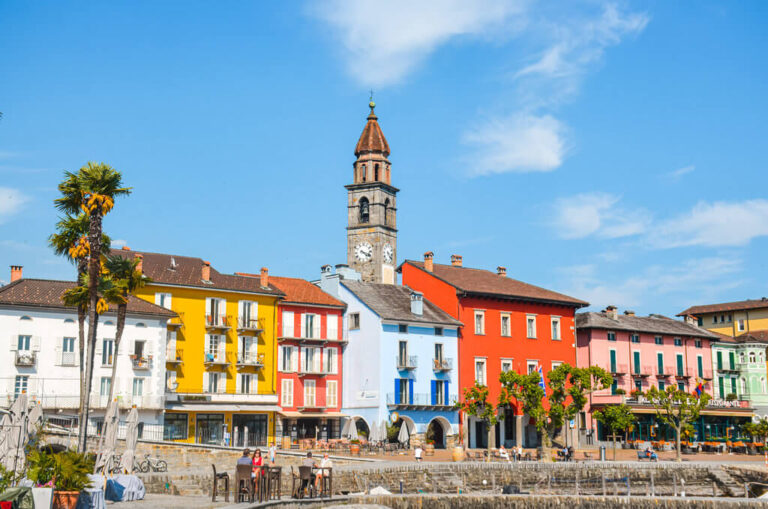
10 Days in Switzerland itinerary
10 days in Switzerland is enough for a classic itinerary around the country, as it allows you to visit more places. If you are visiting the country for the first time, 10 days in Switzerland is enough to get a taste of the country and decide what places you want to visit next time.
- Zurich – Arrive to Zurich and after taking some rest explore the city.
- Luzern – Take a trip to Luzern from Zurich in the morning. Spend a day in Luzern. Finish your day by taking a cable car ride from the valley station in Kriens near Lucerne to Mount Pilatus.
- Bern – Catch a train to Bern from Luzern and spend a day in the Swiss Capital. Get on a train to Interlaken in the evening from where you can get to the Jungfrau region.
- Lauterbrunnen – Spend a day exploring Lauterbrunnen and take a cable car to Murren and Schilthorn. Explore mountain villages Grindelwald and Wengen. Do some hiking.
- Zermatt – Take a day trip to Zermatt via train from Interlaken. Spend a day hiking around Zermatt and take a cable car to Glacier Paradise to enjoy the views of Matterhorn.
- Geneva via Lausanne – Finish your trip in Geneva via a stop in Lausanne.
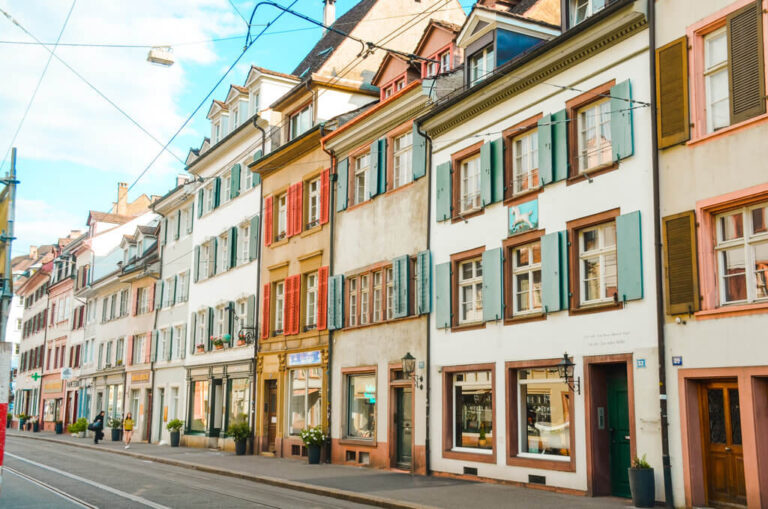
14 Days in Switzerland itinerary
2 weeks in Switzerland is a good amount of time that will allow you to visit the most popular destinations and hit a couple of less touristy spots. If you can spend 14 days in Switzerland, you can take your time and enjoy some of the most popular landmarks like Zermatt and Interlaken without rushing.
I recommend spending a bit more time in a specific region during 2 weeks in Switzerland, like Bernese Oberland, Ticino or Zermatt.
- Lugano – arrive to Lugano from Milan via a train ride or by car. Spend 3 days in the Canton of Ticino. Besides, Lugano some of the places to Ticino are Ascona, Bellinzona, Valley Verzasca and Locarno.
- Zermatt – Take a train from Lugano to Zermatt. Spend 2-3 days in the area.
- Interlaken – Continue from Zermatt to Interlaken. Spend 4 days exploring Bernese Oberland.
- Bern/Basel – After spending 4 days in the mountains, head to Bern or Basel for 1 day.
- Geneva – Catch a train to Geneva via a stop in Lausanne. Spend 2 days exploring the Lake Geneva region where you can visit Lavaux, Chillon Castle and Vevey.
- Luzern – From Geneva, head to Luzern for a day.
- Zurich – Finish your itinerary with a day trip to Zurich before leaving the country.
How to get around Switzerland?
The best way to travel Switzerland is by train.
Getting around Switzerland by train is quick and sometimes less expensive than renting a car. The Swiss cities are walkable and have good public transportation, so you don’t always need to rent a car , especially if your itinerary is mostly based around visiting cities. Get your Swiss Rail Pass ahead of the trip.
Renting a car in Switzeland
Renting a car in Switzerland can be pricey. In addition to your rental vehicle, you have to cover gas and parking fees which add up as you spend more days on the road. Also, Switzerland has many speed radars that will give you a steep fine when you drive too fast.
Following the rules really pays off here!
On the other side, renting a car allows you to take a ride along many mountain passes and not worry about having to catch your next train. I suggest DiscoverCars , a great car rental company that offers cars at competitive rates in many popular destinations in Switzerland.
Traveling Switzerland by train
If you plan on traveling in Switzerland by train and bus consider buying the Swiss Rail Pass. It allows you to get on a train, bus and tour boats. It also provides free admission into many museums in Switzerland and discounts on many cable cars and funiculars.
PRO TIP: Download the SBB app on your phone to check train schedules, platforms, and connections. You can even book your train tickets on the app ahead of your trip.
What to take on your trip
To plan your trip, you need to get a few things that will help you make your trip easier. I’m going to give you a quick run down to prepare for your adventure.
- Universal adapter – Electronics from mainland Europe, North America or Asia will not charge in Switzerland without a proper adaptor. That’s probably one of the most important things you should get for your trip if you don’t want to overpay for it while on the road.
- Insurance – You shouldn’t go on a multi-week international trip without proper insurance whether you plan to spend your time in Switzerland or continue to other countries.
- Good hiking shoes – A pair of good hiking shoes and proper gear are musts if you include hiking in the mountains on your itinerary.
- Sunscreen – The sun can be brutal at high altitudes. When you go high in the mountains, don’t forget to apply sunscreen to avoid sunburn.
Frequently asked questions about Switzerland
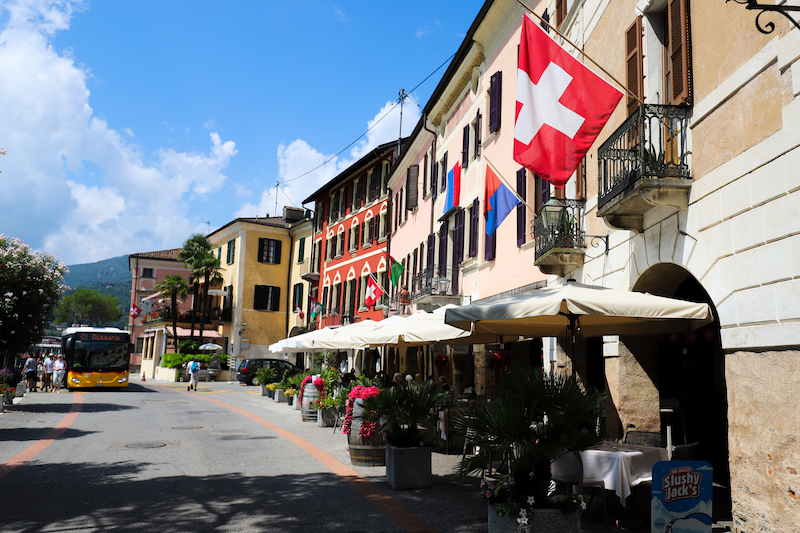
What’s the currency in Switzerland?
The official currency of Switzerland is Swiss Frank. You can pay with credit cards almost anywhere within Switzerland, however, you should still carry some cash with you while you travel.
What language is spoken in Switzerland?
Switzerland has four official languages: German, French, Italian and Romansch. English is widely spoken and understood in most parts of the country.
Do I need a visa for Switzerland?
Whether you need a visa for Switzerland or not depends on what country you are from and what’s going to be the purpose of your visit. There are two types of visas for Switzerland:
Schengen Visa, type C which allows you to enter the country and stay for up to 90 days within 180 days.
National Visa which allows for a stay in Switzerland longer than 90 days.
How much time do you need for Switzerland itinerary?
Plan no less than a week for your trip if you want to see the highlights of the country. Switzerland is a small but an incredibly scenic country, and you can spend months discovering its fairytale-like cities, small mountain villages and hiking in the Alps. If you can afford to spend 14 days in Switzerland, you will be able to enjoy some of the most amazing landmarks in the country without rushing.
How to plan your Switzerland trip?
While Switzerland is known as one of the most scenic destinations in the world, it’s also very expensive. That’s why you should create a budget and carefully plan your expenses ahead of your trip. Staying in budget hotels, cooking your food and skipping overpriced tourist attractions and using the Swiss Travel Pass can save you a good chunk of change.
After all, visiting one of the most expensive countries in Europe doesn’t have to break your bank.
Best travel resources for planning your trip
Whether you need to book a car, organize a tour or book a flight, consider using some of my suggested services.
Agoda.com – a great website for budget accommodations. Since hotels in Switzerland can be expensive, this platform comes in very handy for planning your trip to Switzerland.
WorldNomads – Great service for insurance coverage that will keep you safe on the road while traveling Switzerland.
Safety Wing – Excellent insurance plan for long-term travelers that offers competitive rates is you are planning to stay on the road several weeks in a row.
GetYourGuide – Thinking about booking a tour? Get Your Guide is my favorite platform that offers great deals and top-notch guides in some of the most popular places.
DiscoverCars – There’s nothing like exploring the Swiss Mountains at your own pace. Consider renting a car at Discover Cars if you want more freedom while traveling.
CheapoAir.com – One of the best platforms for saving money on flights.
Booking.com – a popular website with tons and tons of options for accommodations of all sorts.
Places to Visit in Switzerland
Top Things to Do in Switzerland
Top Things to Do in Geneva
One Week Itinerary
Most Scenic Train Routes
Switzerland's Nature Parks
How to Go Skiing
The Top Hikes
Matterhorn Complete Guide
The Most Beautiful Lakes
Foods to Try
Best Restaurants
Best Time to Visit
Weather & Climate
Switzerland Airports
Getting Around
Getting Around Switzerland: Guide to Public Transportation
:max_bytes(150000):strip_icc():format(webp)/ElizabethHeath-Headshot-horiz-e7525e97616245958bf3d94e8db7f119.png)
- How to Ride the Train
- Trams and Buses
Free Travel Passes and Paid Options
Mountain and lake transportation.
- Car Rentals
- Bikes and Scooters
The central European country of Switzerland is connected by an extensive system of trains, trams, buses, cablecars, and ferries, which transport residents and visitors to most corners of the nation and onward to other destinations in Europe. The Swiss train system is legendary for its cleanliness, efficiency, and ease of use and is an excellent way to tour the country. Bright yellow PostBus buses connect to smaller towns and more remote areas, while trams rumble through most larger Swiss cities. Mountain destinations are reachable via a vast system of cablecars and funicular railways, while Switzerland's famous lakes are served by frequent lake ferries. Scenic trains and lake steamers round out Switzerland's comprehensive public transportation system.
How to Ride the Train in Switzerland
If you're taking the train in Switzerland, your first stop should be the Swiss Federal Railways (SBB) website. Except for a few scenic routes, SBB runs all the regional, commuter trains, and high-speed trains in the country. You can tell the difference between these based on letters used in the route number.
- R, RE, and IR are regional trains that are slower, cheaper, and stop at all or most stations between two major hubs.
- IC or ICN (the N is for "night") are fast trains that connect major cities but do not stop at smaller towns along the way.
- S or S-Bahn trains are frequent commuter trains that connect cities and suburbs. If you miss an S train, there's usually another one coming soon after.
- Cities not served by train are served by bright yellow PostBus buses. These tickets can be purchased through the SBB site, which will automatically suggest bus travel when train travel is not available.
The SBB website sells one-way or round-trip tickets between Swiss cities and other cities in Europe . They also sell City Tickets, including the train to that city, public transportation in the town, and a travel pass that typically allows access to several touristic sites.
- To purchase a ticket or research schedule options, insert your point-to-point destinations, date, and preferred travel time. You'll be presented with a list of options and can select the train or trains that work best for you.
- Once you've selected your route, enter your passenger information. You'll have the option to purchase a City Ticket or upgrade to First Class. While First Class coaches are usually less crowded and more spacious, Second Class coaches are clean and comfortable.
- Here's an important detail: When SBB shows a fare, the "half-fare Travelcard" discount is applied. This is a card you must purchase. Since you probably won't be traveling with this card (see more below), you must select "No discount" in the discount cards field. Your ticket price will double as a result.
- Complete your purchase with a credit card. You will be issued a voucher, which you can either print out or keep on your handheld device.
- Your ticket will not show a seat reservation, as these are usually not required on domestic Swiss trains. Board a first- or second-class carriage, depending on your ticket class, and find a seat. A conductor will pass by and scan your ticket. A sign in each coach displays the next station, so you'll have plenty of time to gather luggage and exit the train when it stops.
- Children up to 16 years of age travel free with a parent, so long as that parent has a valid ticket. But you must pick up a Swiss Family Card before traveling—it's available at every station or point of sale.
- For travelers with disabilities, select "Barrier-free travel" from the pull-down menu labeled "Standard view" to see only trains that have wheelchair-accessible carriages.
If you buy tickets at the SBB counter or office in the train station, you'll have the option of reserving a seat in advance. Ticket agents all speak English, so if the online system is daunting, you can get all the help you need in person. There are also ticket machines in all stations.
For information about the Swiss Travel Pass and whether it's a smart option for your trip to Switzerland, read this more detailed article about train travel in Switzerland .
Getting Around Cities on Trams and Buses
For travel within Swiss cities, trams and buses are often the answer when the distances are not walkable. Basel, Bern, Bex, Geneva, Lausanne, Neuchâtel, and Zurich all have extensive electric tram systems that take commuters and visitors to most corners of the city and out into the suburbs. Some historic trams are still in operation, and these are always fun to climb aboard.
The city tram networks are complemented by a system of buses, most of them electric "trolleybuses," that serve areas where the trams don't go. Your tram or bus ticket usually works for both methods of transportation, as long as you stay within the time limit on your ticket.
Depending on the city, tram/bus tickets are sold based on a relatively complex system of zones, calculated by distance from the city center. As a tourist, most of your travel is likely to be within one or two of the most central zones. The good news is that most primary and secondary Swiss cities provide free city passes to all hotel guests, which allow for unlimited use of local public transportation and free or discounted admission to area attractions and experiences. In mountain areas, the pass often includes free ski lift and cablecar access, and in Switzerland's lakefront cities, the pass usually includes free or discounted boat transport. The pass will be given to you when you check into your accommodation and is offered in the following locations:
- Appenzeller
- Montreux Riviera
- St. Moritz and Pontresina (summer only)
Other cities and regions sell travel cards, including local transportation, ski gondolas and mountain railway, passage on lakes and riverboats, and free or reduced admission to dozens of museums and attractions. These include:
- Bernese Oberland
- Lake Geneva
- Tell Pass (Lake Lucerne)
Note that you're not obligated to purchase one of these cards, We recommend them for their ease of use, but you can also opt to buy single transport tickets and pay-as-you-go at museums.
There are more than 10,000 named mountains in Switzerland, and hundreds of them are reached by a spiderweb-like system of cable cars, ski gondolas, funiculars, and cogwheel trains. Some transport riders up to ski slopes or viewing platforms, while others are the sole method of reaching towns like Zermatt, Rigi, and Mürren. These systems are run by local or regional authorities or are privately owned and managed. Lower departure points are often within walking distance of the nearest train station.
Among Switzerland's thousands of lakes, Geneva, Lucerne, Zurich, Lugano, and Constance (Bodensee) are among the largest. These lakes and others are served by seasonal and year-round ferries and tour boats. Some boats, like select routes in Zurich, are part of the public transportation system and are included in local travel passes. Others are run by regional or private entities and can be used either as a way of getting from one lakefront city or town to another or simply enjoyed as a scenic boat ride.
Car Rentals in Switzerland
We strongly recommend sticking with public transportation when visiting Switzerland. And the country's new "Swisstainable" initiative encourages visitors to keep their travels as green as possible. However, if you wish to hire a rental car, you'll find Swiss roads are well-maintained, clearly marked, and, except for some nerve-jangling mountain passes, easy to drive. All major rental car companies have desks in major Swiss airports and cities.
If you rent a car in Switzerland, it will have a toll sticker, called the motorway vignette, which grants access to the Swiss national road network. You cannot legally drive a car in Switzerland unless it has this vignette affixed; if you rent a car outside of Switzerland and plan to cross the border into the country, check the following with your rental agency first:
- Notify them that you will be driving into Switzerland. Some companies don't allow certain makes and models of cars to cross European borders, and a few don't permit any of their vehicles to enter Switzerland.
- Ask if they can sell you a Swiss motorway vignette. If they can't, you can buy one at a gas station near the Swiss border in Austria, France, Germany, or Italy, or you can buy one at the border crossing—choose the tollbooth lane for cars with no vignette.
Bikes and Scooters in Switzerland
Switzerland is one of the best-suited countries in the world for exploring by bike or e-bike. A nationwide system of bike paths, the majority of them paved, make it possible to travel by bike across all or part of the country—you'll seldom have to share the road with vehicular traffic. SwitzerlandMobility has a complete guide to bike trails in Switzerland, including information about where to rent bikes and e-bikes.
In Basel, St. Gallen, Winterthur, and Zurich, e-scooter share programs, similar to bike share programs in other cities, allow you to download an app, add your credit card information, and then scan a QR code to hop on an available electric scooter and go. The apps will tell you the location of the nearest available scooters, which you just leave parked on the sidewalk when you're done with them.
How to Use Swiss Trains and the Swiss Travel Pass
Getting Around Zürich: Guide to Public Transportation
Switzerland Travel Guide
How to Travel Between Italy and Switzerland by Train
Your Trip to Switzerland: The Complete Guide
How to Travel From Florence to Paris by Train, Bus, Plane, and Car
Getting Around Frankfurt: Guide to Public Transportation
Getting Around Paris: Guide to Public Transportation
Getting Around Mexico City: Guide to Public Transportation
Getting Around Seattle: Guide to Public Transportation
How to Travel Around Paris Like a Local
One Week in Switzerland: The Ultimate Itinerary
How to Travel From Zurich to Paris by Train, Bus, Car, and Plane
Getting Around Beijing: Guide to Public Transportation
Getting Around Salt Lake City: Guide to Public Transportation
Your Trip to Rome: The Complete Guide
Get Daily Travel Tips & Deals!
By proceeding, you agree to our Privacy Policy and Terms of Use .
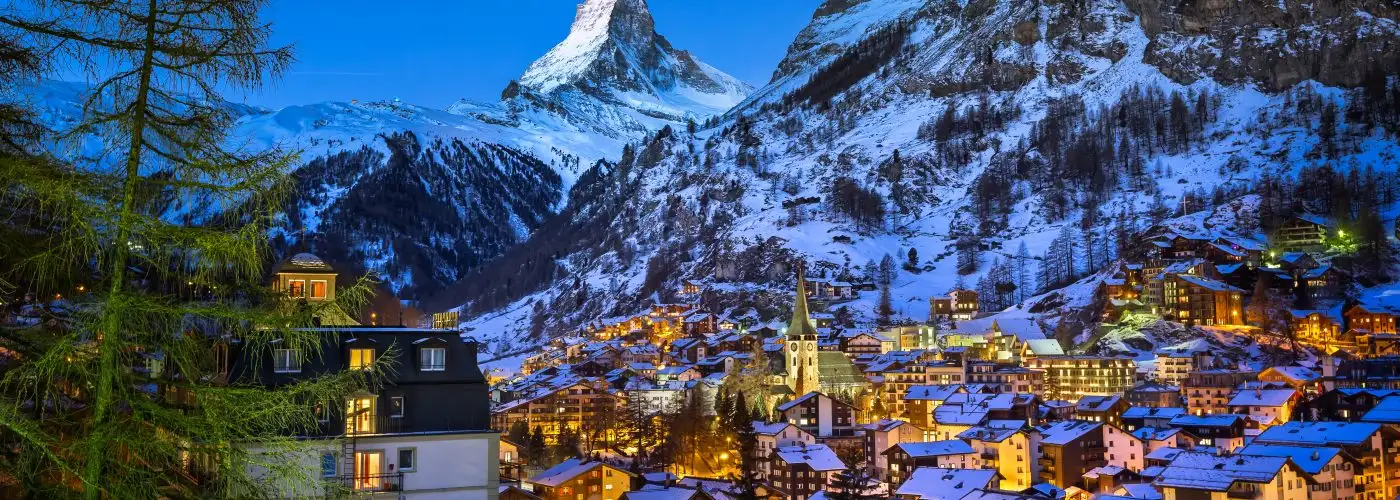
9 Switzerland Travel Tips
Caroline Morse Teel
Caroline Morse Teel is the Managing Editor for SmarterTravel Media. Follow her on Instagram @TravelWithCaroline .
Caroline joined Boston-based SmarterTravel in 2011 after living in Ireland, London, and Manhattan. She's traveled to all seven continents, jumped out of planes, and bungeed off bridges in the pursuit of a good story. She loves exploring off-the-beaten path destinations, anything outdoorsy, and all things adventure.
Her stories have also appeared online at USA Today, Business Insider, Huffington Post, Yahoo, Boston.com, TripAdvisor, Buzzfeed, Jetsetter, Oyster, Airfarewatchdog, and others.
The Handy Item I Always Pack : "Earplugs. A good pair has saved my sleep and sanity many times!"
Ultimate Bucket List Experience : Hiking Mount Kilimanjaro.
Travel Motto : "Don't be boring."
Aisle, Window, or Middle Seat : "Aisle (when the first class private suite isn't available)."
E-mail her at [email protected] .
Travel Smarter! Sign up for our free newsletter.
Don’t plan a trip to Switzerland without reading these Switzerland travel tips first. You’ll save money and have a better time!
Invest in a Swiss Travel Pass
Switzerland is easy to get around, thanks to an impeccably run transit system that includes everything from boats to trains and cable cars. If you plan on traveling between cities, as well as utilizing intra-city transportation (like city buses), get a Swiss Travel Pass that covers unlimited travel “throughout the rail, bus and boat Swiss Travel System network.” It also offers 50 percent off most mountain railways and cable cars.
Not only will you save money on travel, but the Swiss Travel Pass also gets you free entrance to 500 museums and exhibitions.
Don’t Take Taxis
Swiss public transportation is easy to navigate, with well-marked signage for routes and countdown clocks that let you know when your bus will arrive. Most cities and towns in Switzerland are walkable as well. If you want to save money, avoid taxis, though, as you may be shocked—even for a short ride—at the exorbitant cost. In fact, a recent survey by Carspring found that the taxis in Zurich are the most expensive in the world, at an average of $5.19 per kilometer. So, not taking a taxi is one of the best money saving Switzerland travel tips.
Mind the Altitude
Headed to the Swiss Alps? Thanks to the great network of cable cars, trains, and gondolas, it’s easy to get up to high altitudes quickly. Make sure you bring sunscreen with you, as you’ll get a sunburn faster at higher altitudes. Don’t push yourself too hard if you’re hiking, and take breaks if you feel lightheaded or dizzy—even if you’re just walking around a viewing platform. Be sure to drink lots of water, as that can help with some of the effects. Learn more about altitude sickness .
Don’t Buy Water
Purchasing bottled water from the supermarket in Switzerland is a total waste of your money, as the country is home to some of the world’s cleanest and best-tasting tap water. (In fact, in some places, you can even drink straight from a lake with no ill effects , but I don’t advise testing that on your trip if you’re not familiar with the area.) You can drink from any tap or one of the numerous free-flowing fountains you’ll find in every town, city, and sometimes even along mountain trails. Unless there’s a sign advising that the water is not potable (like you’ll see in train bathrooms), feel safe to drink for free and skip the bottled water.
Don’t Buy Tourist Chocolate
Souvenir shops and airport kiosks display mouth-watering assortments of Swiss-branded chocolates. Use your willpower to walk straight past those and into the nearest supermarket, where you’ll find entire aisles of equally great (or better) quality chocolate that the locals eat—at less than half the price.
Check Out Less Touristic Spots
Famous spots like Lausanne and Zurich get packed with tourists in the peak season, so if you’re adventurous and don’t mind getting off the beaten path, you’ll be rewarded with a cheaper and less crowded vacation experience. Try lesser-known towns of Biel, Solothurn, and Thun in the summer—you’ll likely never have to deal with crowds or lines.
Take Out Minimal Cash
Although it’s surrounded by EU countries, Switzerland is not part of the European Union. Since the country has its own currency, the Swiss Franc (CHF), it’s a good idea to take out out a small amount of cash when you arrive to use for emergencies (like when you want to buy ice-cream from a cash-only street vendor) and use your credit card (assuming it doesn’t charge a foreign exchange fee) everywhere else. This way, you won’t get stuck with a bunch of leftover CHF at the end of your trip.
Also note, that some places in Switzerland (but not all) will accept Euros, but they will likely give you your change in CHF.
Learn Which Language is Spoken
Normally, it’s pretty clear ahead of time what language is spoken in a country. Not so much in Switzerland, which has four official languages—German, French, Italian and Romansh. This can make it pretty confusing when deciding how to greet a local. As a general rule, Swiss-German is a safe bet, as it’s the most popular language in Switzerland, with 19 of the country’s cantons, or districts, being Swiss-German speaking. And many people speak English, so you shouldn’t have much trouble communicating.
Watch Out for Closing Times
Hoping to do some souvenir shopping or pick up groceries for a picnic dinner? Keep an eye on closing times. Particularly in the smaller towns, many shops close for lunch from noon until 2 pm, and then close fairly early, at around 5 pm. On Sundays and Mondays, many shops are closed all day.
More from SmarterTravel:
- Tipping in Switzerland: The Switzerland Tipping Guide
- Switzerland Travel Guide: What to Do in Switzerland
- 10 Ways to See Switzerland Like a Prince or a Pauper
[viator_tour destination=”69″]
Caroline Morse was hosted by Switzerland Tourism . Check out their website for lots of great Switzerland travel tips, and be sure to follow Caroline on Instagram @TravelWithCaroline for more photos or to share your Switzerland travel tips!
We hand-pick everything we recommend and select items through testing and reviews. Some products are sent to us free of charge with no incentive to offer a favorable review. We offer our unbiased opinions and do not accept compensation to review products. All items are in stock and prices are accurate at the time of publication. If you buy something through our links, we may earn a commission.
Top Fares From

Don't see a fare you like? View all flight deals from your city.
Today's top travel deals.
Brought to you by ShermansTravel
Greece: 6-Night Athens, Nauplia, Olympia &...

Luxe, 7-Night Caribbean & Mexico Cruise...
Regent Seven Seas Cruises

Ohio: Daily Car Rentals from Cincinnati

Trending on SmarterTravel
- Getting around Switzerland
Book your individual trip , stress-free with local travel experts
Select Month
- roughguides.com
- Switzerland
- getting-around
- Travel guide
- Itineraries
- Local Experts
- Travel Advice
- Accommodation
Plan your tailor-made trip with a local expert
Book securely with money-back guarantee
Travel stress-free with local assistance and 24/7 support
What’s the best way to get around Switzerland ? If that’s the question on your mind, the answer's sure to make you smile. The Swiss public transport system remains one of the wonders of the modern world. It really is hard to overstate how good it is — you can get anywhere you want quickly, easily and relatively cheaply.
Is it easy to get around Switzerland? Can you get around Switzerland without a car?
How do swiss people get around, travel passes in switzerland, timetables and travel information in switzerland, best scenic routes in switzerland, getting around switzerland by train, getting around switzerland by bus, getting around switzerland by car, best scenic drives in switzerland, getting around switzerland by boat, getting around switzerland by plane, travel ideas for switzerland, created by local experts.

8 days / from 2725 USD
Special Golden Round Trip to Switzerland (small group or private)
Stay active on Switzerland's mountains with hikes and cable cars before indulging in delicious Swiss cheese and wines around Lausanne and Geneva. Is there a better way to get a taste of Switzerland than to actually taste it? Pricing is based on a small group tour, enquire for a private tour!
_listing_1640555873127.jpeg)
11 days / from 3597 USD
Unforgettable Switzerland
Discover Switzerland's real natural paradise. Enjoy 11 relaxed days of picturesque scenery, breathtaking views, romantic towns, eternal ice and snow, rural villages and historic buildings. Visit Zurich, Lucerne, Interlaken, Geneva and many other highlights.

7 days / from 2725 USD
Lakes and mountains for the whole family in Italy & Switzerland
Spend your first 3 nights at Lake Como in Italy, discovering the area by boat or foot, before heading to Zermatt in Switzerland. Zermatt with its peaceful nature is the ideal backdrop for strolls, hikes and other activities with the whole family.
In a word, yes. Services almost always depart on the dot, and train timetables are well integrated with postbus schedules.
Postbuses operate on routes not covered by rail, including remote valleys — good news if you're planning to get off the beaten track to enjoy the best outdoor experiences in Switzerland .
Extensive ferry services run on Switzerland’s many lakes, and cyclists are well served by the Swiss instinct for green thinking.
If you're into cycling and keen to travel more sustainably in Switzerland, you might want to find out why Lake Lucerne is the ultimate slow travel destination .
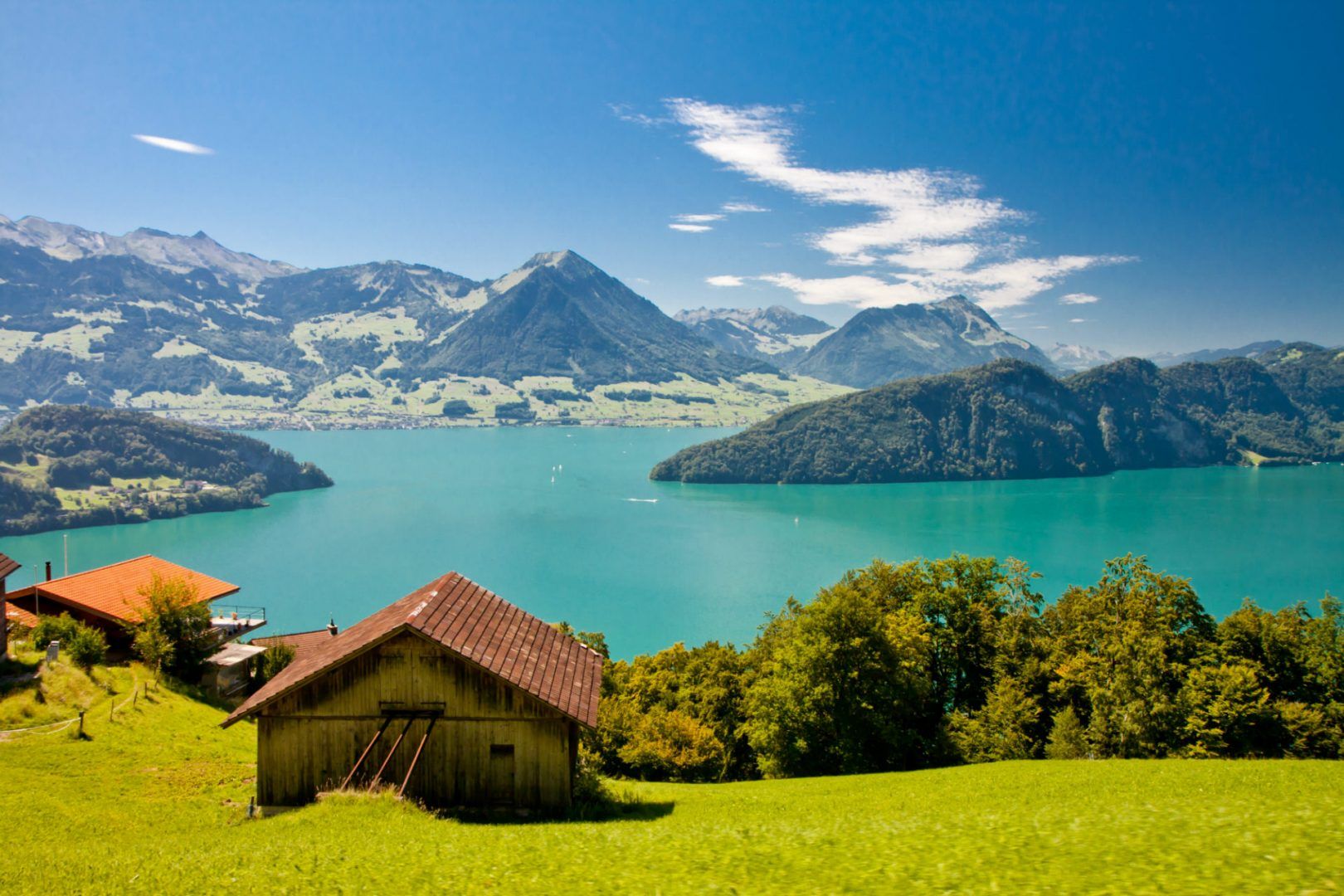
Lake Lucerne is a breeze to visit, thanks to getting around Switzerland being so easy © Andy Faessler/Shutterstock
Everyone relies on the Swiss public transportation system as a matter of course. It’s clean, safe, pleasant and punctual.
One point can’t be stressed enough, though — Swiss people virtually never pay full fare for public transport. Follow suit by investigating Swiss travel passes to make getting around Switzerland a whole lot cheaper.
There are several different Swiss travel passes. While they're all good value, it takes some untangling to decide which option best suits your trip — see My Switzerland for full details.
- Swiss Travel Pass : this gives free unlimited travel on three, four, six, eight or fifteen consecutive days on just about every train in the country, as well as on all boats and postbuses, and most city tram-and-bus networks. It also allows free entry to over 500 museums .
- Swiss Half Fare Card : this gives half price on public transport within major cities as well as on trains, buses and boats.
- Swiss Family Card : allows children under the age of 16 to travel free of charge when accompanied by at least one fare-paying parent.
- Regional passes: available for the Bernese Oberland , Central Switzerland and the Lake Geneva-Alps region.
- Saver Day Pass : this gives unlimited travel on the Swiss public transport system for one day.
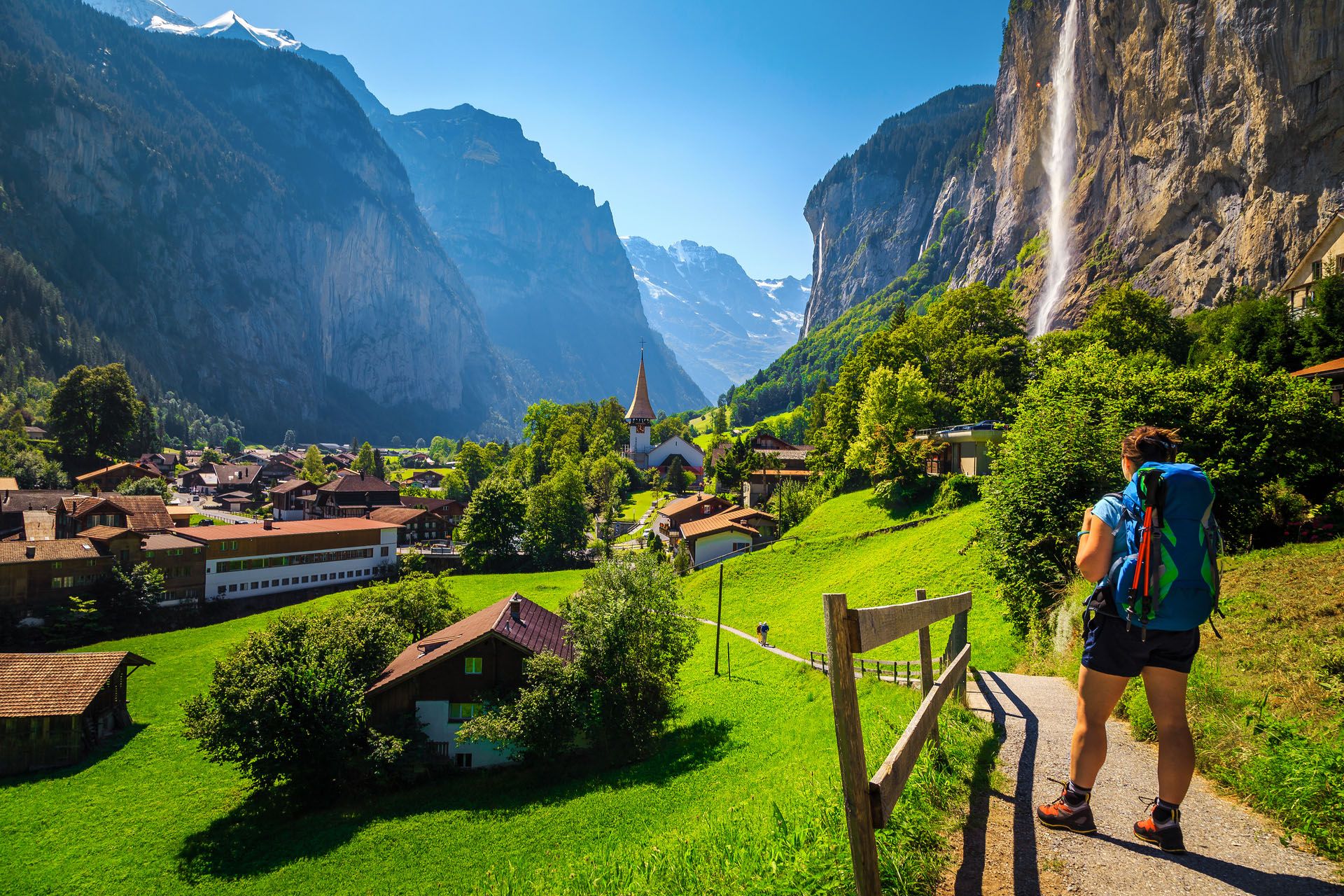
Get your hands on a regional travel pass to make getting around Switzerland easy. Lauterbrunnen, Bernese Oberland © Gaspar Janos/Shutterstock
The convenience and universal validity of these passes are alluring, but it pays to do some sums before you splash out.
Depending on the kind of journeys you’re liable to take, you may find you’d be better off getting a Half Fare Card than forking out for a pricey Swiss Travel Pass.
If you’re based in one resort, investigate the terms of the local guest card, issued free when you check in at your hotel. These often give free transport on local buses and trains and – sometimes – cable cars and funiculars.
The most convenient way to consult the national timetable covering all rail, bus, boat and cable-car services.
This lets you research individual journeys on specific dates between any two points in meticulous detail, including complete information on every train — from platform numbers and onboard refreshments, to fare quotes and station maps.
While few Swiss journeys lack the kind of scenery that saw you vote Switzerland one of the most beautiful countries in the world , some routes are extra-special.
Though some require changing from train to boat, or bus to train, you never have to walk more than the length of a station platform, and timetables are designed so you never have to hurry.
Here’s a selection of top scenic routes in Switzerland — see The Rough Guide to Switzerland to discover more.
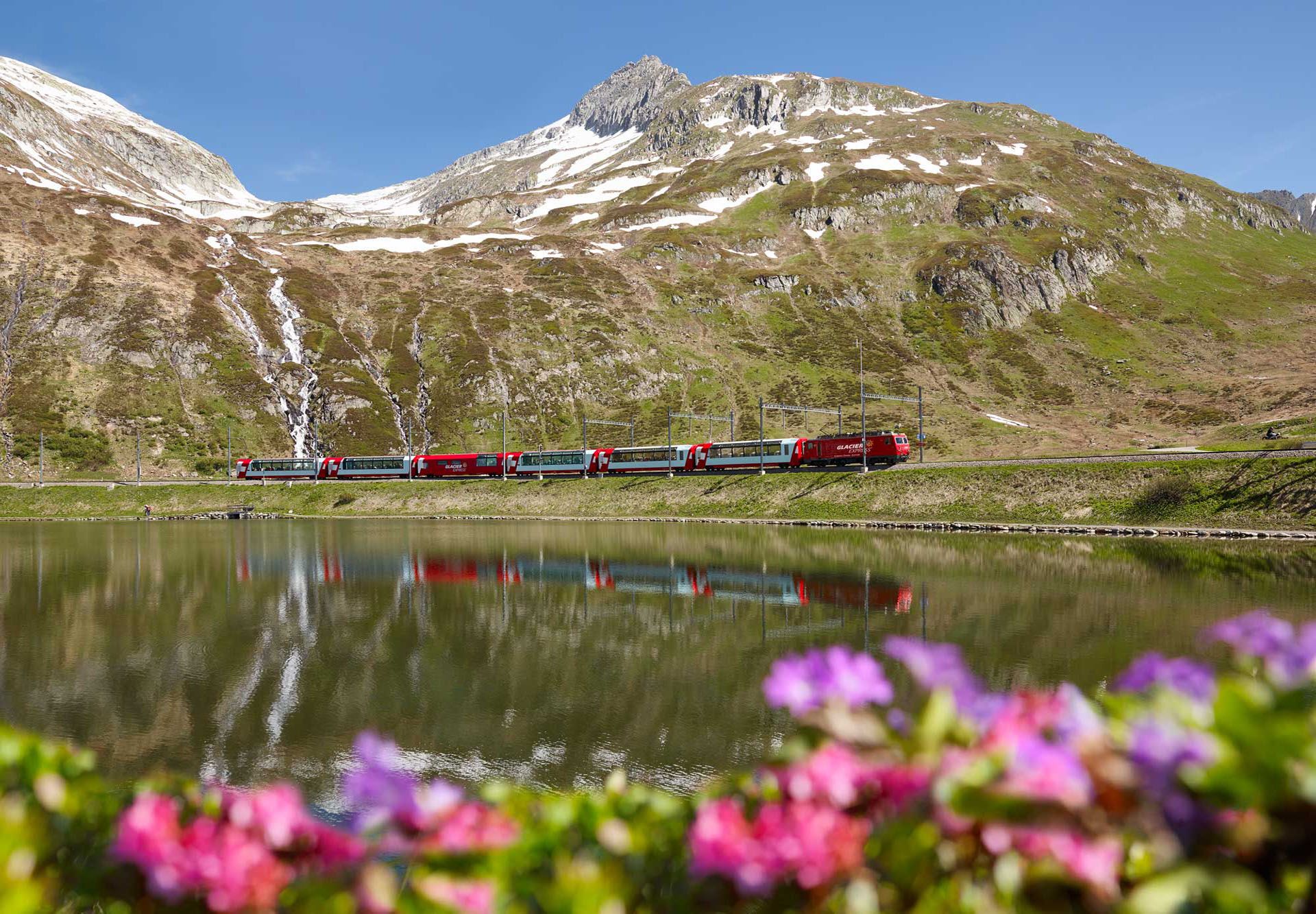
Glacier Express passing Oberalp Pass © Swiss Tourism
Glacier Express
This spectacular — and very popular — route takes in 291 bridges and 91 tunnels in eight hours. Setting out from St Moritz or Davos, you head down to Chur, then up the Rhine valley to the Oberalp Pass and Andermatt.
From here, you enter a tunnel beneath the Furka Pass and scoot down the Rhône valley to Brig, before climbing to Zermatt .
Best places to stay in Zermatt
- Best for Alpine atmosphere: Kulmhotel Gornergrat . Currently the highest hotel in the Alps.
- Best for glamour: Grand Hotel Zermatterhof . One of the finest hotels in Switzerland.
- Best for cosy comfort: Hotel Allalin . Modern, folksy decor, outstanding service, and all rooms have balconies.
Explore more of the best places to stay in Zermatt .
Top trip to take in Zermatt
Board the world's highest cable car to explore the Matterhorn Glacier Paradise.

Zermatt chairlift © Swiss Tourism
This flagship panorama route from Lucerne runs over the Brünig Pass to Interlaken and Gstaad.
Then there’s a spectacular descent through vineyards to the Lake Geneva shore at Montreux.
Best places to stay in Montreux
- Best for palatial luxury: Le Montreux Palace . This legendary hotel is set in its own gardens on the lake.
- Best for couples: Grand Hôtel Suisse-Majestic . A belle époque beauty that's half the price of Le Montreux.
- Best for good-value elegance: Villa Toscane. A fabulous Art Nouveau creation on the waterfront.
Explore more places to stay in Montreux .
Top trip to take in Montreux
For fairy tale charm, it doesn't get better than Chateau Chillon .
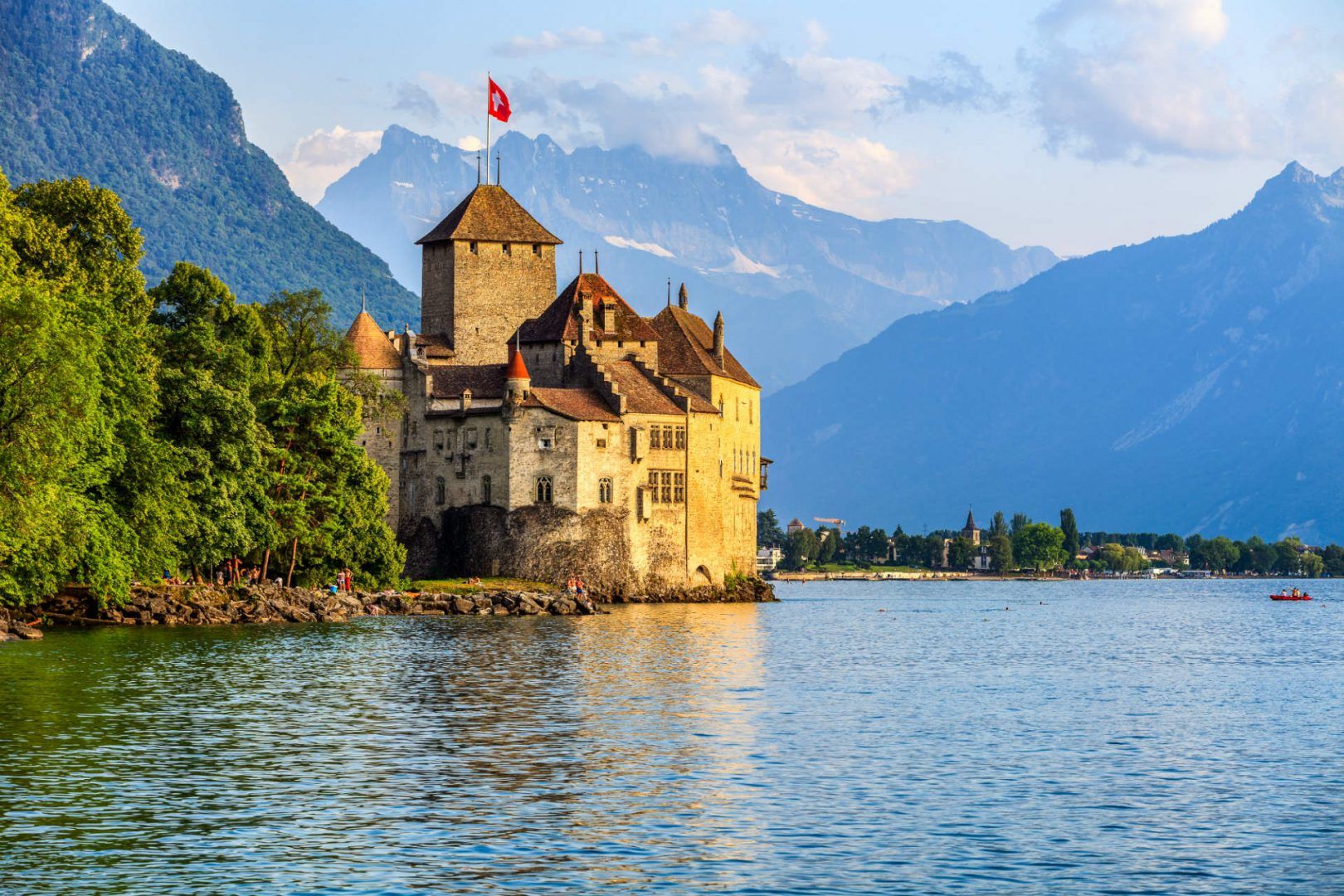
Chillon Castle, Lake Geneva, Switzerland © FenlioQ/Shutterstock
Wilhelm Tell Express
After travelling by boat to Flüelen from Lucerne , a train south corkscrews up into the Gotthard tunnel beneath the Alps
From here, you travel through the Italianate Ticino region to Lugano.
Best places to stay in Lugano
- Best for couples: Hotel Federale . An atmospheric, good-value old town hotel in a quiet leafy district.
- Best for families: Lugano Dante . A quality four-star in a converted townhouse by the funicular base station.
- Best for big spenders: Splendide Royal . Traditional public spaces and rooms characterize this classic.
Browse more of the best places to stay in Lugano .
Top trip to take in Lugano
Book a boat cruise and walking tour of the Olive Tree Trail from Lugano to Gandria .
The Swiss are the most frequent train users in Europe – not surprising, given the quality of the network, which makes getting around Switzerland a pleasure.
Travelling through Switzerland by train is invariably comfortable, efficient and scenic — there’s a reason Switzerland features in our overview of the most scenic train rides in Europe .
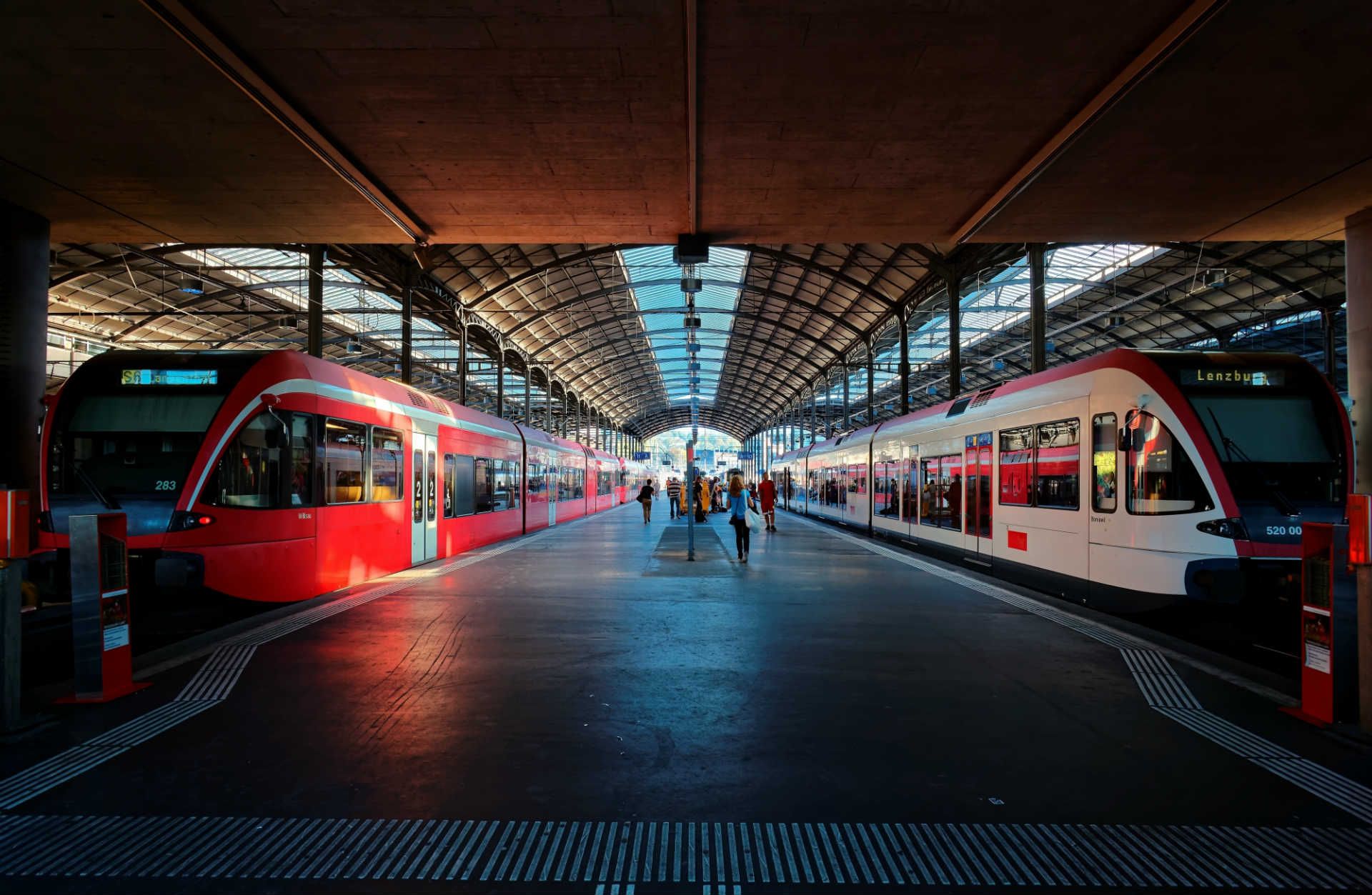
Getting around Switzerland by train is a slick experience © Shutterstock
A comprehensive bus system backs up the train network. These cover ground not served by rail, such as in the high mountains and deep countryside.
The bus and train timetables are coordinated, ensuring watertight connections from one to the other.
Bus stations are nearly always located beside train stations, and all Swiss travel passes are valid for travel on buses as well as trains.
Buses are also the most common form of transport within cities. Many cities also have trams, and a few have funiculars.
Driving gives you extra freedom to explore, and Switzerland’s road network is comprehensive.
Switzerland and Liechtenstein drive on the right, seatbelts are compulsory for all, and penalties for drink driving are tough — one glass of beer has you on or over the limit.
Beware of driving with sunglasses on — since there are hundreds of road tunnels, you can be plunged into darkness with little warning.
Swiss motorways/freeways are signed in green, while main roads are signed in blue.
Speed limits are 120kph (75mph) on motorways, 80kph (50mph) on main roads, 50kph (30mph) in urban areas, and 30kph (18mph) or less on residential streets.
If you hear an outrageously loud klaxon sounding on country lanes or twisting mountain roads, it means a postbus is approaching. It always has priority, so get out of the way.
Driving in Switzerland
Minimum driving age is 18 and third-party insurance is compulsory. You must carry a red warning triangle and the vehicle registration documents.
If you plan to drive on Swiss motorways, you have to stick a vignette inside your windscreen. This remains valid until January 31 of the following year.
Buy it from the customs officials when you first cross the border, or at post offices, petrol stations and My Switzerland .
Car rental can be expensive, so cut costs by renting in advance from the big international agencies.
To rent a car, you need a clean UK, EU or international driving licence that you’ve held for more than a year.
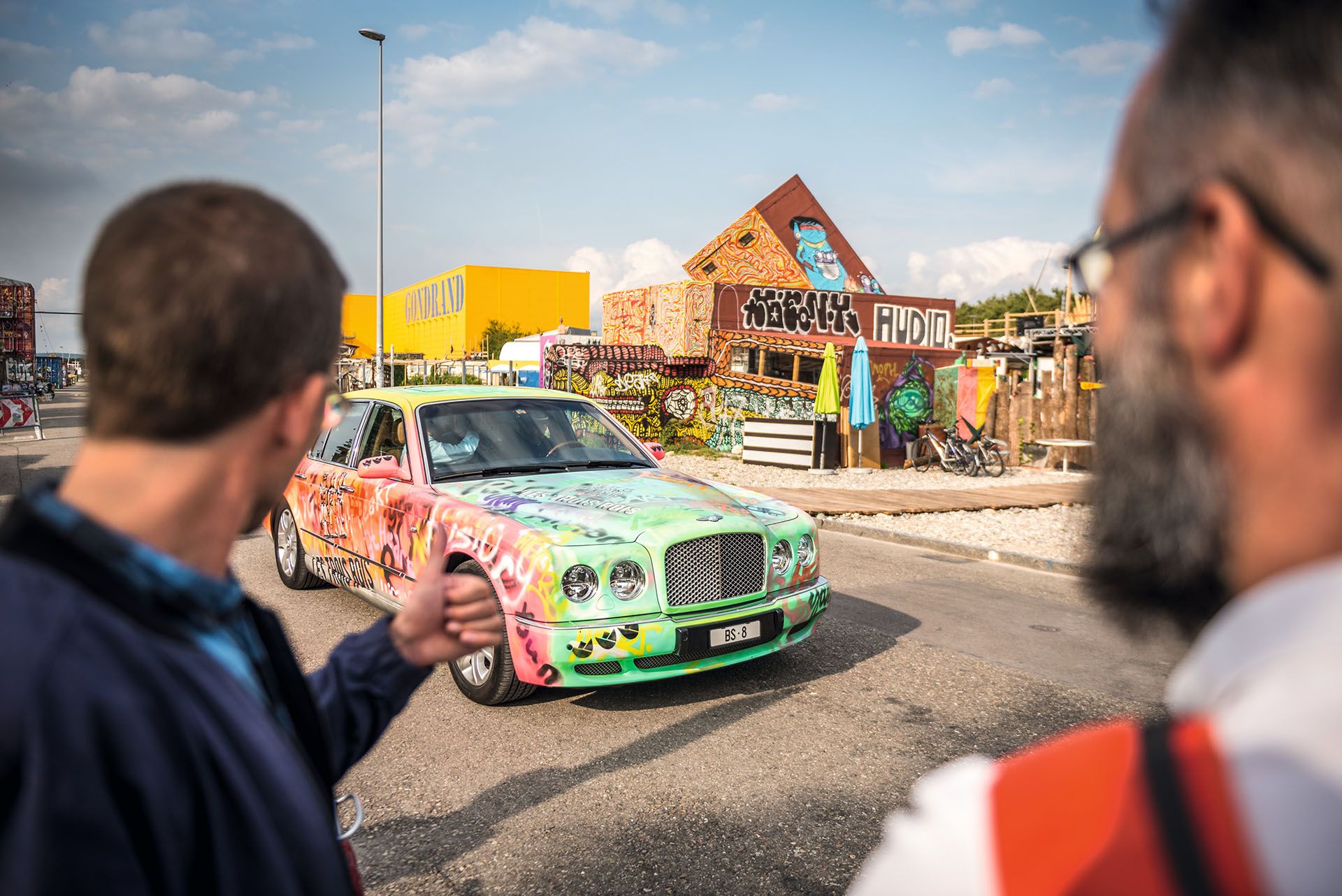
Hire a car to enjoy the freedom of the open road in Switzerland. Basel port © Swiss Tourism
Taxis in Switzerland
Metered taxis are always available, but given the density of public transport they’re rarely necessary. What’s more, you need to be on a Swiss salary to afford them.
Uber is available in nine cities across Switzerland — Geneva, Lausanne, Basel, Bern, Fribourg, Sion, Winterthur, Zug and Zürich.
Inevitably the most scenic drives in Switzerland are over spectacular mountain passes — high routes that connect different parts of the country with each other or with neighbouring countries.
All except the Bernina route (open year-round) are closed for up to eight months of the year.
Here are a couple of sensational scenic drives in Switzerland — see The Rough Guide to Switzerland for more.
Bernina Pass
Linking Pontresina to Poschiavo in Graubünden , there’s no alternative road tunnel under this pass.
A prime artery between southeast Switzerland and northern Italy, it can be icy even in summer.
Best places to stay in Graubünden
- Best for budget travellers: Viva Hostel, Chur . This modern, lively hostel has a range of rooms, some en suite.
- Best for couples: Arosa Kulm, Arosa . This historic palace hotel is right on the edge of the slopes.
- Best for romantics: Soldanella, St Moritz . A family-run hotel in an Art Nouveau building.
Browse more great places to stay in Graubünden .
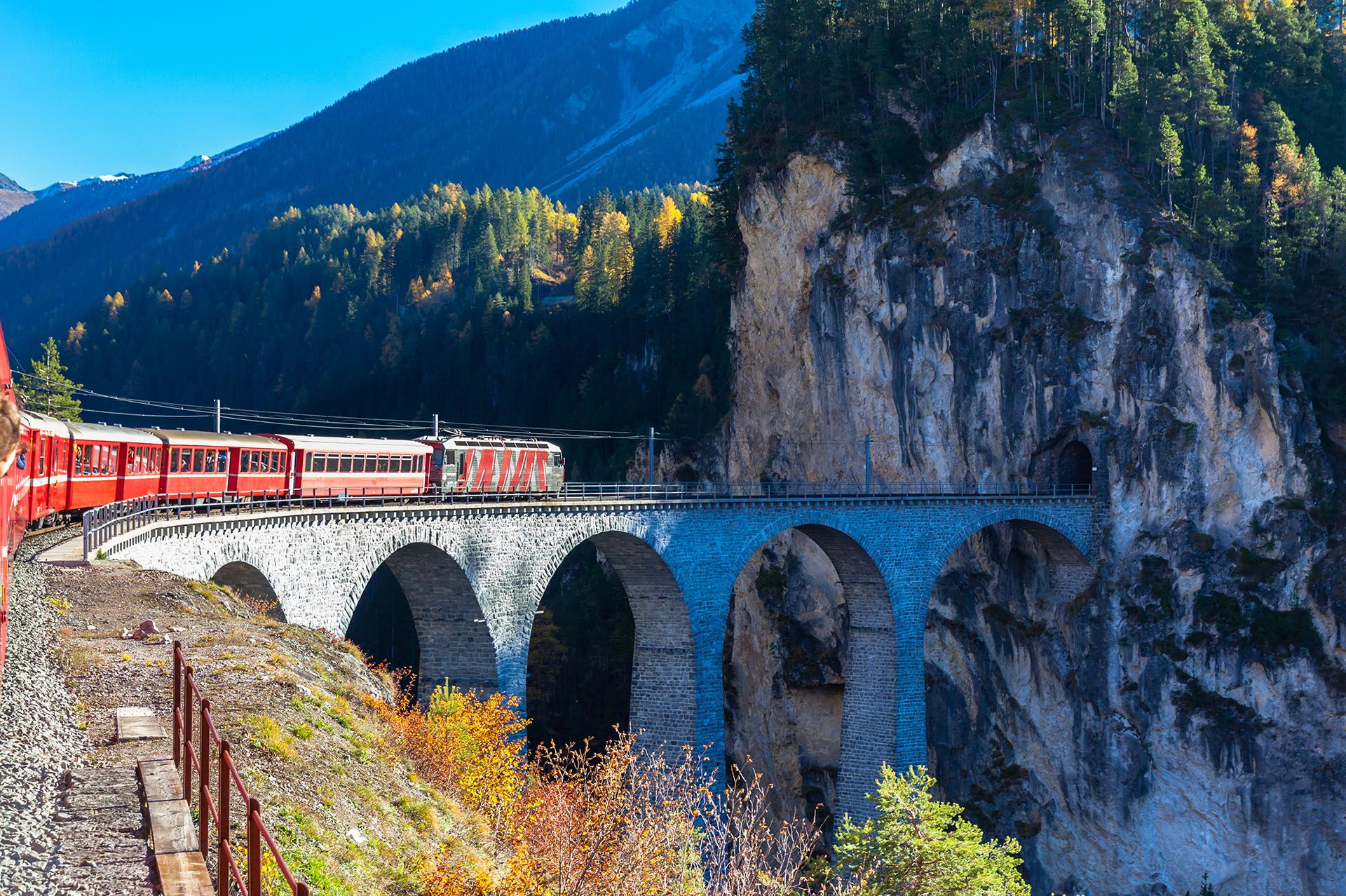
If you don't fancy driving, board the Bernina Express © Peter Stein/Shutterstock
Running from Andermatt to Gletsch in Valais , this pass is a key east–west route across southern Switzerland.
Its western limb switchbacks past the spectacular Rhône glacier.
Best places to stay in Valais
- Best for families: Alpe Fleurie, Villars-Gryon . A lovely chalet-style hotel.
- Best for après-ski action: Campanile Martigny, Martigny . A slick hotel aimed at travellers exploring the passes.
- Best for luxury-lovers: Art de Vivre, Crans Montana . A quiet family-run hotel east of central Crans.
Explore more places to stay in Valais .
All Switzerland’s bigger lakes, and many of its smaller ones, are served by regular ferries.
Most run only during the summer season – generally April to October – and are primarily pleasure-oriented, duplicating routes which can be covered more quickly by rail.
All Swiss travel passes grant free travel by boat everywhere except on Lake Maggiore, which is mostly in Italy.
That said, a leisurely cruise across Lake Geneva , or through the Alpine foothills to Interlaken in Switzerland’s Jungfrau region beats the equivalent train journey.
Best places to stay in Interlaken
- Best for couples: Hotel Restaurant Hirschen . This atmospheric inn has been in the same family for 300 years.
- Best for luxury: Victoria Jungfrau . One of Switzerland's grandest hotels, with a spa and sensational views.
- Best for affordable comfort: Weisses Kreuz . This centrally-located, affordable hotel offers basic, cosy rooms.
Discover more places to stay in Interlaken .
Though Switzerland is small, the presence of so many mountains can lengthen journey times, so it might sometimes make sense to take an internal flight.
Swiss flies between Geneva and Zürich several times a day.

Aerial view over Interlaken, Switzerland © 4kclips/Shutterstock
Given that getting around Switzerland is so easy, you might be ready to book your trip — The Rough Guide to Switzerland and our run-down of things not to miss in Switzerland will help you plan.
Not a fan of planning? Book a hassle-free tailor-made trip to Switzerland, with customisable itineraries curated by local experts covering everything from unforgettable highlights of Switzerland , to touring the Grand Circle .
We may earn commission when you click on links in this article, but this doesn’t influence our editorial standards. We only recommend services we genuinely believe will enhance your travel experiences.
Related articles from the blog

The Rough Guides to Switzerland and related travel guides
In-depth, easy-to-use travel guides filled with expert advice.

Travel advice for Switzerland
From travel safety to visa requirements, discover the best tips for traveling to Switzerland
- Geneva travel guide
- Lausanne travel guide
- Zürich travel guide
- Basel Switzerland Travel Guide (2022 update)
- Bern Travel Guide
- Lucerne Travel Guide
- Lake Geneva Travel Guide
- Northeast Switzerland and Liechtenstein Travel Guide
- Sports and outdoor activities in Switzerland
- Bernese Oberland travel guide
- Jungfrau Region travel guide
- Valais travel guide
- Graubünden Travel Guide
- Zermatt and the Matterhorn travel guide
- Central Switzerland Travel Guide
- Ticino Travel Guide
- Best accommodation in Switzerland
- How to get to Switzerland
- Culture and Etiquette in Switzerland
- Eating and drinking in Switzerland
- Switzerland travel tips
- Best time to visit Switzerland
- Festivals in Switzerland
Find even more inspiration here
- Boats & Sailing
- Train Journeys
- Zermatt and the Matterhorn
- Bernese Oberland
- Central Switzerland
- Travel Tips
- Where to stay
written by Rough Guides Editors
updated 24.08.2022
Ready to travel and discover Switzerland?
Get support from our local experts for stress-free planning & worry-free travels.
- Travel advice

The PERFECT 10 Day Switzerland Itinerary
In an ideal world, we’d all love to spend as much time as possible in Switzerland. In reality, though, where does an itinerary for Switzerland for 10 days fit in?
Though it’s possible to experience some Swiss highlights in a week , you could easily fill a fortnight in Switzerland – without seeing and doing everything you’d like to.
A Switzerland 10 day itinerary, then, lies somewhere between the two.
You can have sufficient quality time in several places to really enjoy them, while giving you scope to come back for more, at a later date.
For me, this is the best Switzerland itinerary when you have around a week-and-a-half at your disposal. Follow this and you’ll spend time in historic Lucerne, active Interlaken, musical Montreux, and Zermatt, home of the famous Matterhorn.
And there are lots of glittering lakes, alpine meadows, and mountain peaks sandwiched in-between!
This itinerary has been designed around the affordable, clean, and efficient Swiss rail system, but you can of course travel by car if you prefer.
Also included in this itinerary for 10 days in Switzerland are my top travel tips for planning your trip, travel times by train and car, and accommodation options. You’ll also discover things to do in each destination.
Let’s get started on the best travel itinerary for Switzerland! We’ll start with things to think about before buying your train tickets, booking your accommodation, and considering package tours.
[ This post may contain compensated links. Please see my disclosure policy for more information. ]

What's in this Article
Useful tips for planning your itinerary for Switzerland
Swiss travel passes.
If you decide to travel by train, then do consider buying a Swiss Travel Pass or Swiss Half Fare Card to save money on your transport costs.
> Click here to read the complete guide to Swiss rail passes
Location, Location
When booking your hotel rooms, look for accommodation close to the train station. Having the railway close by will save time when travelling between cities. Hotels located near the station also tend to be convenient for city centre attractions.
If you arrive at the hotel before your room is ready, most properties will store your luggage until check in. That way you can start exploring your new location straightaway – without lugging your baggage around.
Under each city, I’ve listed a recommended, highly rated hotel in the luxury, mid-range, and budget categories.
Consider pre-packaged
If you would rather have a Swiss travel expert make all the required reservations on your behalf, then there is the option of booking a rail package.
I recommend the rail packages offered by the reputable Switzerland Travel Centre . They offer various Grand Tours of Switzerland.
The nine day package, for example, is perfect for those wishing to see Switzerland in 10 days as you can customise the package by adding an additional day.
🇨🇭 HOLIDAYS TO SWITZERLAND READER OFFER 🇨🇭 Get 5% off Switzerland rail packages simply by quoting our promo code HTSWISS when booking online. Get all the details here >>

The best 10 day Switzerland itinerary
A 10 day trip to Switzerland gives you enough time to spend several days in some of the country’s most sought-after destinations.
This suggested itinerary therefore includes stays in Lucerne, Interlaken, Montreux, and Zermatt. You can also add time in Zurich at the start or end of your trip, if you like.
Lucerne offers a charming, historic Old Town, with a mediaeval bridge spanning the river running through the centre. Interlaken is a pretty, outdoorsy resort known for winter sports and hiking trails.
Montreux on the shores of Lake Geneva offers warm weather, a waterside promenade, Chillon Castle, and the Montreux Jazz Festival.
Zermatt is also known for skiing and hiking, plus ice skating, a vibrant après-ski scene, and smart shops.
Read on to find out what to do in each of these appealing destinations – as well as how to get there, where to stay, and more.
10 day itinerary for Switzerland overview
- Lucerne – 2 nights
- Interlaken – 3 nights
- Montreux – 2 nights
- Zermatt – 2 nights
🇨🇭 See all our Swiss destination guides > here .
Day 1 – Arrival and travel to Lucerne + sightseeing

Travelling from Zurich to Lucerne
- By train: 1 hour / Departure station: Zurich Main Station (Zurich HB), or Zurich Airport (Zurich Flughafen)
- By car: 45 minutes
Overnight: Lucerne
Accommodation in Lucerne
Luxury : Hotel Schweizerhof | 5 stars | Spa & 2 restaurants | Click here to book
Mid-range : Hotel des Balances | 4 stars | Riverside restaurant | Click here to book
Budget : Hotel Anker | 3 stars | Central location & restaurant | Click here to book
At around one hour from Zurich Airport, Lucerne makes the ideal first stop on a 10 day itinerary for Switzerland, by car or by train. Travel times are similar by either mode of transport.
What makes life even easier is that you can travel from the train station at Zurich airport if you’d like to (the airport station is called Zurich Flughafen). There is also Zurich HB, the main train station in the city centre.
Regular connections will take you from the airport to the city, from which you can catch a train to Lucerne.
Once you arrive in Lucerne, there is lots to see and do. Depending on what time you arrive, you can get started with sightseeing on day one. That would free up a full day to take a mountain excursion on your second day.
Whether you see the sights on your first or second day, here’s what to do in the city of Lucerne.

Explore the Old Town of Lucerne
With its mediaeval squares, cobbled streets, and old bridges, Lucerne Old Town is one of the city’s main draws. Look out for the original oriel windows and painted facades in the Weinmarkt area.
Lucerne’s Old Town is also perfect for dining out, and retail therapy. You can shop here for fresh local produce, Swiss chocolate, army knives or watches, and clothing and accessories from both big brands and independent boutiques.
You can also find many of the city’s best cafes and restaurants in the Old Town, whether you’re seeking a coffee break or a sumptuous dinner.
Visit the ‘Dying Lion’ monument
This big, carved stone lion represents Swiss heroes who died during the late 18th century while trying to protect Louis XVI. The inscription, in Latin, dedicates the statue ‘to the loyalty and bravery of the Swiss’.
See Chapel Bridge
Dating back to 1333, Chapel Bridge is a favourite tourist and selfie spot. Sadly, it was damaged by fire in 1993. Though the bridge thankfully survives, you can see evidence of this on the decorative panels beneath the eaves.
The Water Tower is even older, dating back to the turn of the 14th century. This has been used at various times as a prison, a treasury, and an archive.
Take a cruise on Lake Lucerne
Cruising picturesque Lake Lucerne is a must if you want to savour views of the crystal clear water, snow-capped mountain peaks, and four Swiss cantons.
You can cruise on Lake Lucerne by luxury yacht, paddle steamer, or modern motorboat.
> Check out a Lake Lucerne cruise option here
Day 2 – Full day in Lucerne + mountain excursion

Overnight : Lucerne
A 10 days in Switzerland itinerary gives you sufficient time to spend a day beyond Lucerne.
Taking a mountain excursion to Mount Pilatus, Rigi, or Titlis is highly recommended.
Mount Pilatus
A bus ride to Kriens is the first step in getting to Mount Pilatus , and then you can take a cable car up the mountain. Once you reach the summit, a range of attractions awaits, including walking trails, restaurants, a rope play park, an adventure playground, and even sledding.
> Click here to check prices and buy Mount Pilatus tickets
A serene cruise across Lake Lucerne to Vitznau is the first stage of the journey to Mount Rigi . From there, you can take a cogwheel train ride to the top.
When coming back down, you can also stop at Rigi Kaltbad station to spend time there, and perhaps, enjoy some time in the thermal baths.
> Click here to check prices and buy Mount Rigi tickets
Mount Titlis
Taking the train to Engelberg, then a cable car ride, is how to reach the summit of Mount Titlis from Lucerne. Once at the top, you can savour sweeping views over the Alps.
There’s also a range of activities and attractions, including sledding, a revolving cable car, snow tubing, the Cliff Walk, and the Glacier Cave.
> Click here to check prices and buy Mount Titlis tickets
Day 3 – Travel to Interlaken + lake cruise or Harder Kulm

Travelling from Lucerne to Interlaken
- By train : 2 hours / Departure station : Lucerne train station (Bahnhof Luzern)
- By car : 1 hour 15 minutes
Overnight : Interlaken
Accommodation in Interlaken
Luxury : Victoria Jungfrau Grand Hotel & Spa | 5 stars | Spa, 3 restaurants & kids’ club | Click here to book
Mid-range : Hotel Interlaken | 4 stars | Restaurant & room service | Click here to book
Budget : Hotel Bernerhof | 3 stars | Central location & restaurant | Click here to book
Two hours on the Luzern – Interlaken Express – or a car journey of an hour and 15 minutes – is the next stage of your 10 day Swiss itinerary.
The scenic resort of Interlaken is set among mountains and lakes and offers skiing and other winter sports, or summer hiking. There’s also lots to see and do in the surrounding area, including the following…
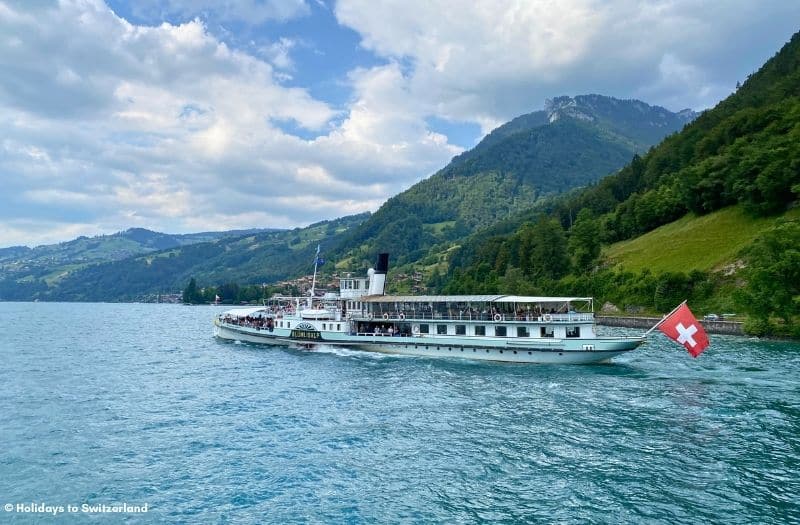
Join a Brienz or Thun lake cruise
Thunersee – or Lake Thun – is the biggest Swiss lake in the region. You can cruise, sail or sample various water sports here.
There are also pretty villages and towns dotted around the shoreline, including Faulensee, Oberhofen, Thun, and Spiez.
Taking a Lake Thun boat trip is one of the best things to do in Interlaken. Our favourite is the sunset cruise, complete with Swiss cheese fondue and wine.
Alternatively, take a trip on the waters of Brienzersee, aka Lake Brienz. You can visit villages such as Brienz, try stand-up paddle boarding, or look out for waterfalls from the boat.
Head to Harder Kulm
As Interlaken’s very own mountain, Harder Kulm is one of the most popular attractions in the area. It’s really easy to visit, too, thanks to the funicular railway running daily between mid April and early December.
Services run half hourly, and the trip takes just ten minutes.
From Harder Kulm you can enjoy panoramic views of the Bernese Alps, plus lakes Brienz and Thun.
You can also find walking trails, a kids’ playground, a restaurant, and the Two Lakes Bridge at the summit.
Day 4 – Full day in Interlaken + Jungfraujoch

Once you’ve explored Harder Kulm and/or the local lakes, next up on your Switzerland itinerary in 10 days by train or car is the Jungfrau region.
A day trip to Jungfraujoch , aka the ‘Top of Europe’, is highly recommended. Trains operate all year round to the summit, or you can take a cable car ride for part of the way instead.
The Top of Europe is almost 3,500 metres above sea level. As well as breathtaking views over the Swiss peaks and the Aletsch Glacier, there are shops, restaurants, and a snow sports park at the summit.
If you have time, you could also stop at Wengen or Lauterbrunnen on the way back to Interlaken.
> Click here to book your Jungfraujoch train ticket
Day 5 – Full day in Interlaken + Grindelwald or Schilthorn

For your second full day in Interlaken, visiting either Schilthorn or Grindelwald-First is recommended.
Grindelwald and Grindelwald-First
You can drive, or travel by train, between Interlaken and Grindelwald in around half an hour.
Grindelwald offers a range of shops, cafes, and restaurants, plus wellness centres, and winter sports facilities. There is also an indoor rope park, and swing and rope walk at Grindelwald Glacier.
You can also take a cable car to Grindelwald First from the town of Grindelwald. This operates all year round.
At the summit, the First Flyer Zipline, a great restaurant, Trottibike scooter rides, mountain carts, and the First Cliff Walk await.
Schilthorn featured in the James Bond movie On Her Majesty’s Secret Service. You can take a train and cableway to get there from Interlaken.
As well as sweeping views from the glass-floored observation deck, and a thrilling circular walk, there’s a number of Bond-themed attractions at the summit.
You could also visit the charming, authentic Swiss village of Mürren en route.
> Click here to book your Schilthorn tickets
Day 6 – Travel to Montreux + sightseeing

Travelling from Interlaken to Montreux
- By train : Intercity – 2 hours 20 minutes or GoldenPass Express – 3 hours 10 minutes / Departure station : Interlaken Ost train station
- By car : 1 hour 40 minutes
Overnight : Montreux
Accommodation in Montreux
Luxury : Fairmont Le Montreux Palace | 5 stars | Spa, 2 pools & 5 restaurants | Click here to book
Mid-range : Hotel Victoria Glion | 4 stars | Outdoor pool & restaurant | Click here to book
Budget : Swiss Historic Hotel Masson | 3 stars | Lakeside location & restaurant | Click here to book
There are two ways to travel by train from Interlaken to Montreux. The first is by intercity train via Visp, which takes about two hours and 20 minutes.
Alternatively, take a trip on the scenic GoldenPass Line. At over three hours, this is a longer journey, but it’s worth it for the panoramic views.
Whether you take the scenic route or not – or even go by car – Montreux certainly belongs on your 10 day Switzerland train itinerary.
The town is backed by the Swiss Alps and nestled on the shores of Lake Geneva, and a lovely lakefront promenade runs along by the water.
There are plenty of sights to see in Montreux and the surrounding area. Or you could simply wander along the walking trails, or take a lake cruise.
Seasonal activities in Montreux include the Christmas market, and the world famous Montreux Jazz Festival, held in July.

Chillon Castle
Fairytale Château de Chillon occupies a small promontory at the eastern end of Lake Geneva.
The mediaeval structure is both historic and very photogenic. Not least as it’s surrounded by water, which adds to the ethereal feel.
Lakeside Promenade
Running alongside the lake, Montreux’s Chemin Fleuri (or ‘Flower Path’) stretches for 13 kilometres from Vevey to Chateau Chillon.
Lined with colourful flowers, palms, sculptures and stunning lake views, a stroll along the promenade is a must.
Queen: The Studio Experience
Queen: The Studio Experience can be found in the former Mountain Studios in the Casino Barrière de Montreux.
The music-themed museum is dedicated to the British rock group Queen, who used the studios between 1978 and 1995.
Lead singer Freddie Mercury recorded his last songs here, and the museum was opened by Brian May in 2013.
Freddie Mercury statue
Music fans will also want to see the statue of Freddie Mercury in Montreux. It can be found in front of the covered market, close to the tourist office.
Planning a trip to Switzerland? At Holidays to Switzerland we are passionate about sharing our love of Switzerland and helping you to plan the perfect trip. Read our guide to planning a trip to Switzerland to kick start your travel plans and join our free Switzerland Travel Planning group on Facebook to chat with other past and future travellers. Want monthly news and podcast updates, helpful travel tips and special deals sent straight to your inbox? Subscribe to Holidays to Switzerland and we’ll send you a bonus copy of our 10 Useful Things to Know Before You Visit Switzerland guide. 🇨🇭 Check out our exclusive discount offers and save on your Swiss vacation. 🇨🇭
Day 7 – Full day in Montreux + Vevey or Gruyeres

This suggested Switzerland in 10 days tour package gives you time to include a day trip to Vevey or Gruyeres from Montreux.
It’s really easy to visit neighbouring Vevey from Montreux. Just continue heading north from Montreux along the Flower Path (the lakeside promenade), and after a couple of miles – or a few kilometres – you’ll get there.
Vevey offers a pleasant central lakeside square, Grande Place; a Charlie Chaplin statue; and a network of streets lined with tempting shops, cafes, and restaurants.
There’s also the Läderach chocolatier, and several interesting museums.
The name of Gruyeres is famous among cheese rather than chocolate fans, but does in fact offer both.
This beautiful hilltop Swiss village offers a 13th century castle, a cheese factory, the Maison Cailler Chocolate factory (a few kilometres away in Broc), hikes to Gorges de la Jogne, and more.
Day 8 – Travel to Zermatt + sightseeing

Travelling from Montreux to Zermatt
- By train : 2 hours 40 minutes / Departure station : Montreux train station (Gare de Montreux)
- By car : 2 hours 40 minutes
Overnight : Zermatt
Accommodation in Zermatt
Luxury : The Omnia | 5 stars | Spa, indoor pools & restaurant | Click here to book
Mid-range : BEAUSiTE Zermatt | 4 stars | Spa, indoor pool & 2 restaurants | Click here to book
Budget : Hotel Bristol | 3 stars | Sauna & steam room, & bar | Click here to book
The last stop on your Switzerland itinerary for 10 days from Zurich is Zermatt.
This car-free resort lies in the shadow of the Matterhorn, and is in many ways the quintessential Alpine town. It’s popular with skiers, and for course anyone who wants to see the iconic mountain with its triangular peak.
If you arrive in Zermatt by car, note that you need to leave your vehicle at the car park in Täsch, which is provided for this purpose.
You can then transfer to Zermatt via a shuttle train service which operates very frequently.
Depending on what time you arrive in Zermatt, you can spend the rest of the day wandering around the pretty, car-free town.
Day 9 – Full day in Zermatt

If you’re following this 10 days Switzerland itinerary in winter, then you may well be tempted to spend the day skiing.
Otherwise, things to do during your one full day in Zermatt include visiting Gornergrat and the Matterhorn Glacier Paradise.
You can take a trip on a rack railway to Gorner ridge. Gornergrat services depart daily, and the journey takes around half an hour.
There are fabulous views from the ridge, and you can also look out for local wildlife including chamois, ibex, and marmots.
You could also take a hike, do some gift or souvenir shopping, or dine out with a view.
Matterhorn Glacier Paradise
The highest cable car station in Europe can be reached via a three-sector gondola trip. You can see 38 mountain peaks and 14 glaciers from here.
Matterhorn Glacier Paradise offers skiing, dining, ice toboggan rides, a cinema, shopping, and the Glacier Palace.
For a little taste of Italy, why not continue on to Cervinia from Matterhorn Glacier Paradise? In just 90 minutes it is possible to travel from Zermatt all the way to Italy by cable car!
Day 10 – Travel to Zurich + sightseeing

Travelling from Zermatt to Zurich
- By train : 3 hours 20 minutes / Departure station : Zermatt Bahnhof
- By car : 4 hours
Accommodation in Zurich
> Click here to find hotels in central Zurich
> Click here to find Zurich airport hotels
The final journey of your trip involves travelling back to Zurich from Zermatt. As mentioned above, you can travel to the train station in the city centre, before taking a direct connection to Zurich airport if required.
If you do have some time during the day – or even to spend the night – before departing Switzerland, then exploring Zurich is very worthwhile.
The Old Town and Lindenhof are worth discovering, and both are perfect for unwinding before your flight.
Zurich Old Town
Straddling the Limmat River in the centre, Zurich Old Town is the prettiest part of the city. You can also enjoy – and capture on camera – superb views over the water from Limmatquai.
Of all the bridges across the river, the “love lock” Mühlesteg Footbridge is unmissable, as there are hundreds of love locks decorating it.
The tranquil green space at Lindenhof offers Old Town views, and is a peaceful spot to spend time in before flying home – or onwards from Switzerland.
A Roman fort once stood on the site and the park is now popular for picnics, playing outdoor games, and live music.

Travel times from Geneva and Basel
This Swiss itinerary for 10 days assumes you’ll be arriving in Zurich, as that is Switzerland’s most popular international hub. However, a significant proportion of visitors do arrive in Basel or Geneva.
Travelling from Geneva to Lucerne
- By train : 3 hours / Departure station: Geneva Cornavin station (Gare de Genève)
- By car : 3 hours 10 minutes
Travelling from Zermatt to Geneva
- By train : 4 hours (via Visp) / Departure station : Zermatt Bahnhof
- By car : 2 hours 50 minutes
Travelling from Basel to Lucerne
- By train : 1 hour 5 minutes / Departure station: Basel SBB train station
- By car : 1 hour 25 minutes
Travelling from Zermatt to Basel
- By train : 3 hours 25 minutes (via Visp) / Departure station : Zermatt Bahnhof
- By car : 3 hours 30 minutes

10 Day Switzerland Itinerary | Final Thoughts
A 10 day Swiss itinerary gives you enough time to explore this exceptional country without rushing around too much.
By spending two to three nights in Lucerne, Interlaken, Montreux, and Zermatt, you have time to discover not only the towns and cities themselves, but also the surrounding area.
Whether you soak in the thermal baths at Mount Rigi, cruise on Lake Thun, stroll from Montreux to Vevey, or take the rack railway to Gornergrat, Switzerland has so much to offer.
Then there’s all that chocolate and cheese, plus the picturesque lakes, glaciers, meadows, gorges, and of course mountains.
Follow this ten day itinerary and you can truly sample a slice of all that Switzerland has to offer – while whetting your appetite to come back for more in future, of course!
🇨🇭 Would you prefer a 7-day Switzerland itinerary, or are you planning two weeks in Switzerland? Read all our Swiss itineraries > here .
SWITZERLAND TRAVEL ESSENTIALS
Rail passes.
Swiss Travel Pass
Swiss Half Fare Card
Eurail Global Pass
Regional Rail Passes
Berner Oberland Pass
Jungfrau Travel Pass
Rail Packages
Self-Drive Packages
Itinerary Planning
Digital Guides

Carolyn Schönafinger
Carolyn Schönafinger is a frequent visitor to Switzerland, the country she fell in love with more than 30 years ago. She now visits Switzerland every year in her quest to explore every inch of the country. Carolyn is a certified Switzerland Travel Expert and she has achieved the Swiss Travel System Travel Expert diploma. She loves sharing her Switzerland travel expertise and helping others to plan their dream Swiss vacation on this website and the Holidays to Switzerland Travel Podcast. Read more

Holidays to Switzerland Travel Podcast Episode 98 Transcript
Holidays to switzerland travel podcast episode 62 transcript.
We travelling to Switzerland.
© Holidays to Switzerland 2024. All Rights Reserved . About • Privacy Policy • Disclaimer/Disclosure • Contact

Ultimate Guide to Train Travel in Switzerland (2024 Update)
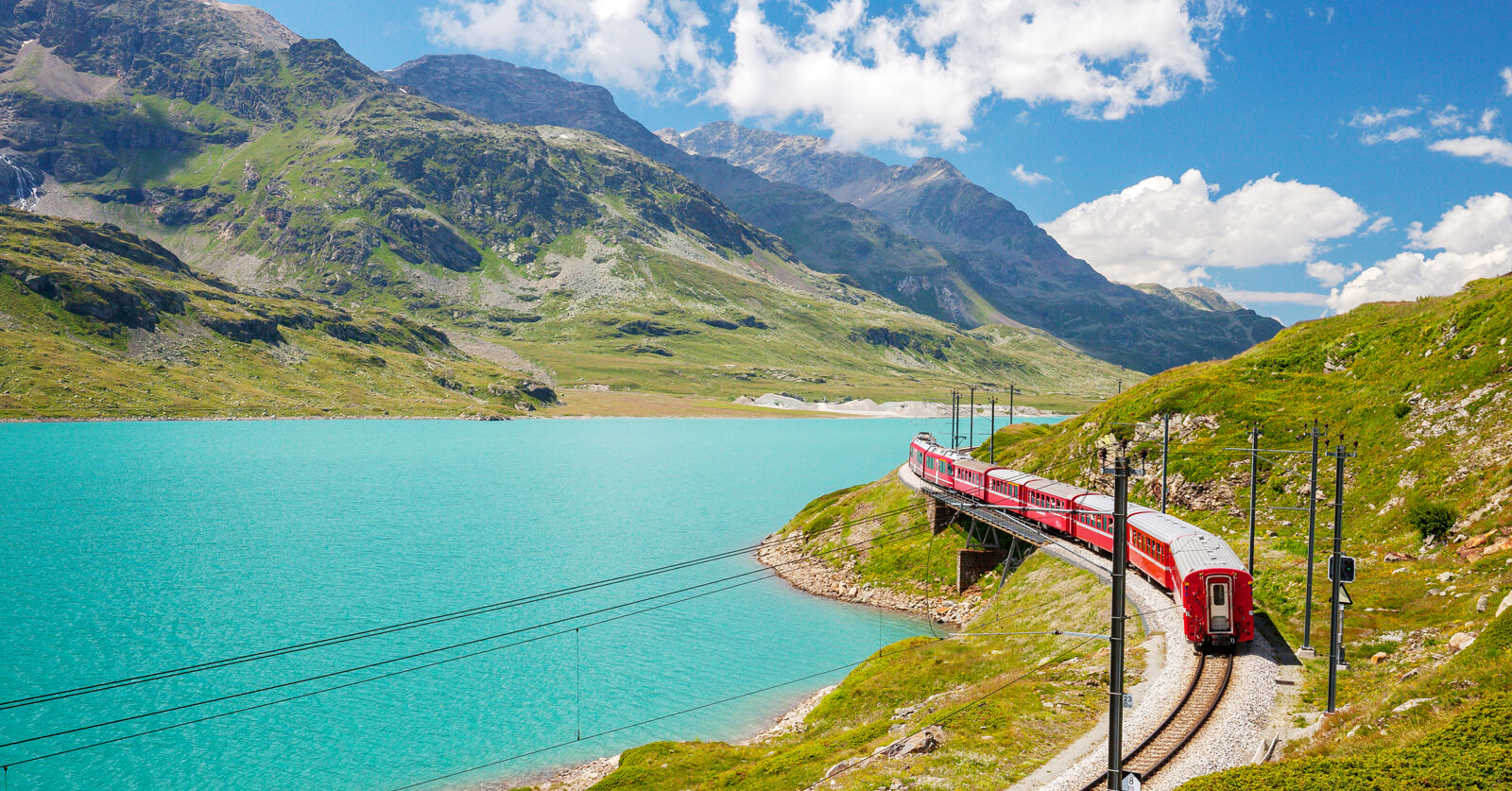
In Switzerland, train travel is more than a simple mode of transportation. Granted, thanks to the world’s most dense public transportation network, the Swiss travel more kilometers by train than any other country.
The Swiss trains, trams, buses, and boats are meticulously scheduled so that transfers are smooth and efficient. Almost all railway lines run at least once an hour, and the busiest routes run every half hour or even every 15 minutes. And for the so-called last mile from the station to the door, a bus, tram, or cable car awaits the arriving passengers.
Regardless of the operating company, all modes of transport are integrated into a single master timetable across the country. It truly is a Swiss travel system .
But in this country boasting nearly 5000 km of railway tracks, train travel is also a major leisure activity. Numerous scenic railway journeys are part of the Grand Train Tour of Switzerland, a network of routes that connect the major sights. It allows tourists to see the best of Switzerland while traveling by train from one destination to another.
This ultimate guide to train travel in Switzerland showcases how the Swiss Travel System works: from types of trains to popular itineraries and ticket options.
All About Train Travel in Switzerland
Grand train tour of switzerland, train itineraries in switzerland, how to travel by train in switzerland, faqs about train travel in switzerland, train types in switzerland, panoramic trains.
In a country known for its scenic mountains, glaciers, and lakes, it only makes sense to run trains that offer the best views out the window. There are several noteworthy panoramic train lines in Switzerland, each offering oversized window panes to reveal every mountain peak to those seated in their cushy coaches.
Here are the top panoramic trains in Switzerland:
- Bernina Express : This train takes you through the Swiss Alps from Chur to Tirano, Italy. It crosses the Landwasser Viaduct, one of the world's most famous and picturesque railway bridges. And it passes the Bernina Pass, the highest rail crossing in Europe, before presenting views of the Lago Bianco reservoir.
- Glacier Express : This train is considered one of the most scenic train rides in the world. It travels between Zermatt and St. Moritz across southeastern Switzerland, passing 91 tunnels and 291 bridges. Highlights of the route include alpine meadows, typical Swiss villages, the 2033-meter Oberalp Pass, and the Vorderrhein valley. And since it takes about 7.5 hours to complete, it is often touted as the slowest express train in the world. Lunch is served in first class, seat reservations are mandatory, and the trip runs year-round in both directions.
- GoldenPass Express : The latest panoramic train service runs up to four times daily between Interlaken and Montreux. Thanks to unique technology, the GPX can change the gauge of its wheels and the height of its coach bodies, making a transfer in Zweisimmen a thing of the past. The Prestige and first-class seats offer sweeping views of the diverse landscape between Switzerland's German and French-speaking parts.
- Gotthard Panorama Express : This journey starts with a serene steamboat ride across Lake Lucerne to Flüelen. From there, a panoramic train coach with Switzerland’s largest windowpanes picks up the course, then passes cliffs and cascading waterfalls en route to Lugano.
- Luzern–Interlaken Express: This train takes passengers on a journey through the heart of Switzerland. The route connects Lucerne and Interlaken, two popular tourist destinations in less than two hours. From the shores of Lake Lucerne, it passes Lake Lungern, crosses the Brünig Pass, and finally arrives at Lake Brienz in the Bernese Alps.
- Treno Gottardo : This fairly new line runs hourly and connects Basel, Zurich, and Lucerne to Locarno. As the name suggests, the train line runs along the 120-year-old Gotthard route and stops at the historically significant village of Göschenen. After passing through the Leventina valley, it runs along Lake Maggiore before arriving in the southern town of Locarno.
Jaw-Dropping Swiss Train Journeys (2024)
Memorable train lines in switzerland in 2024, intercity and regional trains.
A network of high-speed trains connects Switzerland’s cities. The ICN InterCity train lines run non-stop between major hubs such as Basel, Bern, Geneva, Lausanne, Lucerne, and Zurich.
Meanwhile, the regional lines of the Swiss rail network play a crucial role in connecting the smaller towns and villages. These lines often run through more rural and remote areas, providing access to lesser-known but equally beautiful destinations. Since the locals use these lines to commute, they are an authentic place for tourists to learn about Swiss culture.
Specialty Trains for Foodies
Switzerland has a variety of special train services catering to foodies, such as the Chocolate Train, Cheese Train, and Cookie Train. These trains offer a one-of-a-kind and memorable experience for any food lover.
The Chocolate Train is an absolute must-see for chocolate lovers the world over. The journey aboard the historic Belle-Epoque coaches lasts from Montreux to Montbovon. The chocolate bus connects to the Gruyère region, where you will visit the Maison Cailler chocolate factory in Broc and stroll through the charming Gruyère old town. Admission to the show dairy, as well as coffee and chocolate bread, are included.
The Cheese Train provides a one-of-a-kind experience for cheese lovers. The journey also begins in Montreux and continues to Château-d'Oex, where you can enjoy a delicious cheese fondue. Two museum visits are included: "Espace Ballon," about the history of hot-air ballooning, and the new Swiss Museum of Papercuts.
And finally, the Kambly Cookie Train is a must-try for any sweet tooth. The train line connects Bern and Lucerne through the Emmental valley. The idea is that you can take an entire day to enjoy the scenery along the way. A definitive highlight is a visit to the "Kambly Experience," a cookie bakery in Trubschachen. And there’s an optional boat cruise from Brienz to Interlaken Ost.
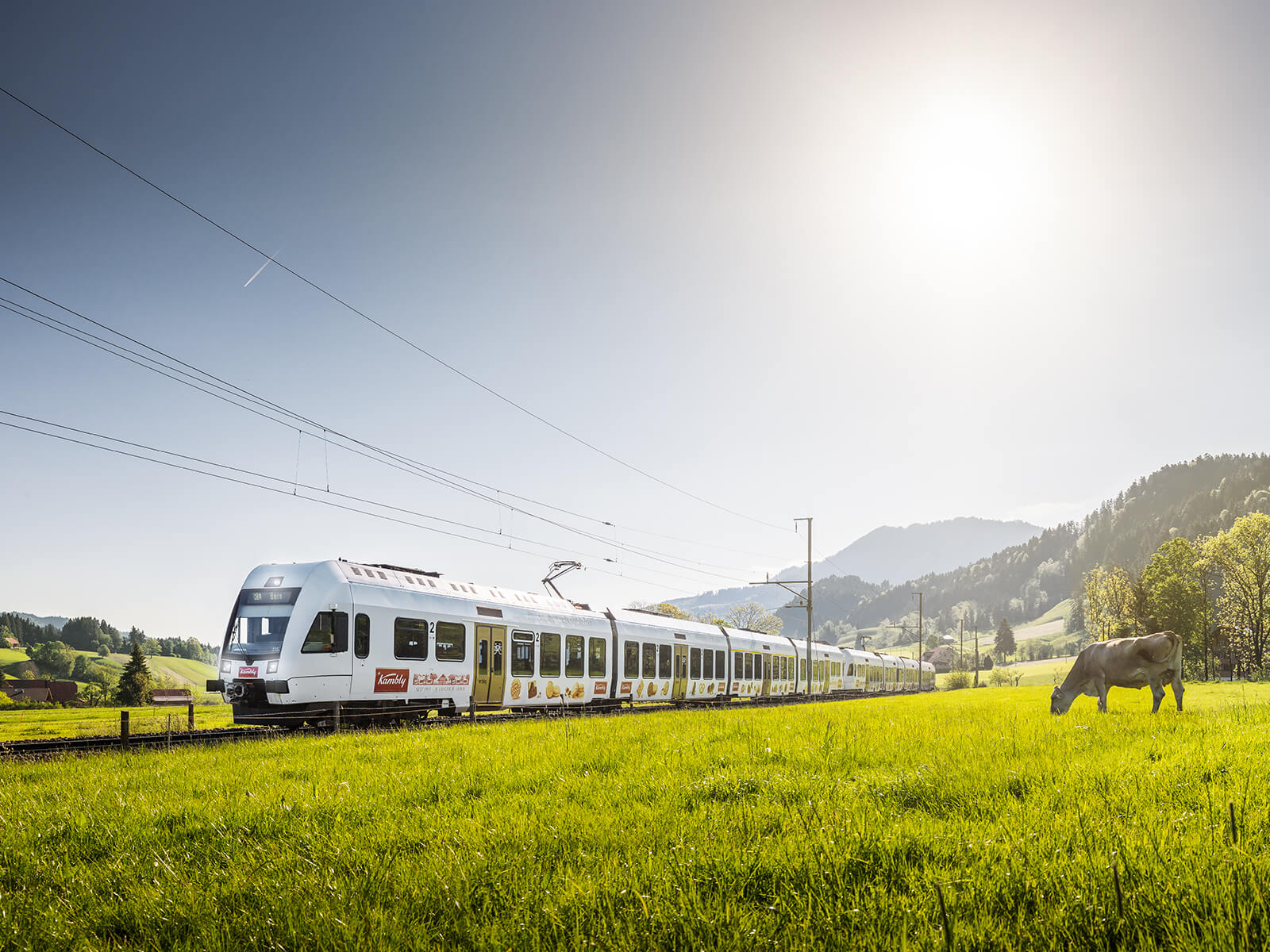
International High-Speed Trains
Thanks to a dense network of international trains, Switzerland is conveniently connected to European destinations. Cutting-edge high-speed trains provide amenities to ensure a comfortable and convenient journey. Business travelers will appreciate the on-board business centers equipped with power outlets and Wi-Fi. Those looking to unwind will appreciate the bistro coaches and restaurant cars - some of which even serve local specialties from the carrier’s country.
International high-speed trains from Switzerland:
- EuroCity: Bologna, Genova, Milan, Venice
- ICE : Berlin, Dortmund, Frankfurt, Hamburg, Hannover, Mannheim, Munich, Stuttgart
- RailJet : Bregenz, Graz, Innsbruck, Salzburg, Vienna
- TGV Lyria: Paris, Marseille
Interactive map of international train connections to Switzerland
Overnight Trains in Switzerland
Thanks to a growing network of overnight trains across Europe, you can see a musical and put on your PJ in Amsterdam, then sip your morning coffee in Zurich.
The increasing demand for climate-friendly travel alternatives has launched a rebirth of overnight train connections. They provide a comfortable way to travel to and from Switzerland - with significantly fewer emissions than airplanes.
Overnight train compositions come in different setups. There are sleeper cars with private compartments featuring beds, sinks, and breakfast service. Sleeper car compartments have space for one to three persons. Deluxe rooms include a shower and toilet.
So-called couchette cars have compartments with four to six bunk beds and shared facilities.
Women-only sections, plus family-friendly and accessible compartments, are available. And finally, overnight trains have regular coaches with seating.
Overnight trains and destinations from Switzerland:
- ÖBB EuroNight: Budapest, Dresden, Leipzig, Ljubljana, Prague, Vienna, Zagreb
- ÖBB Nightjet: Amsterdam, Berlin, Cologne, Hamburg
- From 2024: Barcelona, Rome
Interactive map of overnight trains in Switzerland
The Grand Train Tour of Switzerland is the ultimate train journey through the heart of Switzerland. This round trip offers a complete and comfortable experience, taking visitors to the country's most popular sights and landmarks.
Along a staggering journey of 1280 km, train lovers can check the top experiences of Switzerland off their bucket lists. Consider it “two birds with one stone”: an epic train journey to highlights such as Lucerne, impressive natural spectacles like the Rhine Falls, and majestic peaks like the Matterhorn.
The Grand Train Tour of Switzerland passes no less than 11 lakes and includes five panoramic train lines, making it a unique and unforgettable Swiss train journey. This experience is available year-round, and you can start and finish your journey wherever it is most convenient.
The Grand Train Tour of Switzerland is divided into eight sections:
- Zurich – Lucerne – Interlaken (131 km, 2:45 h)
- Interlaken – Montreux (120 km, 3:15 h)
- Montreux – Visp – Zermatt (148 km, 2:30 h)
- Zermatt – Chur – St. Moritz (291 km, 7:45 h)
- St. Moritz – Tirano – Lugano (183 km, 6:30 h)
- Lugano – Flüelen – Lucerne (182 km, 5:30 h)
- Lucerne – St. Gallen (125 km, 2:15 h)
- St. Gallen – Schaffhausen – Zurich (133 km, 2:30 h)
Download the Grand Train Tour of Switzerland map
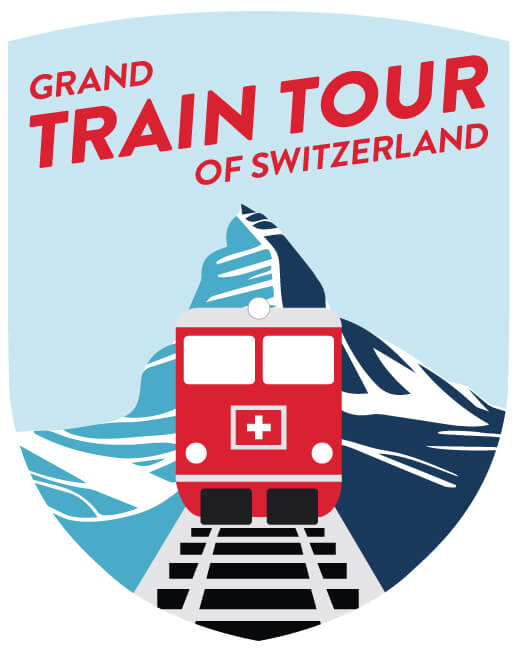
Switzerland's train system is like a journey through a storybook, with popular routes like the Glacier Express as the main chapters. Each route offers a different tale, taking passengers across historic viaducts and past mighty glaciers. Whether you're a railway enthusiast or simply looking for a scenic way to travel, Switzerland's trains provide an immersive soundtrack for your journey.
Most Popular Train Lines in Switzerland
The Glacier Express , often heralded as the world’s slowest express train, wins our nomination for the most popular train line in Switzerland. It is regularly booked down to the last seat, treating the lucky passengers to a visual extravaganza through the large panoramic windows.
Here are other popular train lines in Switzerland that we have covered in detail:
Switzerland Train Itinerary for Rail Lovers (2024)
How to travel switzerland by train in 5 days, lesser-known train lines in switzerland.
Switzerland is a dream destination for railway enthusiasts. Apart from the usual suspects, there are numerous lesser-known train lines in Switzerland.
Alpine Cruise: We had the pleasure of experiencing the Alpine Cruise train experience that winds through the canton of Graubünden. The idea is that your luggage is shipped from one hotel to the next - just like on a cruise ship. Meanwhile, you get to travel on the iconic red trains of Rhaetian Railway to places like Bergün, Chur, Davos, or St. Moritz. At the end of each day, simply check into the hotel at the destination.
Centovalli Line: For those looking to explore the Italian-speaking region, the Centovalli Line is a must-do. This route runs between Locarno and Domodossola and offers breathtaking views of the Centovalli region, including the famous Centovalli viaduct.
Chemins de Fer du Jura: This hidden gem of a train line passes through the sparsely populated Jura plateau. Between Glovelier and La-Chaux-de-Fonds, the narrow-gauge train stops in many small towns, each presenting a new chance to enter one of the many hiking trails.
Léman Express: This relatively recent train connects Geneva to the cities of Lausanne, Nyon, and Gland. It’s unique in that the Léman Express passes the vineyards of Lavaux and even crosses the border into France.
Planning a Train Trip in Switzerland
When planning a trip by public transportation, it's important to consider that the Swiss rail network is extensive. Planning the itinerary in advance helps ensure the most effective use of your time (and money.)
Some random hints for planning a train trip:
- The Swiss Travel Pass is synonymous with unlimited travel on the Swiss public transportation network. Activate it and forget about it while you transfer from trains to buses, and from boats to mountain railways.
- Make seat reservations in advance if you plan to travel during peak travel season, generally from April to September.
- Unlike most of the world’s train stations, Switzerland’s train platforms are freely accessible by anyone - even without a valid ticket. There are no turnstiles or ticket gates whatsoever.
- Ticketing on Swiss trains is based on an honor system where it is assumed that each traveler has a valid ticket when boarding a train. During random checks, travelers have to be able to produce a fare card or travel pass, or else they will be fined.
- Conveniently ship your luggage from one hotel to the next. This service is not very expensive and gives you flexibility during the day.
Switzerland Train Map
The official Switzerland train map is updated annually by Swiss Federal Railways. Available in print or digitally, the Switzerland train map is the most comprehensive overview of Switzerland's train network. A single Swiss map contains all train stations, major and minor train lines, mountain railways, and even boat lines.
Access the Switzerland Train Map
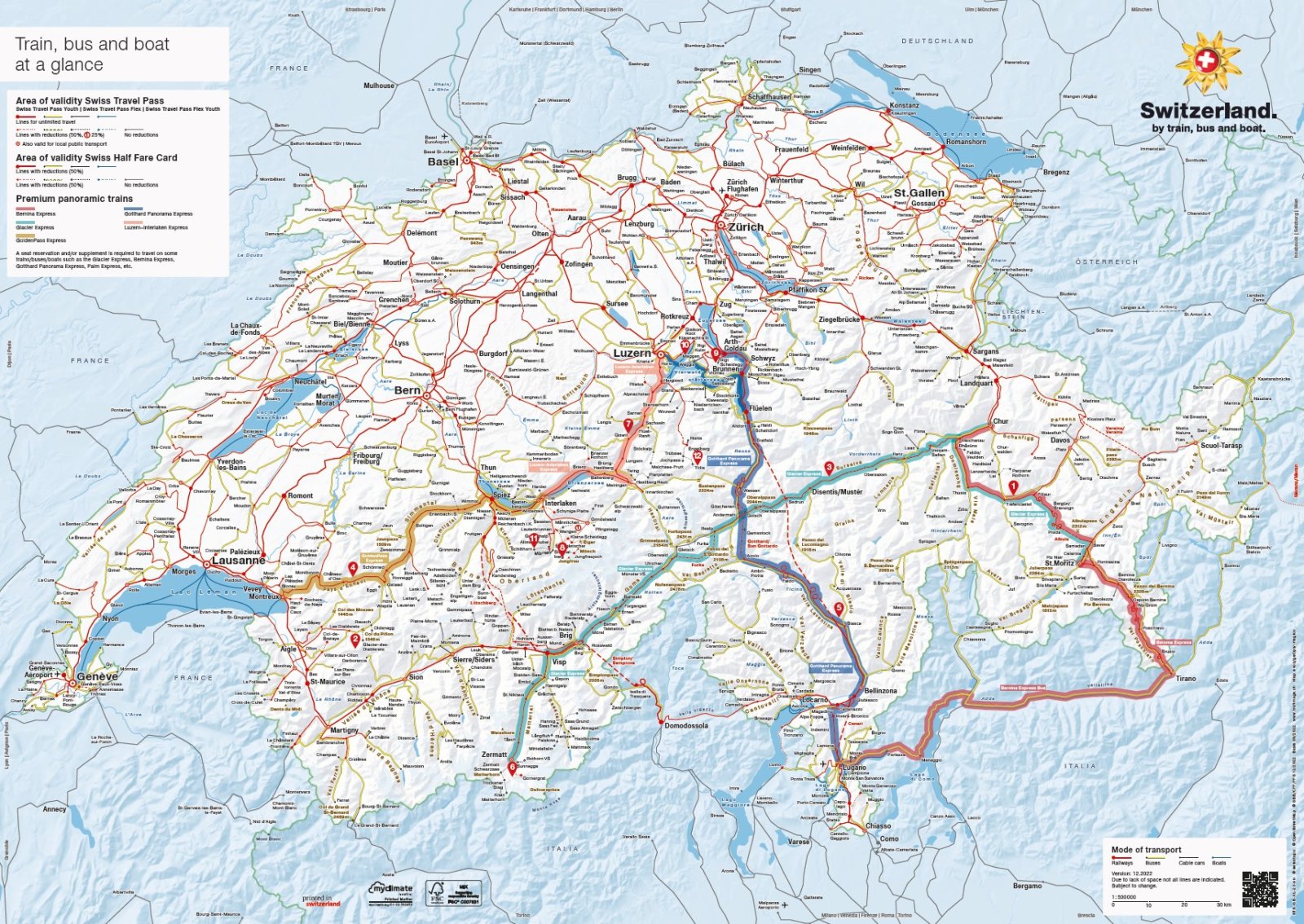
Train Companies in Switzerland
Their trains and coaches can be recognized by the abbreviation “SBB CFF FFS.” These abbreviations cover three of the four languages of Switzerland, but they all stand for Swiss Federal Railways:
- SBB: Schweizerische Bundesbahnen
- CFF: Chemins de Fer Fédéraux Suisses
- FFS: Ferrovie Federali Svizzere
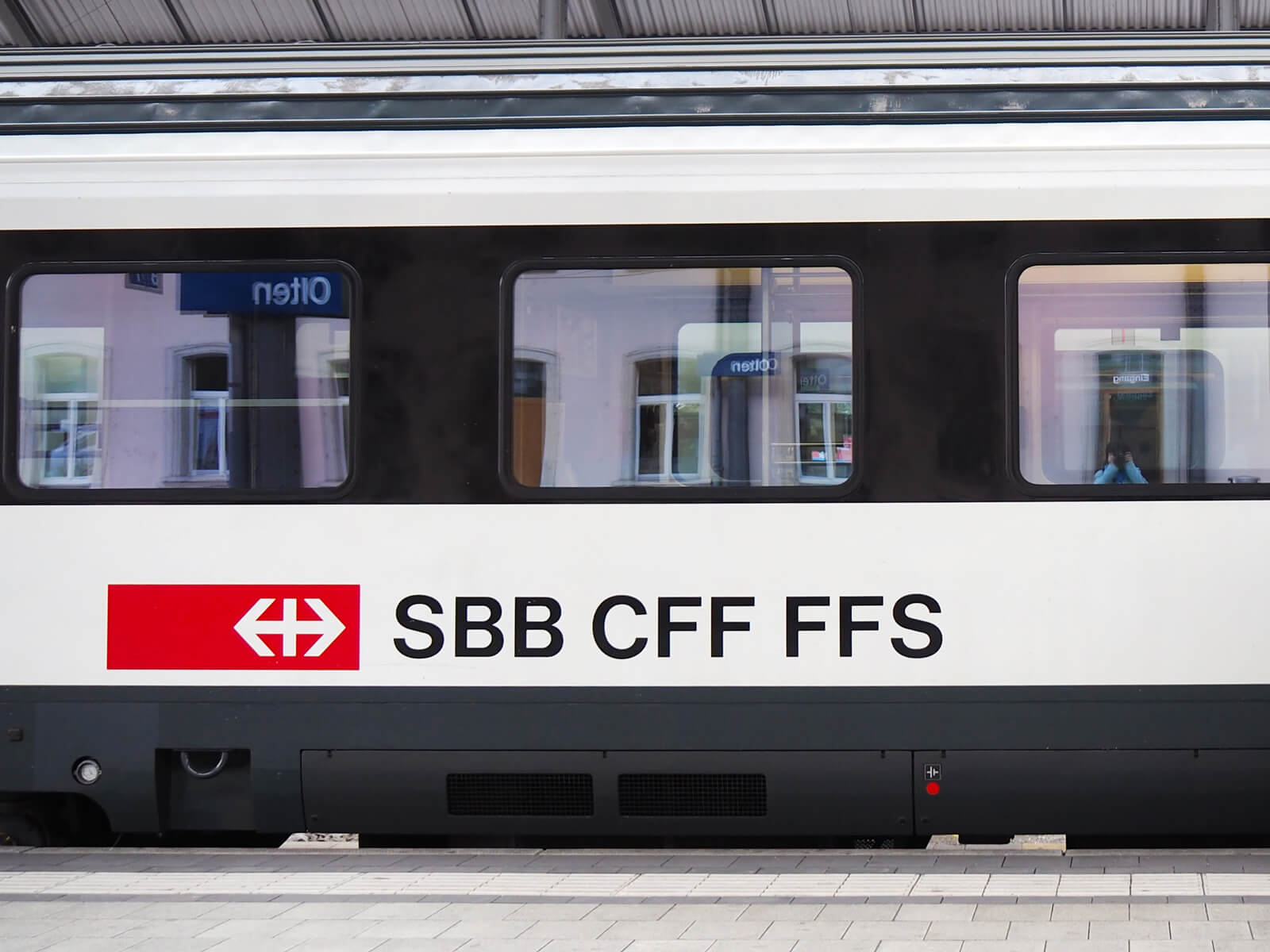
In addition, a few other companies cover large areas of Switzerland, such as BLS and SOB. Finally, several regional lines provide connections from hubs to smaller train stations.
Notable train companies in Switzerland:
- Appenzeller Bahnen
- Berner Oberland-Bahn
- Bern-Lötschberg-Simplon (BLS)
- Chemins de fer du Jura
- Montreux-Oberland-Bernois (MOB)
- Matterhorn Gotthard Bahn (MGB)
- Rhätische Bahn (RhB)
- Schweizerische Südostbahn (SOB)
- Zentralbahn
Travel Classes on Swiss Trains
Swiss trains offer two main travel classes: first class and second class. The primary distinction between the two classes is the level of comfort and available onboard amenities.
Second-class coaches are rather nice, with cushioned seating arranged in sets of four. Most seats do not have dividing armrests, which removes some privacy. Especially during peak travel times, such as during weekday commuting or on Fridays and Sundays, second-class coaches can get quite crowded. As a result, seats are not always available.
First-class coaches on Swiss trains offer more comfort and privacy. For one, they are roomier with fewer seats per carriage, but each seat features more space and ample legroom. Armrests between seats provide more privacy. Other amenities include power outlets for every seat and business sectors for working in a quiet environment.
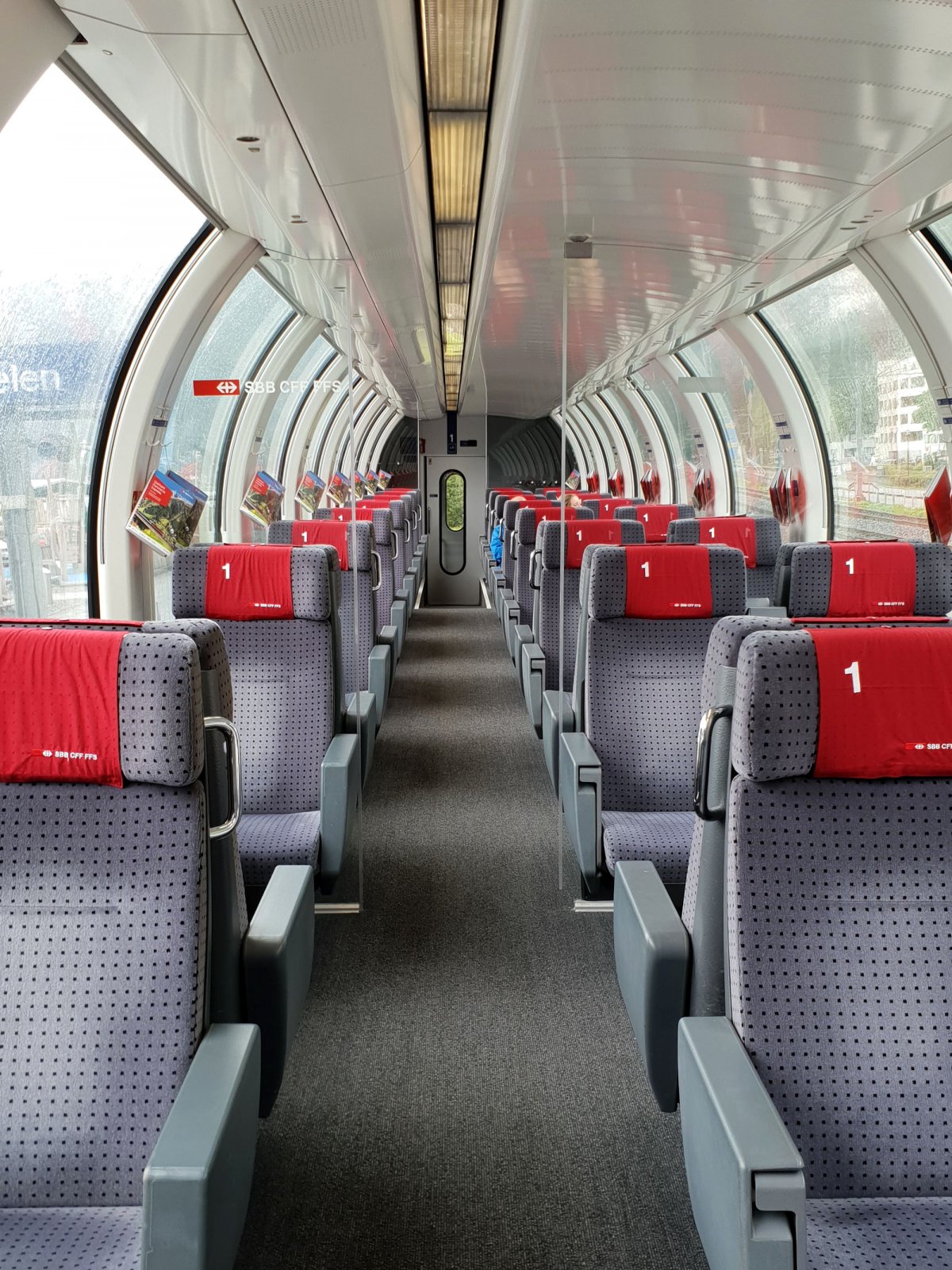
Information about the sectors where first and second-class coaches are located on a given train is shared on overhead boards or over the loudspeaker. First-class coaches might not be available on some private train lines, and amenities vary by type of train.
Tickets and Train Passes
There are a range of options for planning train travel logistics in Switzerland. Some visitors may prefer to look up all the destinations on a map and buy individual point-to-point tickets for each leg. Others prefer the blanket coverage of a travel pass. Here is an overview of Switzerland's various tickets and train passes.
Point-to-Point Tickets
Point-to-point tickets can be purchased at the train station ticket booths and vending machines, on the train company's website, or in the official SBB mobile app.
While this approach may be the ultimate money-saving option in Switzerland, it is unlikely to be the most efficient. It is also not the most flexible way because the regular point-to-point tickets require you to follow a schedule.
Regional Passes
Regional passes are an ideal alternative for those travelers who plan on spending most of their time in a particular region, such as Central Switzerland or the Bernese Alps.
Some regional passes offer free transportation coverage for the entire pass duration, while others restrict free travel days but offer discounts on the remaining days. They are available to both residents of Switzerland and visiting tourists.
Swiss Travel Pass
The Swiss Travel Pass presents the ultimate option. Unlike single tickets or regional passes, it provides unlimited blanket coverage for most Swiss public transportation for a pre-determined number of travel days. The “hop on/hop off” nature of the pass is perfect for those who want to stay flexible.
The Swiss Travel Pass includes most trains, buses, and boats in Switzerland. Five top-tier panoramic train lines and any trains operated by Switzerland’s major carriers are covered entirely.
Buy a Swiss Travel Pass at GetYourGuide
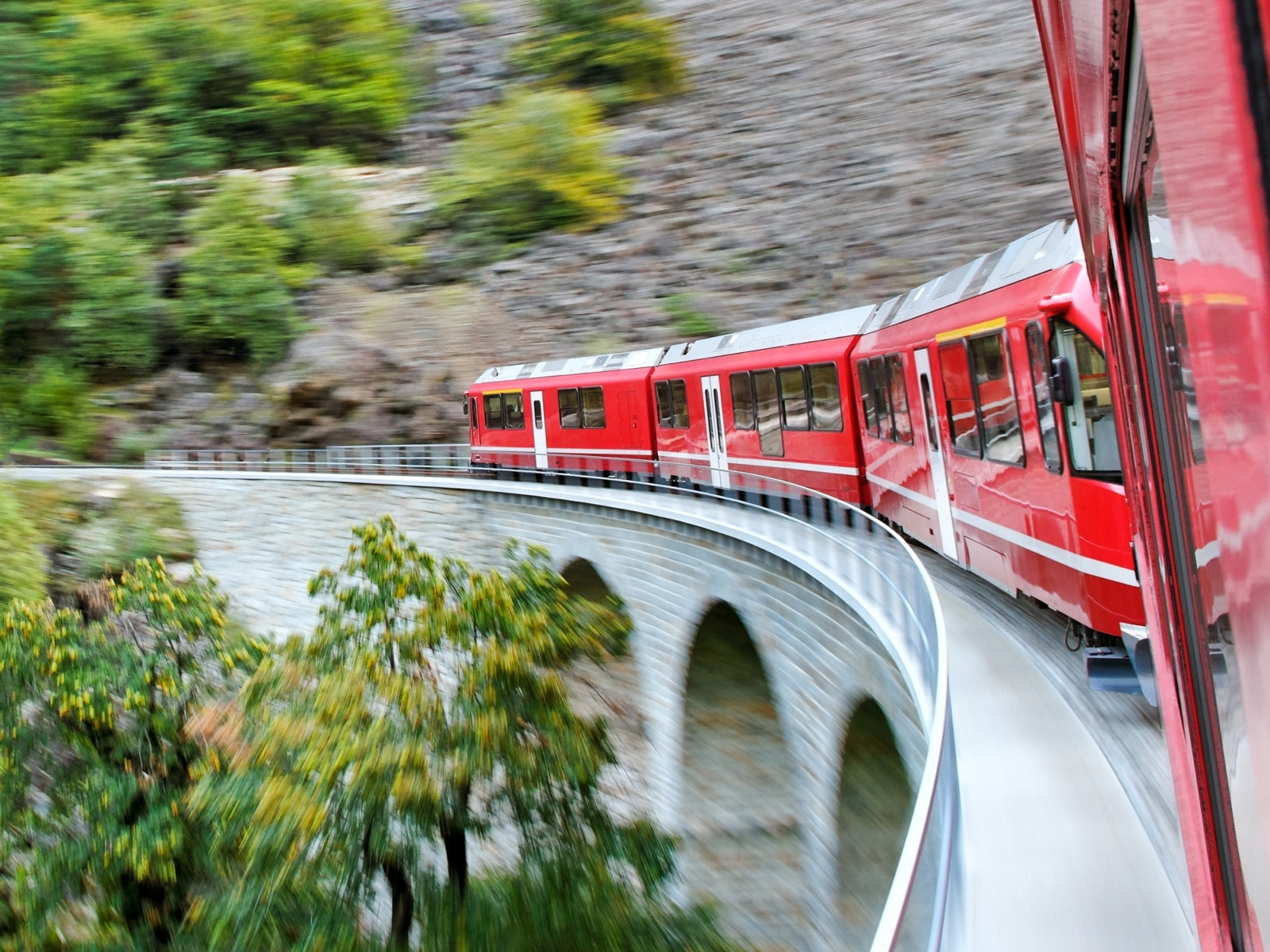
Benefits of the Swiss Travel Pass in 2024
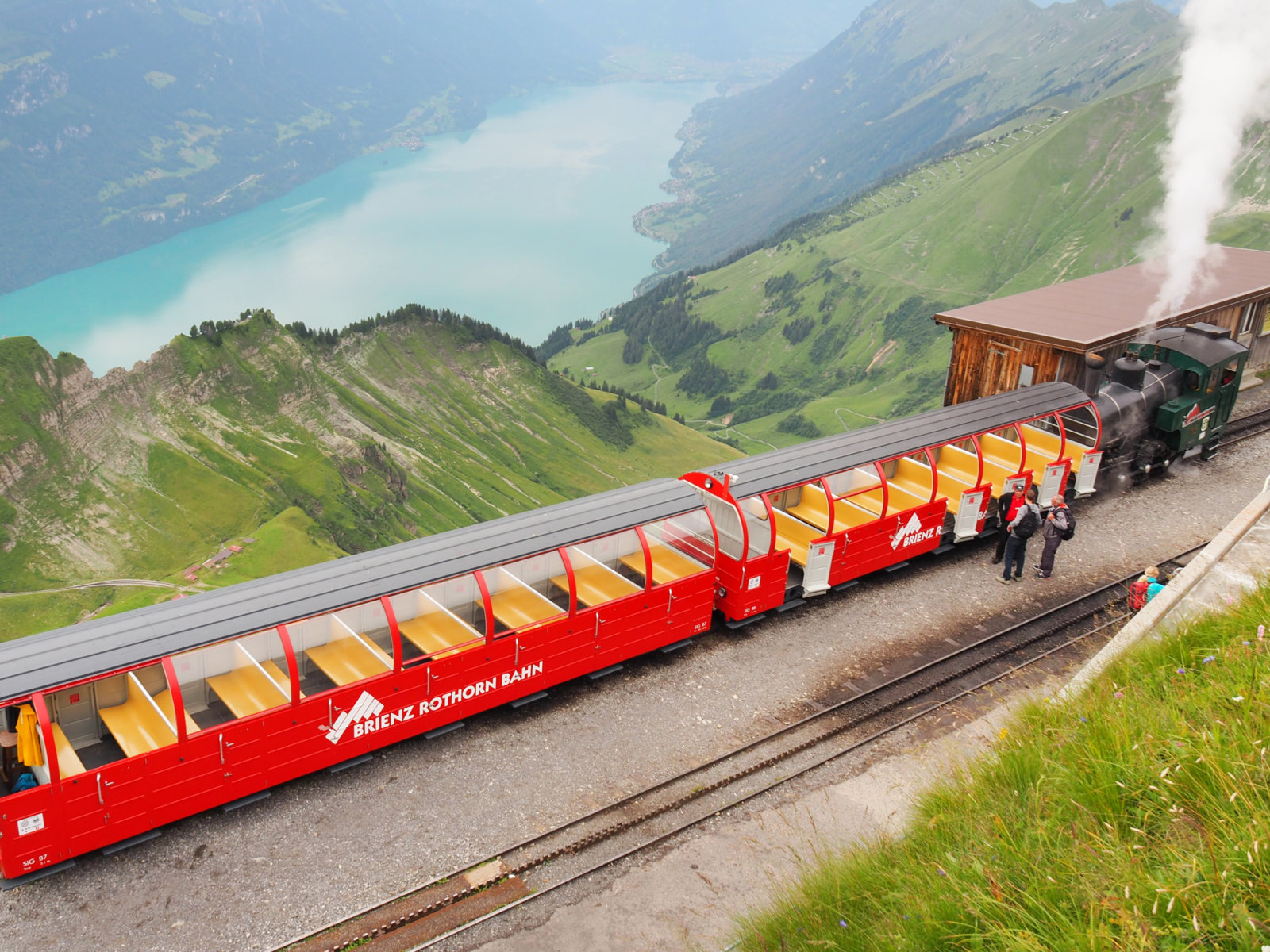
Swiss Travel Pass Overview and Insights for 2024
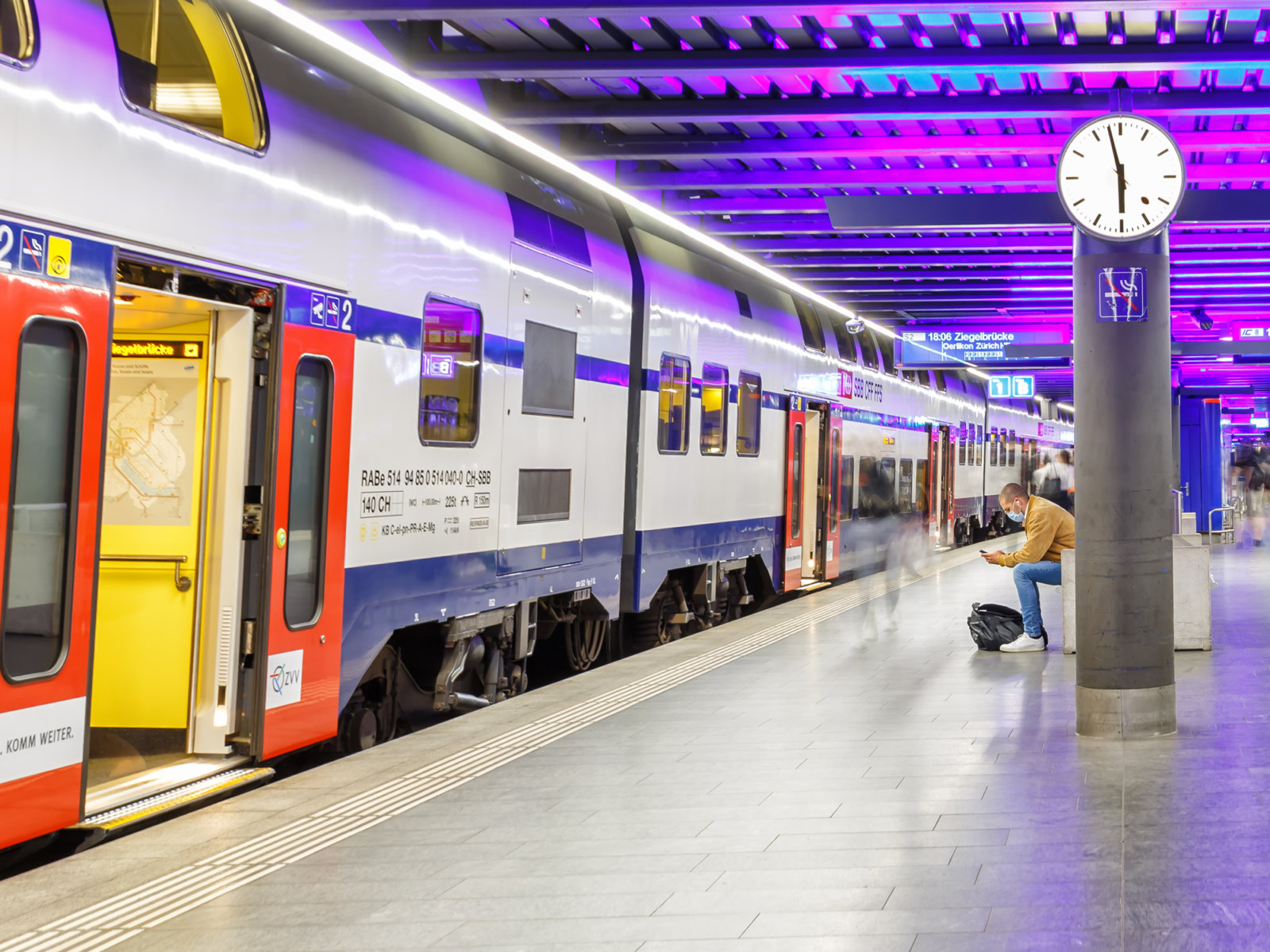
Swiss Travel Pass FAQs: Helpful Answers for 2024
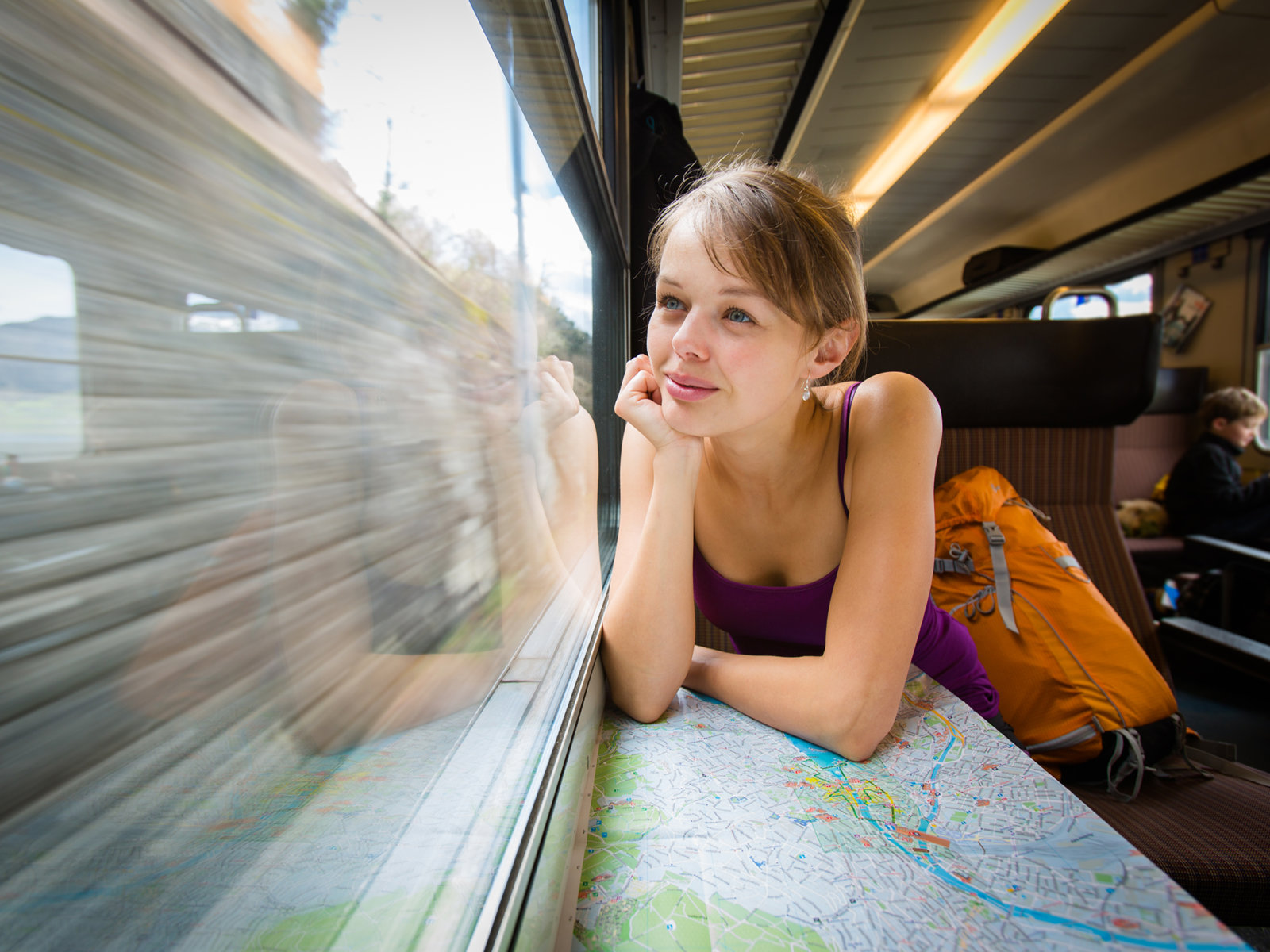
Is the Swiss Travel Pass worth it in 2024?
Get our ultimate free guide swiss travel pass: how to make it work in 2024.
The free guide includes a round-trip itinerary starting in Zurich for budget travelers. It “hacks” a three-day Swiss Travel Pass to make it last for a five-day stay…
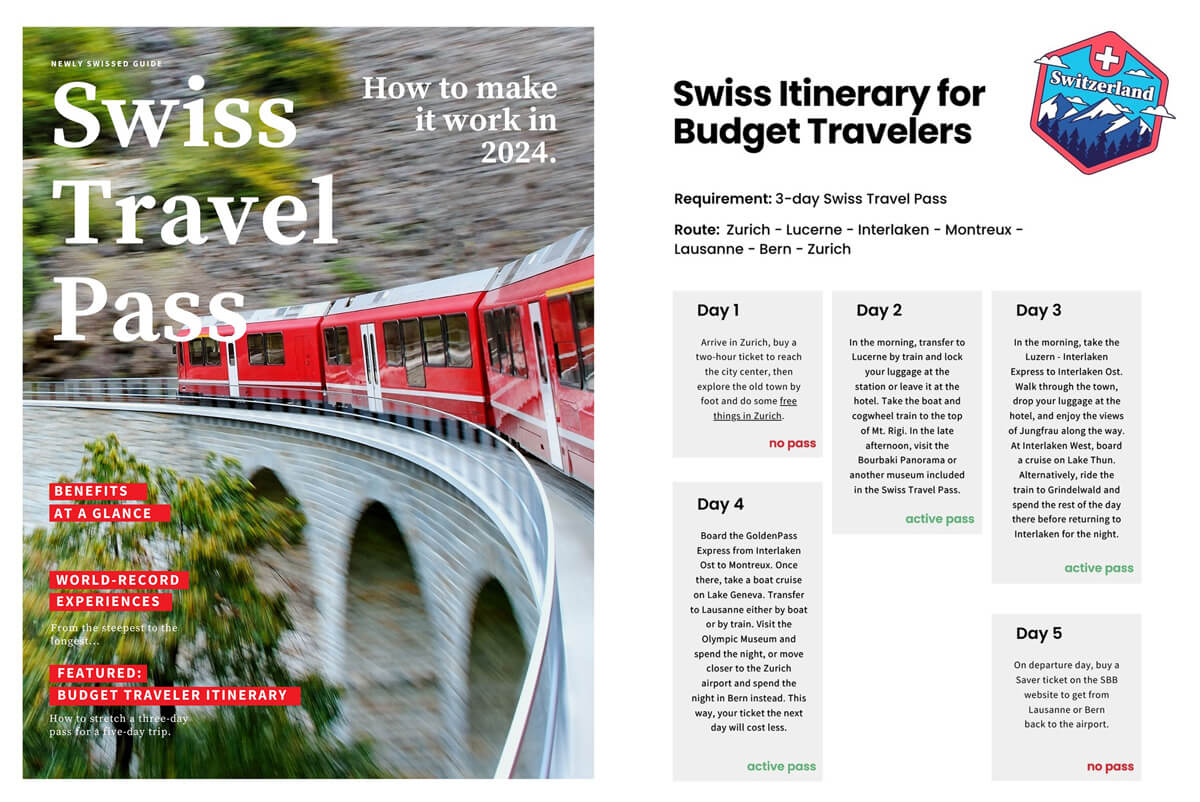
Digitally savvy and flexible travelers can uncover saver fares in the SBB Mobile app. These individual tickets are contingent on a particular date and train connection, but they offer the cheapest way to travel by train. Travelers who wish to remain flexible regarding train connections may prefer the Swiss Travel Pass. Using included mountain railways, boat cruises, and museums, they could maximize the upfront cost and come out cheaper than with individual tickets.
The cost of train tickets in Switzerland can vary depending on the type of train and the route. Regional trains tend to be the most affordable, while scenic trains like Glacier Express can be more expensive. Many Swiss subscribe to the Swiss Half Fare Card, which reduces the price of individual train tickets by 50 percent.
Yes, discounts are available for train travel in Switzerland. On the one hand, discounts may be available for children, students, and senior citizens. It is also possible to purchase a Swiss Half Fare Card, which allows for a 50% discount on most train tickets. And finally, the SBB Mobile app and website offer limited saver fares for particular connections - usually during midday.
Yes, train tickets can be purchased in advance in the SBB Mobile app, on the Swiss Federal Railways website, or through a travel agency. Advance purchases can often result in lower fares. Look out for discounted tickets labeled with a percentage sign on the SBB website; they can result in significant savings.
Seat reservations are not required for most intercity and regional trains in Switzerland. However, reservations are recommended for scenic trains such as the Bernina Express and are mandatory on the Glacier Express.
Yes, it is possible to travel by train with a bike. Bicycles can be taken on most trains by paying an extra fee . On some trains, it is mandatory to make a prior reservation for bicycles as space is limited during peak seasons.
Except on mountain railways, first-class seating is available on all trains in Switzerland. First-class compartments usually provide more comfortable seating and more space. Some trains, such as the GoldenPass Express , offer a VIP section with oversized panoramic windows and private-jet quality seating.
Switzerland is considered safe for rail travel, but CCTV cameras are generally on most trains. In the case of an emergency, the onboard emergency button will alert the train driver and the nearest police station. As anywhere in the world, savvy travelers will always watch their luggage. Here are additional precautions and resources for safe traveling in Switzerland .
Purchase the Swiss Travel Pass online at the most reputable vendor starting at CHF 244. You will receive an immediate email confirmation with a PDF ticket.
PLEASE Pin OUR EXPERT GUIDE!
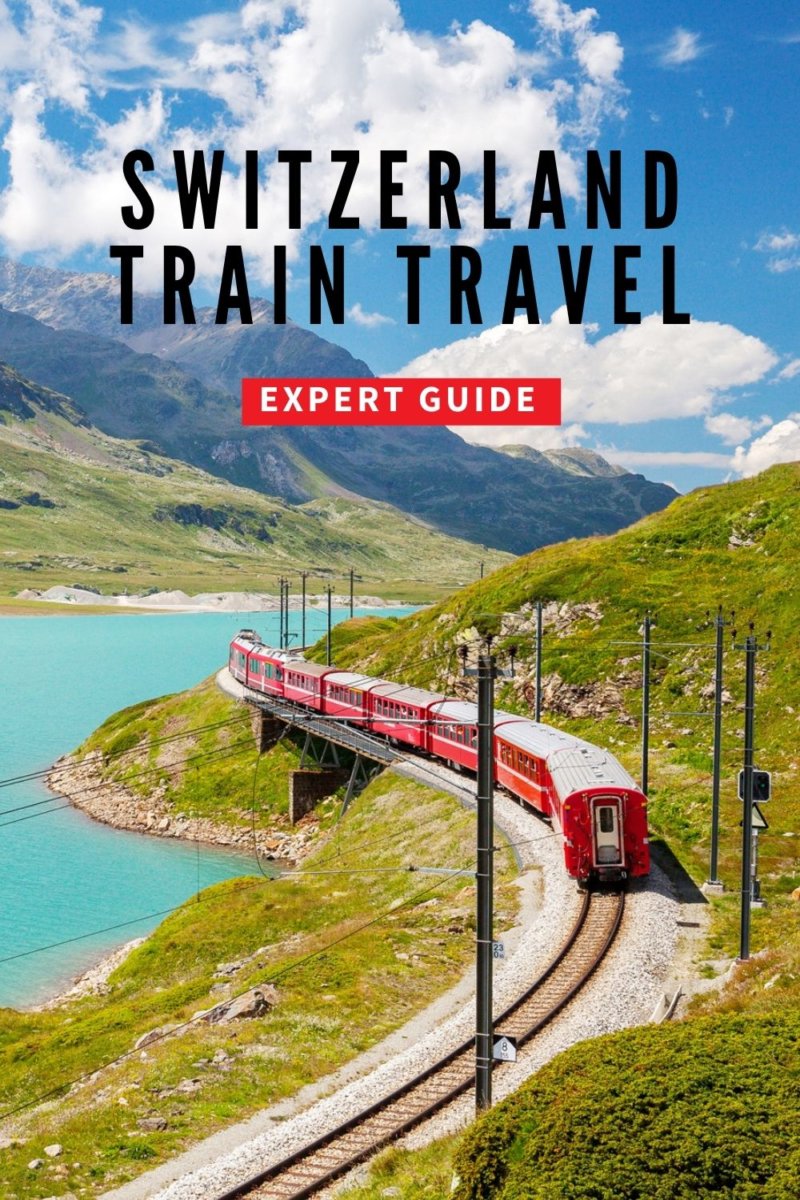
Newly Swissed GmbH Langrütistrasse 1A, 8635 Dürnten Switzerland +41 78 949 03 53
Copyright © 2024 - Newly Swissed GmbH. All rights reserved.
- Everyday Life
- Food & Wine
- Travel & Tourism
- Book Reading
- Concert/Dance/Musical
- Food/Gourmet
- Stand-up/Theater/Movies
- Workshop/Seminar/Tour
- Add an Event
- What We Like
- Meet the Team
- Press Coverage
- Advertising
- Contact us or book us
Download our e-book: 77 Facts about Switzerland

11 Cheapest Ways To Travel Switzerland On A Budget [2024]
- Post author: Nicoletta
- Reading time: 38 mins read
- Post last modified: March 4, 2024
- Post comments: 0 Comments

Many people think that traveling in Switzerland is incredibly expensive. That is why they eventually decide to spend a day in Zürich and walk away. However, such a decision only convinces them that Switzerland is an expensive country.
It doesn’t necessarily have to be true if you can find your way . I visited Switzerland for the first time in a month and saved significant money. After that, I lived there for 3 years and found many ways to cut your expenses .
So, in this article, I’ll reveal the 11 cheapest ways to travel to Switzerland on a budget and explore as much of this stunning country as you want.
11 Cheapest Ways To Travel Switzerland On A Budget: Quick Guide
Here is a quick list of the cheapest way to travel in Switzerland for you:
- Get Swiss Travel Pass
- Purchase Half-Fare Card
- Get Saver Day Pass
- Buy Single Train Tickets Online In Advance
- Get Regional Passes
- Plan Your Itinerary
- Go Camping/Hostels
- Stay In A Local Family
- Avoid Restaurants
- Find Local Markets
- Bring Your Water Bottle
✈ Travel Resources For Your Trip ✈
Here are some of my favorite travel resources I use for my travel adventures.
1. Get Swiss Travel Pass or Swiss Travel Pass Flex
The most important thing is getting a travel pass to see Switzerland. Never pay for a single ticket unless you buy it at a specific place for less or just need to make a single train ride.
With a travel pass, you’ll save up so much in Switzerland.
Swiss Travel Pass
If you want to travel to Switzerland for a longer time (at least 5 days) and see different places (at least 5), the best way to save up is to purchase a Swiss Travel Pass .
This Pass is available for 3, 4, 8, or 15 days . All trains, buses, boats , and public transportation in cities are included in the Pass.
You can choose between 1st and 2nd class . If you are young, below 26 years old , your Pass will be considerably cheaper than for an adult (26 years and above).
Depending on the number of days you choose, you must travel on consecutive days with a Swiss Travel Pass.
Swiss Travel Pass Flex
Swiss Travel Pass Flex works the same as the Swiss Travel Pass. The only difference is that you can use the flex one on the chosen number of days within a month . In comparison, the Swiss Travel Pass has to be used on consecutive days.
Traveling with a Swiss Travel Pass in Switzerland is suitable for a longer itinerary .
Follow my 8-day Switzerland itinerary , which is designed to travel with a Swiss Travel Pass. Get the most out of Switzerland and your Swiss Pass, and save a lot.
👉 READ ALSO: Is Swiss Travel Pass Worth It?

2. Purchase Half-Fare Card
Half-Fare Card is another great way to travel to Switzerland on a budget. It’s very similar to the Swiss Travel Pass Flex and can be a cheaper option in some cases.
If you want to travel to Switzerland for a few days and visit only specific places on your bucket list, the Swiss Half-Fare Card can be the best deal for you.
It costs 120 CHF for a month of travel in Switzerland. Once you have it, you’ll get 50% off every train , bus , boat , and cable car ride .
➡ Book your Half-Fare Card For Switzerland here.
Comparison 4-Day Swiss Itinerary (Half-Fare Card vs. Swiss Travel Pass)
Let’s say you have an itinerary for 4 days in Switzerland. And you only want to visit Lucerne , Interlaken , Jungfraujoch , Montreux , Zermatt , and Gornergrat .
If you calculate costs for all train rides and mountain excursions for this itinerary, you’ll see that having Half-Fare Card will be cheaper than having a Swiss Travel Pass. I calculated it, and it was around 150 CHF cheaper with Half-Fare Card.
So the longer you travel and the more places you want to visit , the better value the Swiss Travel Pass brings.
If you have a shorter itinerary and a few specific places to tick off your Swiss bucket list, Half-Fare Card will be more economical for your trip.
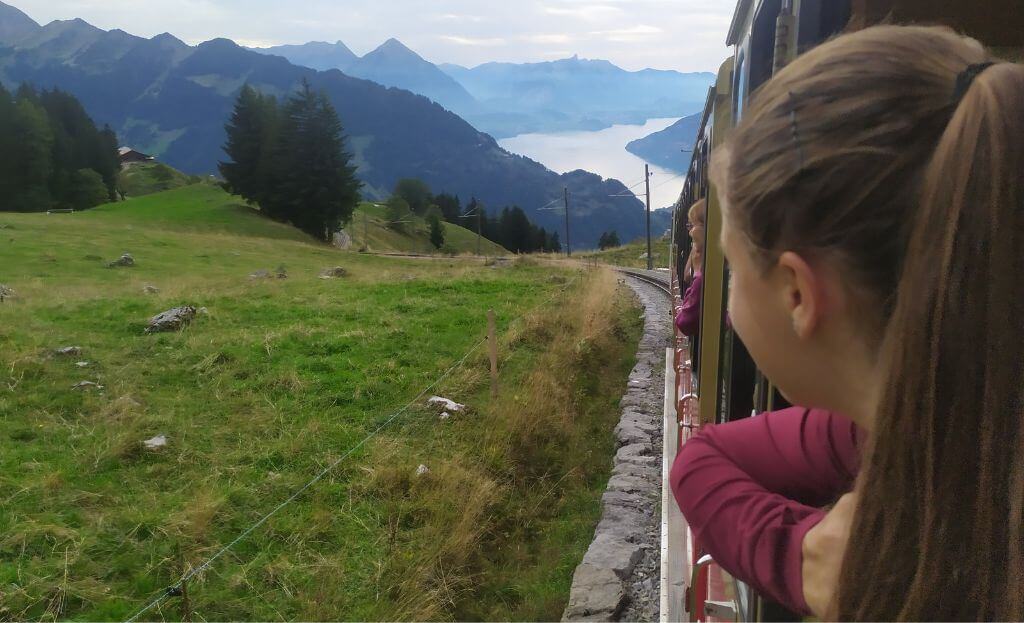
3. Get Saver Day Pass
If you only have one day in Switzerland , the best deal you can get is the Saver Day Pass. It’s a pass that you can use for all trains, buses, boats, and public transportation in cities in Switzerland. However, it’s not valid for mountains in Switzerland .
Let’s say you’re in Paris and want to visit Switzerland for a day . You arrive in Zurich and want to travel to Lucerne and take a boat ride on a Swiss Lake . After, you’ll stay overnight in Switzerland and leave the country the next day . In this case, Saver Day Pass will be the cheapest way to travel to Switzerland for you.
You can buy it on the official SBB website .
PRO TIP: The more in advance you buy the Saver Day Pass, the cheaper it gets.
👉 READ ALSO: Trains From Paris To Switzerland: Comprehensive Guide Fastest Way From Paris To Zermatt

4. Buy Single Train Tickets Online In Advance
If you only have to take a single train ride in Switzerland, there are two ways to travel on a budget . Get the SBB App and buy your ticket in advance through the app. It usually has cheaper train tickets .
➡ Check the Trainline website for the best deals.
I lived in Switzerland for 3 years . I got a seasonal/regional pass for every season to explore the places I wanted to. However, this pass wasn’t valid for train connections to other Swiss cities. So whenever I had to travel to other parts of Switzerland, I got my ticket on Trainline . It saved me hundreds of money.
So check it out, buy your single ticket online, save it to your phone , and travel. Have an ID or passport with you as they’ll check it on the train .
5. Get Regional Passes
If you only want to explore a specific region in Switzerland , the cheapest way to travel on a budget is to get a regional pass.
The most popular regional passes in Switzerland are:
- Jungfrau Travel Pass
- Berner Oberland Pass
- Lake Geneva-Alps Pass
- Zermatt Peak Pass
- Davos Klosters Premium Card
With these regional passes, you’ll explore the entire region using trains, buses, boats, and cable cars to the mountains free of charge .
These passes are the best way to explore a specific region if you’re staying longer and want to do at least 3 activities there.
👉 READ ALSO: Which Pass Is Best For Jungfraujoch? Which Pass Is Best For Schilthorn? Revealed! Jungfrau Travel Pass vs. Swiss Travel Pass

6. Plan Your Itinerary
Planning your itinerary always saves your travel costs . Your costs significantly decrease when you’re organized and know what you’ll do and where you’ll go.
For instance, if you purchase the Swiss Travel Pass and intend to see many places, you’ll need an itinerary to get the most out of your pass . The Swiss Travel Pass already saves you a lot, but you can waste it if you don’t plan .
Look up train departure times, boat timetables, and cable car duration, and organize your journey . You can see more within a day than if you don’t plan.
So plan your itinerary, be organized, and get the most out of your trip and a travel pass.
Travel Itinerary Planning Services

7. Go Camping/Stay In Hostels
Accommodation in Switzerland can get expensive. But if you know where to stay, you can travel to Switzerland on a budget and save on accommodation.
One of the cheapest ways to travel to Switzerland is to go camping. However, you don’t specifically have to stay in a freezing tent and be uncomfortable.
Some places have big tents (like a hostel) where you can stay. It has a regular bed, and it’s warm inside. The best is that you’ll save a lot rather than staying in a hotel.
PRO TIP: One such camping tent is located in Matten bei Interlaken . So you can stay there if you want to explore the Jungfrau region.

8. Stay In A Local Family
Another way to save on your accommodation and even get some pocket money is to help a local family and stay with them for a while.
I spent 14 days on a Swiss farm in the mountains above Lake Brienz at the age of 22. I stayed there for free and helped the family make cheese .
Every day, I woke up and fell asleep with stunning views of Lake Brienz. I learned how to make delicious Swiss cheese, helped the family, and got to stay in Switzerland for free.
And I even got some pocket money that I used after exploring Switzerland.
PRO TIP: You can find such stays on the Agriviva website or Workaway .
👉 READ ALSO: How Swiss Cheese Is Made – learn about my experience on a Swiss cheese farm

9. Avoid Restaurants
Restaurants in Switzerland are quite pricy. And honestly, many are average, and the food is not good. Of course, if you want to try Swiss fondue , a typical dish, the way to go is to eat in a restaurant .
However, you don’t have to eat in a restaurant every single time during your trip. Instead, go to a supermarket , make a sandwich, or buy stuff for the day.
You can also picnic in the mountains or near the beautiful Swiss Lakes. And it’ll be a much more enjoyable experience.
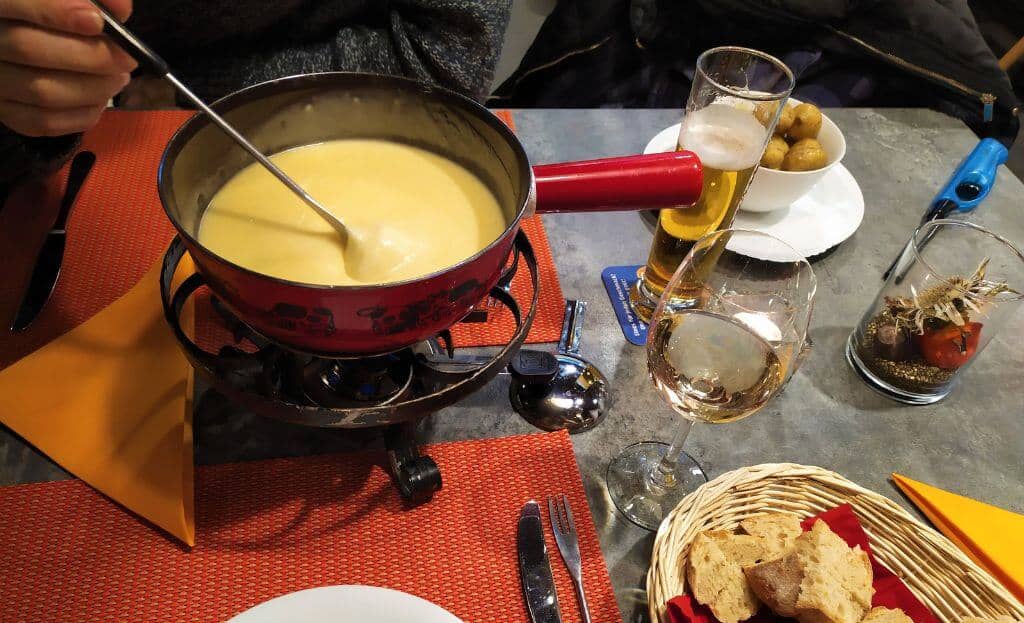
10. Find Local Markets
Some places organize local markets, where you can taste samples of typical food and support local communities . So check the area you’ll visit in Switzerland and whether they organize markets when you’re there.
It’s a cheaper and better alternative to eating in a restaurant.
11. Bring Your Water Bottle
Switzerland has the best water ever . No wonder vast mountains and glaciers surround you. So the water is clean and comes directly from pure nature. So take advantage of it and bring your water bottle.
There is no need to buy bottled water in a supermarket in Switzerland. The best way to go is to drink tap water . Or you can also drink the water from springs when hiking in Switzerland.

👉 READ ALSO: Switzerland In November: Best Things To Do & See
Practical Tips For Visiting Switzerland
I’ve got some further tips to help you plan your trip to Switzerland. See what month is best to come, budget you’ll need, and get my free packing list below:
What Month Is Best To See Switzerland
The best months to see Switzerland are June and September .
In June , everything is beautifully green: hills are full of mooing cows, rivers are full of blue waters from the melting glaciers, mountains are still snowy, and waterfalls are falling off steep rock cliffs. It’s also much less crowded than in the summertime (July & August).
September shines with autumn colors , and Switzerland gets a slight upgrade. It’s a beautiful month; everything calms down after the busy summer season, and the landscape views are spectacular. However, it can snow towards the end of September, but it’s not usual.

What Is The Best Way To Get Around Switzerland
The best way to get around Switzerland is through public transportation : trains , buses, boats, and cable cars . This way, you’ll enjoy the breathtaking scenery and soak in the atmosphere.
The best way to use public transportation on a budget is to purchase a Swiss Travel Pass or a Half-Fare Card . They’ll help you save 50% of your travel costs in Switzerland. Check out the list of cheapest ways to travel Switzerland to learn more about these travel passes.

How Much Should You Budget For A Trip In Switzerland
I’ve created a simple table for you comparing costs in Switzerland or individual travel items. Check it out below so that you know what budget you need for your Swiss trip.
Overall, you’ll spend around 100 Swiss Francs per day if you want to travel to Switzerland on a budget and still enjoy some attractions.
How Expensive Is Switzerland?
I’ve also written a separate article about expenses in Switzerland . It’s a detailed guide on budgeting your trip, how much things approximately cost, and what you can expect. It also covers the cost of living and further useful tips .
Check it out by clicking on the image below :

Get My Switzerland Packing List
Packing for a Swiss trip might be challenging because you have to prepare for all kinds of weather conditions . Nevertheless, I packed everything into a backpack for my month-long trip to Switzerland . And I want to help you with packing.
So get my Switzerland packing list for free, save time, and don’t overpack

I’ve also answered some of the frequently asked questions to help you plan your trip to Switzerland and create the best experience for you. So check them out below.
Is It Possible To Travel To Switzerland On A Budget?
Yes, it’s possible to travel to Switzerland on a budget. The most important thing is to get a travel pass , plan your journey , and avoid eating in restaurants all the time. This is the best way to travel to Switzerland on a budget.
What Is The Cheapest Way To Travel To Switzerland?
The cheapest way to travel to Switzerland is to buy a Swiss Travel Pass , Half-Fare Card , or a regional pass . With travel passes, you’ll save time and see the entire Switzerland.
If you stay in Switzerland longer and want to see many places , buy a Swiss Travel Pass .
If you have a shorter itinerary and only want to check some places off your bucket list, opt for Half-Fare Card . Get a regional pass if you only want to visit a specific region (e.g., Jungfrau region).
How Many Days In Switzerland Is Enough?
Switzerland is a beautiful country and offers many things to do. An optimal number of days to stay is between 8 to 14 days .
8 days is the shortest time to explore the highlights of Switzerland. If you want to see different regions and spend some time hiking, staying 10 to 14 days in Switzerland is best .
How Much Does It Cost To Spend 10 Days In Switzerland?
If you have a 10-day itinerary, plan to spend between 2000 CHF and 3000 CHF for the entire trip. It might seem a lot, but it’s considering that you’ll get the most out of your trip , do all the sightseeing activities and things the country offer, and eat well.
If you’re on a budget , you can plan to spend around 1000 CHF during 10 days in Switzerland.
What Is The Best Way To Tour Switzerland?
The best way to tour Switzerland is by train. Get a Swiss Travel Pass and explore all the corners of Switzerland. The best is to follow the Grand Train Tour of Switzerland on your own to see all the Swiss highlights. This way, you won’t miss anything important and will get the most out of your Swiss Travel Pass.
How To Travel Around Switzerland By Train?
The best way to travel around Switzerland by train is to follow the Grand Train Tour of Switzerland . It’s a designed itinerary by the Swiss tourism board to explore the highlights of Switzerland.
To get the most out of train travel, the best way to get around is to use a Swiss Travel Pass . It’ll give you flexibility, free travel on trains, buses, boats, and cable cars, and save you 50% off your travel costs.
Wrap-Up: 11 Cheapest Ways To Travel Switzerland On A Budget
These are the 11 cheapest ways to travel Switzerland on a budget. I hope it’ll help you plan your Swiss itinerary and get the most out of your trip to Switzerland. Switzerland is not the cheapest country in Europe, but you can significantly save costs .
The most important thing is to plan your journey , choose a good travel pass that suits your travel, and save up on food in Switzerland. This way, you’ll be able to travel Switzerland on a budget.
If you have any questions or need help planning your trip to Switzerland, contact me at info(at)voicesoftravel.com . I’ll gladly help you.
Happy Travels!
More Tips For Switzerland Travel
Looking to visit more places in Switzerland? Check out my related articles:
Best Of Switzerland Itinerary: 8 Days By Train
3 Days In Switzerland: 11 Itineraries For All Travelers & Seasons
Honeymoon In Switzerland: How To Plan Your Romantic Gateway
Best Time To Visit Switzerland
22 Amazing Day Trips From Interlaken
23 Incredible Things To Do In Jungfrau Region
Is Jungfraujoch Worth It? Ultimate Guide
5 Best Panoramic Trains In Switzerland
8 Best Mountains In Switzerland To Visit
Jungfrau Travel Pass vs. Swiss Travel Pass
Swiss Travel Pass: Unlimites Travel In Switzerland
Brienz Switzerland: Best Things To Do & Places To Visit
Grindelwald In Winter: Complete Guide For Your Visit
Does Switzerland Use The Euro? Revealed!
How Swiss Cheese Is Made
Switzerland Vs. Austria: Which Is Better To Visit?

About the author: Nicoletta is a travel enthusiast and passionate language learner. While traveling, she loves to connect with locals using her language skills to learn about new cultures. Look for her skiing, hiking in the mountains, or exploring new destinations as she designs travel itineraries for her clients.
SWITZERLAND : Interested in more articles for Switzerland? Check out my Switzerland Travel Page .

You Might Also Like
![best ways to travel around switzerland Read more about the article Portugal In October: Ultimate Guide With Things To Do & See [2024]](https://voicesoftravel.com/wp-content/uploads/2022/07/Portugal-in-October-1-300x213.jpg)
Portugal In October: Ultimate Guide With Things To Do & See [2024]
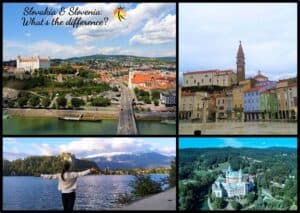
Slovakia And Slovenia: How To Tell The Difference & Which Is Better To Visit In 2024
![best ways to travel around switzerland Read more about the article Where To Stay In Granada Nicaragua: 11 Best Hotels [2024]](https://voicesoftravel.com/wp-content/uploads/2023/03/where-to-stay-in-Granada-Nicaragua-best-hotels-300x213.jpg)
Where To Stay In Granada Nicaragua: 11 Best Hotels [2024]
Leave a reply cancel reply.
You must be logged in to post a comment.

10 Simple Ways to Travel Switzerland on a Budget
Written By: Seraina Zellweger
Switzerland
Updated On: February 8, 2024
Switzerland is expensive. That’s old news. But you can visit Switzerland on a Budget. And be honest. It’s why you haven’t put it on your bucket list yet, right? You’re intimidated by the high prices.
You think you’ll never be able to afford a trip to Switzerland without blowing your retirement savings. You’re nervous you’ll be paying off debts for months to come. But despite all those worries, deep down, you still want to go.
Table of Contents
10 Ways to Travel Switzerland on a Budget
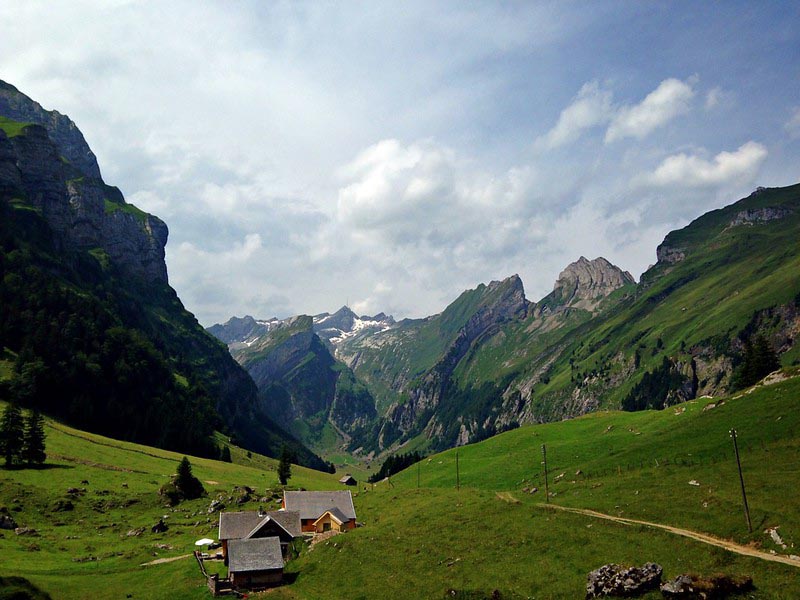
There are plenty of reasons to go to Switzerland . You’ve heard of the breathtaking views. You’re familiar with the taste of Swiss chocolate. You’ve longed for their endless selection of cheese. And you’re just about dying to see the Alps up close. You’ve reached the point where you’re already subconsciously packing your bags .
Wondering whether your trekking shoes still fit you, how much weight you might gain once you give in to your chocolate cravings or whether you need to bring a German, French or Italian dictionary.
If only it wasn’t for that persistent voice at the back of your head. You know, the one that’s keeping you awake at night with a million questions. Read more: 19 Beautiful Places to Visit in Switzerland
- How are you supposed to make it through a single day in Switzerland without robbing a bank?
- Are you going to crawl up in a cardboard box and sleep in a stranger’s backyard just to save money?
- Are you happy to live off instant noodles as you did during that trip to Australia ?
- Do you seriously believe there’s anything free to do in Switzerland?
- What if the emptiness in your savings account forces you to come home after a few days?
The list goes on. But before you let this situation get out of hand, do yourself a favour.
Shut that voice up.
Because first of all, nobody’s going to sleep in a cardboard box. And for the record, robbing a bank is out of question, too. Never mind those instant noodles, either.
Believe it or not, but simple and legal ways to save money in Switzerland do exist. And here are 10 ways to make your money last longer in Switzerland.
1. Use free public transport
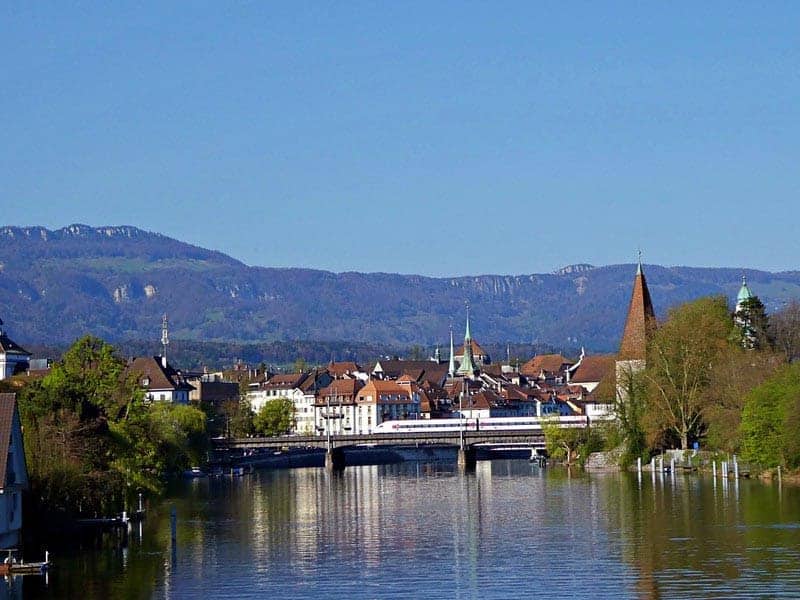
If you’re staying in Bern, Lucerne, Basel , Geneva or Lausanne, you get to use local public transport for free.
Your accommodation provides you with a ticket that’s valid for the time of your stay.
The Canton of Ticino extended this concept and recently introduced what I refer to as the travel-jackpot.
Every visitor spending at least one night in the Canton receives an all-inclusive ticket.
We’re talking about a free ticket here that includes buses and trains as well as a discount for cable cars, boats and selected activities.
More and more cities seem to be joining this concept.
So wherever you’re parked for the night, make sure you hit up your receptionist for potential freebies.
Check out our best Switzerland pictures .
2. Don’t buy a travel pass

Don’t buy a travel pass, at least not until you know your options.
Travel passes can be amazing value for money if you’re going to use public transport. But they don’t always make sense.
To avoid wasting your funds on something you don’t need, set aside some time to do your research.
In order to pick your best match when buying a travel pass, try to answer the following questions as precisely as you can:
- Where exactly do you want to go? What places do you want to see?
- Are you going to cover long distances or mostly stay in the same area?
- How frequently are you going to use public transport? Every day? Every second day? Only once or twice during your whole stay?
- Apart from Switzerland, are you travelling to any other European countries?
Once you have those answers, start digging.
Figure out whether buying tickets as you go, getting a Half Fare Card, an Interrail/Eurail Pass, a Swiss Travel Pass or Supersaver tickets work out cheapest for you.
3. Grab a (free) bike
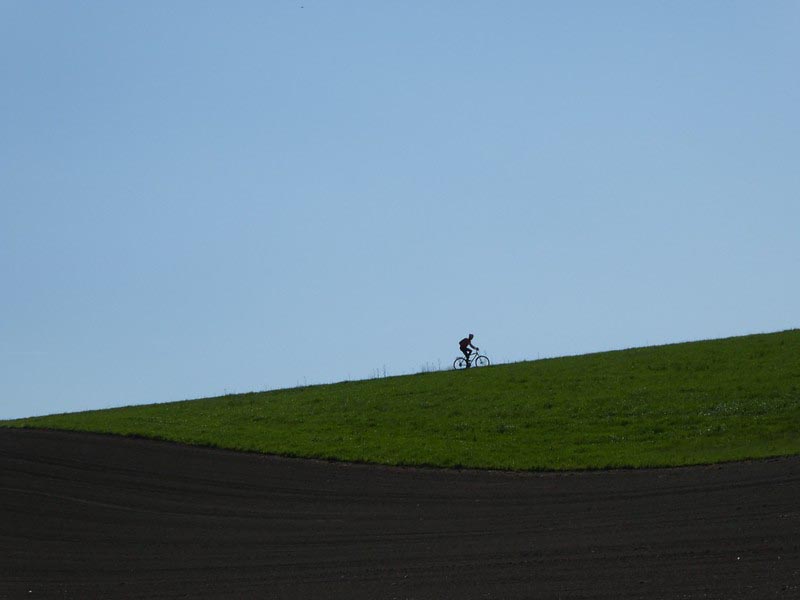
If you’re going to Zurich , Bern, Geneva, Neuchâtel, Zug or the Canton of Valais, you’re in for a treat. Those places offer free bikes.
Some for a few hours, some for a whole day and some even longer.
Bring along your ID and 20 CHF for the deposit.
Other cities rent out bikes as well but not for free.
Depending on your itinerary, it might still work out cheaper than paying for public transport, though.
4. Take matters into your own hands
Unless you desperately want to, you don’t need to book a tour to explore Switzerland.
With public transport being as efficient and plentiful as it is, you’ll be hard-pressed to find a place that isn’t accessible by bus, train or boat.
Buses and trains run frequently so don’t worry about getting stuck anywhere.
However, if you head out to more isolated places, double-check the timetable just to be on the safe side.
5. Put your connections to use
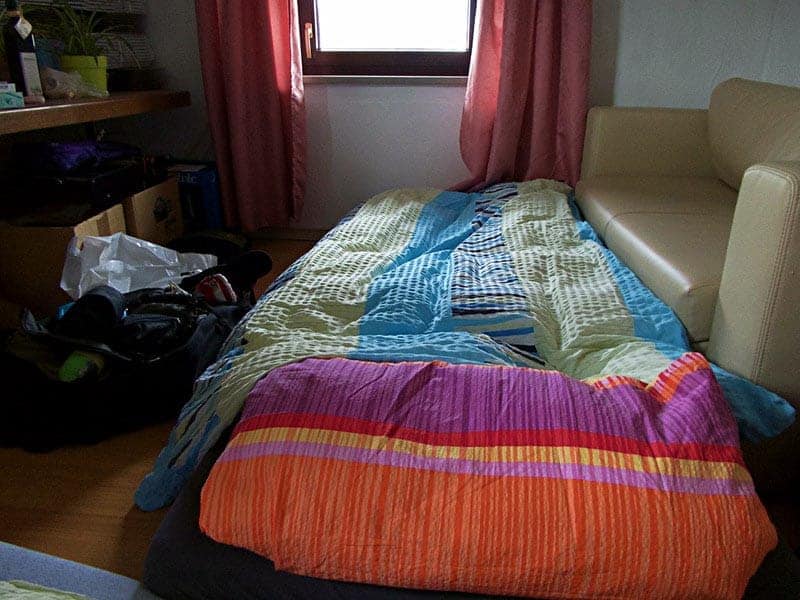
Nothing eases the pressure on a backpacker’s wallet like staying with a friend does.
Saving 30 – 40 CHF on accommodation each night pretty much pays for an all-inclusive Swiss Travel Pass.
And with Switzerland being this small, you can take day trips to almost every corner of the country.
If you don’t have anyone you can contact, try Couchsurfing instead. It’s more common than you’d expect and it’s a fantastic way to get in touch with locals.
6. Sleep above the cows
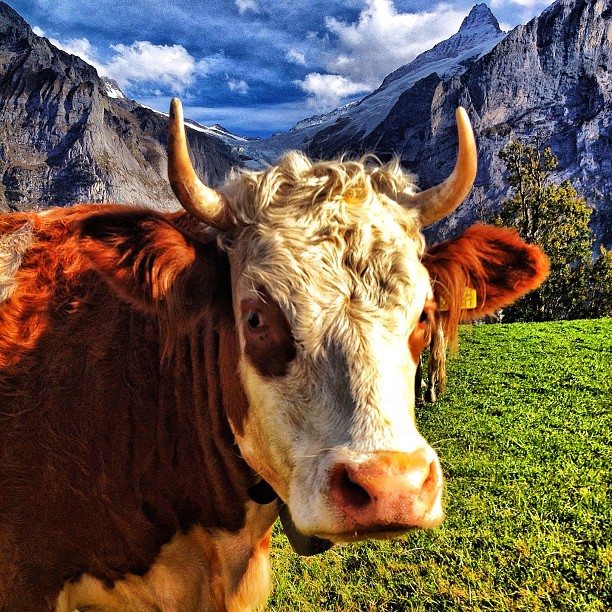
Believe it or not, but this exists. Provided you’re not allergic to hay or straw, sleeping on straw sets you up for a night out of the ordinary.
Especially if you’re after an adventure and travelling with a sleeping bag.
Agrotourismus is a good place to look for Swiss holiday farms – Prices range between 25 – 35 CHF per person, which is roughly the same or even less than a hostel.
With breakfast being included, this is well worth taking a detour out of the city.
By the way, some places also let you set up your own tent for a small fee.
7. Embrace your inner chef
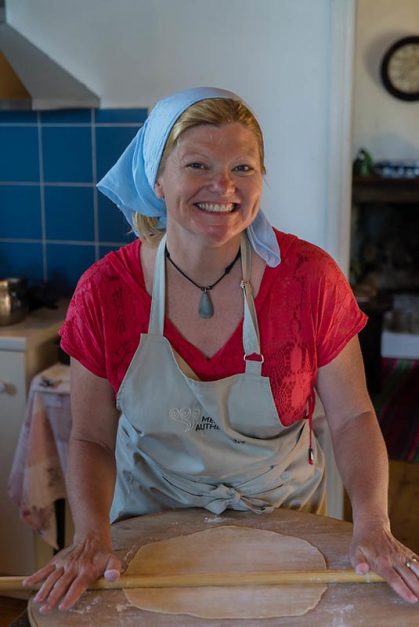
You’ve guessed it. Eating out is expensive, too.
Dinner at a restaurant costs at least 20 – 30 CHF. You might get away with 15 – 20 CHF if you catch a bargain.
Cooking your own food is way more affordable. Depending on how much of a gourmet your are, you can get by with 60 – 80 CHF a week for groceries.
Possibly even cheaper if you cut some edges. But I’d budget at least 50 CHF.
Supermarkets like Migros, Coop, Denner, Aldi and Lidl are your best friends here.
With Aldi and Lidl being the cheapest. Read more 15 Swiss Foods to try in Switzerland or at Home
8. Buy old bread
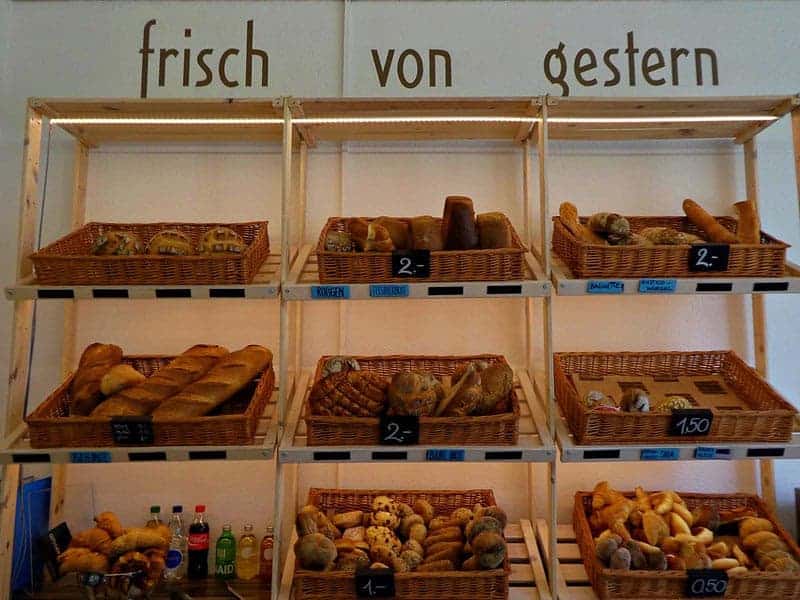
This one‘s way better than it sounds. I promise.
A new concept called Ässbar has taken root in Switzerland.
In order to fight food waste, these guys collect whatever bakeries couldn’t sell during the day and offer it for half the price the next day.
As a result, you can get pastries, bread rolls, sandwiches and sausage rolls at a massive discount.
You can find Ässbar stores in St. Gallen, Winterthur, Zurich, Bern, Fribourg and Basel.
And since their concept is so popular, they’re looking to expand to other cities as we speak.
- Find out how you can stretch your travel cash by downloading her free guide, 10 ways to save money on food in Switzerland .
9. Go crazy over free snacks
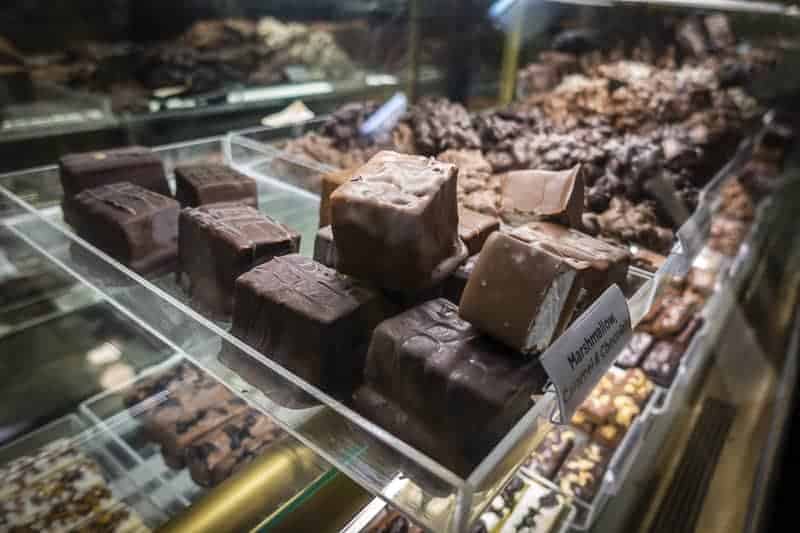
Everything free is worth its weight in gold.
And farmer’s markets are an excellent place to grab free samples every now and then.
While you probably won’t get a whole meal out of this, tasting free crackers, olives, bread, the occasional piece of cheese or cookie is the perfect way to get over those mid-morning or afternoon cravings.
Chocolate factories also hand out samples but since they make you pay entrance, I don’t like to count those.
However, the Kambly biscuit factory in Trubschachen lets you dig in until you explode. At no extra cost.
Trust me, you won’t make it through their whole selection in one go. Even if you arrive on an empty stomach.
Challenge accepted?
See some of the best Switzerland Photos on Instagram .
10. Stick with free activities
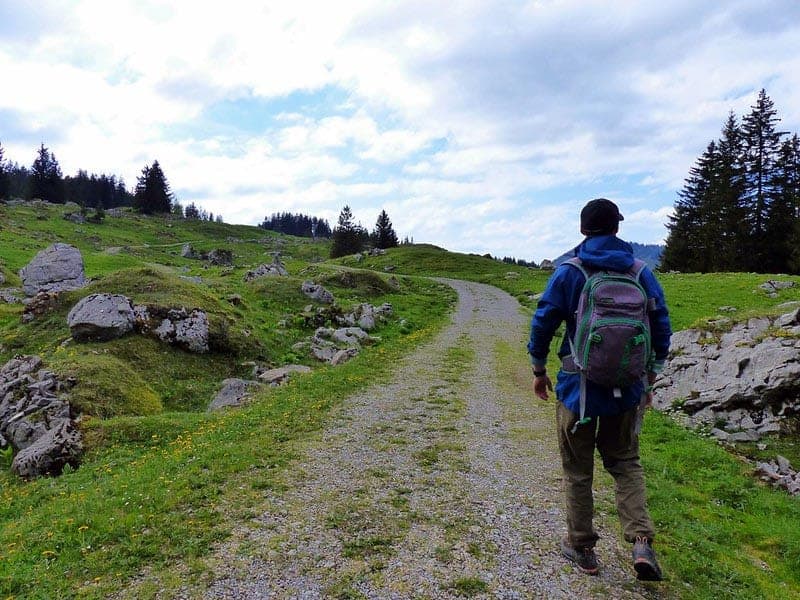
Nothing in life is free. Or is it?
You’d be surprised. If you pay attention and know where to look, you can find plenty of free things to do. Check out The 12 Best Hikes in Switzerland
Free Things to do in Switzerland
- Join a free walking tour in different cities across the country.
- Spend some quality time with the bears in Bern – figuratively speaking.
- Visit a free wildlife park in Zurich, Aarau, Winterthur, St. Gallen, Interlaken and many other places.
- Check out old towns, churches, and free museums.
- Visit the Appenzeller cheese factory in Stein and stuff your face with free samples.
- Join a tour of the Bundeshaus (House of Parliament) in Bern.
- Take a stroll through botanical gardens and parks.
- Head out to Schaffhausen and visit the Rhine Falls, Europe’s largest waterfalls.
- Take a refreshing dip in a lake.
- Hike until your feet fall off. After all, that’s what Switzerland is famous for.
Budget Switzerland Travel – The only thing left
Now that you know how you can stretch your money while you’re in Switzerland, let’s see how that know-it-all at the back of your head is doing.
Is it still leading you on to rob a bank, sleep in a cardboard box or live off instant noodles? Or has it finally decided to shut up?
If it’s still being reluctant, don’t be too upset with it. After all, nothing you do will ever turn your trip to Switzerland into a low-cost holiday.
But with these 10 tips, hitting the Alps without blowing your retirement savings has just become a whole lot more realistic.
The only thing left for you to do is this. Go to your drawer, dig out your bucket list and scribble those eleven letters at the very top of it.
You know you want to.
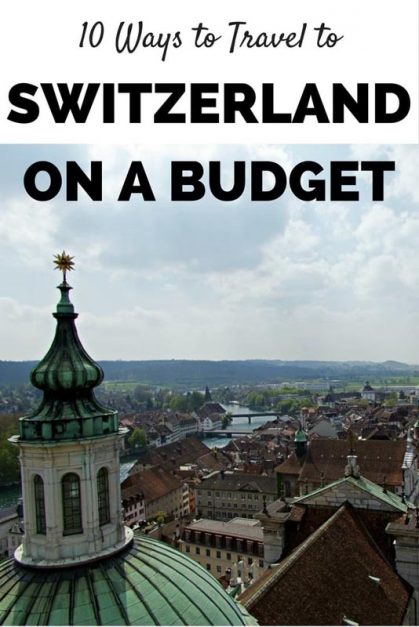
- The Ultimate One-Week Switzerland Itinerary
- The Ultimate Switzerland Road Trip Itinerary
- Our best Switzerland Pictures
- Things to do in Grindelwald, Switzerland – Complete 4 Day Itinerary
- The Perfect 3 Days in Zurich, Switzerland
- 24 Fantastic Things to do in Basel, Switzerland
Check out these money saving tips
- How to Save Money for Travel
- How to Travel on a Budget – Our Top Cheap Travel Tips
- Our Best Travel Tips – From 20 Years of Traveling the World
- How to Travel Around the World – The Ultimate Travel Resource
Travel Planning Resources
Looking to book your next trip? Why not use these resources that are tried and tested by yours truly.
Flights: Start planning your trip by finding the best flight deals on Skyscanner
Book your Hotel: Find the best prices on hotels with these two providers. If you are located in Europe use Booking.com and if you are anywhere else use TripAdvisor
Find Apartment Rentals: You will find the cheapest prices on apartment rentals with VRBO .
Travel Insurance: Don't leave home without it. Here is what we recommend:
- Allianz - Occasional Travelers.
- Medjet - Global air medical transport and travel security.
Need more help planning your trip? Make sure to check out our Resources Page where we highlight all the great companies that we trust when we are traveling.
You May Also Like
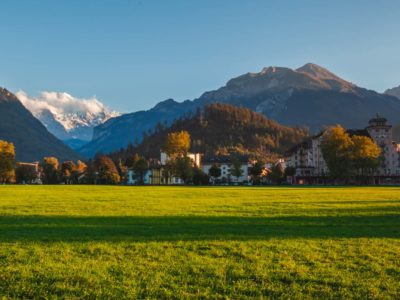
28 Best Things to Do in Interlaken in 2024
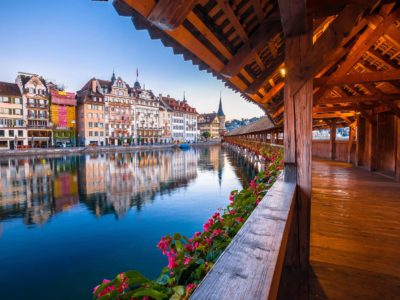
18 Best Things To Do In Lucerne In 2024
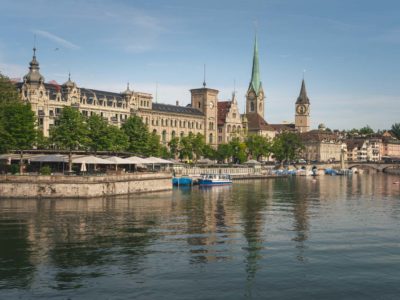
Where to Stay in Zurich: Ultimate Guide for First time Visitors
About Seraina Zellweger
Seraina Zellweger is a devoted budget traveller who’s been around the world and back. As a native Swiss, she’s made it her mission to give fellow backpackers tips on how to visit Switzerland on a shoestring.In her latest project, she's created a series of guides with itineraries for Switzerland , ranging from 2 to 14* days. For more information, Follow Seraina at LostInSwitzerland / Facebook / Twitter
Join thousands of others who get our monthly updates!
Leave a comment cancel reply.
Save my name, email, and website in this browser for the next time I comment.
41 thoughts on “10 Simple Ways to Travel Switzerland on a Budget”
My wife and myself is trying to visit swzertland in the month of July 23 please give some details
Thank you for this article! It eased a lot of my concerns for my upcoming trip to Switzerland. I am wondering about the public transportation… Will the free transportation take us from Geneva to Zurich? Or is it just free public transportation within the city you are staying in? Thank you again for all of the tips. My husband and I are feeling more confident in making this Switzerland trip an affordable and enjoyable experience!
Great tips on traveling to Switzerland on a budget. It is unbelievable how expensive everything is there, especially when traveling as a family. I will refer back to your post again before our next trip to this amazing country!
Zurich is one of the most beautiful capitals in Europe.Thanks for sharing this amazing info
Amazing read. I’ve traveled around Switzerland on a tight budget just for a week. It was the first time I’ve used Couchsurfing and it was an amazing time! My host was a very friendly Swiss guy who was extremely interested in learning about my culture and traveling experiences. Also, as you’ve mentioned, using free public transport saves a lot as well as biking around the cities.
i was planning for a family trip there, and luckily found this amazing informational guide… thanks a lot as this guide will help me for my family travel trip… briefly explained travel guide…!!
I’ve been traveling almost all cheaper countries… scheduling how to set on foot on the rather expensive countries like- Switzerland, Norway, Sweden, Iceland etc.!
Switzerland is really awesome place for roam. You share the information is really awesome. Very helpful information on this blog. I am glad to find it. Thanks!
If you could travel through only one European country, which might you choose? Italy? France? Germany? How about a taste of three in one? That can only mean Switzerland! You’ll find Switzerland a chocolate box bursting with unexpected flavours. 🙂
This post made us laugh, sleeping above cows sounds like an adventure for sure! You are right on point with avoiding Switzerland due to the high cost, but maybe now we will finally add it to our bucket list. We accept the challenge of eating all the free snacks we can get while there!
I am excited that you are accepting the challenge to travel there on a budget. Let us know how it goes !
It is very very Attractive Post. Some great travel tips for travel in Switzerland green And clean city.
Budget is the main concern not for all but for many of us. Cooking own food is the best idea to save money and also to maintain health.You have shared very useful budget friendly ideas here. I really like it.
Great post I’ve always been intimidated to visit Switzerland, but I was little worried about the cost of accomodation. I’m very curious about Agrotourismus, I’ve never heard of it and will definitely check it out. I love to hike so i’m covered for activities. Cheers! Millie
Awesome post Seraina. My first visit on your post but not last, will follow your next post! You obviously spent considerable effort and time to carefully document this post for our benefit. I was in Switzerland last year and spent average budget (My thinking before reading this post). But after reading your post I can say, “Yes” I could save 50% of my budget amount.
I absolutely loved Switzerland. The FRESH AIR is incomparable. And yes to Tip#1!! Our hotel was nice enough to inform us of this before we spent any money on public transport in Montreux. Oh and I remember getting a free ticket to the city from the airport in Geneva too. What I would give to live there. Great post, Seriana!
Izy thank you for commenting because transportation is my biggest concern for my trip to Switzerland in September. I am wondering if the free transportation will take us from Geneva to Zurich? Or is it just free public transportation within the city you are staying in?
These are just stunning! Switzerland is one of my favorite places to travel. Wondering when I get a chance to visit..
I love this! Switzerland has been on mine and my husband’s travel wishlist for a while! It’s great to know about that free public transportation and the free bikes! It sounds like it would be best to spend more time in cities that offer these perks!
I love the fact you like my country.You are from which country?
I’m planning a trip to Switzerland and your post is so handy and packed with good tips! Will definitely put some into good use.
That’s a very good idea Cam. I’m sure you wouldn’t regret it 🙂 Enjoy your travels in Europe.
Very greats article . Thank for sharing . I loved it
I might just include Switzerland in my tour of Europe after all. Thanks for all these amazing tips!
very beautiful places to visit. we haven’t finished exploring the world
Thank you so much Donna. I hope one day I get to return the couchsurfing favour by hosting you and Ted in Switzerland. There are so many things I’d love to show you.
So good to hear from you Laio. And yes, it’s been ages since Bolivia. Such good times out in the Salar de Uyuni. I really hope to see you in Switzerland one day. And you’re definitely welcome to stay with me whenever you’re here. The couch is waiting for you 🙂 Take care
Excellent blog. Great tips and information. We may have to try this trip after all. Well done.
We love your blog. Lots of great tips and information. I think that Ted and I may have to try this sometime. Well done.
Hey Seraina my Dear Friend! So many days since Bolivia’s Travel… times fly! Switzerland seems to be an amazing place… I probably will visit some day! I´ve no doubt that I will “put my connections to use” and I hope you enjoy to give a shelter for me there! This blog is awesome and very helpful! Thanks for it! Kisses
Hey Rosemary thanks for your comment. I’m glad you like Switzerland and think it’s worth a visit. I totally agree with you that coffee and cake are expensive. It’s a shame. Hopefully this won’t keep you from coming back one day 🙂
Switzerland is a really great place – all the trains run on time and are easy to work out. They are clean and comfortable. We agree that you can use public transport to travel around – it’s really good and convenient.
There are lots of things which are good value in Switzerland but we find quick meals like coffee and a cake or something expensive.
It’s worth going to Switzerland though as you’ll have a lot of fun.
Such a wonderful post by Seraina! Switzerland is a dream for me and this one just takes me so many steps closer. I especially agree with point 4 and 10 – nothing like exploring a new place on our own, there’s so much joy and it’s so cost effective too!
Thank you for your comment Arti. I’m glad my post got you a little closer to reaching your dream. Hopefully you’ll make it to Switzerland soon.
Some great travel tips in this post to stretch your time in Switzerland. I love Switzerland, it’s so green, it’s so clean and it’s so stunning. My husband and I decided to camp in Switzerland, which meant we could save a lot on accommodation and we could cook our own meals. We just loved it (it was just a bit cold to sleep in a tent) 🙂
Hi Sabine, thanks for your comment. Yes, Switzerland is pretty green and clean, isn’t it. Camping is definitely a great way to save some money on accommodation. Although you’re right about the chilly nights. I hope you had a good sleeping bag and didn’t catch a cold 🙂
Grabbing a bike and exploring is my kind of thing. And I loved the concept called Ässbar. I hope they’ll spread all over the world….
Hi Seraina,
LOL on old bread. That is all I buy 😉 I’d be saving Swiss scratch right off the bat. Ditto on the free biking. I recall years ago biking all over Hoi An in Vietnam for 2 months. I got in tip top shape and saved a small fortune in taxi fare. Thanks for sharing 🙂
Haha there’s nothing like old bread Ryan is there. I think you’d be saving heaps in Switzerland ? I love going to that place. Wow biking in Vietnam sounds exciting. And it’s definitely a great way to get in shape for free too, isn’t it.
Very Superb Article. Thanks a lot for sharing this information
Thanks for your comment Jay. And you’re welcome. Glad you liked the article.

Top 10 Things to do in Zermatt, Switzerland
I f you found our blog about the best things to do in Zermatt, Switzerland, then you’re probably planning a bucket list trip to Switzerland! Zermatt is definitely somewhere you need to visit in Switzerland, no matter what time of year you visit!
Zermatt is a mountain village in the canton of Valais in southern Switzerland. It’s only about 6.5 miles (10 km) from the Italian border! Zermatt is most known for its iconic mountain, the Matterhorn. After the Matterhorn was first summited in July 1865 by Edward Whymper, it became a world-famous destination. There’s even a candy with the Matterhorn on it, the Toblerone chocolate!
The scenic town of Zermatt offers year-round outdoor activities! During the summer, there are endless hiking trails, bike routes, and places to explore. In the winter, it’s a popular ski and snowboarding destination. In this blog, we cover the top 10 things to do in Zermatt, Switzerland, in the summer!
If you’re planning a trip to Switzerland, then you should also check out our blog about the Must-See Villages in Switzerland . It’s filled with other picturesque Swiss villages you need to add to your Switzerland bucket list!
How to get to Zermatt
Zermatt is a car-free village, so the best way to get to there is by train.
There are two main train routes to get to Zermatt. One way is through Visp, then take the Matterhorn Gotthard Bahn to Zermatt. Most major cities in Switzerland, like Interlaken, Zürich, and Lucerne, will take you this route. The other route is the Glacier Express. It’s a scenic train ride from St. Mortiz. Since we were coming from Interlaken, we took the first route.
If you have a car, you can park at a garage in Täsch and then take a taxi or train to get into Zermatt. Täsch is the closest town to Zermatt. The road from Täsch to Zermatt is closed to the public; you cannot drive or park inside Zermatt.
Swiss Travel Pass
We HIGHLY recommend purchasing the Swiss Travel Pass if you plan to travel anywhere else in Switzerland. For a set rate for a set number of days, you get unlimited public transportation. Not only is it a great deal for transportation, but you also get free or discounted entry into over 500 museums and other sites throughout Switzerland.
During our 9-day trip across Switzerland, we purchased the Swiss Travel Pass, which was the best decision. It made traveling between cities and even within the cities so easy since we didn’t constantly have to buy separate tickets. From trains and buses to gondolas and funiculars, it made getting to all the different Swiss villages simple. But just be aware that some of the popular sites, like Jungfraujoch – Top of Europe , require an additional fee (the Swiss Travel Pass gives you a discount on the ticket to get there).
Best time of year to visit Zermatt
If you want to enjoy all the outdoor activities Zermatt has to offer without snow, then we recommend visiting in the summer months, June to September.
We visited at the end of September, and the weather was perfect! It was chilly in the mornings and evenings but warm during the day. We were told within two weeks of our visit, all the leaves would change to beautiful fall colors. But be aware that they can get snow starting in October!
Things to do in Zermatt, Switzerland
#1. hike to riffelsee lake.
Riffelsee Lake is a small lake that has one of the best views of the Matterhorn. On a clear day, it has an incredible mirror reflection of the Matterhorn. The hike to Riffelsee Lake is a great hike for people of almost all skill levels and ages!
To get to the start of the trailhead, you need to take the Gornegat Railway to the second-highest station, “Rotenboden.“ From there, you follow the signs to “Riffelseeweg.” It’s about a 10-minute walk from the station.
We took a slightly longer route to get to Riffelsee Lake (more details on that next). That’s what all these photos below are from!
If you’d rather have a little longer hike to enjoy other mountain views along the way, you can take the Gornegat Railway to the highest and last stop, “Gornegat.” There’s a trail that also leads to Riffelsee Lake, and it is mostly downhill. So, after exploring Gornegat, you can hike the trail down to Riffelsee Lake. It’s about 1.2 miles and took us around 35 minutes. But trust us, you’ll want to stop many times to take photos!
Once you finish the hike, you don’t have to hike back up to Gornegat. Just take the Gornegat Railway back down to Zermatt!
Just be aware that this area can get VERY busy! We recommend going early in the morning to avoid the crowds and enjoy the lake in a more peaceful setting.
#2. Take the scenic Gornergrat Railway to Gornergrat Station
The Gornergrat Railway is Europe’s highest open-air cog railway. It’s an incredibly scenic train ride with views of the Matterhorn and surrounding mountains. Not only is the journey itself beautiful, but once you arrive at Gornergrat it offers stunning 360 views.
The ride up to Gornergrat Station takes around 33 minutes, with trains running every 35 minutes. You can learn more about the train schedule and tickets here .
Gornergrat is a mountain ridge with iconic views of the Matterhorn. Once on top, there is a lot to do and many different scenic viewpoints to enjoy, including one of Gorner Glacier. There’s even a chapel and hotel (3100 Klumhotel Gornegot) on top! Not only are there a few touristy activities, but it’s the start of many different hiking and biking trails. Including, Rifflessee Lake, which we mentioned above!
Riding the Gornergrat Railway is definitely a MUST-DO when visiting Zermatt! It’s open and operating 365 days per year so no matter when you visit you can experience this iconic railway.
This train can get very crowded during popular summer months, so we’d recommend going early in the day. We got on the first train of the day and had no issues getting a spot by the window with views of the Matterhorn!
Pro Tip: Sit on the right side of the train when going up (the right side facing the direction the train will be going) to get the best views of the Matterhorn!
#3. Walk around Zermatt
If you’re visiting Zermatt, of course, you need to walk around the village! Bahnhofstrasse is the main road in town and is very picturesque. There are lots of delicious restaurants and luxury shops to wander around looking at. We loved seeing all the window boxes with fresh flowers all over every building!
Keep reading to learn more specific things you should do in the village of Zermatt!
#4. Visit the Matterhorn Museum – Zermatlantis
The Matterhorn Museum is a museum that shares the history of climbing the Matterhorn and the village of Zermatt. It’s super interesting to learn more about during your visit. Over the last 100 years, tourism to visit the Matterhorn has completely transformed what was once the rural agricultural village of Zermatt!
It looks tiny from ground level, but it’s actually a multi-level underground museum. While it’s open every day, it’s not open for very long so be sure to plan accordingly.
Opening Hours: Daily from 3:00 pm – 5:00 pm, view seasonal hours here
Entry Fee: Free if you have the Swiss Travel Pass otherwise it’s CHF 12.00 for adults and CHF 7.00 for children 10 – 16 years old
The Matterhorn Museum – Zermatlantis shares lots of insight into the climbers over the years and the first-ever climb of the Matterhorn, including the rope that tragically broke on the tragic first ascent (see photos above).
#5. Grab a delicious pastry at Fuchs Bakery
Fuchs Baker y is a locally owned, family-run bakery that has been in business since 1965 and is located in the heart of Zermatt. It’s so popular that there are actually multiple locations in town! The bakery’s stores are filled with freshly baked pastries, breads, chocolates, coffee, and desserts.
Everything looked absolutely delicious, so it was hard to choose what to get! You could easily stop by this place every day of your trip.
Opening Hours: daily from 7:00 am to 7:00 pm
#6. Wander through Hinterdorf (old village of Zermatt)
Hinterdorf is Zermatt’s old village, built between the 16th and 18th centuries. As you wander through these old houses, barns, and stores, you’ll feel like you’re stepping back in time.
It’s a small area that’s left standing, so it won’t take you long to pass through this historic area of Zermatt.
#7. Eat fondue at Restaurant Schäferstube
Restaurant Schäferstube is a traditional Swiss restaurant known for its cheese fondue and lamb. It’s owned and operated by a local family, The Julen’s , who owns a few other restaurants in town. They are also black nose sheep breeders, so you’ll notice lots of sheep fur throughout the restaurant details.
Located in the heart of Zermatt, this cozy wood-covered restaurant is a lovely place to enjoy a Swiss meal. This restaurant can book up quickly, so be sure to book a table in advance!
Opening Hours: daily from 6:00 pm to 10:00 pm
#8. Hike to Lake Stellisee at sunrise
Lake Stellisee is another one of Zermatt’s famous alpine lakes! Similar to Lake Riffelsee, it’s a mirror lake that has a beautiful view and reflection of the Matterhorn. Sunrise and sunset are the best time of day to visit this stunning lake!
To get to Lake Stellisee from Zermatt, you will take the funicular from Zermatt to Sunnegga and then the cable car to Blauherd. Once you get off the cable car, it’s about a 20-minute walk to the lake. It’s pretty easy for people of all physical skill levels and ages!
While we fully planned on doing this “hike,” it wasn’t until we got to Zermatt that we learned the cable cars weren’t operating early enough to get us there for sunrise (we just missed the end of the summer season schedule). Sadly, we didn’t have time to do it later in the day before leaving.
Also, Lake Stellisee is the first lake on the famous Five Lakes Trail (5-Seenweg). It’s another great hike to do near Zermatt if you have time. But maybe do your own research because we have mixed reviews about whether or not doing the full Five Lakes Trail is worth it.
If you enjoy hiking to alpine lakes, then check out this list with many other beautiful lakes to explore near Zermatt!
#9. Take photos of the Matterhorn
The Matterhorn is one of the most famous mountains in the world. Whether you are an avid climber or not, it’s an incredible mountain to soak in the views and take photos of! Every time we saw the Matterhorn during our visit, we would just stare in awe.
Here are some of our favorite viewpoints of the Matterhorn:
- Kirchbrücke (bridge in Zermatt)
- Riffelsee Lake
- Hiking trail from Gornergrat to Riffelsee Lake
- Riding the Gornergrat railway
- Adler Hitta in Findeln (or any of the other resturants)
- Lake Stellisee
That being said, some of the best views are the ones you stumble upon! You can see the Matterhorn from so many different places in and around Zermatt.
#10. Visit the Matterhorn Glacier Paradise
Matterhorn Glacier Paradise , also known as Klein Matterhorn, is the highest cable car station in Europe. When standing on Klein Matterhorn, you are surrounded by 38 four-thousanders (a mountain 4000 meters above sea level), 14 glaciers, and mountain views of three countries – Italy, France, and Switzerland.
The Matterhorn Glacier Paradise experience is open 365 days a year and always has lots of snow! During your visit, there are plenty of unique activities to choose from. Below are some of the best things to do on Klein Matterhorn:
- Soak up the views from one of many viewing platforms
- Visit the Glacier Palace
- Dine at the Restaurant Matterhorn Glacier Paradise
- Take a ride on the Crystal Ride (a decorated gondola with a glass floor)
- Go skiing at Zermatt Snow Park (yes, even in the summer!)
- Watch a film at the Cinema House
- Submit the Breithorn Peak (only if you’re a skilled climber/mountaineer)
In all honesty, we decided not to visit Matterhorn Glacier Paradise because we felt it was similar to Jungfraujoch – Top of Europe (which we had just visited). But if you don’t have time to visit Top of Europe, we think this would be an incredibly unique activity!
If you found this blog helpful, pin this blog for later planning!
The post Top 10 Things to do in Zermatt, Switzerland appeared first on thewildlylife.com .
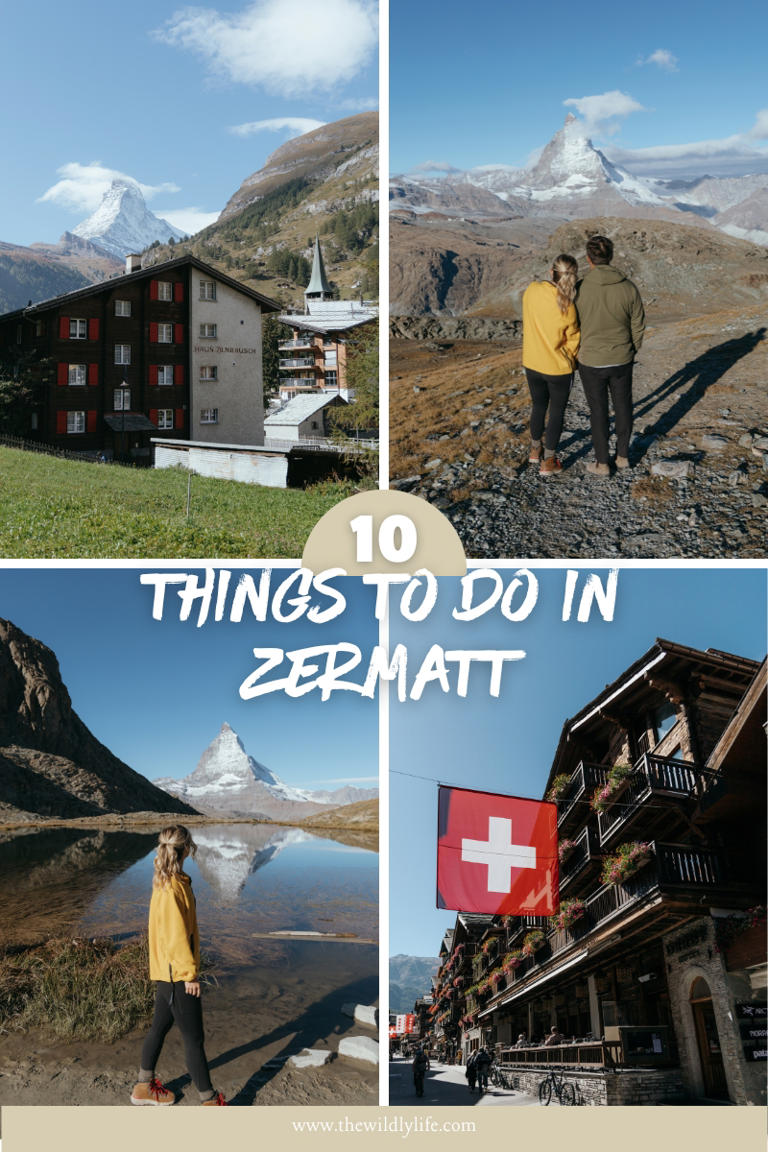

IMAGES
VIDEO
COMMENTS
Traveling by boat is a slow and delightfully scenic way to get around. Consider investing in a Swiss Travel Pass. Though travel in Switzerland is efficient and convenient, it can also be expensive, and visitors planning to use intercity routes should consider investing in a Swiss Travel Pass. With this transport pass, you're allowed unlimited ...
Train - Train is the best way to travel in Switzerland and is the most preferred method for locals. It's economical and efficient. Bern to Geneva (a two-hour ride) costs 50-95 CHF. The two-hour trip from Zurich to Interlaken is 54-96 CHF, while a one-hour trip from Zurich to Bern is 40-75 CHF. ... Hitchhiking - Hitchhiking in Switzerland ...
Getting Around Switzerland by Train. Train travel is by far the best way to travel in Switzerland; it's economical and popular with both locals and tourists. The stations are clean and equipped ...
Lugano, in the Italian-speaking part of Switzerland. 6. Consider flying into one airport and out another. The major international airports in Switzerland can be found in Zurich, Geneva and Basel (which, fun fact - is one of the few airports jointly operated by two countries, France and Switzerland).
7 Day Switzerland itinerary starting from Geneva includes where to stay, things to do, where to eat, getting around and costs broken down into a day-by-day guide for: DAY 1: Geneva. DAY 2: Bern. DAY 3: Zermatt. DAY 4: Jungfraujoch & Interlaken.
That said, your euros will probably be accepted at most places, though they'll give you change in francs. Getting Around: The clean, convenient, and comprehensive Swiss Travel System is the pride of Switzerland, and rightly so. The system includes trains, buses, lake and river ferries, funiculars, cogwheel trains, ski lifts, and gondolas that ...
Switzerland isn't that big, so the best way to travel to different cities within the country is by train or bus. For example, a train from Geneva in the west of the country to Zurich in the north is only about 3 hours. Trains are the fastest and most efficient way to travel between cities. Buses are a bit slower and cheaper.
You can purchase your Swiss Travel Pass here. Just select the correct number of days for your Switzerland itinerary and check out. The pass begins on your selected date and runs continuously. The Swiss Travel Pass comes in. 3, 4, 6, 8, and 15 day increments. Check Prices on Swiss Travel Pass.
The Best Switzerland Itinerary for 7-10 Days. Day 1 - Arrive in Zurich & Explore. Some things to do in Zurich. Day 2 - Lucerne. Some Things to do in Lucerne. Day 3 - Interlaken and Lake Brienz. Some Things to do in Interlaken. Day 4 - Lake Thun. Some Things to do in Lake Thun.
SWISS TRAVEL PASS or HALF-FARE CARD. OPTION 1: Buy the Swiss Half Fare Card: Switzerland trains, buses, and cable cars are EXPENSIVE! I found the best way to get around cheaply was to buy the Swiss Half-Fare Card before I arrived. It gives you 50% off every regular train, bus, and even many cable cars.
Getting around: The best way to travel around Switzerland is by train. With 10 days in the country, consider getting a Swiss Travel Pass that includes all public transport (and more). Switzerland is also a nice country to explore by car. However, traveling by car is only convenient if you are planning on visiting many smaller places in the ...
In this Switzerland road trip planner, we share travel tips, the best route between towns and cities, things to do and see along the way, and hotel recommendations to help you plan your perfect Swiss itinerary. ... We recommend completing a circular route during your road trip around Switzerland, starting and ending in Zurich. Zurich, the ...
The best way to travel Switzerland is by train. Getting around Switzerland by train is quick and sometimes less expensive than renting a car. The Swiss cities are walkable and have good public transportation, so you don't always need to rent a car, especially if your itinerary is mostly based around visiting cities. Get your Swiss Rail Pass ...
Among Switzerland's thousands of lakes, Geneva, Lucerne, Zurich, Lugano, and Constance (Bodensee) are among the largest. These lakes and others are served by seasonal and year-round ferries and tour boats. Some boats, like select routes in Zurich, are part of the public transportation system and are included in local travel passes.
Don't Take Taxis. Swiss public transportation is easy to navigate, with well-marked signage for routes and countdown clocks that let you know when your bus will arrive. Most cities and towns in ...
Bus stations are nearly always located beside train stations, and all Swiss travel passes are valid for travel on buses as well as trains. Buses are also the most common form of transport within cities. Many cities also have trams, and a few have funiculars. Getting around Switzerland by car. Driving gives you extra freedom to explore, and ...
For me, this is the best Switzerland itinerary when you have around a week-and-a-half at your disposal. Follow this and you'll spend time in historic Lucerne, active Interlaken, musical Montreux, and Zermatt, home of the famous Matterhorn. And there are lots of glittering lakes, alpine meadows, and mountain peaks sandwiched in-between!
The best way to travel to Switzerland from the United States is to fly into one of the major cities such as Geneva or Zurich. From there, you can take connecting flights to Bern, Davos, Zermatt, and Basel. Zurich is the largest city and you'll likely find the most flight options into Zurich airport.
Ultimate Guide to Train Travel in Switzerland (2024 Update) In Switzerland, train travel is more than a simple mode of transportation. Granted, thanks to the world's most dense public transportation network, the Swiss travel more kilometers by train than any other country. The Swiss trains, trams, buses, and boats are meticulously scheduled ...
Swiss Travel Pass. If you want to travel to Switzerland for a longer time (at least 5 days) and see different places (at least 5), the best way to save up is to purchase a Swiss Travel Pass.. This Pass is available for 3, 4, 8, or 15 days.All trains, buses, boats, and public transportation in cities are included in the Pass.. You can choose between 1st and 2nd class.
And here are 10 ways to make your money last longer in Switzerland. 1. Use free public transport. Take advantage of free public transport in certain cities to make your money last longer in Switzerland. If you're staying in Bern, Lucerne, Basel, Geneva or Lausanne, you get to use local public transport for free.
During our 9-day trip across Switzerland, we purchased the Swiss Travel Pass, which was the best decision. It made traveling between cities and even within the cities so easy since we didn't ...